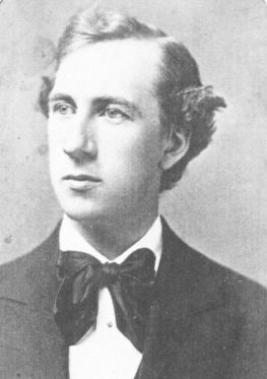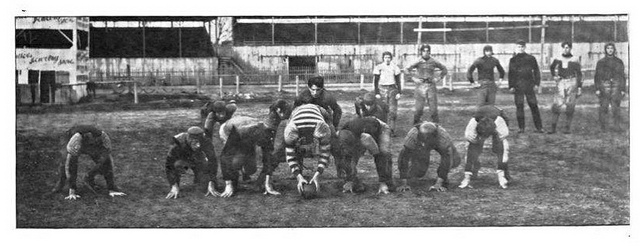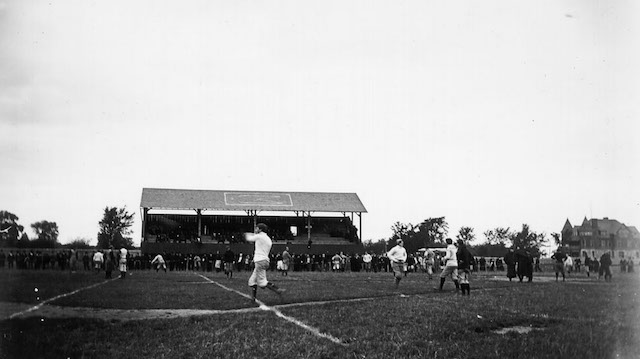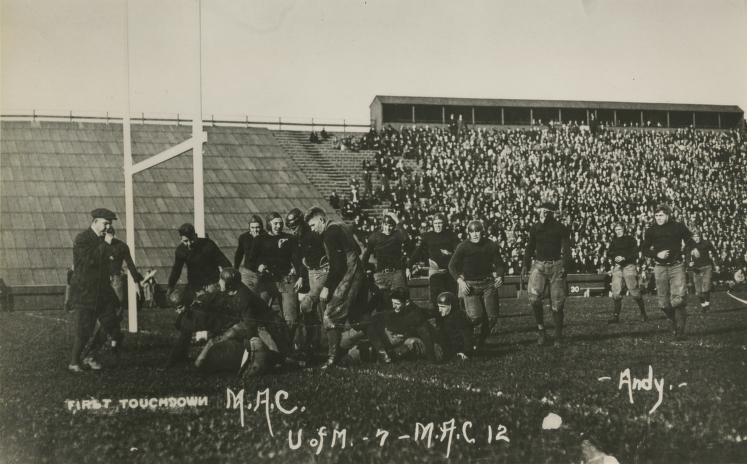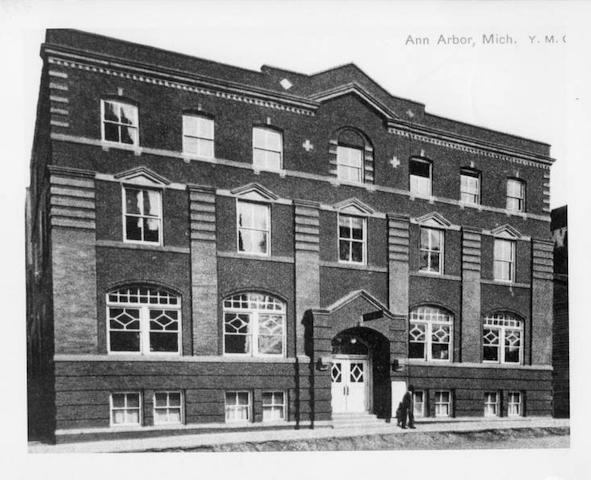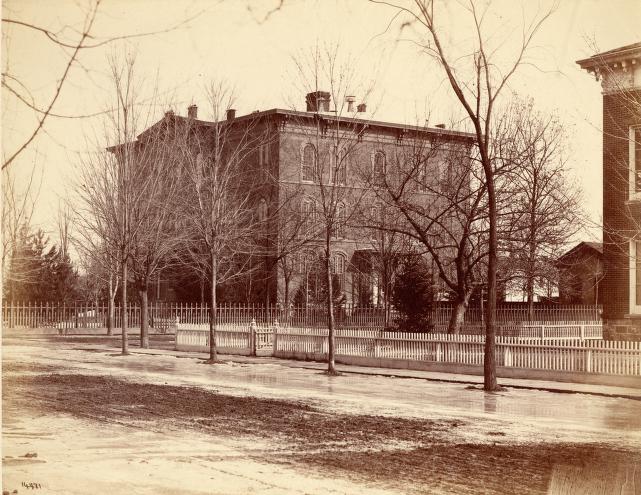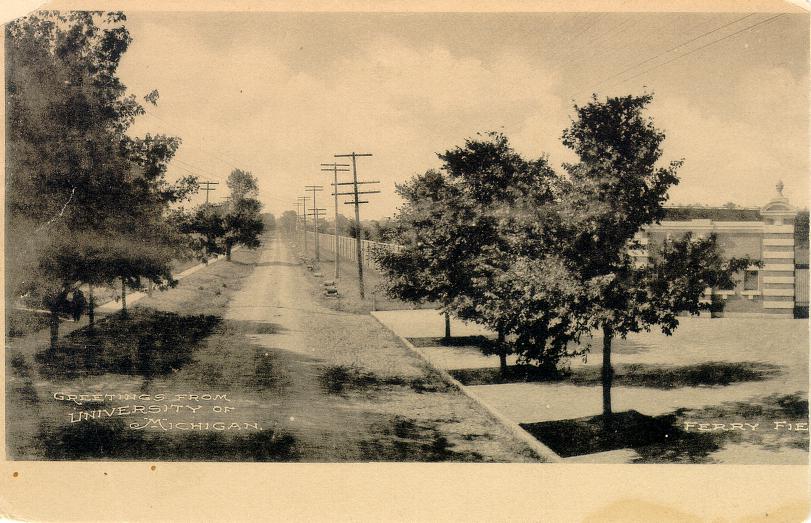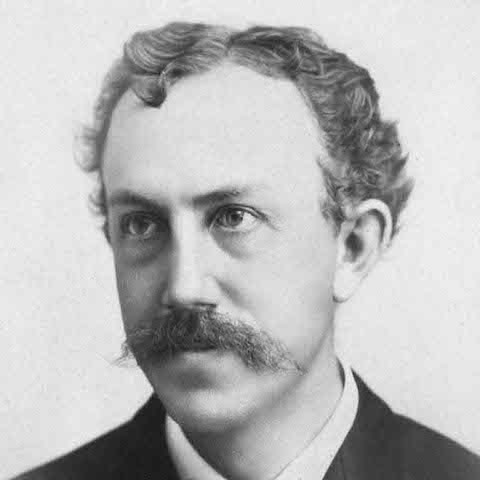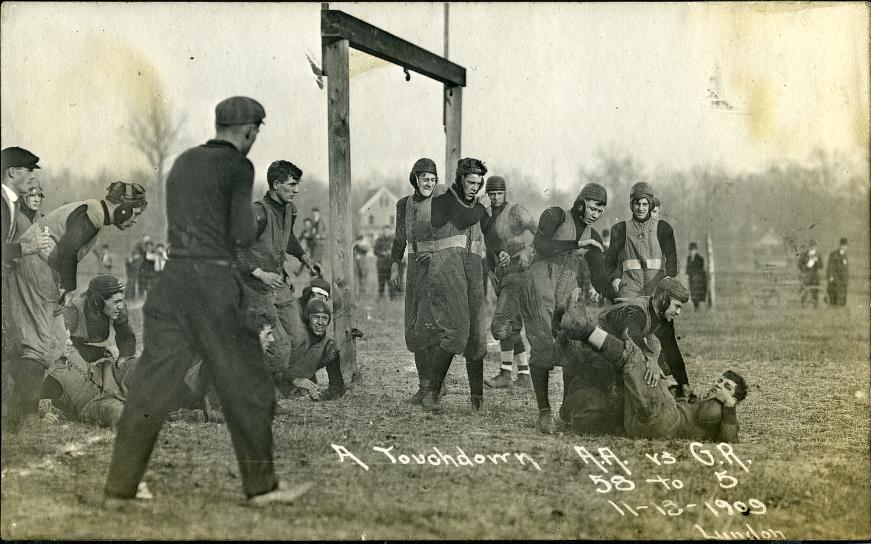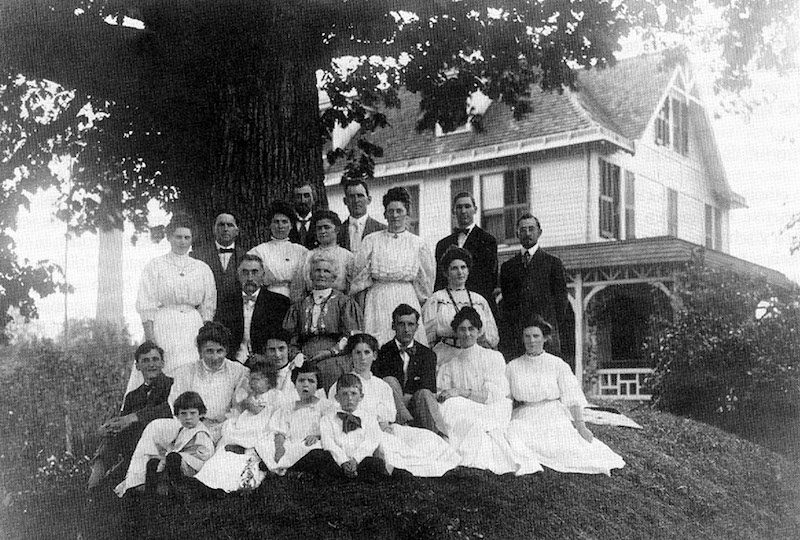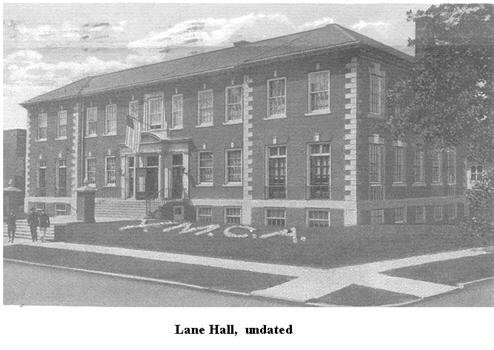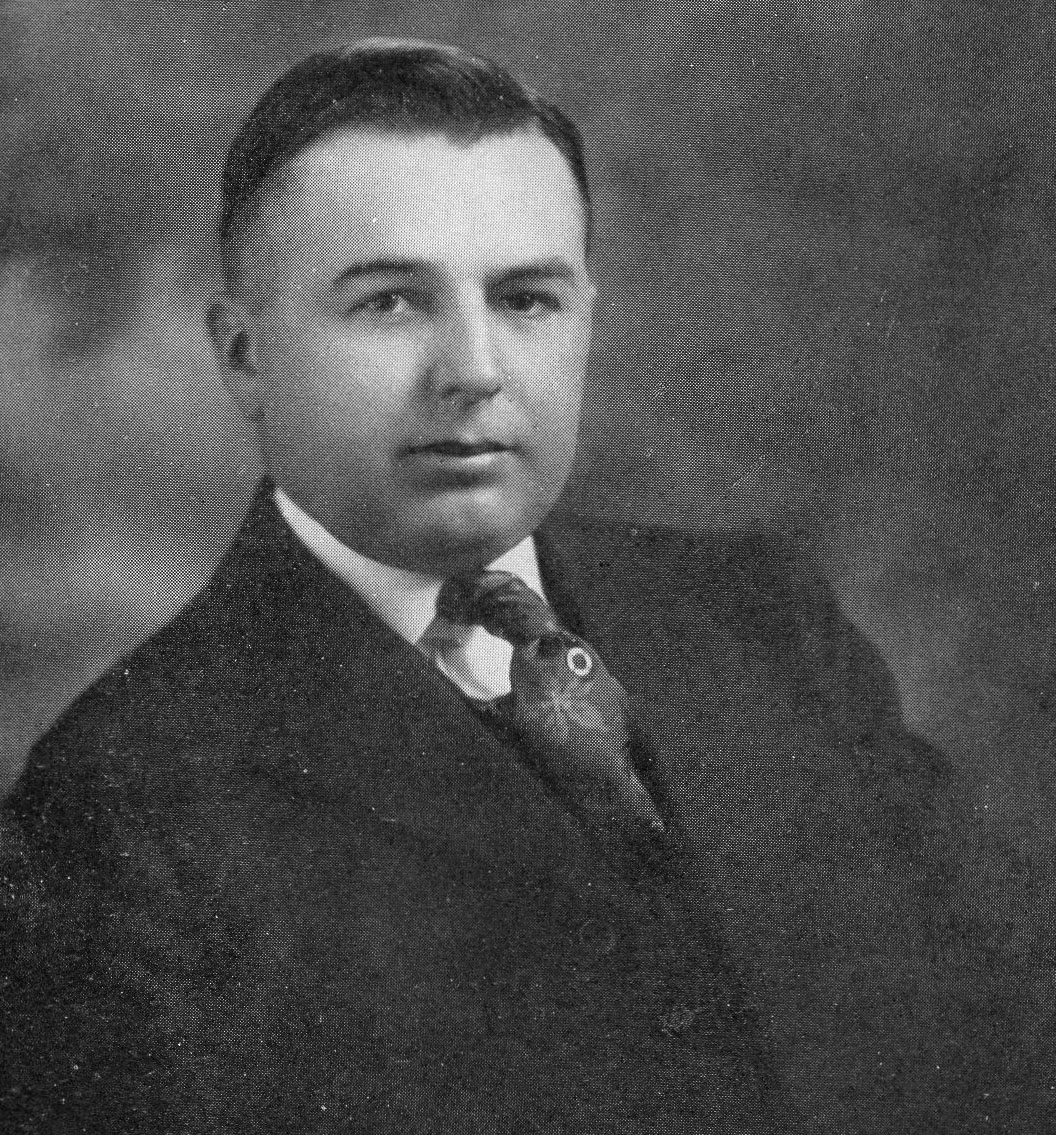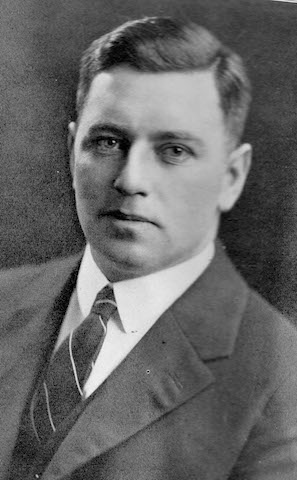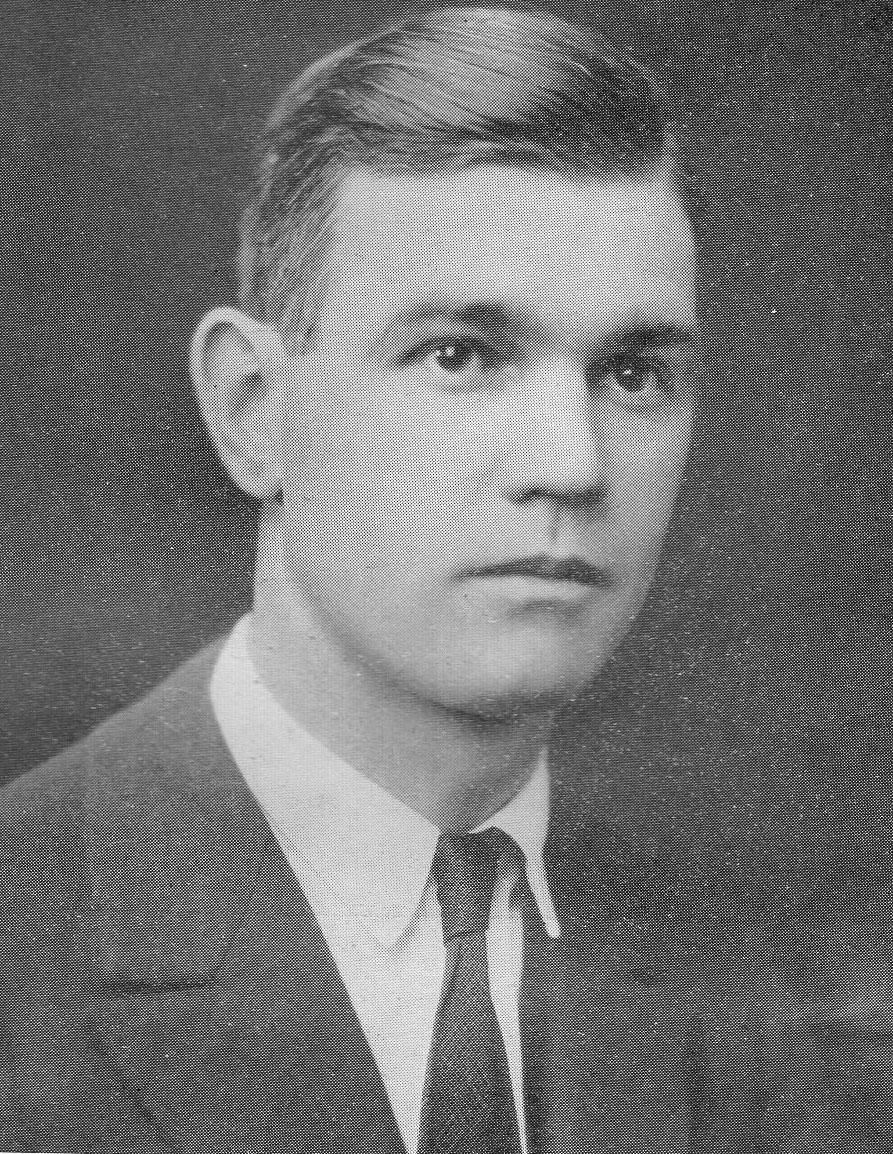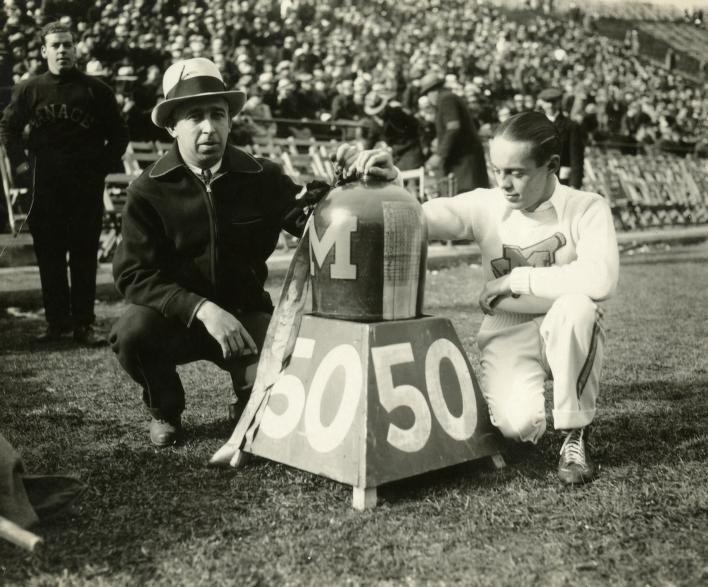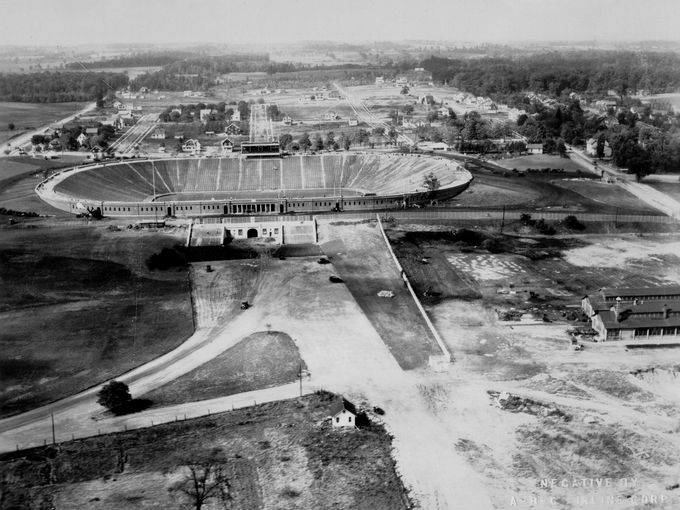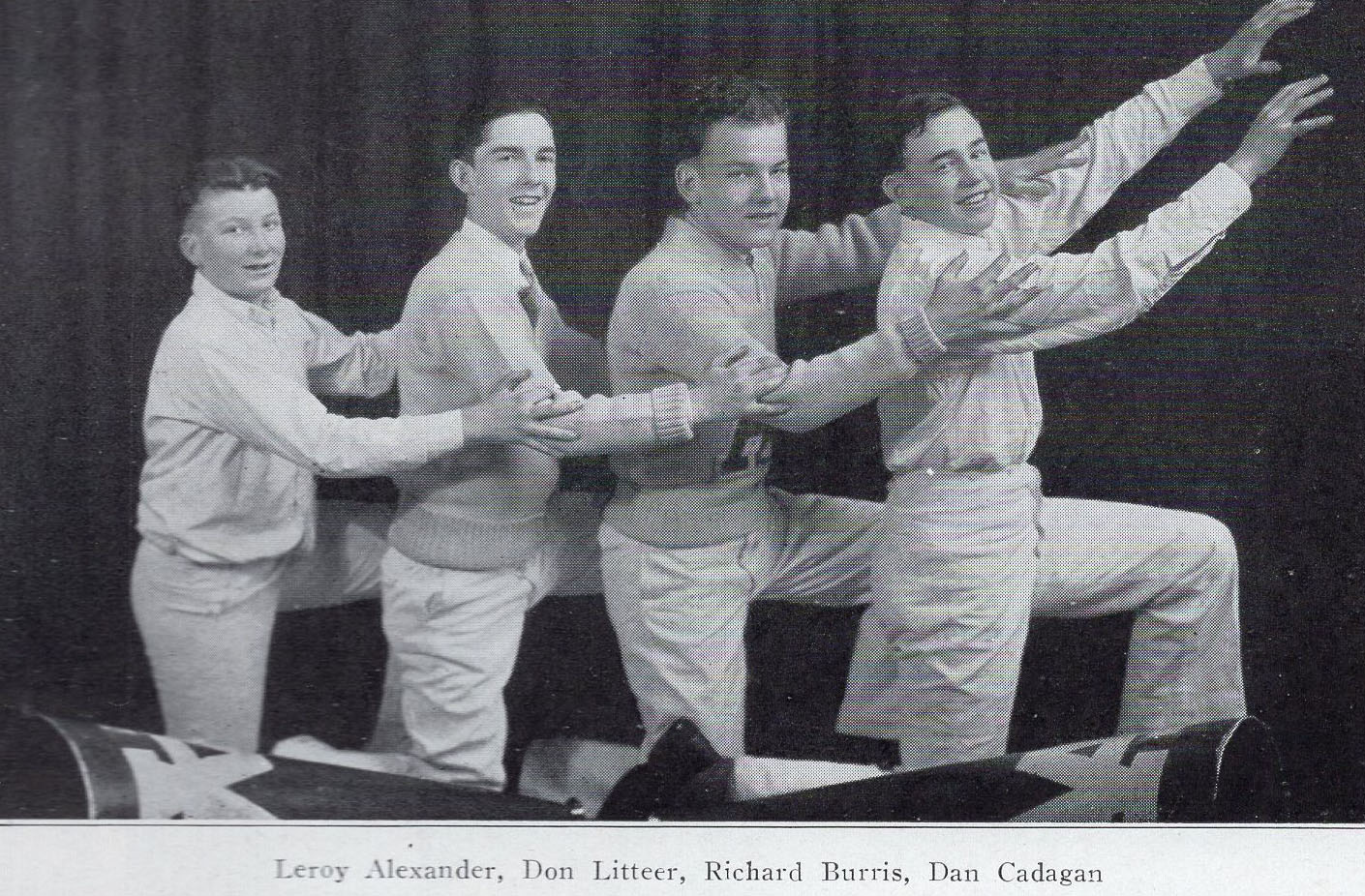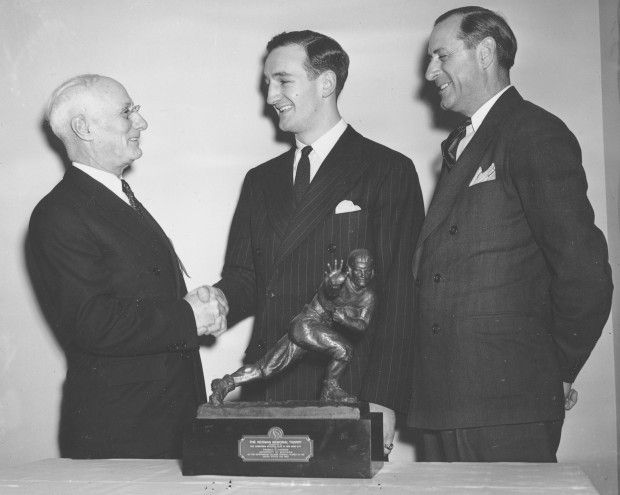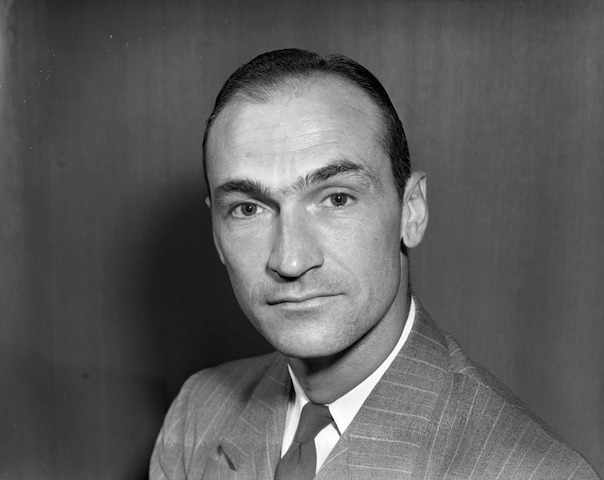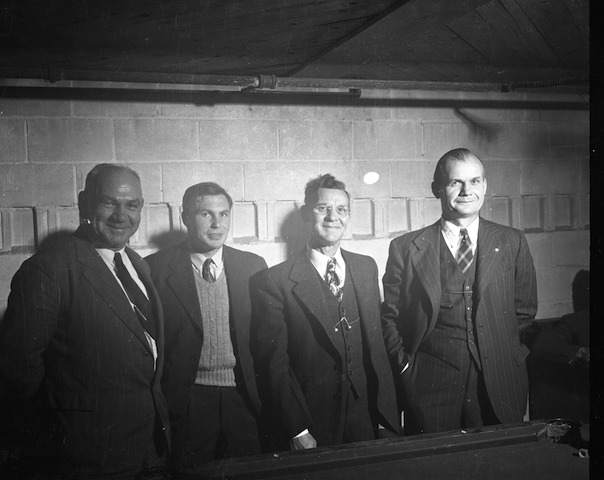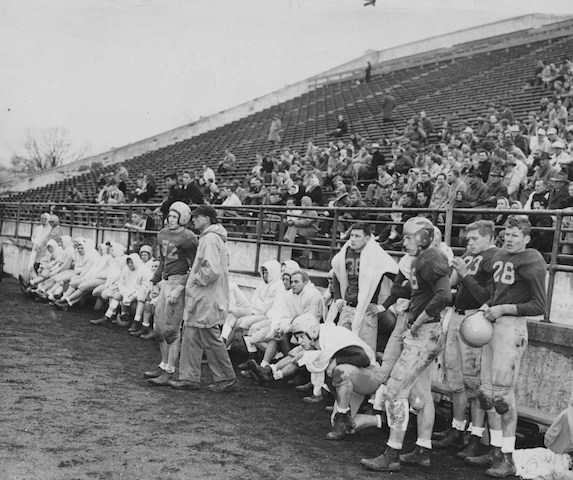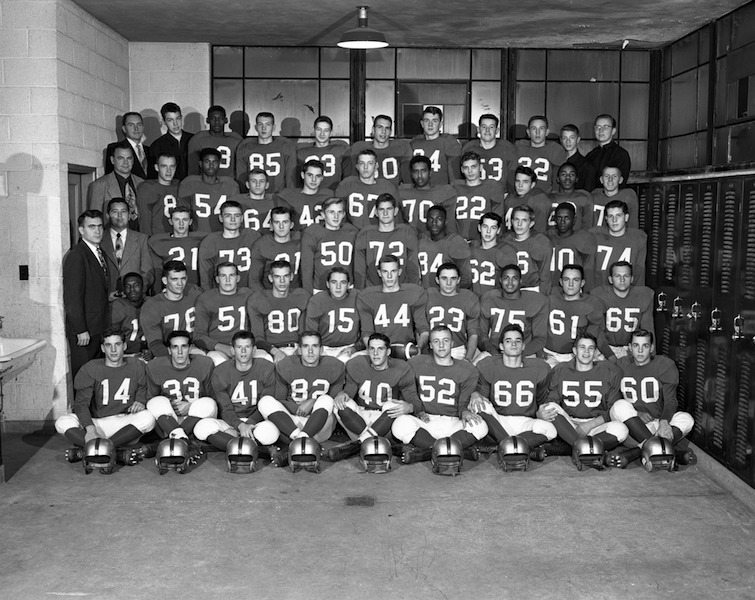Ann Arbor High School Football History

1897 Ann Arbor High School Football Team
Albert Pattengill came to Ann Arbor in 1865; baseball was Michigan's first varsity sport in 1865, and he was a member of those first teams, 1865-1867. Pattengill was on a committee that selected Michigan's school colors, Maize and Blue, in 1867; he became Principal at Union School in 1868 after it was opened on October 5, 1856. Pattengill taught Greek at the University of Michigan until his death in 1906. Union School was renamed Ann Arbor High School in 1871. It was also the time that the University of Michigan became known as the "Wolverines." The name was given to the Michigan Cavalry Brigade in 1863; a monument was erected in their honor at Gettysburg, and they traveled there for a reunion in 1889.
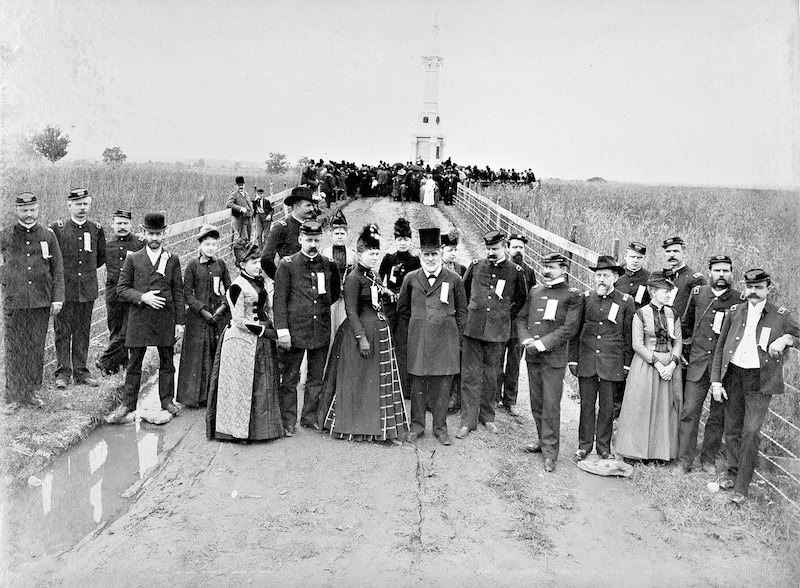
Athletics developed slowly at the University of Michigan; there were only 50 students enrolled in 1850, and the University only had 89 students graduate from 1837-1850. Cricket was the first club sport played in 1858; the Class of 1849 reported that they played baseball, wicket ball, two-ol-cats, etc. The University of Michigan held their first Field Day on June 23, 1879 with events that included walks, bicycle races, baseball throws, standard runs and jumps. When baseball games were played, common opponents included Ann Arbor, Defiance Club of Ypsilanti, Jackson, Michigan Normal College, Detroit, Kalamazoo, Three Rivers, Tecumseh, Port Huron, Orchard Lake, Dexter, Cass Club, etc. and expanded to out-of-state teams in 1882.
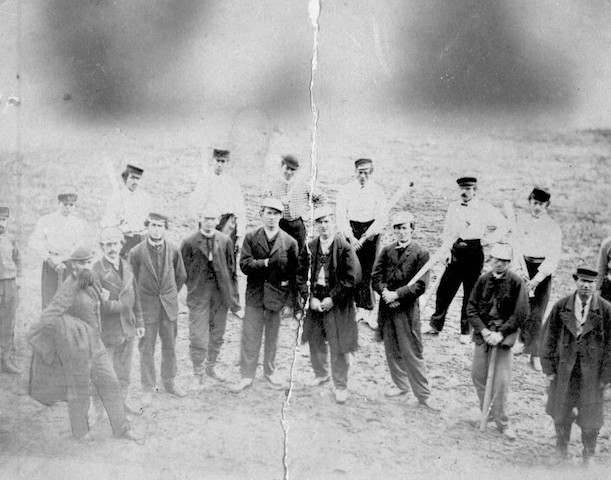
Albert's brother, Judson, became Principal at Ann Arbor High School, 1876-1908, after graduating at the University of Michigan until he passed away in 1908. Albert was Michigan's Faculty Representative, 1898-1905, and a member of the Board in Control of Intercollegiate Athletics since its inception in 1893. Both Pattengill brothers had a strong impact on the development of football as a varsity sport at both Michigan and Ann Arbor High School; they helped facilitate its inception as a club sport at both schools. Union School lost to the University of Michigan Freshmen, 7-5, in May, 1870 in a club football game; the two football programs were connected emotionally and spiritually from 1870 until present.
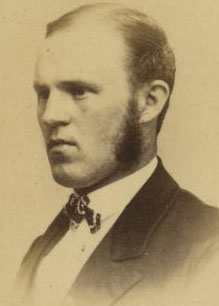
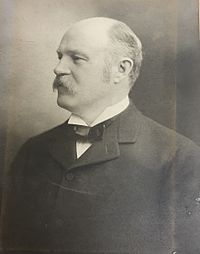
Albert and Judson Pattengill
Football also began at Kalamazoo in the 1870s; most people referred to it as rugby (foot-ball or foot ball) at that time, and references were made in the Omega Yearbook to that as well. The field was 120 x 75 yards, and the ball used was a soccer ball (evolution of the football); the field was expanded to 166.67 x 100 in 1871, reduced to 133.33 x 83.33 in 1876, 110 x 53.3 yards in 1876, and increased to 120 yards x 53.33 in 1912. Upright goal posts were 24 feet apart in 1869, 25' in 1873, and 18.5' apart in 1876. Football Field Design There were 25 players allowed per team in 1869, reduced to 20 players in 1873, 15 in 1876, and 11 in 1880; there were substitutions for injured or disqualified players in 1882, but few substitutions were used, 1869-1881
Levi Wines was Ann Arbor's Renaissance Man
Levi Douglas "Daddy" Wines was a 1870 graduate of Union School; he earned a University of Michigan Engineering degree in 1874, and began teaching mathematics at the high school for 50 years, 1879-1928. Levi Wines helped found the University Musical Society in 1879; Wines was appointed as Parks Commissioner by Mayor Royal Copeland, an 1889 University of Michigan graduate from Dexter, helping secure the school property at the corner of Hoover, Division and Hill that became known as Wines Field (now Elbel Field). Wines was also heavily involved in athletics as a member of the Board in Control of Athletics at Ann Arbor High School since its adoption in 1884.
Ann Arbor High School graduates in 1872

The Thomas Cooley Home in 1877; it would become the first Michigan Union; Cooley moved to Ann Arbor in 1859 and became a law professor, and was promoted to Law Dean, 1871-1884, while serving on the Michigan State Supreme Court, 1864-1885. After he passed away in 1898, students organized the Michigan Union after 1100 met at the Waterman Gym, and approved the purchase of the Cooley home in 1907. Later, after their membership reached over 4,000, they hired the Pond Brothers to construct the current Union in 1916, and it was completed by 1919. The membership fee that began at $2.50 was raided to $3 in 1918, but it increase later to $5. Women were only allowed inside with an escort until 1956.
Ann Arbor High School Football gained varsity status in 1885; there were no coaches, and there were no records of scores, 1886-1890 (no team in 1887). Michigan also had no formal varsity coaches, 1879-1890. The Ann Arbor Omega Yearbook was initiated in 1884, and served as a record for most football games played; it was a 58 page publication that cost 20 cents. The University of Michigan Palladium Yearbook began earlier in 1858, and the Wolverines began club football in 1873 with varsity status in 1879; it was the 15th varsity football program in America. There were only 9 teams competing in college football in 1885. Ann Arbor High School lost to Michigan, 62-0 in 1891; early games for Michigan were played at the Washtenaw County Fairgrounds which were originally at the southeast corner of Hill and Forest, but moved in 1890 to the area now known as Burns Park between Wells, Ferdon and Granger. The land was owned by at that time by Israel and Olivia Hall who came to Ann Arbor in 1876 and purchased 73 acres of land in the surrounding area from Joseph Dorr Baldwin who arrived in the city in 1847 from Detroit where he was involved in hardware and leather trade, and purchased 154 acres with a farm at 1530 Hill Street. The Pattengill home was at 1405 Hill Street. Ann Arbor High School also used the Fairgrounds to practice and play games until West Park and Wines Field became available practice, but the first game wasn't played at Wines Field until 1915. Attendance at the early games was typically a few hundred people, and the Wolverines could draw several thousands at venues in Detroit, Cleveland, Chicago, New York, Kansas City, Minneapolis, Boston and Buffalo; the largest crowd to witness a Wolverine football team was at Marshall Field (opened in 1893) in Chicago in 1895 when over 10,000 fans attended with nearly 20,000 in 1896.
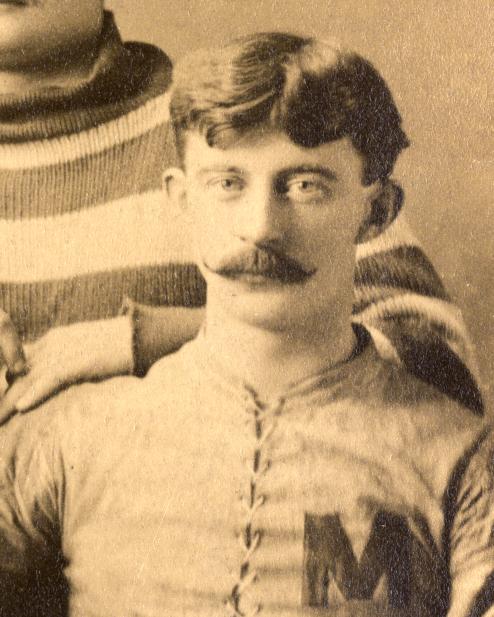
James Duffy, Captain of both Ann Arbor High School in 1885 and University of Michigan Football in 1888; he played for the Wolverines, 1885-1891, and kicked a 55 yard field goal on November 22, 1891 against Cornell. Michigan was undefeated, 1885-1897 outscoring opponents, 222-0. Duffy ran a 10.4 100 yard and 22.4 200 yard dash on Field Day May, 1888, and drop-kicked a football 168'7.5" and held the world record. He became an attorney at Bay City, and was President of the State Bar.
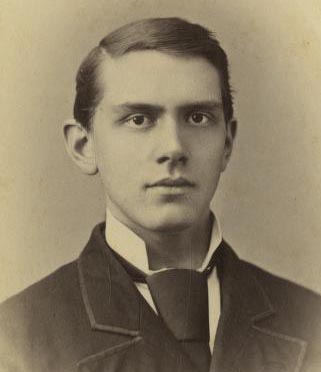
Charles Mills Gayley wrote, "The Yellow and Blue," in 1886
Ann Arbor High School Football Practice in 1902 at the Fairgrounds
Ann Arbor High School had 80 graduates in 1888; over half of the graduates went on to matriculate at the University of Michigan. Michigan was one of the most prestigious public schools in the nation for its academics. The first reported high school game in the State of Michigan was on October 27, 1888 when a team from Windsor, Ontario played Detroit High School. Several Michigan players went to Union School and Ann Arbor High School including Irving Kane Pond, a 1875 graduate who scored the first Wolverine touchdown in 1879. Other Ann Arborites on the early Michigan Football squads before varsity status was reached included James Duffy, John Duffy, Frank Reed, Thomas Edwards, William Calvert, Albert Pettit, John "Tubby" Chase, Henry Mahon, Edward Dorn, Lincoln MacMillan, and William Trowbridge. James Duffy, John Duffy, and Tubby Chase were Captains on several early Wolverine squads; James Duffy was Ann Arbor High School's first football Captain in 1885.
Irving Pond, and 1879 University of Michigan graduate, could still to a backflip at the age of 70 in 1927

Regent's Field in 1894

Regent's Field Scoreboard in 1898
The University of Michigan Board of Regents approved $3,000 to build Regent's Field October, 1890, and it was completed for use in 1892 on 10 acres of what later became Ferry Field with an additional $4,500 raised; it was utilized for home games, 1893-1905. The Board in Control of Intercollegiate Athletics was established in 1893. The first game was played on October 7, 1893 with a 6-0 win over the Detroit Athletic Club; the field spectator capacity was 400. The original stands burned down in 1895, and rebuilt in 1896 with a seating capacity for 800 fans. Michigan's first coaches included Frank Crawford, Frank Barbour, William McCauley, Gustave Ferbert, and Langdon Lea with Mike Murphy becoming Michigan's first trainer in 1891. Both Crawford and Barbour played at Yale while McCauley and Lea played at Princeton; Ferbert was the first former Michigan player who became Head Coach, and was also a graduate of Ann Arbor High School.

Front Row: Giovanni "Count" Villa, Howard Felver, Roger Sherman, Ignatius Duffy Middle Row: Gilmore Price, Clare LeRoy Back Row (Standing): Muir Snow, Forrest Hall, Frederick Henninger, William Malley, Gustave Ferbert, Edward Denby, Loomis Hutchinson, Horace Dyer
Homecoming began at the University of Michigan in 1897 with an Alumni Game; in the first three years, they played Alumni, and Purdue celebrated the event in 1900. Michigan played the Alumni to a 1-1-1 record in those three seasons, 0-15, 11-2, and 0-0, and a final game was played in 1906 with another 0-0 draw. The tradition of inviting Alumni to "come home" began with the first Yale-Harvard game in 1875.
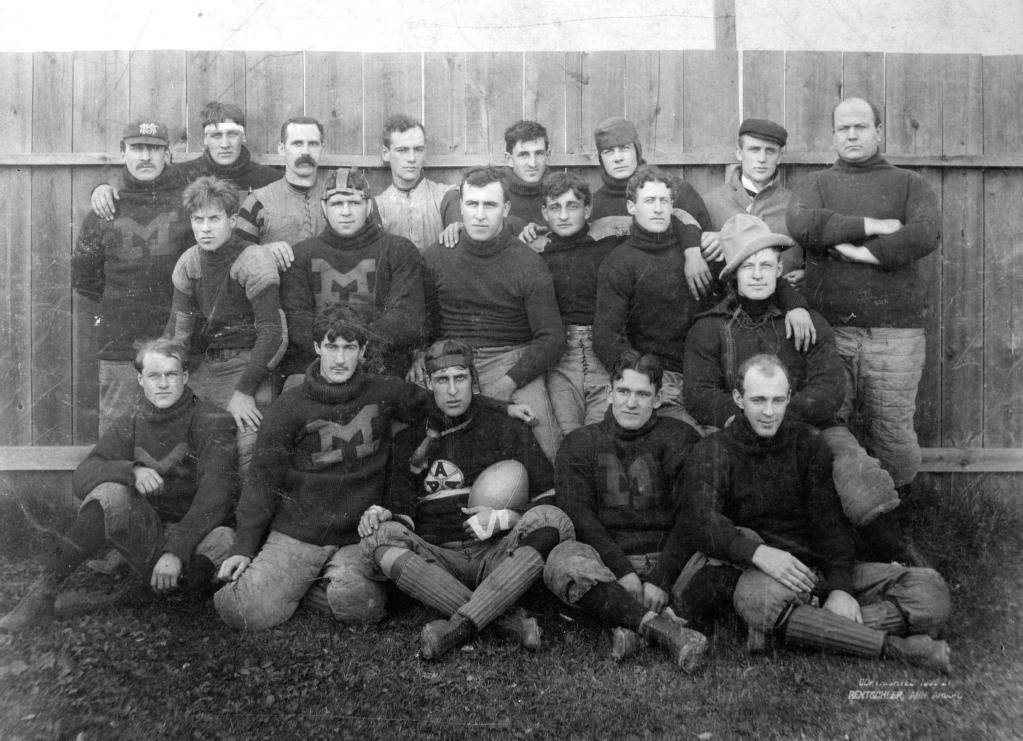
Front Row: Horace Pingree, Ignatius Duffy, Harry Hadden, Charles Widman, Loomis Hutchinson Middle Row: William Talcott, R.S. Lockwood, Frederick Henninger, Gustave Ferbert, Gilmore Price, John Bloomingston Back Row (Standing): William Baker, John Bennett, Horace Prettyman, Muir Snow, Thad Farnham, Richard France, Bert Carr, Edward Denby
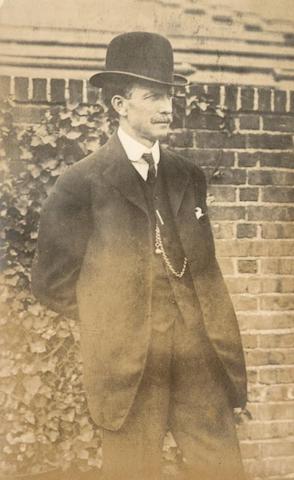
Mike Murphy was the Wolverines first Trainer in 1891, and also a Trainer at Yale, Pennsylvania, Villanova, New York Athletic Club and Detroit Athletic Club, and coached at three Olympics, 1900-1912. He wrote, Athletic Training, in 1913. He not only trained football players and track athletes, but also trained Heavyweight Boxing Champion, John L. Sullivan
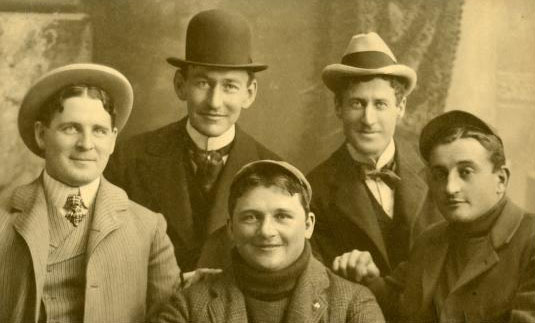
Michigan Football Coaches in 1897: William Malley, Thad Farnham, Giovanni Villa, Clare LeRoy, and Gustave Ferbert. Ferbert was an Ann Arbor High School graduate, and the first Head Coach of Michigan Football who played for the Wolverines.
George Jewett scored four touchdowns on November 19, 1892 against John Heisman's Oberlin College Yeomen; however, the Yeomen claimed that time ran out as they prevailed, 24-22, and left the field while Michigan contended that they won, 26-24. The outcome is still in question with each team claiming a win.
Former Ann Arbor High School Valedictorian in 1890, George Jewett, became the first negro football player at Michigan; he later transferred to Northwestern where he completed medical school after a conflict with Victor Vaughan. Jewett was also Captain of both Ann Arbor High School Football and Baseball team; he played 2nd Base.
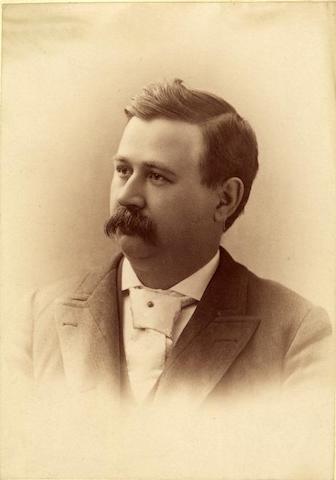
Victor Vaughan in 1892; he became Medical School Dean, 1891-1921
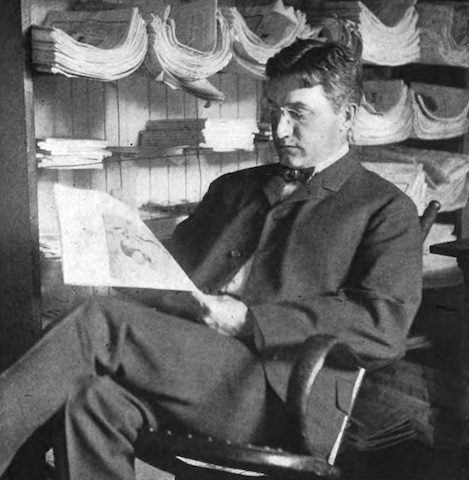
Caspar Whitney
The first All-American football teams began to be recognized in 1889 by Caspar Whitney in Harper's Weekly; the Walter Camp Foundation began to select All-Americans in 1892 with John Merrill in 1894 (Leslie's Weekly), Harry Beecher and W.T. Bull by 1896. Camp played at Yale, and coached both the Bulldogs and Stanford with a 79-5-3 record 8 seasons with 3 national titles. All of the selections came from Eastern Schools: Yale, Harvard, Princeton, Cornell and Penn until 1897 when Army and Lafayette had athletes recognized. Yale claimed 19 National Championships, 1872-1897, and added 8 more, 1900-1927. The Bulldogs biggest rival, Harvard, claimed 5 National Championships, 1874-1899, and added 7 more titles for the Crimson, 1901-1920. Princeton claimed 20 National Titles, 1869-1899, plus 8 more for the Tigers, 1903-1950. Princeton's biggest rival, the Pennsylvania Quakers, was recognized for 7 National Championships, 1894-1924. Michigan's first recognized All-Americans were Allen Steckle (tackle), William Cunningham (center), and Charles Street in 1898.
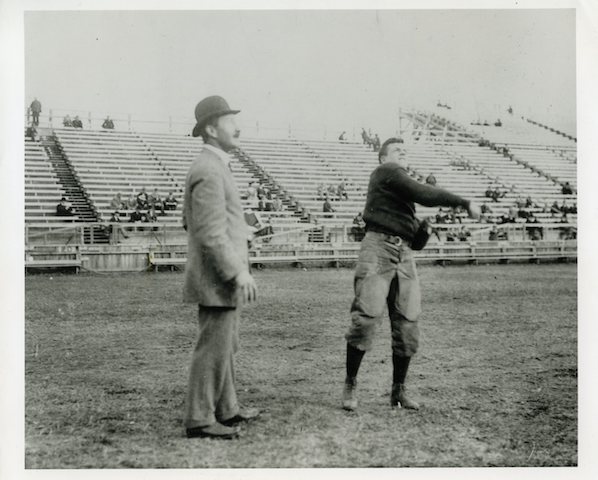
Walter Camp was considered the "Father of American Football;" his 1888, 1891, and 1892 Yale Bulldogs shut out all 13 opponents. Camp had a 67-2 record, 1888-1892, and recorded 63 shut outs in those games
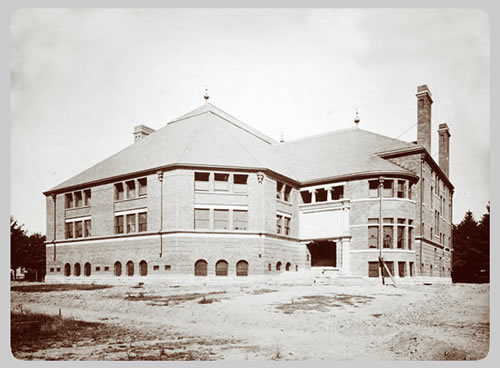
Waterman Gymnasium was completed at the corner of East University and North University in 1894; it was the top athletic facility for Michigan athletes to work out at, and facilities have become a very critical element of developing football players and athletes.
Keene Fitzpatrick came to Ann Arbor in 1894; he was instrumental in continuing the high level of conditioning of athletes that Murphy began, and he started an outdoor varsity track team in 1895 as the Wolverines' fourth varsity sport after baseball, football, and tennis. Most people regarded Fitzpatrick and Murphy as the best athletic trainers in America. A fire destroyed the wooden stands at Regent's Field in 1895, but they were rebuilt to seat 1,500 later that year. By 1895, there were 50 varsity college football programs nationally. The Western Conference was established on January 11, 1895 with Michigan, Chicago, Purdue, Illinois, Northwestern, Wisconsin, and Minnesota as original members. Trackster, Louis Elbel, wrote "The Victors" after a 12-11 victory over Chicago on November 24 after a 10-0 undefeated season including six shutouts. It was the Wolverines first Western Conference Championship.

Louis Elbel, Michigan Track Team in 1897
Dr. Charles Nancrede was the first Michigan Faculty Representative in 1896, but Jerry Knowlton, a Law Professor and Ann Arbor High School graduate, replaced him, 1896-1897; Knowlton married Adele Pattengill, sister of Albert and Judson, in 1875. After Ann Arbor High School established its own varsity football program, there were more athletes who later became varsity players at Michigan including George Dygert, William Ball, James Bird, Clare LeRoy, Neil Gates, Edward Paul De Pont, Ignatius Duffy, William Dexter McKenzie, Walter Bain, Samuel Sackett, Ned Begle, Waldo Bach (son of Philip Bach), Wicker John Maynard, Thomas Neal, August Henry Oversmith, Elisha Elijah Sayed, Francis Joseph Welsh, Fred Henninger, etc. Dygert was a Captain for two seasons, 1892-1893, and Henninger in 1896; Henninger and Ignatius Duffy were also an Assistant Football Coaches.
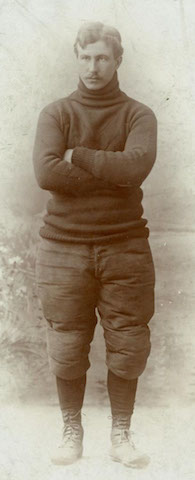
George Dygert moved to Butte, Montana after leaving Ann Arbor, but finished his law career in Chicago

Regents Field in 1900
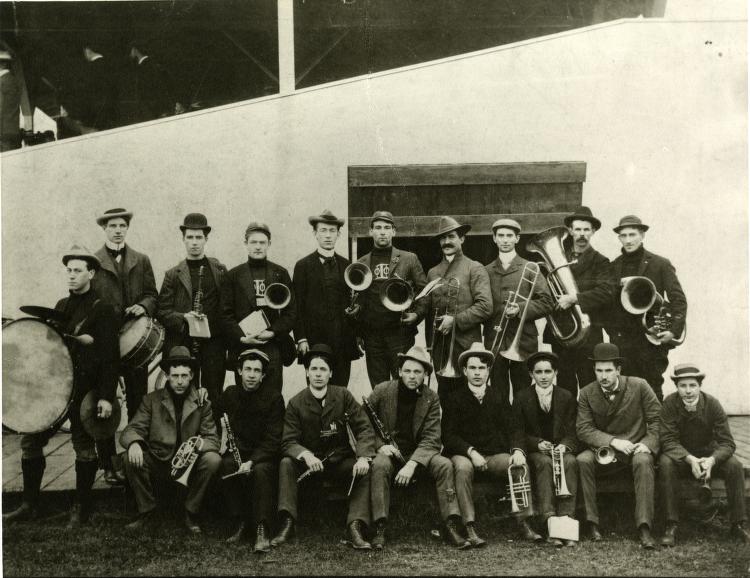
The University of Michigan Marching Band gave their first performance on February 23, 1897 at University Hall on Washington's Birthday after Harry De Pont, 17, a Senior at Ann Arbor High School organized the band in 1896, and began entertaining fans at halftime of the football games in 1898. DePont later graduated from the University of Michigan in 1901, and played coronet in the band. His father, Paul Rousseau De Pont was a French Professor at Michigan, 1871-1906, and his brother, Edward Paul De Pont played on the Michigan Football Team.
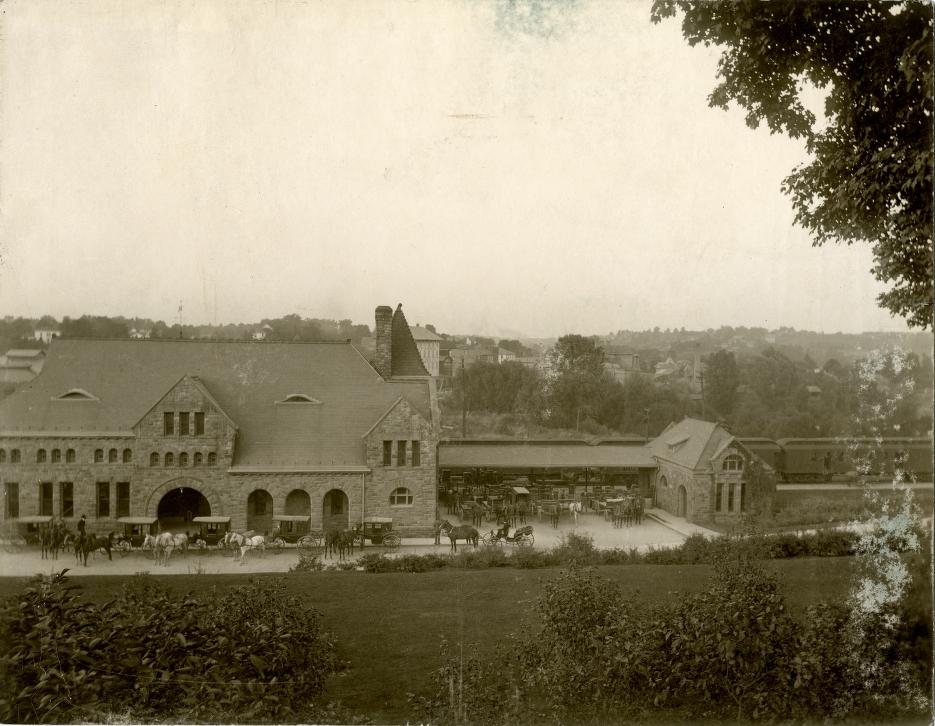
Travel to many football games was done by train or interurban when football first began; the service began in the Ann Arbor-Ypsilanti area in 1891. The pics above are Ann Arbor Train Depot in 1905, and belor Ypsilanti Interurban in 1910. Ann Arbor traveled on many occasions to play the "Normals" as the local interurban went to Jackson (40 minutes), Ypsilanti (20 minutes) and Detroit (60 minutes), but they'd have to take a horse driven vehicle from there to the venue with no locker room.
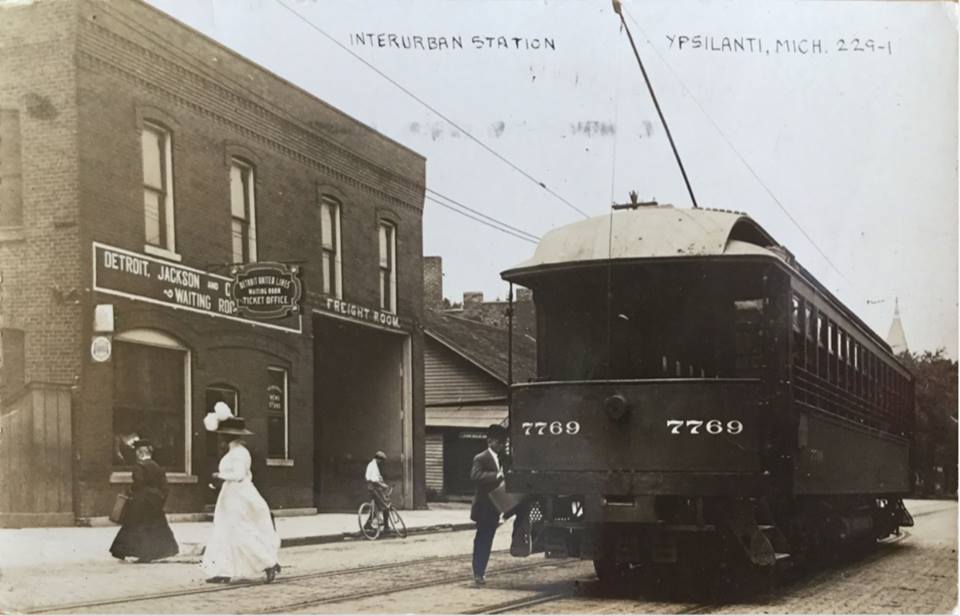
D.W. Springer was a well-respected man in Ann Arbor as well as statewide and nationally
Ann Arbor High School School instructor, Durand W. Springer, volunteered to coach the football squads, 1896-1900, and claimed state titles in four of those five seasons with a record of 20-12-4; Springer taught bookkeeping, commercial law, and political economy; his business course served as a National Model for the Teaching of Business in High Schools He founded the Ann Arbor High School Athletic Association in 1894. Springer coached Albion College as a student coach, 1883-1884; he was the Britons first football coach. Albion defeated Michigan in 1891 at Ann Arbor, 10-4. After graduation, he resided in Bridgewater and Ypsilanti where he also taught school. His father and grandfather, Isaac and Elihu, were very influential Methodist Ministers. He was later Principal at Ann Arbor High School in 1908-1909, and 1912-1913. When Michigan Agricultural College began their athletic program in 1884 with baseball, they competed against Albion and Olivet in Field Days in various athletic events including track and wrestling. The Michigan Intercollegiate Athletic Association was founded in 1888 with Michigan Agricultural College, Hillsdale, Olivet and Albion; Michigan Normal College joined in 1892, and Kalamazoo College in 1896. Springer also later became Secretary of the National Education Association, 1911-1917, was on the Board of Directors of the University of Michigan Musical Society, 1904-1943, Superintendent of the Homeopathic Hospital, a school board member for Ann Arbor Public Schools, 1913-1918, and was President of the American Society of Certified Public Accountants (He wrote the Michigan CPA Manual in 1915). He was a very influential, and active man in the community, state and national scenes.
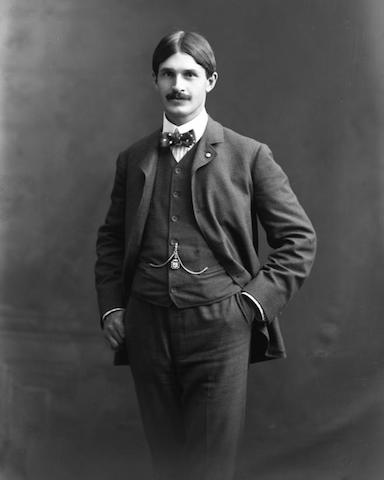
Charles Baird became Michigan's first Athletic Director in 1898; he was Manager of the Wolverine squads, 1893-1895; his brother, James was Captain of the 1894 team; he was also an Ann Arbor High School graduate, and former football Captain. Baird hired Fielding Yost, and was able to gain the donations of Dexter Ferry to establish Ferry Field. Baird moved to Kansas City in 1909, and became a very wealthy banker; he donated the Baird Carillon for the Burton Memorial Tower in 1936.
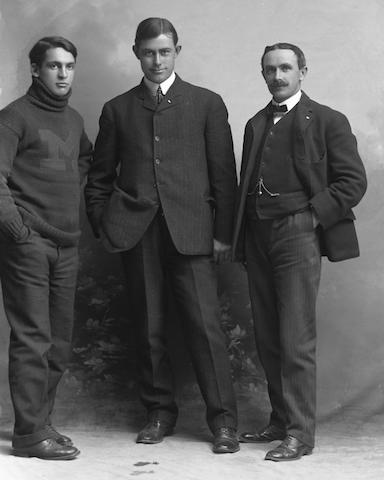
Michigan Quarterback Harrison "Boss" Weeks, Head Coach Fielding Yost with Trainer Keene Fitzpatrick in 1902
Fielding Yost arrived in Ann Arbor Spring, 1901; his "Point-a-Minute" teams powered to a 56 game winning streak, 1901-1905 outscoring opponents 2821 to 42 in that stretch with 51 shutouts. Yost began coaching in 1897 at Ohio Wesleyan after playing at West Virginia and Lafayette, 1894-1896; his Battling Bishops shut out both Michigan and Ohio State as he finished 7-1-1. He then coached at Nebraska, Kansas, and Stanford with records of 8-3, 10-0, and 7-2-1 over the next three seasons accumulating 23 shut out wins over four seasons. Yost's initial salary at Michigan was $2,300 which was about the same amount of money that a full professor at the University of Michigan made. The Wolverines became the first National Champion that was from "West" in 1901 as all the first recognized titlists, 1869-1900, were Yale, Harvard, Princeton, Penn, Lafayette, Columbia or Rutgers.

Yost defeated Pop Warner's Carlisle squad, 22-0, at Bennett Field on November 2, 1901; Warner coached 7 different teams with 319 wins including 202 shut out victories over 44 seasons. Warner played for Cornell, 1892-1894; he recruited Jim Thorpe to play for the Carlisle Indians, 1907-1912, he won both the decathalon and pentathalon at the 1912 Olympics.
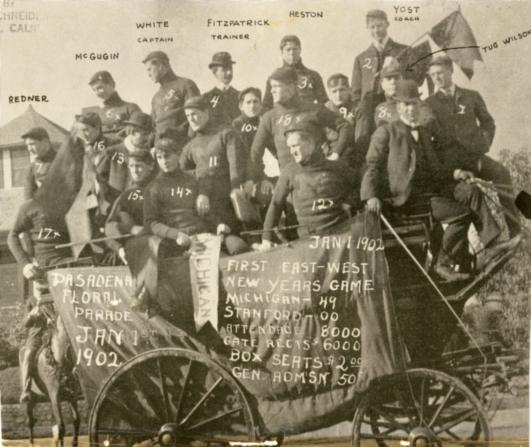
1901 Football Team at the 1902 Rose Bowl; they destroyed Stanford, 49-0
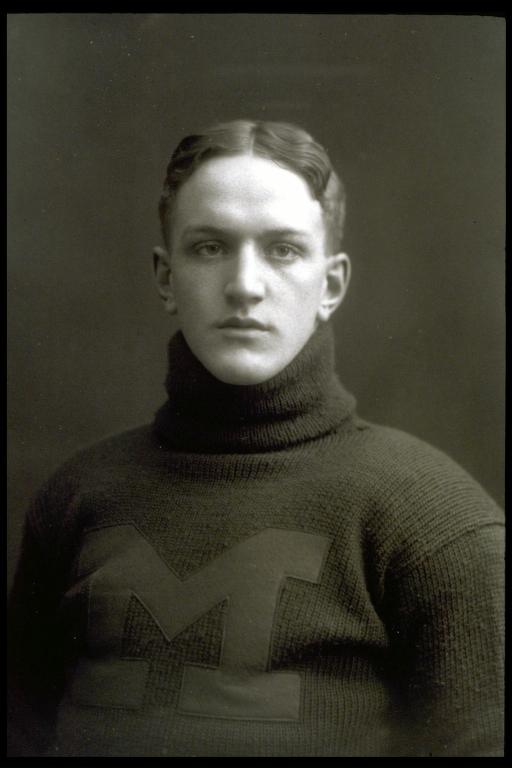
Neil Snow was the Rose Bowl Player of the Year, and scored 5 touchdowns; he was inducted into the College Football Hall of Fame in 1960. He also ran track, and played baseball and tennis for the Wolverines earning 12 varsity letters. He played at Detroit Central High School, one of Ann Arbor High School's biggest rivals at that time.
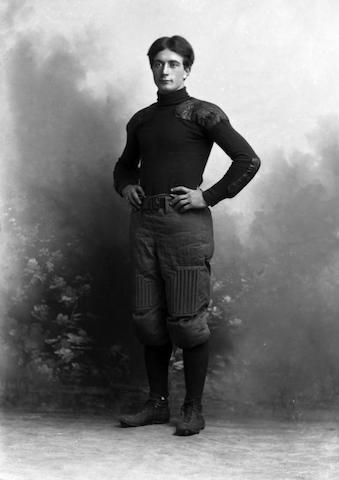
Dan McGugin was a guard on the Wolverine squads in 1901 and 1902; he was Yost's Assistant for a year prior to accepting the Head Coach position at Vanderbilt, 1904-1934. Just like Yost, McGugin earned his law degree; he and Yost became brothers-in-law as they married the Fite sisters in 1905, and spent the Summers together at Nashville, TN. McGugin's record for the Commodores was 197-55-19 with 11 conference championships and 137 shut out wins, but he never could beat a Michigan squad although he did manage a 0-0 tie in 1922.
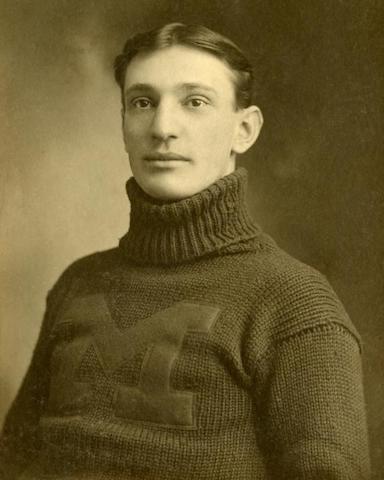
Curt Redden was Captain of the 1903 squad, and played end, 1901-1904; he became a lawyer, but left his practice to become Yost's Assistant Coach, 1908-1912, for five seasons. He passed away in 1918 of pneumonia following service in World War I.
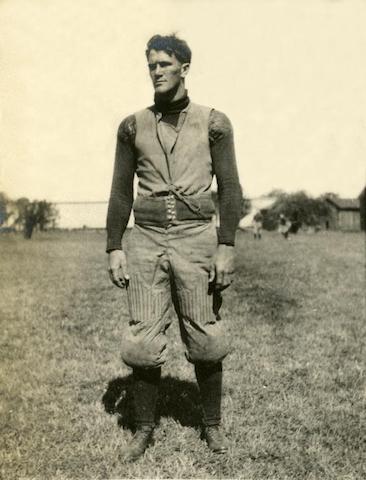
Frank "Shorty" Longman played fullback at Michigan, 1903-1905; he coached at Arkansas and Notre Dame, and his Fighting Irish went 11-1-2, 1909-1910, with a win over Yost and the Wolverines in 1909, 11-3. Longman earned a law degree at Michigan, and married Edythe Eberbach, granddaughter of Christian Eberbach, in 1906, and resided at Ann Arbor after coaching until his death in 1928.

Detroit Central High School in 1904
Michigan's first football rivalry began in 1892; Amos Alonzo Stagg's Chicago Maroon were the third team after defeating the Wolverines, 2-0, on November 30, 1905 as they shut out 10 of 11 opponents. When Yost came to Ann Arbor, the rivalry got even more intense.
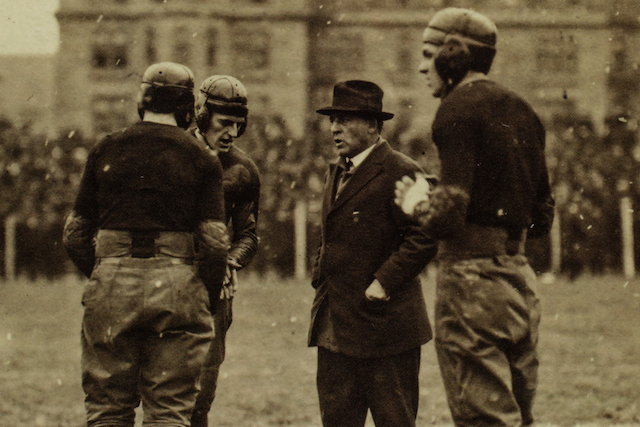
Amos Alonzo Stagg with Maroon players; Michigan's first rivalry began with Chicago in 1884 when they defeated the Chicago University Club, 18-10. When Yale graduate, Amos Alonzo Stagg, arrived in 1892 for a lofty $6,000 annual salary, the Wolverines defeated the Maroon, 18-10, at Toledo, again in 1893, 28-10, at Marshall Field, again in 1894 at Marshall Field, 6-4; it wasn't until 1895 when Stagg's Maroons defeated Michigan, 12-0. They won three in a row, 1895-1897, and the Wolverines prevailed, 12-11, in 1898. The teams didn't play in 1900, but it was the final game for both teams in most seasons until Michigan was booted out of the Western Conference in 1905. Yost defeated Stagg handily in their first four meetings, 22-0, 21-0, 28-0, and 22-12; Yost ended the practice of Chicago hosting each matchup, 1894-1900, for a share of the gate receipts as they began to play home and home. Stagg's teams shut out 235 opponents over his 55 seasons including 41 with Chicago.
The Brown Jug Rivalry began with Minnesota in 1903 between Fielding Yost and Henry "Doc" Williams; the 6-6 tie played at Northrop Field at Minneapolis had the largest crowd to witness a Wolverine game with an estimated 20-30,000 fans who attended. Regent's Field drew its largest attendance ever the previous season in 1902 to watch Michigan lambaste Minnesota, 23-6. The Gophers were the second "Western" team to win a National Title in 1904. Michigan lost to the Gophers in their first two meetings in 1892 and 1893, 6-14 and 20-34, but prevailed, 6-4, in 1897, and 14-0 in 1898 until the Williams vs. Yost era began.
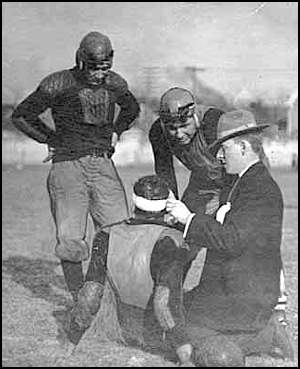
Henry Williams taping an injured Gopher player; Williams coached Minnesota, 1900-1921, and he was a Yale halfback, 1889-90
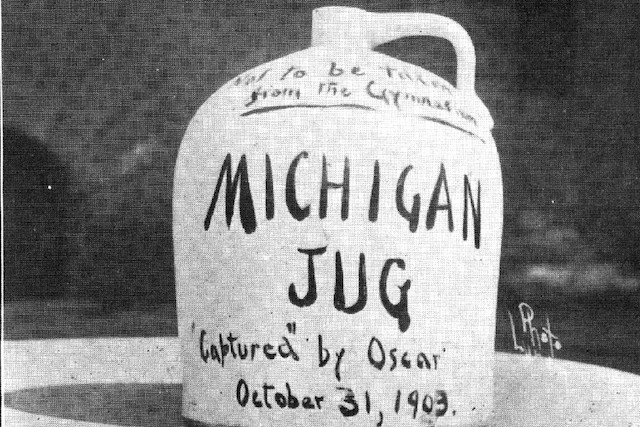
The Brown Jug is the oldest Trophy Game in College Football; it began with a 6-6 draw in 1903 before 20-30,000 fans at Minneapolis
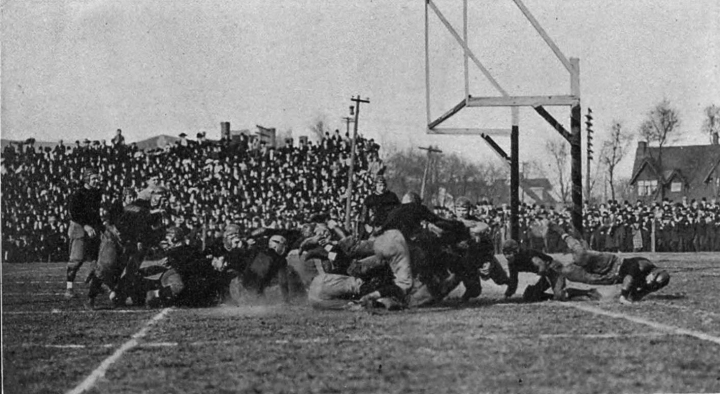
Michigan won back the Brown Jug from the 1903 game in the 1909 game held at Northrop Field at Minneapolis, 15-6, on November 20 before 22,000 spectators; it was the final game of the season for both teams, the the Wolverines ruined the Gophers undefeated season
Michigan's third big rival at that time was Illinois; Robert Zuppke came to Champaign from Muskegon, where he coached the Big Reds 1906-1909, with a 29-4-2 record while coaching basketball and track in addition to football. He then built a powerhouse Illini program that won National Titles in 1914, 1919, 1923, and 1927, with 7 Conference Championships while he coached, 1913-1941.
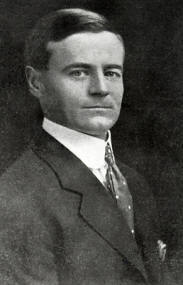
Robert Zuppke helped build a solid Muskegon football program prior to making Illinois a Conference and National Powerhouse; he coached both Red Grange and George Halas
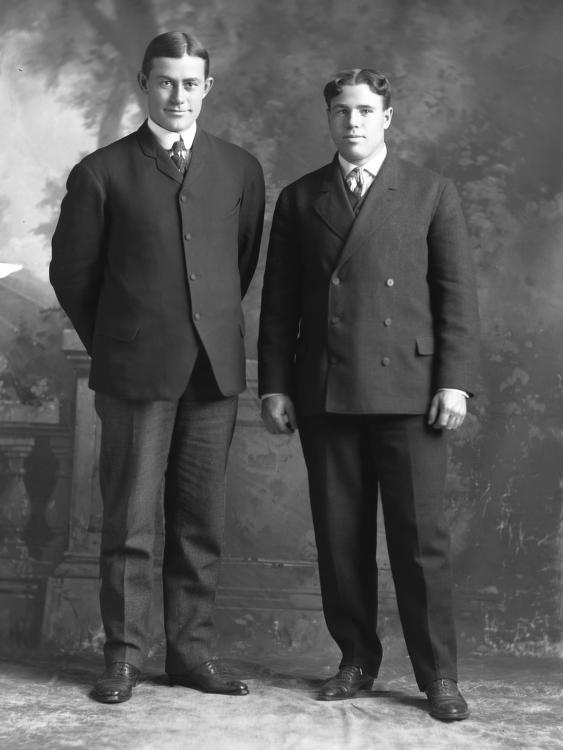
Yost with Willie Heston in 1904; Heston set the Wolverine record with scoring 93 rushing touchdowns, and ran for over 7,000 yards during his career at Michigan after transferring from San Jose State. Both Fielding Yost and Knute Rockne called Heston the Greatest Football Player of All-Time, and Rockne picked Heston over Red Grange.
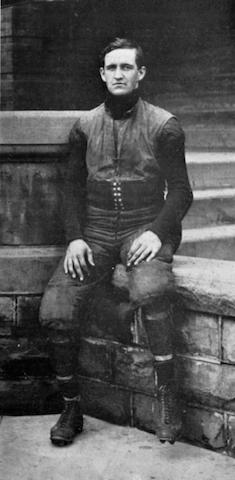
Yost sent his Fullback Paul Jones to Ann Arbor High School to coach their football squad in 1903; he coached at Western Reserve, 1904-05. Jones set up a law practice at Youngstown, OH in 1905, and later became City Attorney before being elected Ohio Judge, 1920-1923, and appointed as Federal Judge, 1923-1965
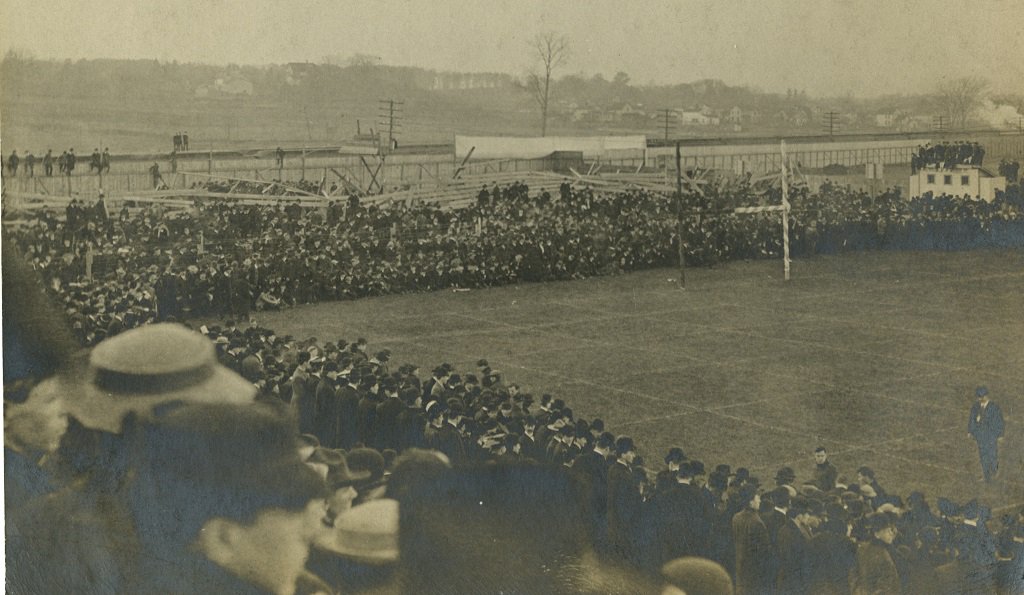
A Bleacher Collapse at Regent's Field in 1905 brought concern to fan safety in 1905; player safety was also a concern with a rash of deaths as at least 45 players died, 1900-1905 (Health Issues in Football)
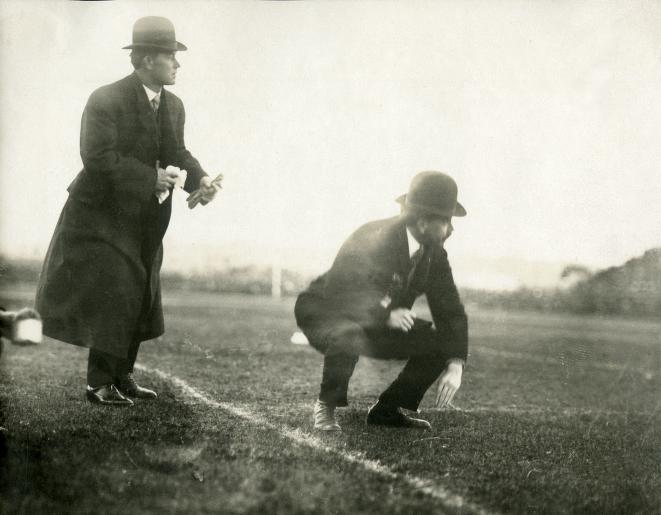
Yost and Fitzpatrick on the sideline
Yost's Wolverines humiliated Michigan Agricultural College on October 8, 1902, 119-0, and the next meeting on October 12, 1907, 46-0; however, the Aggies played the Wolverines to a 0-0 draw on October 3, 1908 in the first game played against the two schools at East Lansing, and that really started the intra-state rivalry. The next game on October 15, 1910 was won by the Wolverines, but only by a 6-3 score, and Chester Brewer finally shut out Notre Dame, 17-0, for their first win against the Irish. John Macklin replaced Brewer in 1911; Brewer went to Missouri where he took credit for starting an annual homecoming game. Michigan won again on October 14, 1911, 15-3, after a scoreless first half in the second game at East Lansing, and were thumped, 55-7, on October 12, 1912, but the Aggies gained their first win over Michigan, 12-7, on October 18, 1913. The Aggies shut out Michigan at Ferry Field on October 23, 1915, 24-0, for their second win against the Wolverines. All games between the two rivals were played in Ann Arbor, 1915-1947 with the exception of the 1924 game played at College Field; it only had a capacity of 14,000, 1923-1934, and increased to 26,000, 1935-1947. Michigan enticed the administration of Michigan State with the monies from gate receipts; that ended after John Hannah became their President, 1941-1969, as the field was increased to a capacity of 51,000, and renamed Macklin Field. This home field advantage worked well as Wolverines defeated MAC, 1916-1929, until 0-0 ties in the 1930 and 1931 games. The Aggies became the Spartans in 1925, and opened Jenison Field House in 1940. Charlie Bachman's Spartans defeated Michigan four seasons in a row, 1934-1937. When Fritz Crisler arrived at Ann Arbor in 1938, he held a 10-0 record against the Spartans; one big reason was his top Assistant Coach, 1938-1945, was Biggie Munn, a former player at Minnesota under Coach Bernie Bierman who was assisted by Fritz Crisler before Crisler went to Princeton.

The scoreboard at Ferry Field in 1915 was recognizable, but the Wolverines were on the short end, 0-24, against the Aggies before 21,000 fans on October 23

Ishpeming High School Football Champions in 1901
The first Michigan State Championship Playoffs for High School Football began in 1899; all games were held at Regent's Field until 1905 when the final game moved to Grand Rapids. Pontiac defeated Plainwell, 6-5, in the first game; Ishpeming won the next three title games in a row behind William Joliffe and Dr. George Sweetland over Orchard Lake Military Academy, Kalamazoo, and Benton Harbor. Clayton Teetzel, Michigan Football Halfback/End, 1897-1899, led the Tigers to the Championship in 1903, and John Woodhams, a 1901 University of Michigan and mathematics teacher, led Escanaba past Mount Pleasant in 1904. Ishpeming won in the final playoff game over Grand Rapids Central in 1905; however, Kalamazoo Central was not invited to the event although they defeated all 10 opponents on their schedule by shutout behind Coach Buck Read including Grand Rapids Central, 18-0. In 1907, Escanaba was supposed to play Saginaw and in 1908 the Eskimos were supposed to play Ann Arbor, but the games never materialized. The oldest football rivalry in Michigan began in 1893 between Battle Creek and Kalamazoo (it became the Finley Trophy game in 1928); in 1894, Menominee and Marinette, Wisconsin, began an inter-state rivalry, the Saginaw vs. Saginaw Arthur Hill rivalry began in 1894. The rivalries between Ishpeming and Negaunee, and Ludington and Manistee began in 1895, and the rivalries between Adrian and Monroe plus Niles and Dowagiac began in 1896. Plainwell and Otsego began their rivalry in 1896, Menominee and Escanaba started their rivalry in 1897, and the Battle for the Wooden Shoe began in 1901 between Grand Haven and Holland.

Escanaba 1908 State Football Champions
| Michigan High School | Wins | Began |
| Muskegon | 846 | 1895 |
| Ann Arbor | 732 | 1885 |
| Menominee | 667 | 1894 |
| Lansing (Central/Sexton) | 654 | 1893 |
| Escanaba | 632 | 1897 |
| Traverse City | 630 | 1896 |
| Battle Creek | 596 | 1893 |
| Detroit Catholic Central | 595 | 1929 |
| Cadillac | 532 | 1896 |
| Kalamazoo | 518 | 1893 |
Ann Arbor High School adopted their school colors in 1901: Purple and White, the sign of might (purple) and truth (white). Michigan Union School had seven different football coaches, 1901-1907: Paul Jones, Butler, former Captain, Floyd Hickey, Albert Taft (1903 University of Michigan graduate who became a lawyer at Oklahoma), Ray Barnett, Roy Beechler (played football at Alma and Michigan), and Fred Newton. Beechler also was an Assistant for Michigan in 1909.

Former Wolverine Captain, Horace Prettyman, established a Boarding House at 1005 North University with a Training Table in 1885; this pic above was from 1906 and the pic below from 1904. From 1885-1914, 250 students ate their regularly.
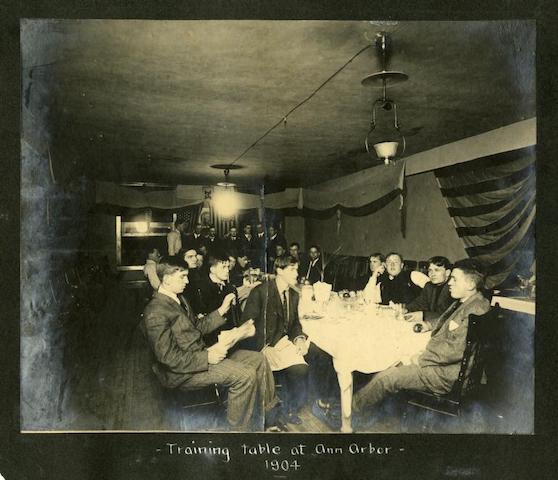
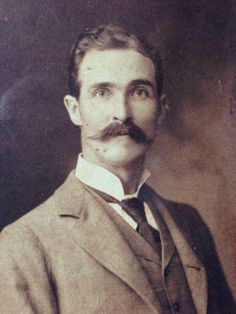
Horace Greely Prettyman graduated from Ann Arbor High School, and played for the Wolverines, 1882-1890, and was the only Three-Year Captain, 1884-1886. After he graduated from the University of Michigan, he was voted on the Ann Arbor City Council, 1891-1895, and was President of the Ann Arbor Municipal League, 1892-1894; he served as Washtenaw County Supervisor in 1901, Postmaster in 1906, and became Principal owner and President of the Ann Arbor Press, White Swan Laundry, and Wolverine Power Company after he sold his boarding house to the University of Michigan in 1914.
The Ann Arbor YMCA was completed at 110 North Fourth Street in 1904; the facility provided an after school training center for Ann Arbor High School athletes.
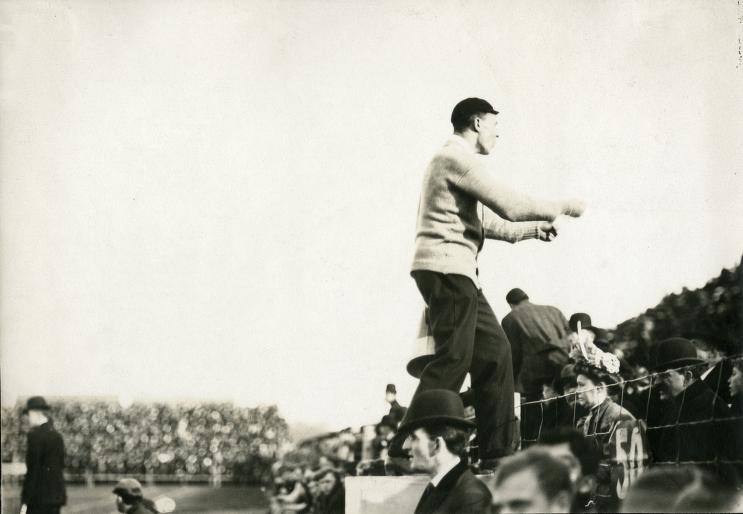
The first University of Michigan "Yeller" in 1904; some colleges began the earliest form of cheerleading in 1883 with a "Master Yeller"
Ann Arbor High School was completely destroyed on December 31, 1904; it was originally built in 1856 as Union School. There was a terrible disruption in facilities and football coaches in the first decade of the 20th century; Ann Arbor refused to retain a football coach as a faculty member with a teacher salary.
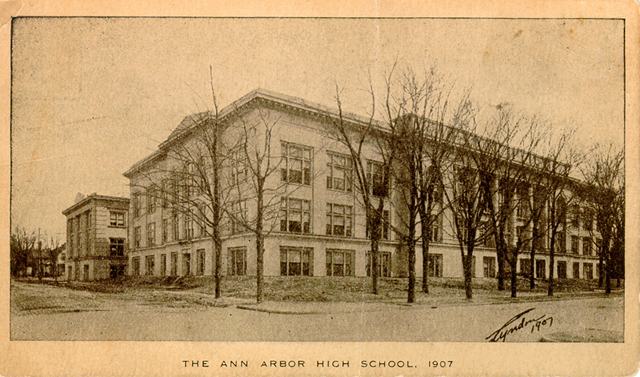
On April 2, 1907, Ann Arbor High School re-opened after $340,000 in building costs with students completing instruction for over two years in churches and rented office space.
Dexter Ferry donated 20 acres of land in 1902 at State & Hoover that became Ferry Field; Regent's Field was renamed Ferry Field, and the facility officially opened on October 6, 1906.

Ferry Field Groundskeeper Lorenzo Thomas in 1907
| Era | Touch Down | Field Goal | Conversion (Extra Point) | Safety |
| 1883 | 2 | 5 | 4 | 1 |
| 1884-1887 | 4 | 5 | 2 | 2 |
| 1898-1903 | 5 | 5 | 1 | 2 |
| 1904-1908 | 5 | 4 | 1 | 2 |
| 1909-1911 | 5 | 3 | 1 | 2 |
| 1912-1957 | 6 | 3 | 1 | 2 |
| 1958-2019 | 6 | 3 | 1 or 2 | 2 |
Scoring Changes through American Football History; in 1887, two paid officials were mandated for each game. In 1906, the forward pass revolutionized the game. The NCAA was founded in 1906.
David Starr Jordan of Stanford sent the Michigan Football Program back for 13 seasons, 1906-1918; it may have been the biggest setback in Michigan Football History
On April 13, 1907, Michigan was voted out of the Western Conference; there was a lot of politics that led to the ousting including the rivalries developed with Chicago and Amos Alonzo Stagg. Yost didn't have support from President Angell who was more focused on academics for students rather than athletics. At the Western Conference meeting in 1906, athlete eligibility including the 3-year rule, game reduction, coaching, training tables, etc. were all heated topics of discussion. Michigan played 13 games in 1905, but was forced to only play 5 games after Stanford President, 1891-1913, David Starr Jordan, lodged public charges of "professionalism" directly at Fielding Yost and Michigan November, 1905; incidently, Yost was Stanford's Football Coach in 1900 just prior to leaving for Ann Arbor in 1901, and shellacked the Cardinal, 49-0, in the 1902 Rose Bowl. Michigan was only allowed to play six to eight games, 1907-1913, as a result of the charges; they didn't play a schedule with nine games until the 1914 and 1916 seasons, and played ten games in the 1917 season. Yost almost left Michigan and quit coaching football in 1908. When Michigan rejoined the conference in 1918, they only played five games. Most of the Assistant Coaches in that era were former players, but after the Jordan accusations, the use of paid assistant coaches was limited. The political ramnifications of Starr's accusations limited the growth of Michigan football for over a decade. Victor Lane, Henry Bates, and George Patterson replaced Albert Pattengill as Faculty Representative, 1906-1908, after he passed away in 1906, but the position was vacant from 1909 until the Wolverines rejoined the conference in 1917. Lane married Jerry Knowlton's sister, Ida; he was a law professor, 1897-1928, and circuit court judge, 1888-1897, and President of the YMCA.
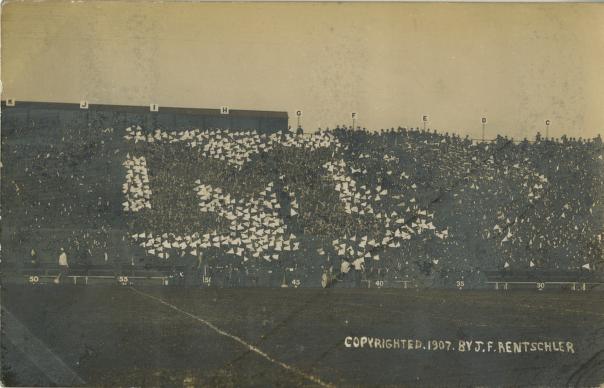
Block M in 1907

Yost talked with squad at the 1908 Notre Dame game; Michigan prevailed 12-6
George Miller became Ann Arbor High School Football Coach, 1908-1910 with great success; he was 23-3 over three seasons with; he was assisted by former 1908 Captain Carl Spaeth
Ann Arbor High School Football squad in 1908; Coach George Miller is pictured with a tie in the 2nd to farthest left in the group
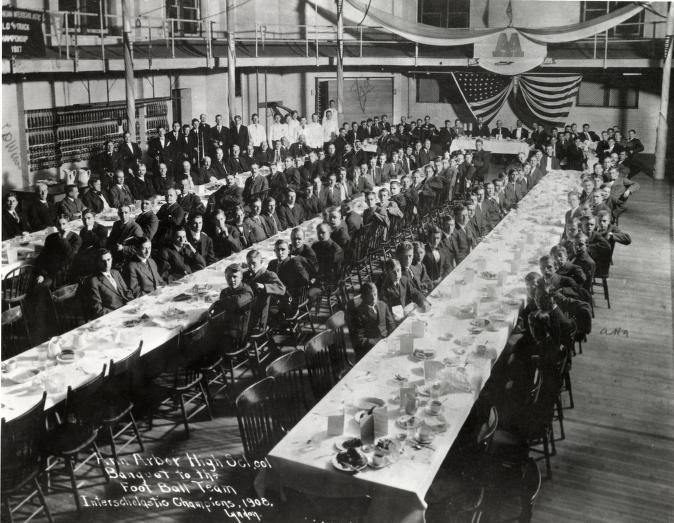
Ann Arbor High School Football Banquet on December 8, 1908 in the school gymnasium
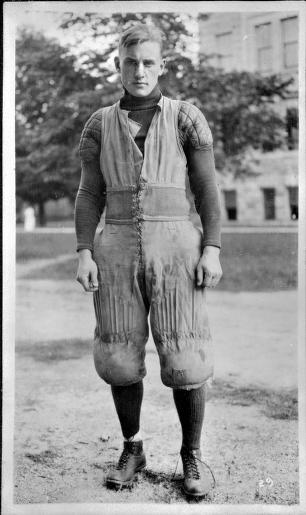
Dave Allerdice was an outstanding All-American halfback and kicker for the Wolverines, 1907-1909, and leading scorer, 1908-09; he went on to coach the Texas Longhorns, 1911-1915, with a 33-7 record including an undefeated season in 1914.
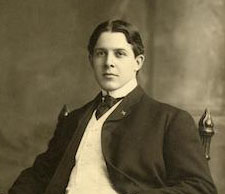
Phil Bartelme became Michigan Athletic Director on March 29, 1909. Bartelme was a student manager on the 1902 Wolverine squad; he hired Branch Rickey as Baseball Manager in 1910. As an independent, Michigan developed rivalries in football with Penn and Cornell; they started a series with the Quakers in 1899, and the Big Red in 1889; when Michigan defeated Cornell in 1894, it was the first time a football team from the "West" defeated a team from the East. Franklin Field was the first College Football Stadium in American; it was built in 1895 for the Quakers, and Harvard opened their stadium in 1903. They were 3-4 against the Big Red, 1911-1917, and 4-6-1 against the Quakers, 1906-1917, until they rejoined the Western Conference in 1918. Michigan drew its largest attendance at Ferry Field in 1907 with nearly 20,000 to observe a 0-6 loss to the Quakers that ruined an undefeated season with all previous opponents shut out. Cornell won Four National Championships, 1915-1939. Michigan drew 18,000 fans on November 19, 1910 as they held the Brown Jug, 6-0, over Minnesota at Ferry Field, 17,000 as they edged Penn, 11-9, on November 18, 1911, nearly 20,000 as they defeated the Quakers, 13-0 on November 15, 1913, and 21,146 on November 7, 1913 while defeating Penn, 34-3. There were 22,000 fans who turned out to watch Cornell pummel the Wolverines, 34-7 on November 6, 1915. An attendance record was set at Ferry Field on November 18, 1916 as Penn defeated Michigan, 10-7, before 25,584, and that topped the 22,000 fans who watched the Wolverines beat the Aggies, 9-0, on October 21 a few weeks earlier. Minnesota won back the Brown Jug on November 22, 1919 before a record 30,000 fans at Ferry Field, 34-7, and that exceeded the 25,000 fans who watched Ohio State upset the Wolverines, 13-3, on October 25. Illinois also drew 30,000 fans on October 23, 1920 as they edged Michigan, 7-6. When Ohio State defeated Michigan for a third season in a row on October 22, 1921, 14-0, there were 42,000 fans who witnessed the event; this record turnout was the catalyst for the building of a new stadium. Bartelme left in 1921 to join Rickey with the Syracuse Stars, and became their President. During his tenure, Michigan initiated a varsity basketball team in 1909 with George Corneal as its first coach, but only for one season; it was reinstated in 1918 with Elmer Dayton Mitchell, former Wolverine Baseball Captain, 1910-1912, as Head Coach; Mitchell became Intramural Director, 1919-1959.
David Friedrick Allmendinger, wealthy owner of Ann Arbor Organ Works since 1872 that he founded at his home at Washington & First St., donated the land to the City of Ann Arbor that became West Park in 1908 prior to his passing away in 1916; Ann Arbor High School utilized the park for baseball, football, and cross country practice, games and events.
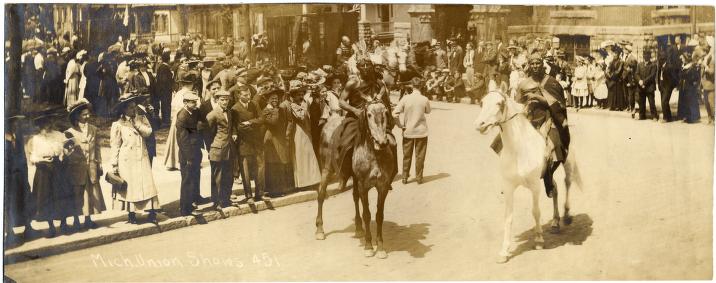
Michigan Union Parade in 1909; the Hot Air Club of 1900 became known as Michigamua in 1901, and members were given Indian nicknames. Many of their members were Michigan Wolverine Athletes, and this group was instrumental in the building of the Michigan Union where they held meetings in the tower with a limit of 25 men as "Fighting Braves."

George Lawton, Albert Benbrook, and Stanfield Wells in 1910; Benny Benbrook was an All-American, 1909-1910, and Wolverine Captain in 1910. Wells was an All-American in 1910 as well. Lawton coached the Detroit Titans after playing fullback for the Wolverines, 1908-1910.

Alvin Kraenzlein was Michigan Football Trainer and track coach, 1910-1913; he won 4 gold medals in the 1900 Olympics in two hurdles events, long jump and 60 yard dash
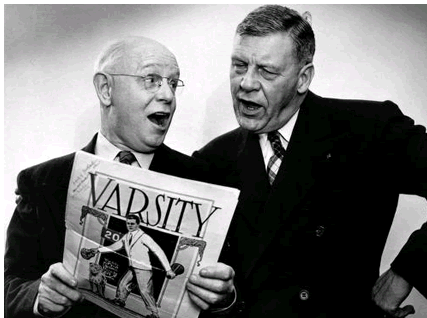
J. Fred Lawton graduated from the University of Michigan in 1911; he wrote "Varsity" in 1911 while on a street car on Detroit Street with partner, Earl Vincent Moore. Lawton played football for Fielding Yost.
William "Doc" Apple coached Ann Arbor High School Football, 1911-1914, with a 19-15 record; he was hired to be the first instructor at Ann Arbor High School for physical "culture." Lyrics for the School Song, The Purple and White, was written by Margaret Horton Cooley, daughter of Charles Horton Cooley, in 1914; Earl V. Moore wrote the music. Wines Field was utilized for the first football games in 1915; Ann Arbor defeated Ypsilanti, 13-6. George Kennedy (6-4 in 1915), Stanley Joseph (7-6-2, 1916-1917) came from the University of Illinois, and F.R. Shaffer (5-1 in 1918) coached the squads, 1915-1918. The improvement in athletic facilities with Wines Field, Ferry Field, West Park, YMCA along with a salaried football coach certainly improved Ann Arbor High School football.
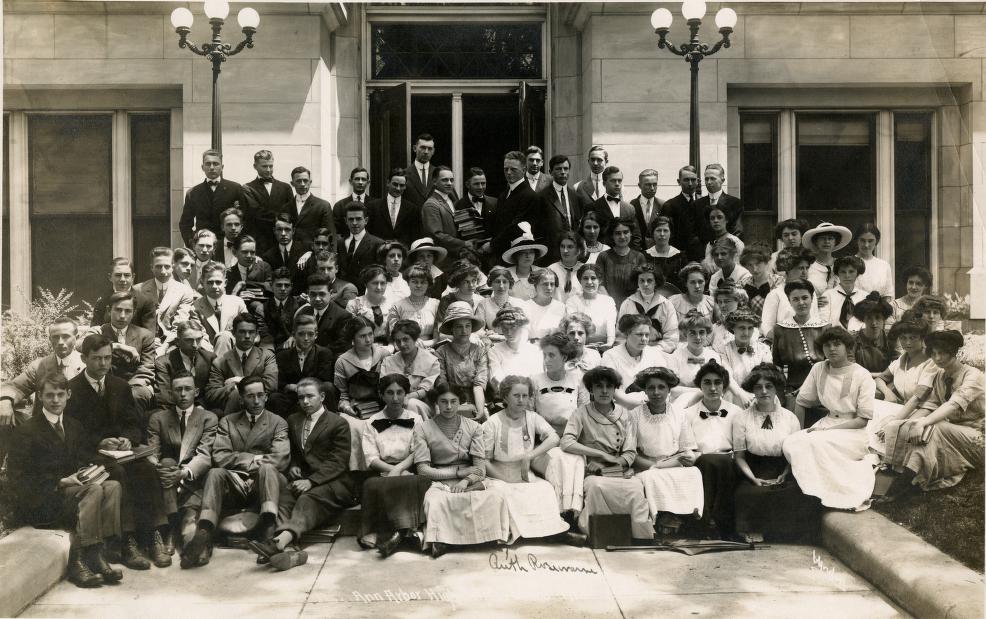
Ann Arbor High School Class of 1912
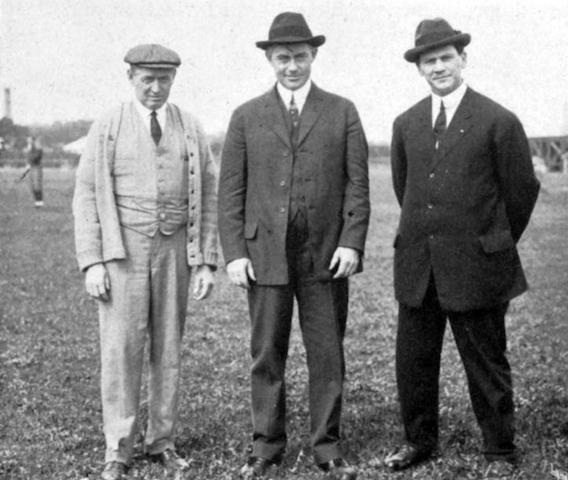
Farrell, Yost, and Assistant Schulte in 1912
Stephen Farrell was hired by the University of Michigan September, 1912; he served as Athletic Trainer for Yost's Football Teams, 1912-1919, and coached track and initiated both indoor track and cross country programs. Farrell previously was hired by Mike Murphy at Yale as track coach; he also worked at Maine and Ohio State. Farrell was an incredible athlete; he raced in circuses across America in the 1880s and 1890s with several hundred of races against horses, and only lost a half-dozen times. He was the only American to win the Sheffield Cup, and was considered the greatest foot racer in America. During World War I, he became the oldest commissioned flying officer in the air corps at 53. When he came to Ann Arbor, his track teams were among the finest nationally, and won the Wolverines only NCAA Championship in 1923. He brought DeHart Hubbard, Carl Johnson, and Eddie Tolan to Ann Arbor. At one time, Farrell could jump backwards 11 feet, and he could still jump backwards 8 feet at the age of 62.

Michigan Athletic Administration Building was built in 1912 on State Street
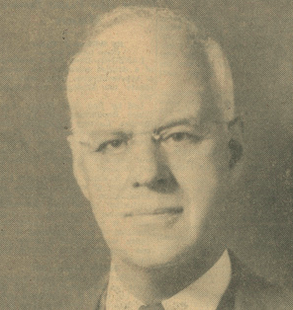
George Moe opened Moe's Sports Shop at 711 North University in 1913; he was an Ann Arbor High School and University of Michigan graduate who worked in the Athletic Department, 1907-1915
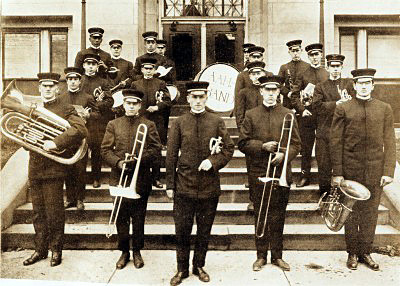
Ann Arbor High School's First Band in 1913
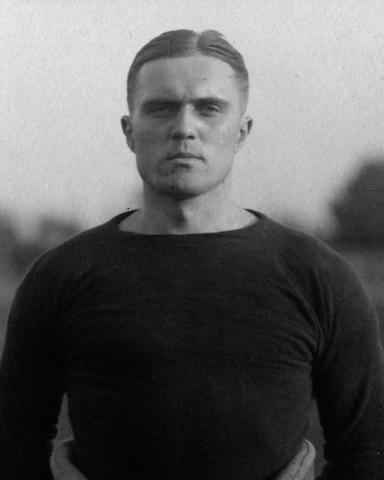
Miller Pontius was an All-American Tackle for the Wolverines, 1911-1913, who also played End; he was also an outstanding First Baseman and Captain for Branch Rickey's baseball squad. He came back to his alma mater to serve as Yost's Assistant Coach in 1916 after coaching at Tennessee. After service in World War I, he became an investment banker.
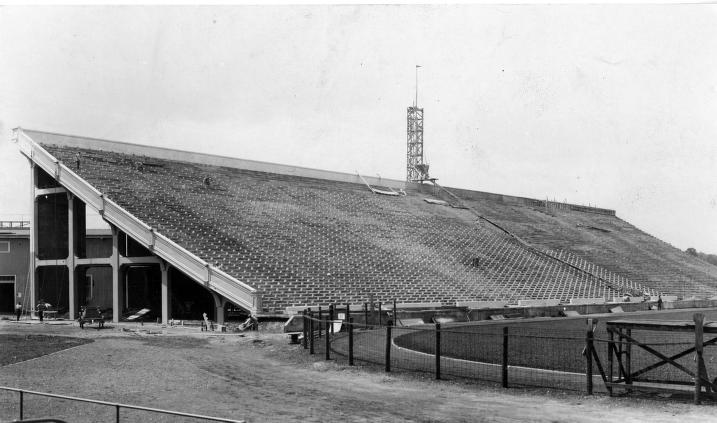
Ferry Field Stands were constructed in 1914 at the South end; it increased the seating capacity to 25,000
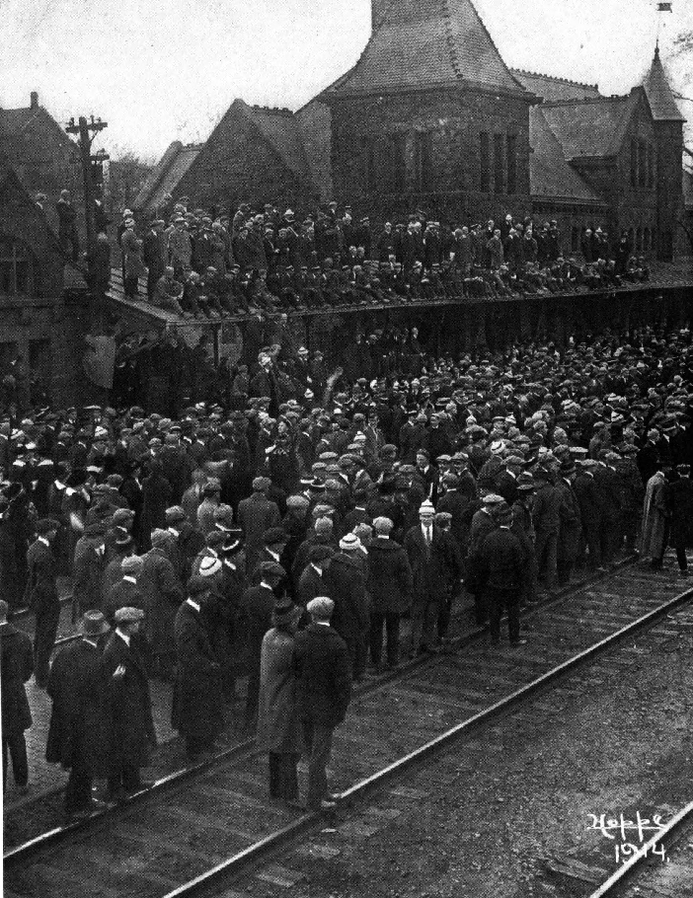
Train sendoff for the Wolverine Football Squad prior to the Harvard game on October 31, 1914; the Crimson Tide prevailed, 0-7
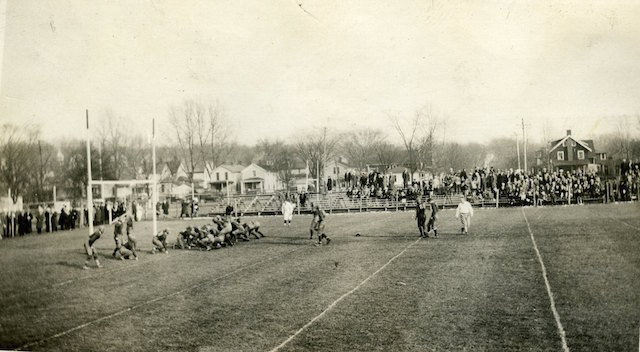
Wines Field opened in 1915 for Ann Arbor High School home football games although some season ending games with "Prison City" (Jackson) were played at Ferry Field
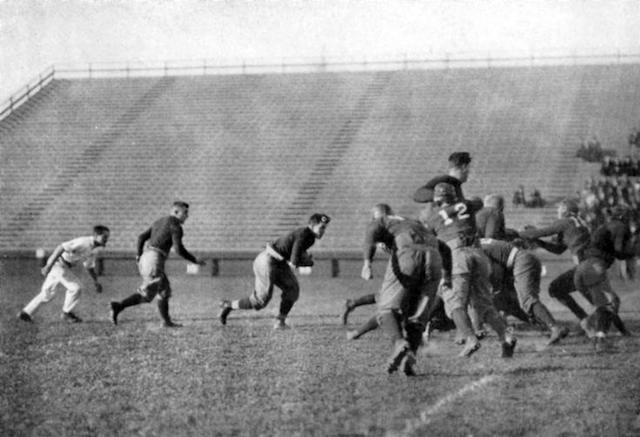
The NCAA recommended that football teams adopt numbers on their jerseys in 1915; Michigan began wearing numbers on the back of their jerseys as shown in this 7-14 loss to Syracuse.

John Maulbetsch graduated from Ann Arbor High School in 1909, and was the first Three-Time All-American at Michigan, 1914-1916; he captained both teams, and was known as "The Human Bullet, The Featherweight Fullback, The Michigan Cannonball, The Human Shrapnel, etc."

Harry Tuthill became Michigan Football Trainer in 1916-1917; Tuthill also trained the Detroit Tigers, 1907-1921
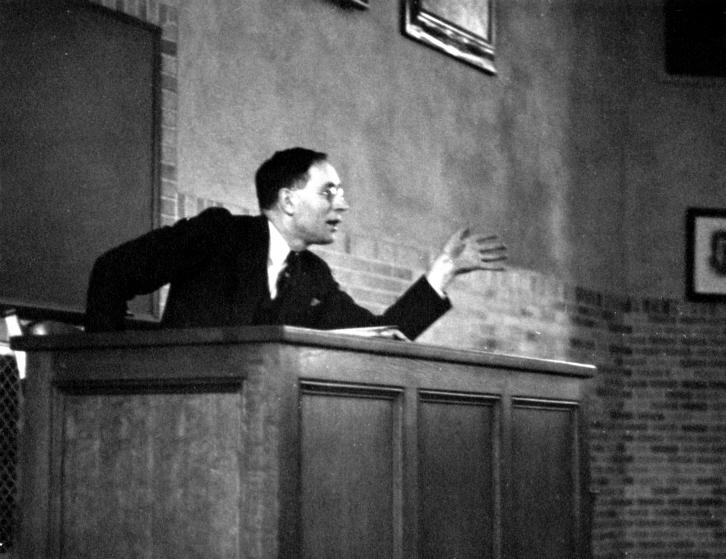
University of Michigan Law Professor, Ralph Aigler, 1910-1954, became the Faculty Representative, 1917-1942; he had a great deal of influence on football, the Western Conference, and the Athletic Department. He led the construction of Yost Field House, Michigan Football Stadium, the Rose Bowl Contract with the Pacific Conference, the hiring of Fritz Crisler, enforcement and interpretation of NCAA Rules including eligibility, etc. He persuaded the NCAA to adopt the sanity or purity code in 1948 outlawing the awarding of scholarships.
Lane Hall opened on March 2, 1917 across the street from Ann Arbor High School at Washington & State St.; former Michigan Fullback, Viggo Nelson, was the Secretary of the YMCA, 1919-1936
Lewis Latavious Forsythe became Ann Arbor High School Principal, 1917-1946; he was one of the founders of the Michigan High School Athletic Association in 1924, and its President, 1924-1941. When the MHSAA first began, they had four sports to manage: football, basketball, track, and baseball. The Michigan State Interscholastic Association was first established in 1895 with 5 schools, and officially adopted in 1898 for the regulation of athletic events. The old Fairgrounds was renamed Burns Park in 1918; however, Tappan School remained there, 1925-1951. Michigan won a National Championship in Football in 1918.
| AAHS Principal | Years |
| Lowder, Tracey | 2014-19 |
| Leaman, Cindy | 2012-14 |
| White, Mike | 2007-12 |
| Caudle, Henry | 2000-07 |
| Galardi, Bob | 1995-2000 |
| Jones, Donald | 1988-95 |
| White, Milo | 1973-88 |
| Schwab, Roland | 1970-73 |
| Rokiki, Ted | 1968-70 |
| Schreiber, Nick | 1946-68 |
| Forsythe, Lewis | 1917-46 |
| Slauson, Herbert | 1916-17 |
| Aiken, W. Merton | 1913-16 |
| Springer, Durand | 1912-13, 1908-09 |
| Smalley, Archibald | 1909-12 |
| Pattengill, Judson | 1876-1908 |
| Demmon, Isaac N. | 1873-76 |
| Winchell, Samuel R. | 1869-73 |
| Pattengill, Albert | 1867-71 |
| Hamilton, Alvah H. | 1866-67 |
| Cornelius, J.H.D. | 1865-66 |
| Everett, Arthur | 1864-65 |
| D'Ooge, Martin | 1862-64 |
| Grant, Claudius B. | 1860-62 |
| Briggs, Daniel B. | 1858-60 |
| Abbott, Theophilus | 1855-58 |
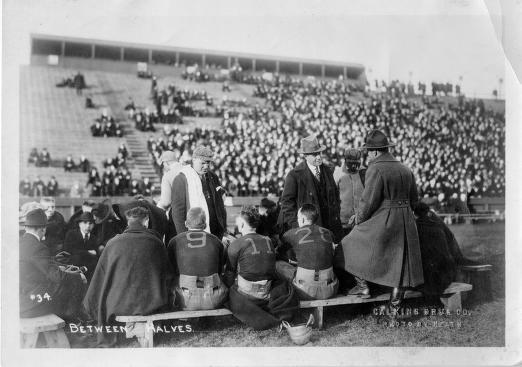
Halftime in the 1918 against MAC with a 21-6 final; Michigan finished 5-0 and shut out 4 of 5 opponents
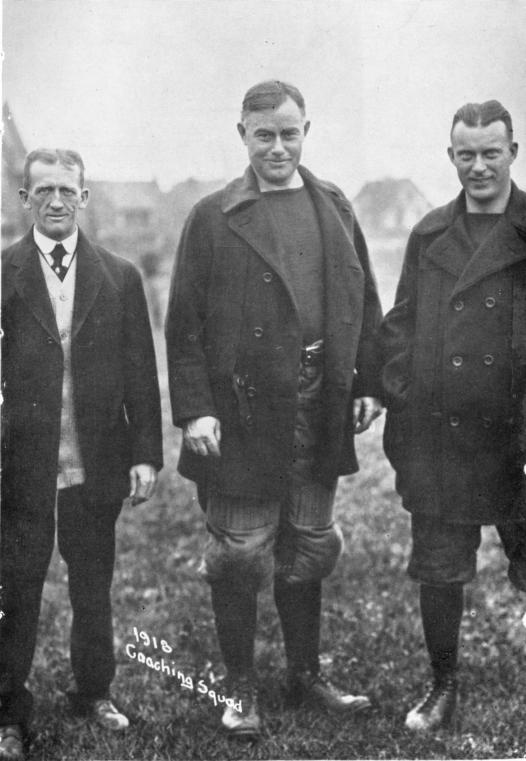
Doc May, Fielding Yost, and Prentiss Douglass in 1918; Douglass coached with Yost for 10 seasons, 1909-1919, after playing halfback for the Wolverines, 1907-1908. George "Doc" May came to Ann Arbor from Yale and served Michigan, 1901-1942, as Head of Physical Education and as a Football Trainer.
Michigan Union opened in 1919 with billiard rooms, and added a swimming pool by 1926, bowling alley, etc. Ann Arbor High School used the YMCA swimming pool on Fourth Street for practices and events.
Notre Dame also claimed their first National Championship in 1919 behind Knute Rockne; however, it was a former Wolverine star, Frank Longman, who helped the Fighting Irish defeat Michigan for the first time in 1909 after losing the first eight games including six by shutout.
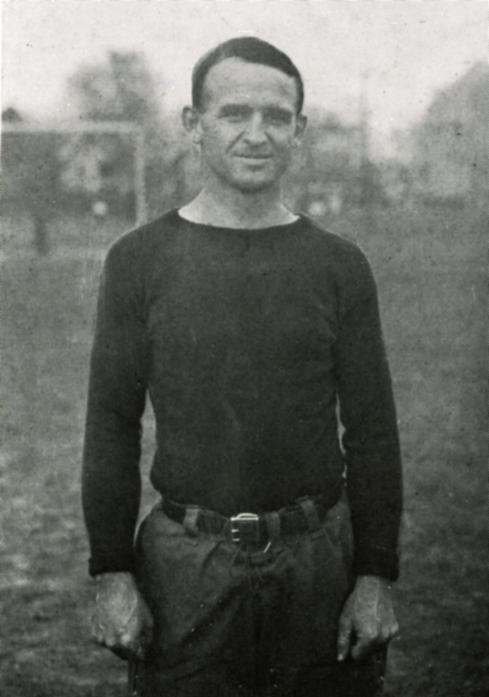
Archie Hahn became Michigan Football Trainer in 1920-1922; he was a varsity track athlete for the Wolverines, 1904-1906, and won 4 gold medals in the 1906 Olympics. He later coached at Virginia, 1929-1950.
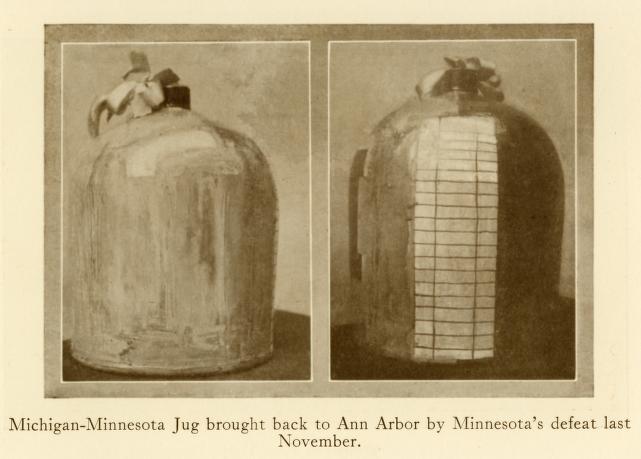
Brown Jug in 1920 after edging the Gophers 3-0 at Minneapolis
Lawler fought in World War I, and lost his son, Phil, in World War II
Donald Duncan Lawler coached Ann Arbor High School Football, 1919-1922, with a solid 23-5-3 record with former standout, Ed Shadford, as his assistant. Shadford later left to become the Ypsilanti Braves Head Football Coach; Shadford Field was named in his honor. Lloyd Olds, a 1916 graduate of Michigan Normal College, became Athletic Director briefly in 1919, but left in 1921 as his alma mater offered him a teaching position where he remained until 1963. Olds was also their track coach, 1921-1941; he hired George W. Marshall as an Assistant Coach, and Marshall replaced him, 1941-1967.

Native American Jim Thorpe was an outstanding athlete in football, baseball, lacrosse, basketball, and track; however, few know he was also an outstanding ballroom dancer
The American Professional Football Association was formed in 1920 with Olympic Gold Medalist Jim Thorpe as its President; the Detroit Heralds, an independent since 1905, became one of its original 14 members that increased to 22 members in 1921. They became the Tigers in 1921, the Panthers in 1926, and the Wolverines in 1928. They played their games at Navin Field, and had a Thanksgiving Day game as far back as 1917. Michigan Quarterback Benny Friedman played for the Wolverines in 1928. The Portsmouth Spartans became the Detroit Lions in 1934; George "Potsy" Clark was their Head Coach, and he played for Robert Zuppke at Illinois, 1914-15, and also coached at MAC.
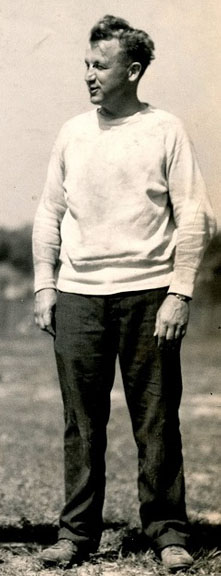
George "Potsy" Clark
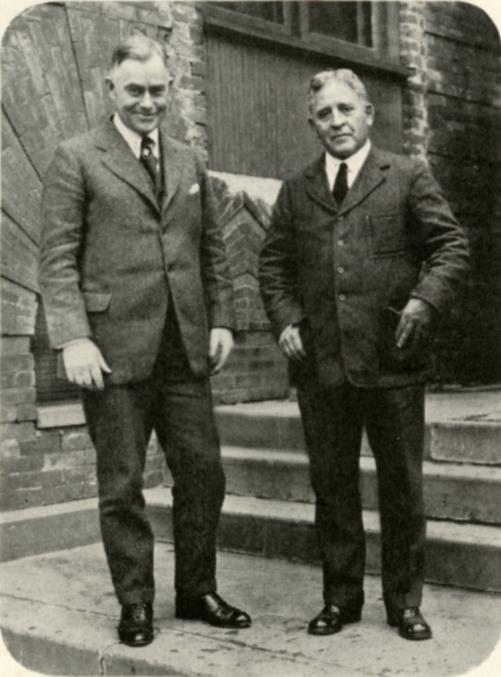
Yost and Stagg in 1921
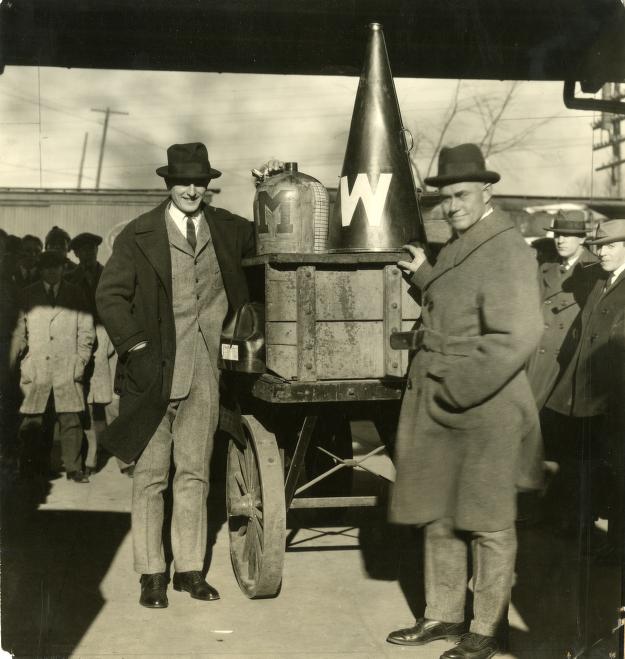
Brown Jug carefully guarded by Yost at the train station in 1922
Fielding Yost had his only losing season in 1919; it was his 19th season at Michigan, and the only season that he did not have a recognized All-American. Fielding Yost became Athletic Director in 1921; Michigan added new varsity sports: wrestling, hockey, swimming, and golf; John Jerome, Richard Barker, Joe Barss, and Carlton Wells were hired by Yost to coach those sports. Matt Mann was hired as a swimming assistant in 1923, and promoted to Head Coach in 1925. Cliff Keen replaced Barker in 1925. John Griffith, former Football Coach at Drake and Morningside in Iowa, became the Western Conference's First Commissioner in 1922. Michigan won its first NCAA Track & Field Championship in 1923 behind Coach Steve Farrell; he was hired in 1912 as football trainer, became track coach in 1913, and also started an indoor track team in 1917, and a cross country program in 1919.
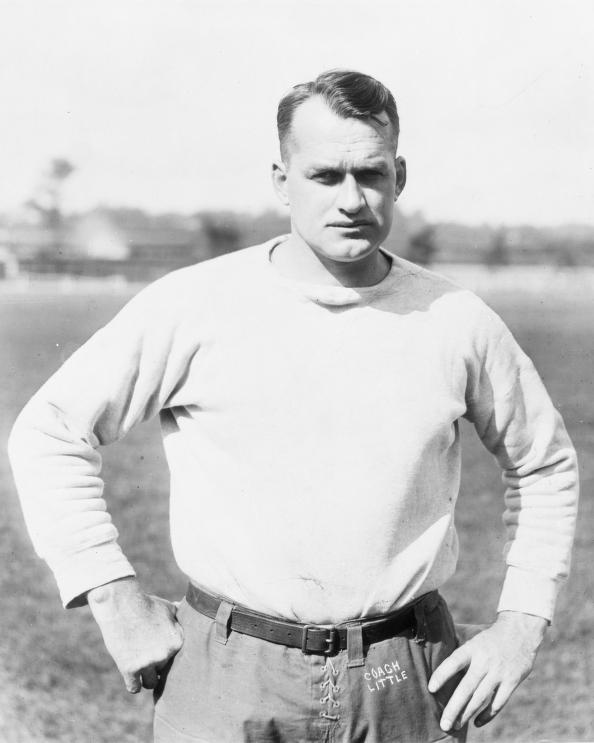
George Little played Guard at Ohio Wesleyan, 1909-1911, and was an Assistant Coach at Ohio State, Cincinnati and Miami-Oho before he came to Michigan to be Yost's Assistant Athletic Director and Football Coach in 1922 and 1923; he was promoted to Head Football Coach in 1924, but left for to be Athletic Director at Wisconsin, 1925-1932, then Rutgers, 1932-1953.
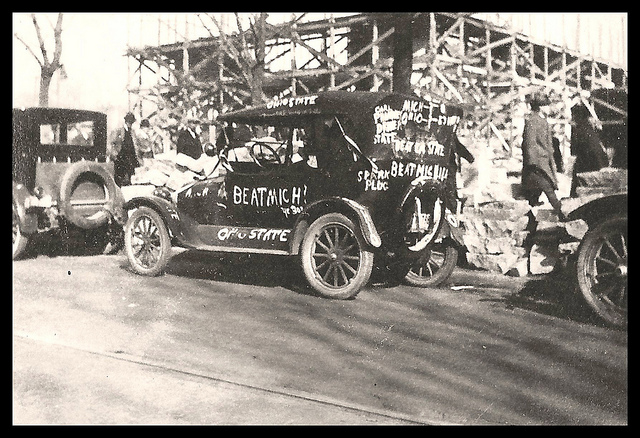
Ohio State fan automobile on State Street October 20, 1923
After Ohio State defeated Michigan three seasons in a row, 1919-1921, by the scores of 13-3, 14-7, and 14-0 in the 1921 Homecoming game; the seating capacity was increased at Ferry Field to 40,000 in 1921 with a standing room only crowd of 42,000. The Wolverines responded by ruining the Buckeyes Dedication Game at Columbus at their new stadium, 19-0, in front of a sellout crowd in 1922 of more than 72,000. In the 1923, there was a sellout crown at Ferry Field to watch Michigan shut out Ohio State again, 23-0. Michigan also won the next four games, 16-6, 10-0, 17-16, and 21-0 in the first sellout at Michigan Stadium. The Rivalry was on, and each stadium has been packed nearly every year since; Michigan's chief rival, Minnesota, that was the final game of the season for the Brown Jug through 1919-1932 (also in 1909) took a "back seat" to the Wolverine-Buckeye Rivalry as it became the final game in 1935 (Ohio State also closed out the 1918 season). The rivalry became more than just a football field rivalry, but a rivalry for the most fans observing the event itself at each new stadium.
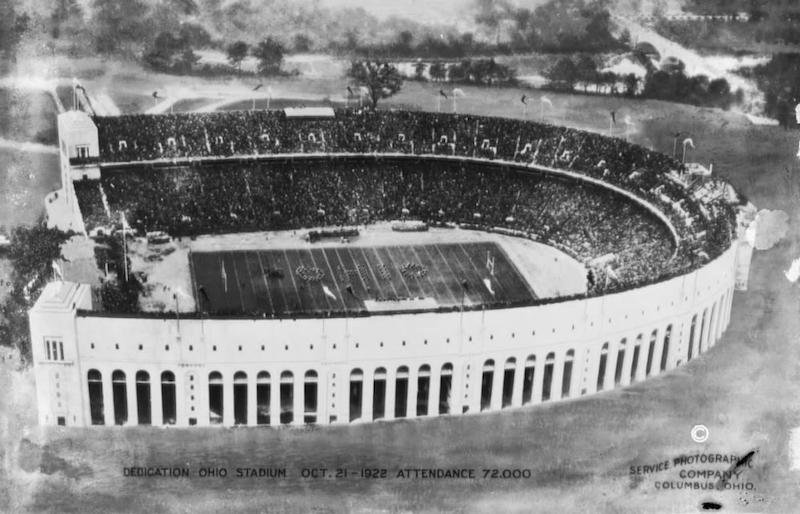
Michigan 19 Ohio State 0 at the Horseshoe Dedication game October 21, 1922 before 72,000 fans
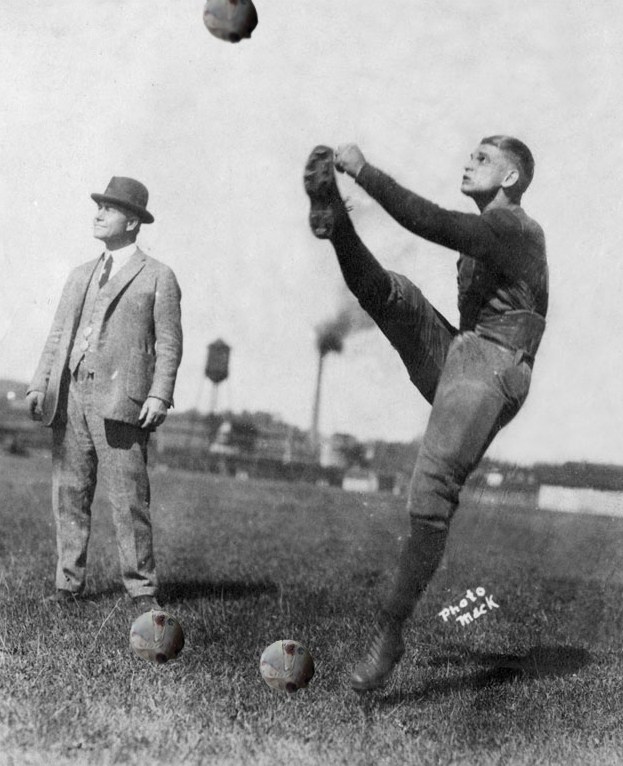
Harry Kipke was one of the greatest athletes in Michigan Athletic History; he was considered the greatest punter in Wolverine Football History. From 1921-1923, Michigan was 19-1-2 in the Kipke era; he was the Captain of the undefeated 1923 squad that won the National Title. If the Heisman was awarded in 1923, he most likely would have won it. He earned 9 varsity letters in football, basketball, and baseball. He was the first Michigan football player to become a Regent at the University of Michigan, 1940-1947; he later became President of Coca-Cola.
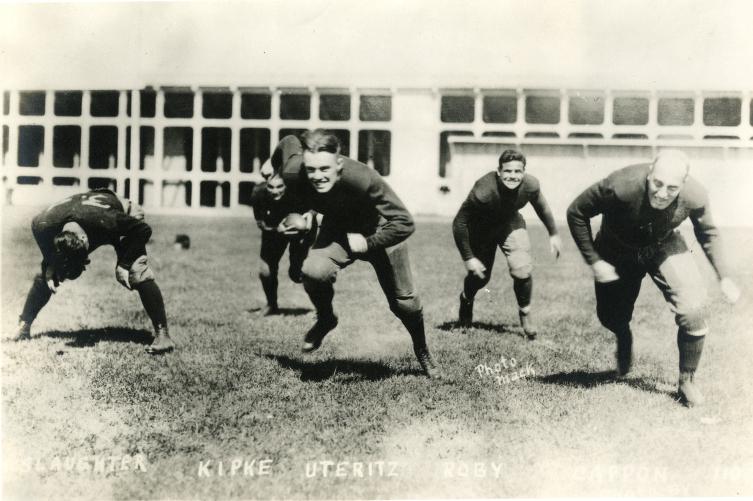
Edliff Slaughter, Harry Kipke, Irwin Uteritz, Doug Roby and Frank Cappon in 1922; Yost called Uteritz the "best field general he ever had." Slaughter was an All-American Guard in 1923-1924. Roby went on to become an International Olympic Committee Member, 1952-1984, and President of the U.S. Olympic Committee, 1965-1968. Cappon was an Assistant Football Coach and Head Basketball Coach at Michigan; he then became Princeton's basketball coach, 1931-1961. Slaughter coached line at Wisconsin, North Carolina State and Virginia plus coached golf, 1925-1958.
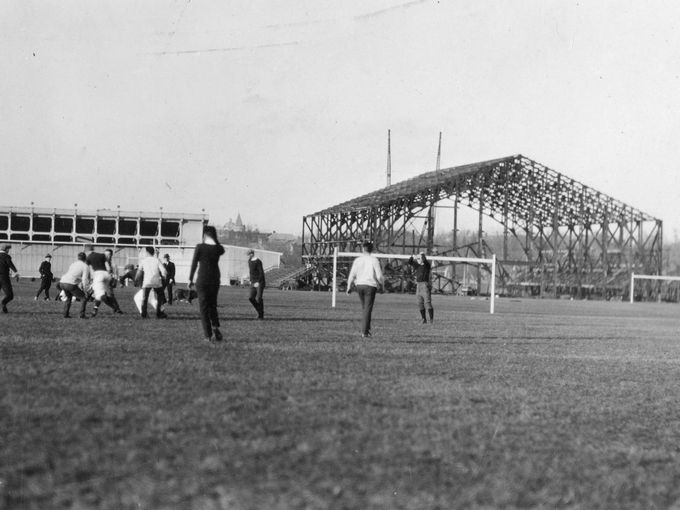
Ferry Field in 1922
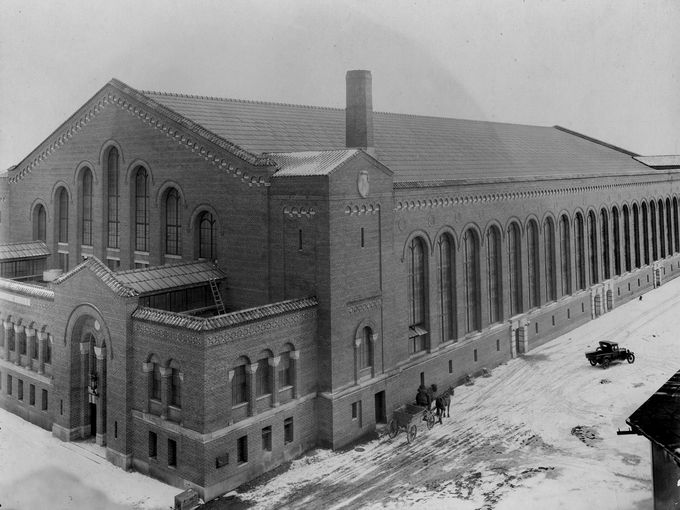
Yost Field House was completed and dedicated on November 10, 1923; it cost $555,134 to complete, and was used for basketball, track, football, baseball, wrestling and boxing events with seating for 7,500. One of the first big events at Yost took place on March 5, 1927 when Illinois defeated Michigan, 12-9, in a wrestling dual meet with over 5,000 spectators attending. Yost also wanted to build a new football stadium as he had 3 sellout crowds of 42,000 in 1922 for Illinois, MAC, adnd Wisconsin followed by another three sellout crowds in 1923 with Ohio State, the Quantico Marines, and Minnesoa. In 1924, Ferry Field sold out for the Wisconsin and Iowa games with standing room of 50,000 while other stadiums in the conference could hold 70,000 fans with Ohio Stadium and Memorial Stadium at Champaign. Yost and Bernard Green, an 1891 University of Michigan Engineering graduate, began reviewing stadium designs in 1924; Green and Osborn Engineering designed Yankee Stadium in 1923, Navin Field in Detroit, Comiskey Park in Chicago, and Fenway Park in Boston. Yost finally got the approval January, 1926 after Business School Dean Edmund Day presented a plan to the Regents, and excavation began August, 1926 after Business Manager Henry Tillotson purchased the Miller Farm with 16 acres and 119 city lots for $239,000. It was built and ready for opening on October 1, 1927.
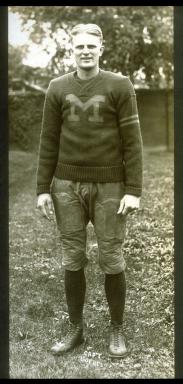
Paul Goebel was the first End at Michigan to wear the #1 jersey; he played for the Wolverines, 1920-1922, and earned All-American honors as earned the leadership of Captain. He later earned All-Pro honors while playing professionally, 1923-1926. He opened a sporting good store in Grand Rapids, and officiated football for 16 seasons. Later, following service in World War II, Goebel was elected Mayor of Grand Rapids, 1950-1958, and University of Michigan Board of Regents, 1962-1970; he became the second former Michigan Football player to be elected Regent after Harry Kipke, 1940-1947.

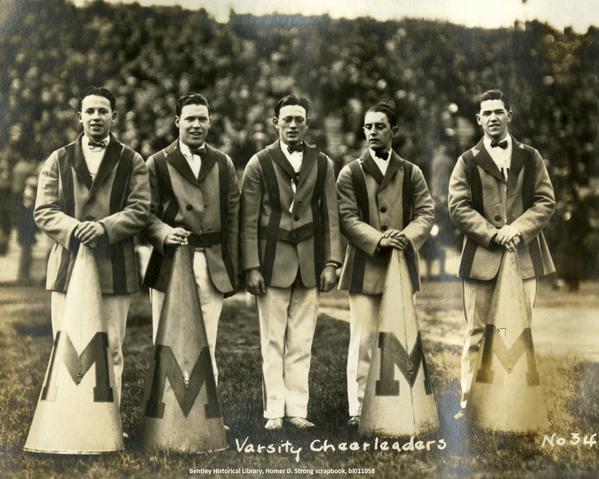
Michigan 1923 Cheerleading Team
Lou Hollway was hired in 1922; Ann Arbor High School won a state title in 1923. Hollway also coached basketball, 1922-1930, and initiated a golf team in 1930. Hollway went to high school in Grand Rapids, and graduated from Michigan Normal College in 1919, and coached at Adrian prior to coming to Ann Arbor. Hollway was the longest tenured football coach at Ann Arbor High School; his record was 88-49-12; he only had one assistant coach, Dobie Drake.
Henry "Hank" Hatch, protector of the Brown Jug, in 1932; he had many duties as equipment manager since taking over the position in 1919 at the age of 19
Hank Hatch began at Michigan as the Equipment Manager in 1919; he would remain through 1964 residing in a house inside the gates of Michigan Football Stadium.
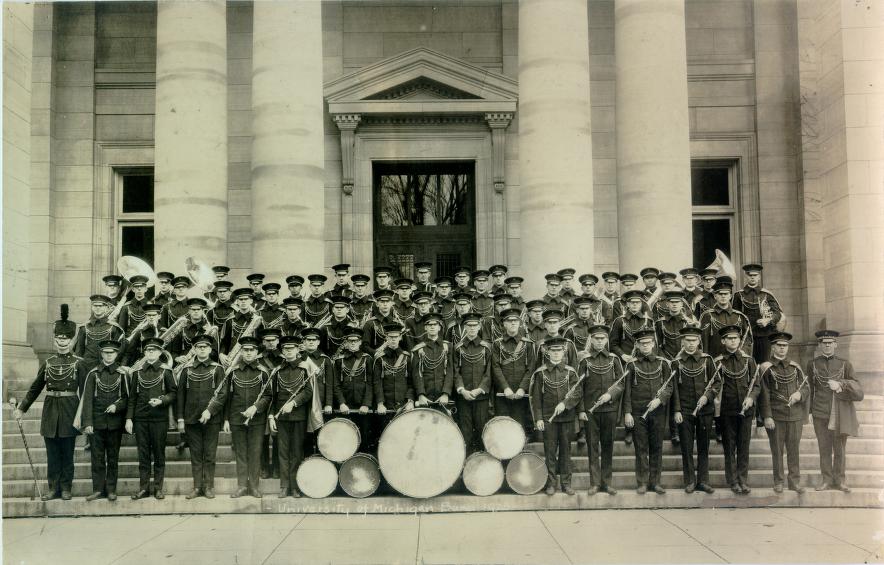
University of Michigan Marching Band in 1923; the Block M began to be worn on player uniforms with the 1897 squad, and fans began to raise Maize and Blue flags in 1907 at Ferry Field
Yost avenged a previous defeat to Howard Jones on November 3, 1923 at Iowa City, 9-3, as the Wolverines defeated the Hawkeyes; Iowa was undefeated in 1921 and 1922 under Jones, and conference champions both seasons. Michigan went on the win the 1923 National Championship after an undefeated season. Jones played at Yale, 1905-1907, and defeated Yost's Wolverines, 28-4, at Syracuse when he coached the Orangemen in 1908. Yost and Jones squads drew, 3-3, in 1910 when Jones coached at Ohio State. Jones coached at Syracuse, Yale, Ohio State, Iowa, Duke, and USC, 1908-1940; he won five Rose Bowls with the Trojans. Yost Field House opened, and was dedicated on November 10, 1923.

Yost Field House dedication on November 10, 1923

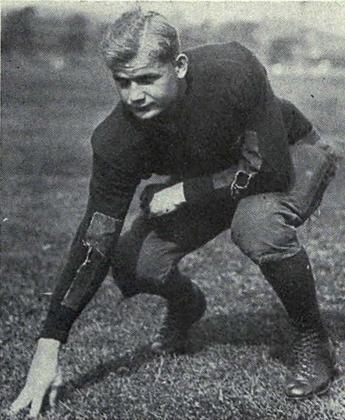
Otto Pommerening played for Ann Arbor High School with Lou Hollway, and became an All-American Tackle at Michigan, 1927-1928
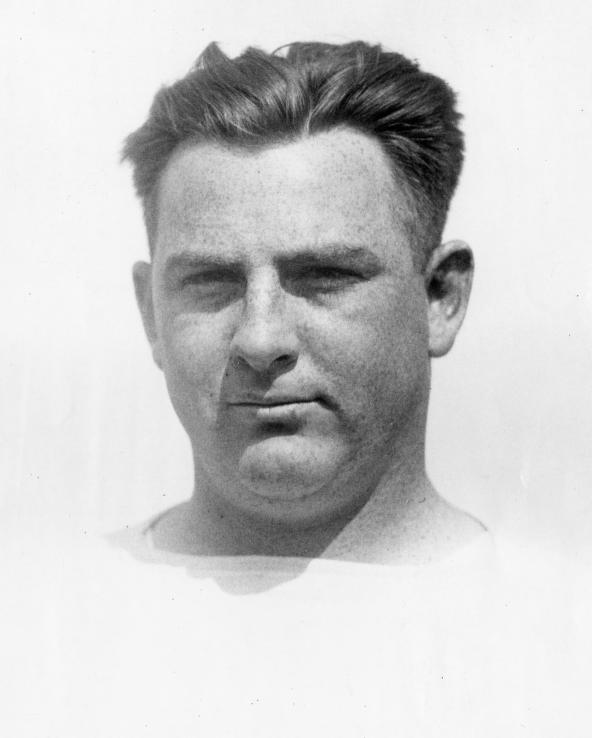
Jack Blott began coaching with Yost in 1924 after giving up a professional baseball career with the Cincinnati Reds as a catcher; he was an All-American Center for the Wolverines, 1921-23. He coached 1924-1933 and 1946-1958 with Kipke, Wieman, Crisler and Oosterbaan. He managed the golf course and ice rink until he passed away in 1964.
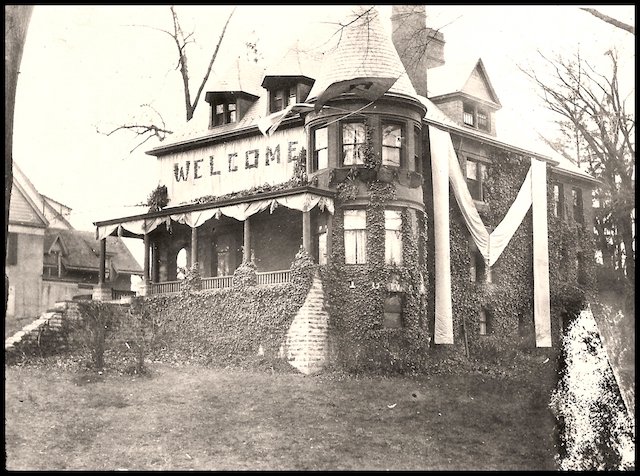
The George W. Bullis home at 1408 Washtenaw was purchased by Sigma Alpha Epsilon after his death in 1905; this pic showed homecoming decorations on the home in 1924 at the corner of South University and Washtenaw
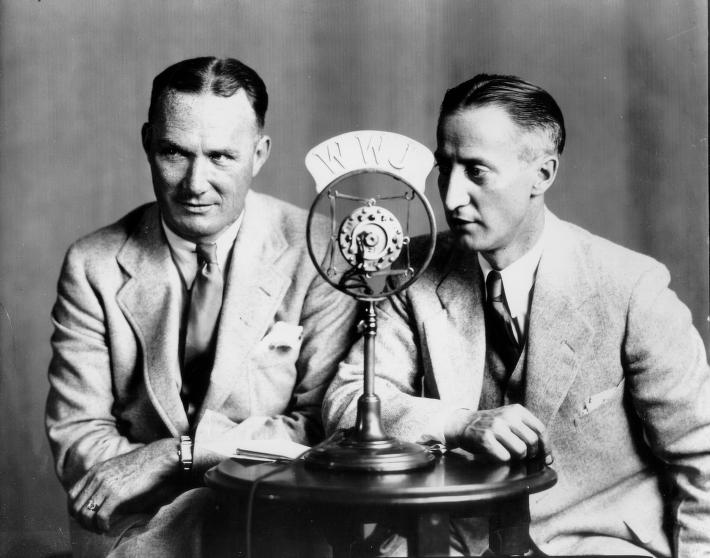
Ty Tyson began broadcasting Michigan Football Games on Radio with Bill "Doc" Holiday on WWJ with the Wisconsin game on October 25, 1924; Tyson was recommended for the job by former Michigan Football player, Fred Waring. Tyson later began broadcasting Detroit Tiger Baseball games on April 20, 1927 until he retired in 1953.
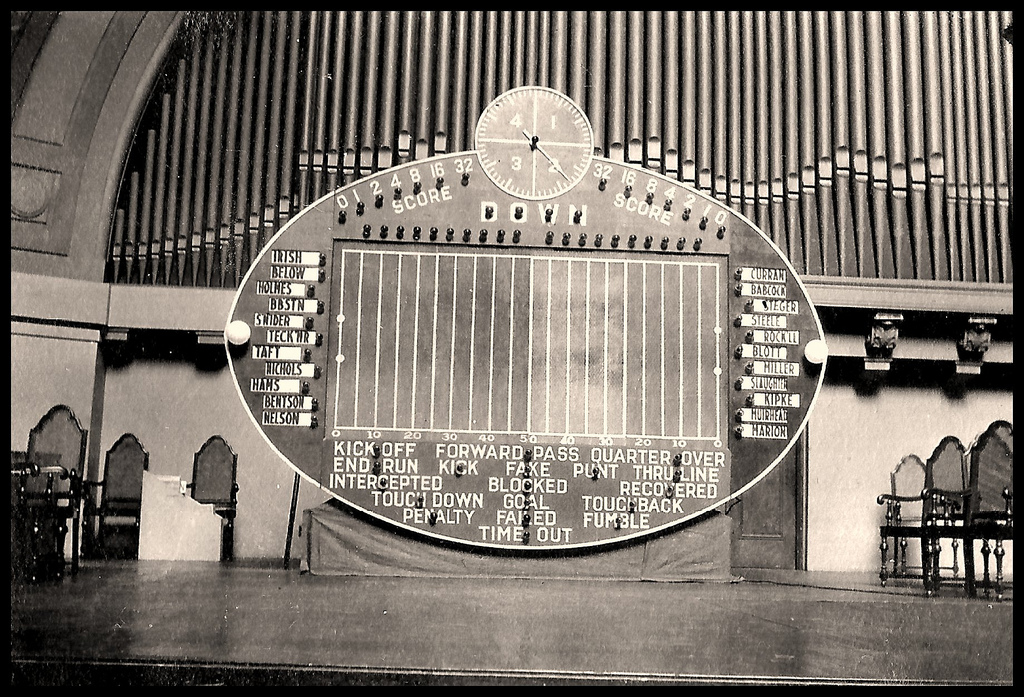
During away games, Michigan students and football fans came to Hill Auditorium for updates with the new Grid Graph
Ann Arbor High School instituted an intramural sports program in 1924 after also implementing an after school sports program for girls in 1922. After football began in 1885, varsity baseball and track was organized by 1902, basketball by 1908, tennis in 1917, cross country in 1919, swimming in 1921, and wrestling in 1935. There was club hockey in 1908, and girl's basketball was organized by 1912. West Park was used until Wines Field was built in 1915.
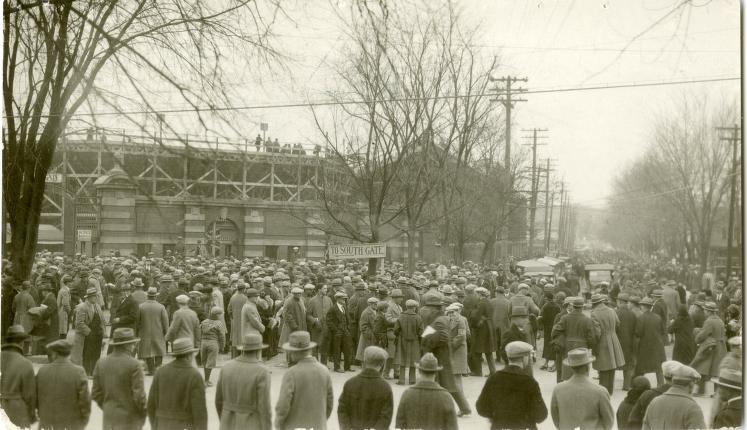
State at Hoover in 1924
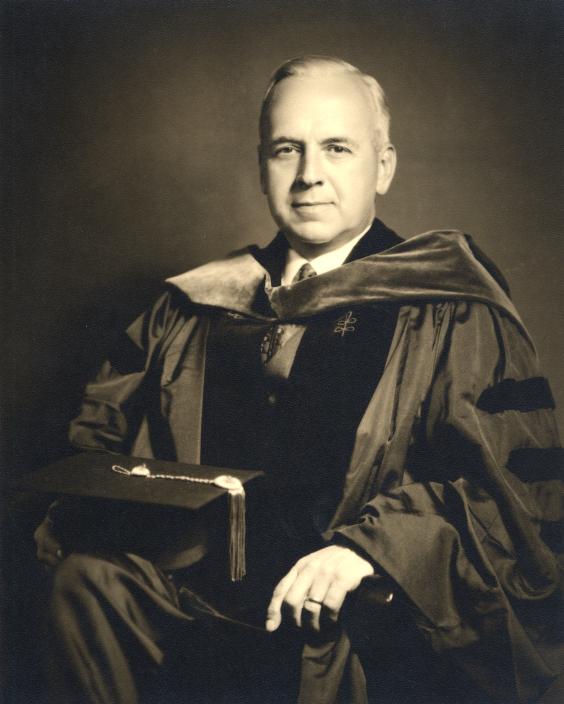
Business Dean Edmund Day presented The Day Report to the Regents on January, 1926 for Michigan Football Stadium approval
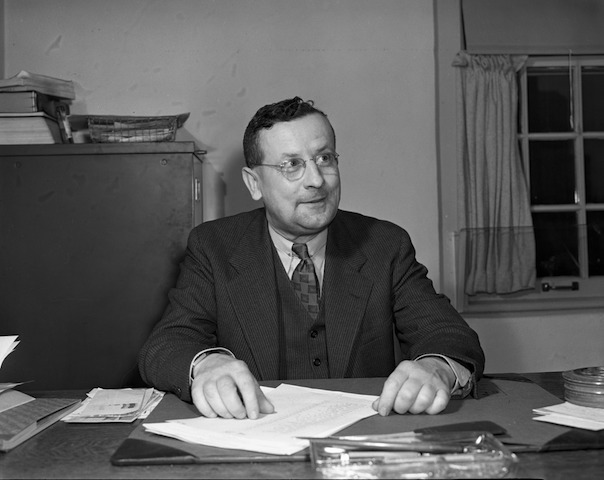
University of Michigan Business Manager Harry Tillotson purchased 16 acres from the Miller Farm for $35,000 plus 119 city lots (Big House Diaspora) to build Michigan Stadium.

John Miller Farm in 1902; he purchased 13 acres in 1893 on Boulevard Drive for $801

Bob Brown, 1925 Michigan Football Captain, with Biff; he was a stuffed, not a live Wolverine. The Detroit Zoo acquired 10 Wolverines in 1927, and two were named,"Biff" and Bennie," came in a cage to Michigan Stadium as mascots
Cliff Keen was hired by Yost in 1925, and became the longest tenured Head Coach in Wolverine Athletic History, 1925-1970. He coached football, 1926-1958, and wrestling, 1925-1970. He is the longest tenured football coach in Michigan history as well with 33 seasons. Keen was brought to Ann Arbor by former Ann Arbor High School and University of Michigan Football Captain and All-American, John Maulbetsch, who coached Keen at Oklahoma A&M, 1921-23; he was a Center and Linebacker on the football squad, and undefeated wrestler at 158 lbs. under Coach Ed Gallagher. Maulbetsch recommended Keen to Yost in 1925; Keen helped Michigan Football on the line especially with hand fighting and conditioning, and Yost required every football player to try out for wrestling. Keen recruited plenty of football players to become varsity wrestlers, 1925-1970.
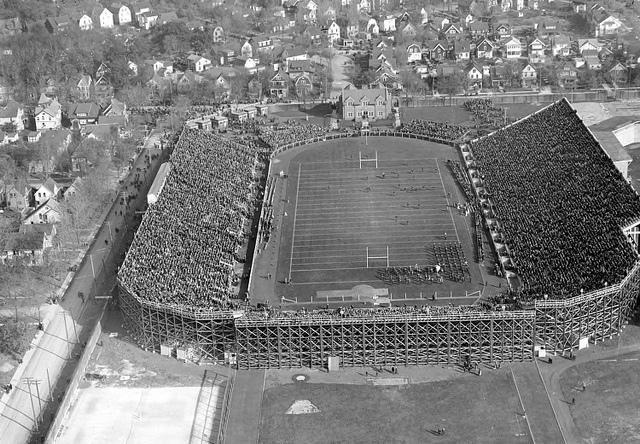
Ferry Field in 1926; the last game was played on November 6, 1926 with a 37-0 thrashing of Wisconsin in front of over 48,000 fans. The Wolverines were undefeated in their last season at Ferry Field, and didn't allow a touchdown. Michigan's record was 88-14-2 at Ferry Field.
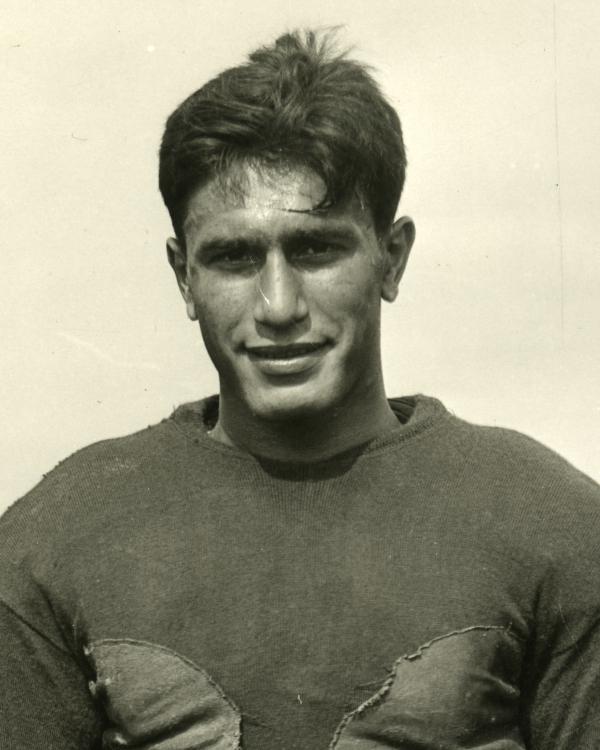
Benny Friedman was one of the Greatest Quarterbacks in Michigan Football History, and the Wolverines were 20-4, 1924-1926 with Friedman starting 15 times at quarterback; he was a consensus First Team All-American in 1925 and 1926, and played 8 seasons professionally leading professional football in passing, 1927-1930. He became Head Coach of the New York Giants in 1930. After he was hired as Head Coach and Athletic Director at the City College of New York in 1934, many wanted Friedman to return to the Wolverines in 1938 as their Head Coach to replace Harry Kipke; instead, he continued at CCNY through 1941, served in World War II, operated a Jeep dealership in Detroit, and finished his career at Brandeis, 1950-1959.
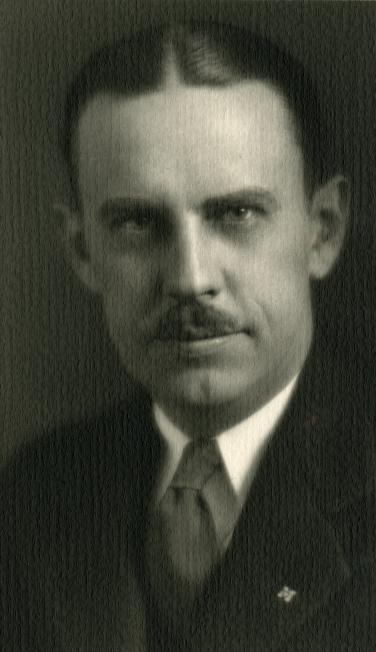
Phil Pack was hired by Yost to sell 3,000 bonds for $500 each for the building of Michigan Football Stadium; it gave the bondholder the rights for season tickets, 1927-1936. The marketing effort by Pack on radio helped the project be completed, 1926-27; later, he became one of the first athletic publicity directors to publish media guides for the varsity sports in the late 1930s. Phil was the son of Colonel Ambrose Clarkson Pack, former Washtenaw County Sheriff, 1919-1923, and Ann Arbor Postmaster, 1923-1936; he was also an Ann Arbor High School graduate.
Michigan Stadium was built in 1927; the land was purchased for $240,000 in 1925 that was once the Miller Farm. The final cost to build the stadium was $950,000 with a seating capacity of 72,000. Wooden bleachers were added to increase the capacity to 84,401, and it was increased inn 1928 to 84,401. The first player to catch a touchdown pass there was Ann Arbor High School graduate, Kip Taylor
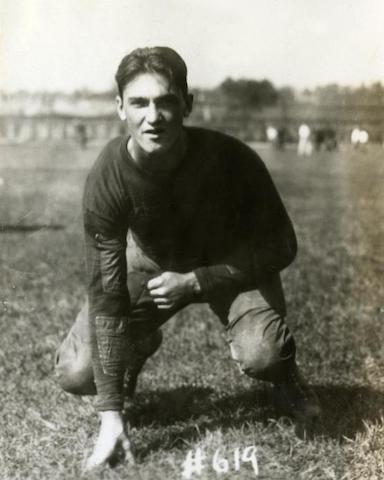
Kip Taylor in 1925
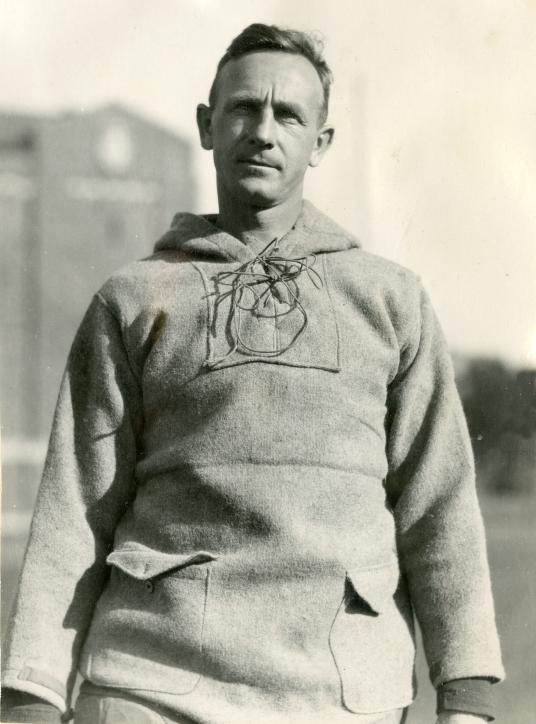
Ray Fisher coached football for the Wolverines for 24 seasons, 1921-1945; he coached baseball for 38 seasons, 1921-1958, with a record of 636-295-8, and won 60% of his games in 32 of 38 seasons. He was the winningest coach in Wolverine history until 2000 when Carol Hutchins broke his record.
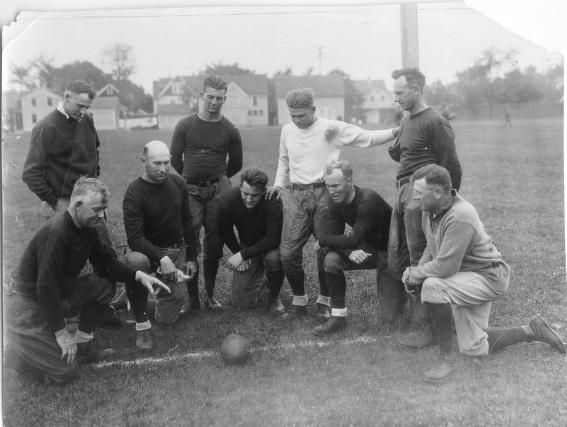
Yost's coaching staff in 1926 included Trainer Charles Hoyt, Elton "Tad" Wieman, Cliff Keen, Jack Blott, Harry Kipke, George Veenker, Ray Fisher, and Edwin Mather. Hoyt was hired as the football trainer in 1923; he was Steve Farrell's Assistant Track Coach until 1930 when he became Head Track Coach, and the Wolverines won 14 of 20 indoor and outdoor track titles, 1930-1939 with 63 individual Big Ten Championships and 5 Individual National Championships. Veenker was an Assistant Coach, 1926-1930, and Head Basketball Coach, 1928-1931, before becoming Iowa State's Football Coach and Athletic Director, 1931-1945. Edwin Mather coached football and basketball for the Wolverines, 1919-1928, until he passed away due to cancer at the age of 41. By the mid-1920s, Football Coaching Staffs expanded so their were line coaches, end coaches, backfield coaches, freshman coaches, and "B" Team or Scout Team Coaches.
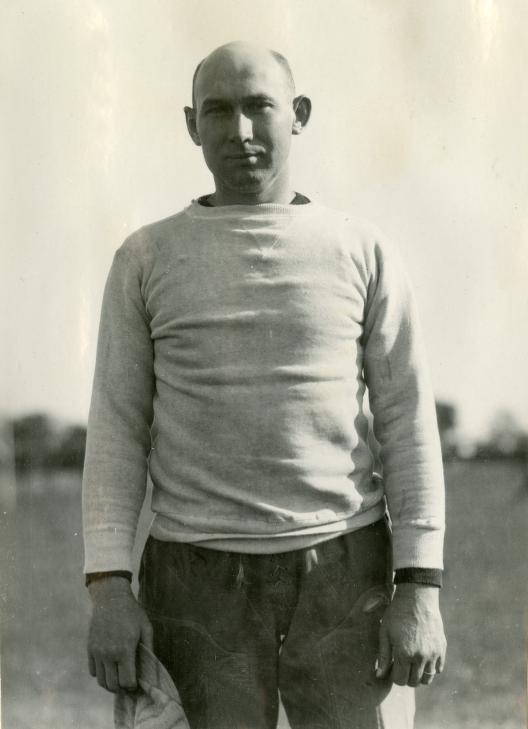
Elton "Tad" Wieman played tackle and fullback at Michigan, 1915-1920, and was Captain of the 1918 National Championship Team although he served at that time during World War II. He became Yost's Assistant Coach, 1921-1926, and was elevated to Head Coach, 1927-1928. He left Michigan to become an Assistan Coach for Fritz Crisler at Minnesota and Princeton, 1930-1937, and then was promoted to Head Coach of the Tigers, 1938-1942. Wieman was later Athletic Director at Maine and Denver, 1946-1962; he was elected President of the American Football Coaches Association in 1946, and inducted into the College Football Hall of Fame in 1956.
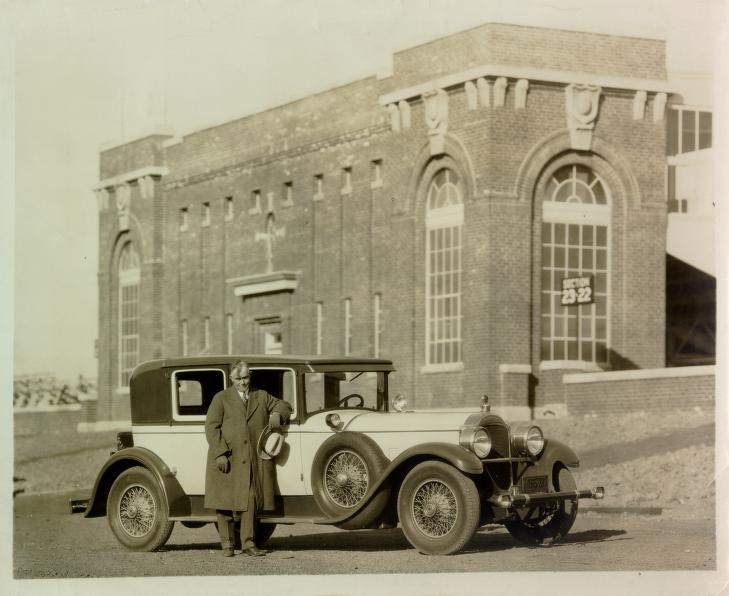
Yost loved his Packard that the Alumni Association purchased for him in 1927; Cliff Keen chauffered Yost around town on many occassions.
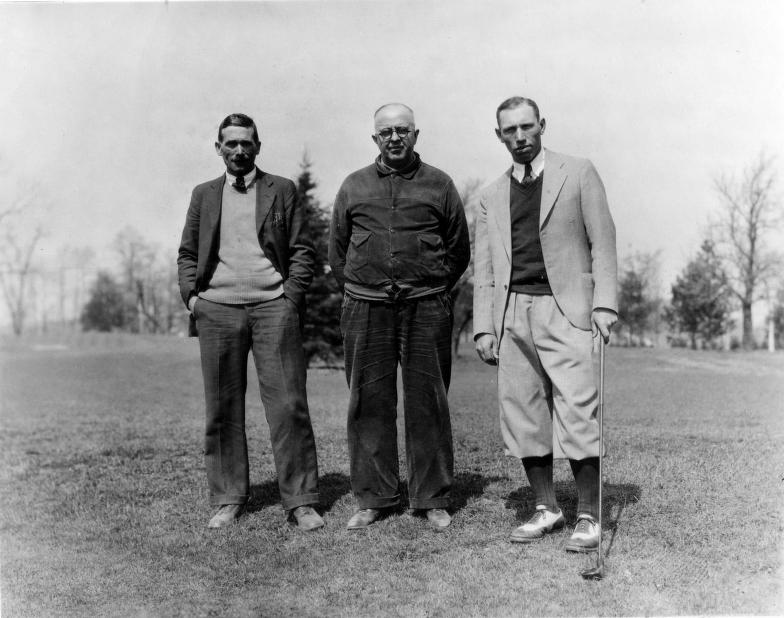
Ray Courtright with Greenskeeper William Slack and Groundskeeper Tommy Thomas in 1931; Courtright was hired by Yost in 1927 to be Michigan's Head Golf Coach, and Assisted with Football and Basketball. He was a football assistant coach for 17 seasons, 1927-1943. Courtright was so knowledgeable about athletics that he coached wrestling, tennis and baseball as well when Yost needed him to. He earned varsity letters football, basketball, track, and baseball at Oklahoma, 1911-1914; he was an outstanding halfback and kick returner in football, and pitcher in baseball. His Wolverine Golf Squads won 8 Conference Championships, 1932-1944, and NCAA Championships in 1934 and 1935. Golf was initiated at the Ann Arbor Golf & Outing in 1893-1896 by University of Michigan English, Canadian, and Scottish Professors Mark Wenley, Arthur Cushny, James Craig, and James McMurrich. The University of Michigan Golf Club was created in 1897. Washtenaw Country Club was the county's first golf course founded at Ypsilanti in 1899. Ann Arbor Golf & Outing held their first meeting in 1899, and purchased 40 acres from A.E. Roberts with 316 members; it was incorporated on March 30, 1903. Speech Professor Thomas Trueblood organized a club golf team at Michigan in 1901 while his son, Byram, was a student. Barton Hills Country Club was built in 1917, and they added a golf course designed by Donald Ross in 1922. The University of Michigan elevated golf to varsity status in 1921 for the 1922 season; Carlton Wells, a 1920 University of Michigan graduate, was chose by Yost as the first varsity golf coach while he completed his Master's Degree in English. Wells was the Michigan State Amateur Golf Champion, 1922, 1924, and 1925; he taught English at the University of Michigan, 1921-1968. Michigan All-American Football Fullback, Frank Steketee, 1918-1921, was one of the first golf lettermen. Trueblood persuaded Faculty Representative, Ralph Aigler, to give him the title, "Coach Emeritus." M.J. Holdsworth was Michigan's First Conference Champion in 1924. Yost contracted Alister McKenzie to build the University of Michigan Golf Course which opened in 1930, and was completed in 1931 across from the Michigan Football Stadium which was built, 1926-1927. There were three golf courses across from Michigan Stadium with Stadium Hills as well; the Ann Arbor Municipal Golf Course was added in the 1930s. Trueblood was 71 years old when Courtright was hired in 1927 to lead the golf team. Trueblood knew little about the mechanics of golf, and it was Courtright who built the program into the best in the conference and one of the best nationally while coaching 6 sports at Michigan, 1927-1944, including football, baseball, basketball, wrestling, golf and tennis. Trueblood was given credit for many of these championships due to poor sports information reporting, and a lack of research by the University of Michigan Staff.
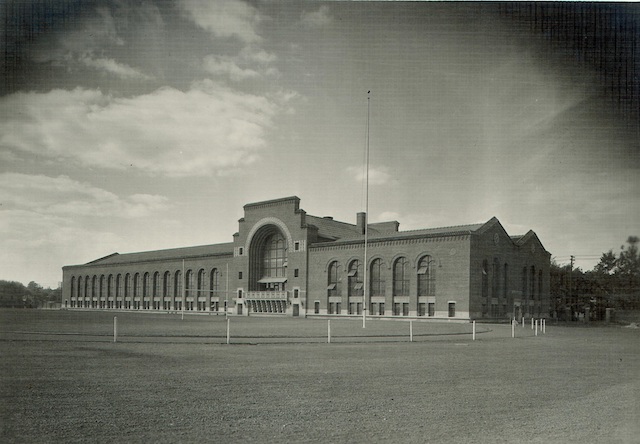
Michigan Intramural Building opened in 1928 with a varsity swimming pool, raquetball and squash courts, a basketball floor, etc.; it was the first Intramural Athletic Building in America. Yost's vision was "Athletics for All," and it was implemented with both the IM Building and the Women's Athletic Building also completed in 1928 for $154,000 on Palmer Field that was donated from Thomas Witherel Palmer in 1908.
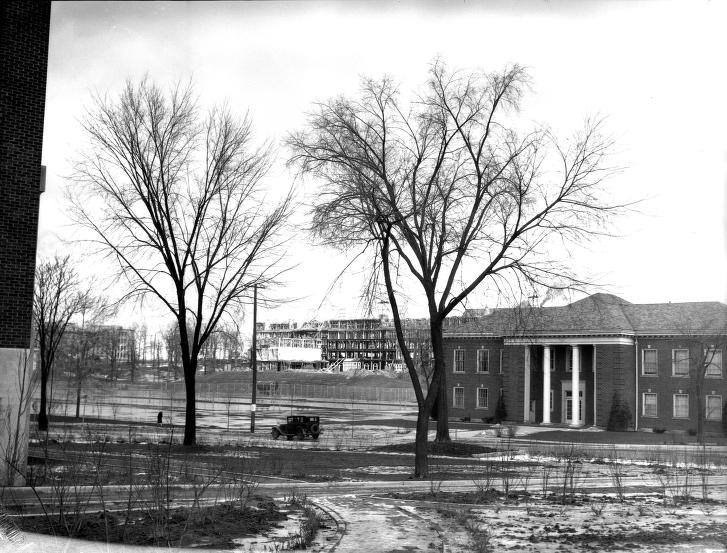

Frank "Cappy" Cappon played football and basketball at Michigan, 1920-1922; he was Yost's Assistant Athletic Director, Football Assistant, and Basketball Coach, 1928-1937, after initially working as a football assistant in 1925. He later became Princeton's Basketball Coach, 1938-1961, and invented the 5-man weave.
Ann Arbor High School adopted a cheerleading squad in 1929
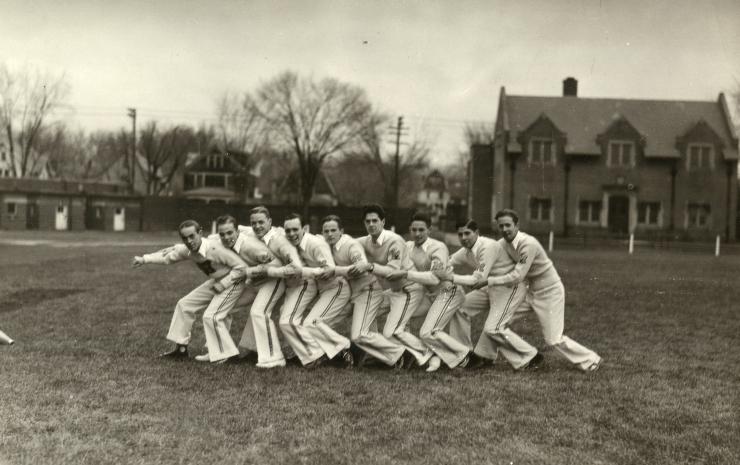
University of Michigan Cheerleaders in 1930
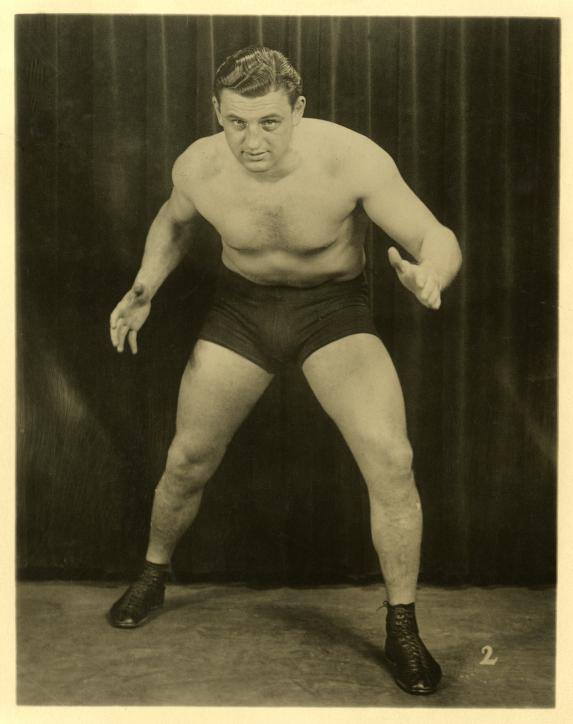
Ed Don George became the Heavyweight World Champion in wrestling on November 30, 1930, and held the title through 1935; he played on the 1927 Wolverine Football squad, and Cliff Keen helped him become a 1928 Olympian in wrestling. Keen's squads won the Conference Championship 4 years in a row, 1927-1930; he placed two members on the 1928 U.S. Olympic Team, and his Wolverine teams were NCAA Runners-Up in 1928 and 1929.
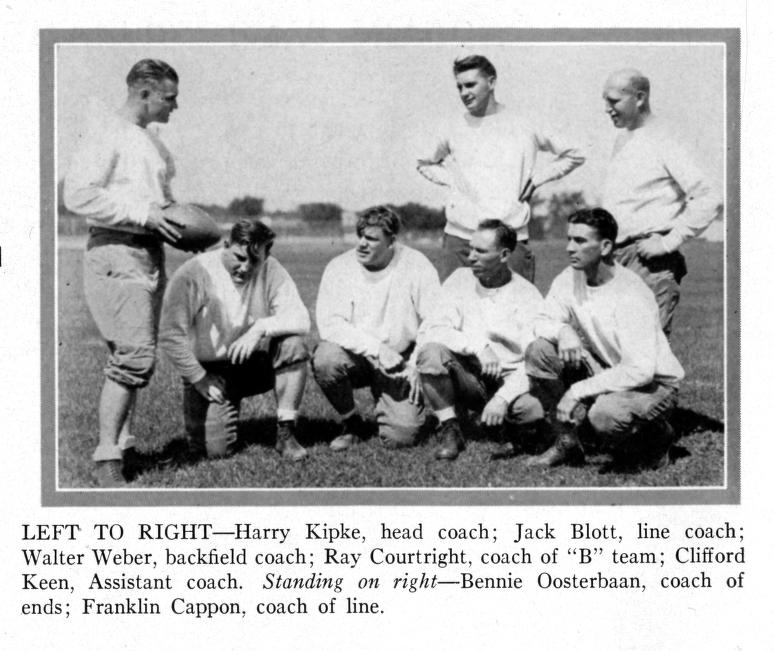
Michigan hired former All-American Halfback, Harry Kipke, as Head Football Coach in 1929 after he was Head Football Coach for Michigan State in 1928; the Wolverines won four Western Conference Championships in a row, but attendance throught the decade was scarce due to the Great Depression, strikes and work stoppages across America. The lowest attendance ever at Michigan Stadium was on November 28, 1931 with only 9,190 paid attendees to watch Michigan shut out Wisconsin, 16-0. Michigan dropped the varsity sports of fencing, cross country, and gymnastics in 1933 due to financial constraints leaving the Wolverines with 9 men's varsity sports; that is the way it stayed until 1973 with the exception of gymnastics being reinstated in 1947. While the Wolverines started the decade as the top football team in the conference, their biggest rival at that time, the Minnesota Gophers, finished the decade as the toughest football team in the conference as well as the nation winning three consecutive National Championships, 1934-1937, and two more to start the 1940s, 1940-41. Bernie Bierman coached Minnesota; he played for Henry Williams, and was a fullback, 1913-1915, and captured 7 conference titles during his tenure.
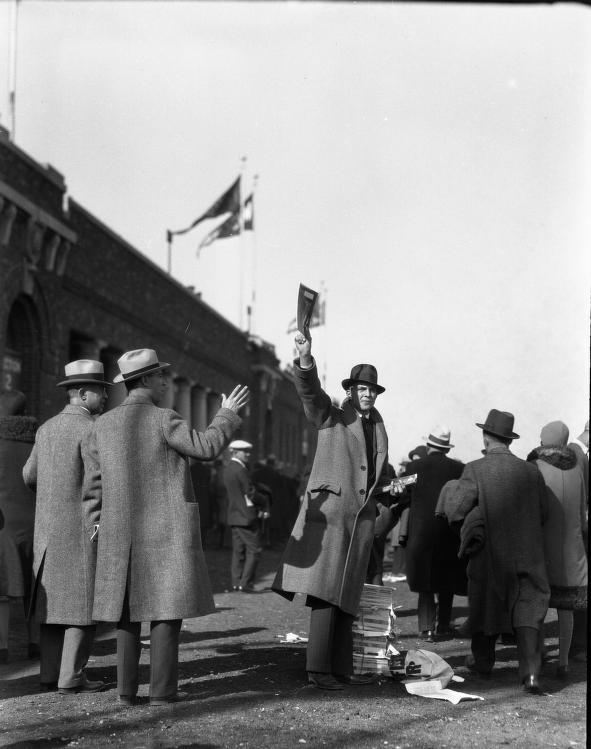
Vendors began to appear at Michigan Football Stadium in 1930 selling programs, pennants, hot drinks, etc.
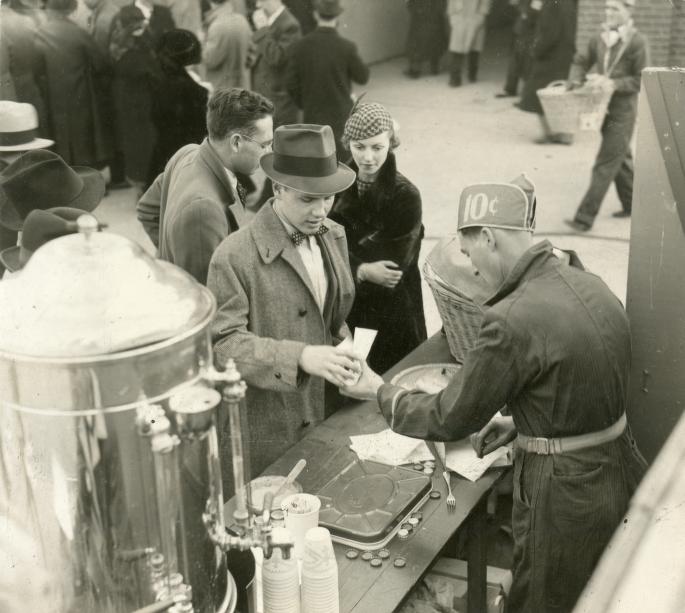
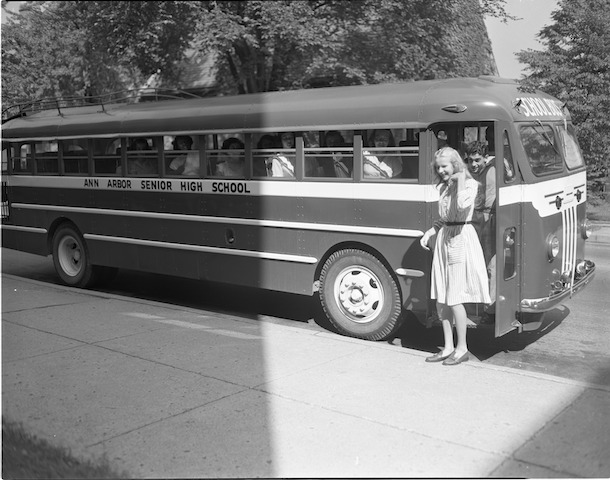
Ann Arbor High School joined the 5-A League in 1930 with Lansing Sexton, Lansing Eastern, Jackson and Battle Creek High Schools; all the schools now had buses, and each event was only about an hour away. The first school buses were made by Wayne Works in 1886, and chassis began to be made for buses in 1914. The first all-steel school bus was made in 1930 with safety windows. National standards for school buses were developed in 1939. U.S. 23 was commissioned in 1923, and U.S. 27 in 1926; later, the McNitt Act increased county road systems in Michigan from 17,000 to 85,000 miles. I-94 was the first Interstate Highway in the United States that went border to border in 1959, and both I-75 and I-96 were started as well with I-69 in 1967.

Michigan Stadium installed a new electronic scoreboard in 1930
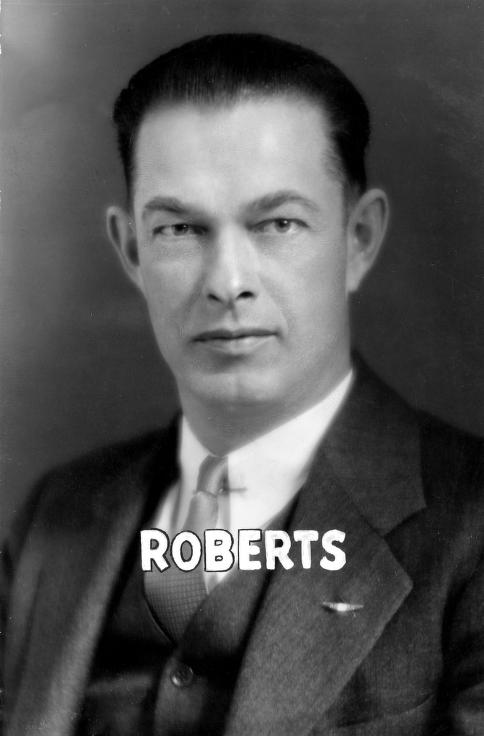
Ray Roberts became Michigan's Football Trainer, 1930-1947; in his era, the role of trainer as an Assistant Football Coach was deemphasized, and it became more of an injury treatment and rehabilitation role. Roberts patented the first wrestling headgear, but didn't market it effectively so Cliff Keen revised his patent and headgear style and sold millions nationally
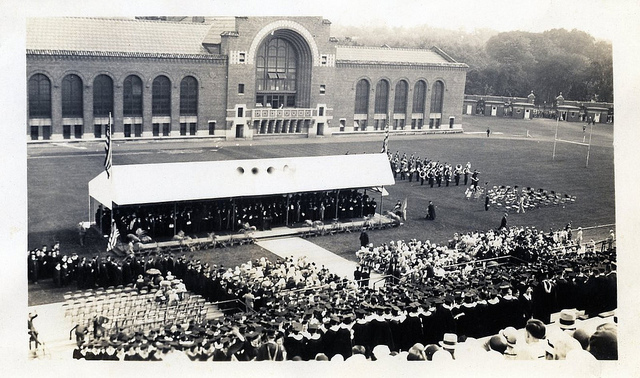
Michigan began holding graduation at Ferry Field in 1932; previously, the graduation ceremonies were held with a walkout on the Diag, and indoors at University Hall, but this changed in the 1920s with a walkout down State Street to Ferry Field. Yost Field House was also used for commencement in the 1920s. The "Swing Outs" ended; University Hall was demolished in 1950, and commencements began to be held at Michigan Football Stadium since 1950.


Kipke on the sidelines in 1933
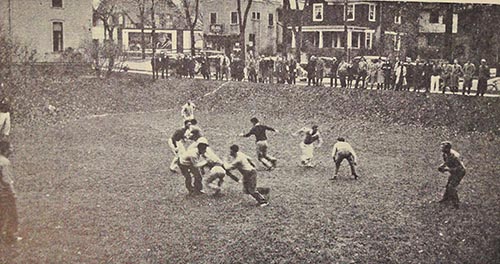
The Mud Bowl Tradition began in 1934 on November 10 as Sophomore E. Reed Low proposed that the Phi Delta Theta Fraternity take on the Alpha Sigma Epsilon in a touch football game at the corner of Washtenaw and South University; the SAE won the first event, 8-6
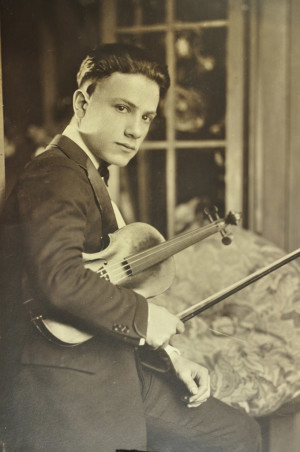
William Revelli was hired as Band Director at the University of Michigan in 1935; he studied violin in his youth
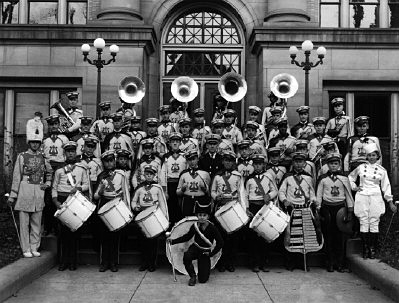
Ann Arbor High School Band in 1935
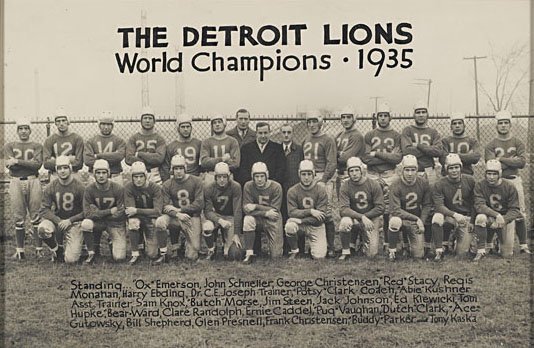
Detroit became the City of Champions, and celebrated their success on April 18, 1936 with the Detroit Red Wings winning their first Stanley Cup, the Detroit Lions winning the 1935 National Football League Championship, the Detroit Tigers winning the 1935 World Series, Joe Louis winning the Associated Press Most Outstanding Athlete of the Year in 1935 and soon to be 1937 World Boxing Champion, Walter Hagan as Captain of the 1935 Ryder Cup Champions, Gar Wood winning the Harmsworth Cup for power boat racing, Stroh's Bowling Team capturing the American Bowling Congress World Title, Michigan Diver Dick Degener winning the 1932 Olympic Gold Medal, Eddie Tolan winning the World Sprint Championships in Track & Field in addition to his two gold medals in the 1932 Olympics, etc.
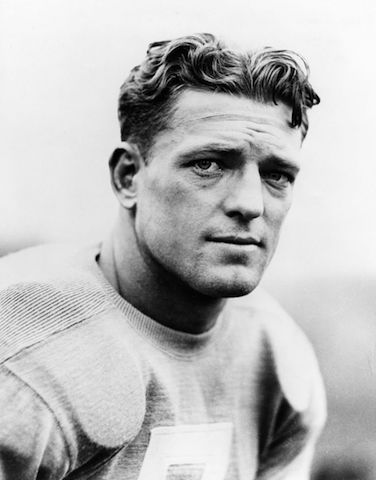
Earl "Dutch" Clark earned recognition for the NFL All-Decade Team of the 1930s for the Lions; he almost came to the University of Michigan in 1926
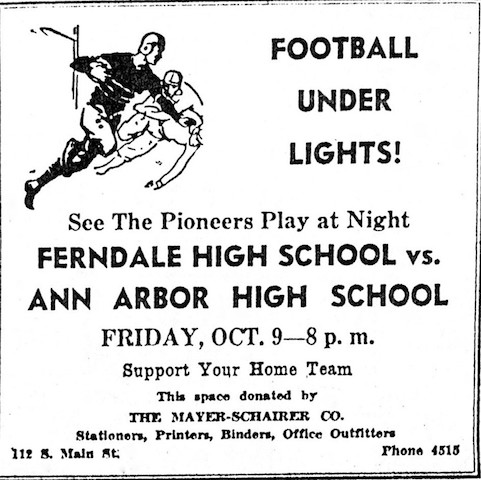
Ann Arbor High School had their first night game "under the lights, on October 9, 1936 before 2,225 spectators; they tied Ferndale, 6-6

- Harry Bennett lived in Bennett's Castle, 152 acres on Huron River Drive; he was Henry Ford's "right hand man" throughout the 1930s with the title of "personnel director." Bennett was a notorious strike-buster, and was involved in the Torch Murders along with many other news stories throughout the 1930s. He was to be a Ford heir, but was fired by Ford in 1945 after the death of his son, Edsel, in 1943. Bennett was a huge Michigan Football Fan, and provided cars for every coach on the football coaching staff during the Kipke Era. Bennett also employed many former Michigan Football players and Wolverine athletes. (Harry Bennett Old News) (YouTube of Bennett's Castle)

- Michigan Helmet in 1937

Charles Baird returned to his alma mater in 1937 for the dedication of the Baird Carrilon for the Bell Tower that he donated; the wealthy Kansas City banker passed away in 1944 at the age of 74

Kipke fired on December 8, 1937; however, he became elected to the University of Michigan Board of Regents, 1940-1947, and was later President of Coca-Cola. Tom Hamilton was the first choice to replace him, but the Board of Control of Intercollegiate Athletics at Michigan didn't approve him after over 60 interviews by Faculty Representative Ralph Aigler were conducted over a two month period. Fritz Crisler hired in 1938 as Michigan Football Coach after first refusing the offer; he unveiled the "Winged Helmet" on October 1, 1938 against Michigan State. Crisler played for Amos Alonzo Stagg, 1919-1921, and was his Assistant Coach, 1922-1929.

Tom Hamilton coached at Navy and Pittsburgh, 1934-1959, after playing for the Midshipmen, 1924-1926; he was later Commissioner of the PAC-8 Conference, 1959-1971
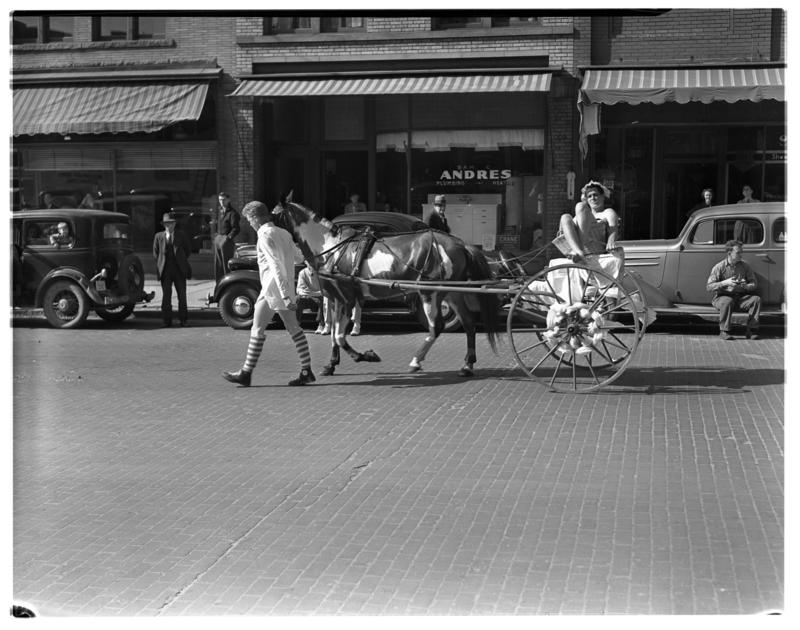
Michigan's first Michigras was held in 1938; it was a carnival and parade that began as the Penny Carnival which was a fundraiser for Women's Athletics, and held at Yost Field House until 1965 when it became too rowdy

10 Wolverines came to the Detroit Zoo in 1927 from Alaska as pictured here in 1938

William Revelli plots strategy in 1938
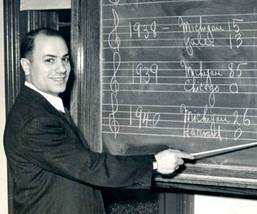

Forest Evashevski and Tom Harmon; Evashevski became Crisler's first quarterback, 1938-1940, and the Wolverines were 19-4-1 with Evy as their quarterback
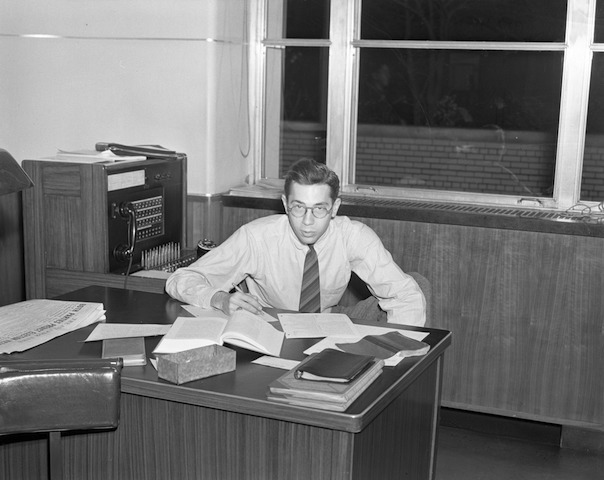
Ann Arbor High School adopted The Pioneers as their nickname in 1938 after Richard Mann won an essay contest in 1936; Mann later graduated from the University of Michigan in 1940 with a Law Degree added in 1949, and served as President of the Ann Arbor School Board and Vice-President of the Ann Arbor Trust Co.
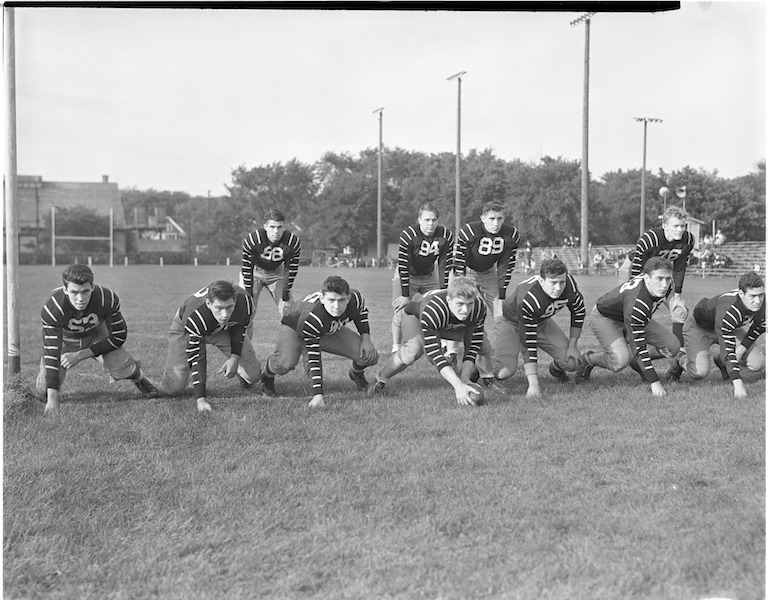
Lou Hollway's 1938 squad was 4-3-1
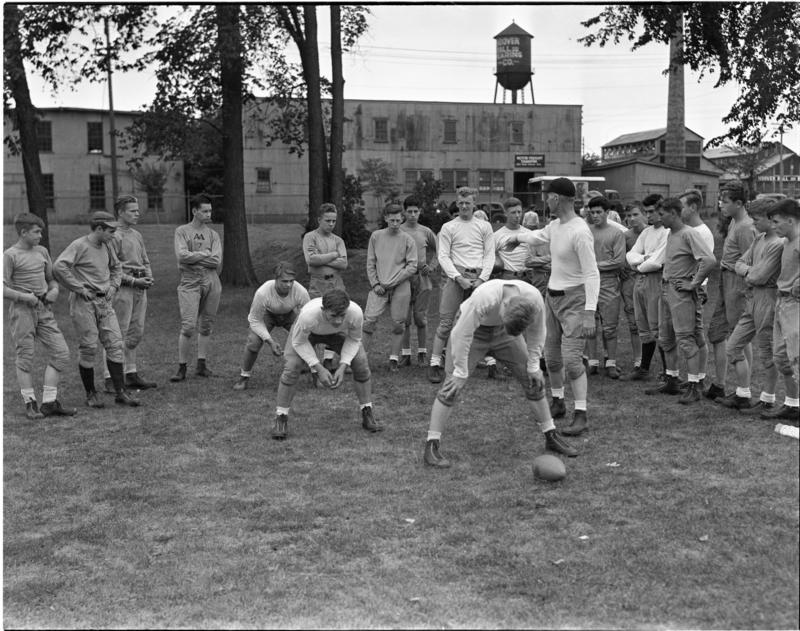
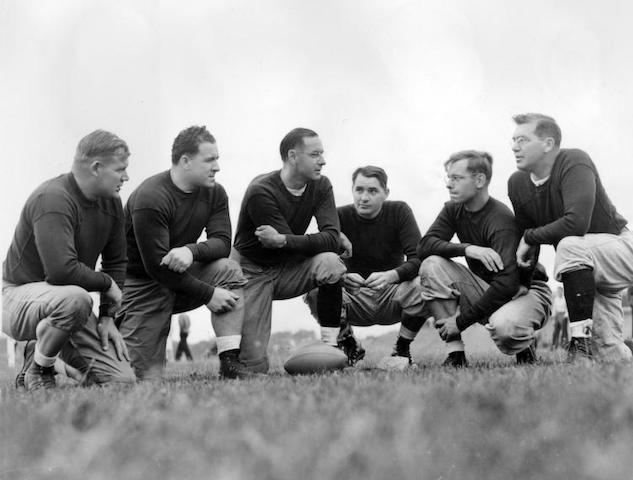
Wally Weber, Biggie Munn, Fritz Crisler, Benny Oosterbaan, Campbell Dickson, and Earl Martineau in 1938
Biggie Munn played for the Minnesota Gophers, 1929-1931, under Fritz Crisler; they lost to Kipke's Wolverines, 7-0, in 1930, and 6-0, in 1931, and Munn lost to Michigan all three seasons. When Crisler left for Princeton, Michigan defeated his Tigers, 14-7, in 1932. When Crisler was a Freshman at Chicago, Michigan shut out the Maroons, 14-0, Chicago defeated Michigan in 1919, 13-0, but lost, 0-14, in 1920; then, didn't schedule the Wolverines again until 1927 when Crisler was Stagg's Assistant Coach with the result with another 0-14 loss. One could surmise that neither Crisler nor Munn were Wolverine fans. After Crisler came to Michigan in 1938; Munn became his chief Assistant Coach, and also promoted him to Assistant Athletic Director
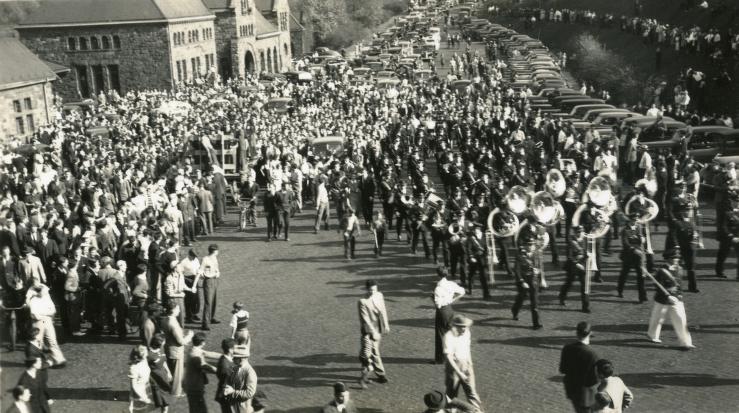
The University of Michigan Band performed in 1940 prior to the Harvard Train send off; Michigan came back a winner, 26-0
Tom Harmon won the Heisman Trophy in 1940; he had a movie made about him, Harmon of Michigan. Crisler became Athletic Director in 1942.

Crisler surrounded by his coaches: Wally Weber, Bennie Oosterbaan, Fielding Yost and Ray Courtright in 1940
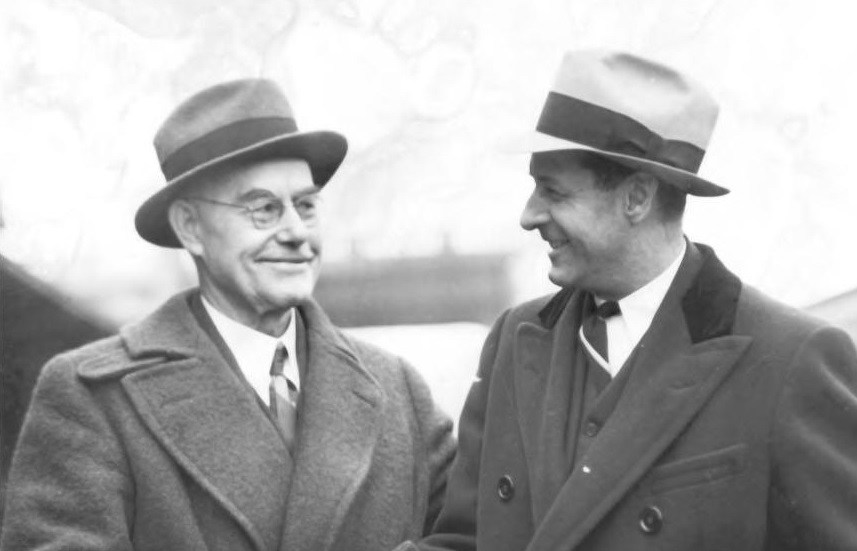
Yost and Crisler
Kip Taylor hired in 1939 as Ann Arbor High School Football Coach; he led his football squads to four 5-A League and a 1943 State Championship behind several great players including Chuck Walterhouse, Bob Hollway, Walt Sellers, and Floyd Green. His record was 42-7-4, 1939-1945.

Coed-Cheerleading Squad in 1940
The One-Platoon System for NCAA Football ended in 1940, and headgear became required in 1939.

Jim Harbaugh wasn't the first Michigan Football Coach to go shirtless at practices as shown by Crisler in 1943
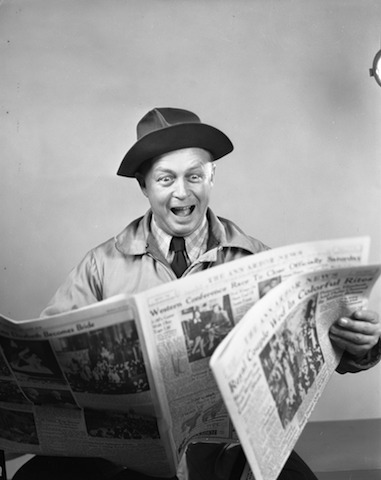
Les Etter came to Ann Arbor in 1943; he served as as Sports Information Director at Minnesota under Fritz Crisler in the 1930s, and was hired by Crisler to replace Phil Pack. He was a "one-man" Sports Information Department until he retired in 1968, and provided updates on all 10 Michigan varsity sports over that time span.
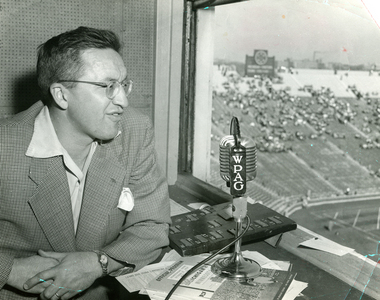
Bob Ufer began broadcasting on WPAG, 1945-1976, and WJR in Detroit, 1976-1981

Bob Hurst began as Ferry Field groundskeeper, 1945-1986, and resided in a home on the grounds
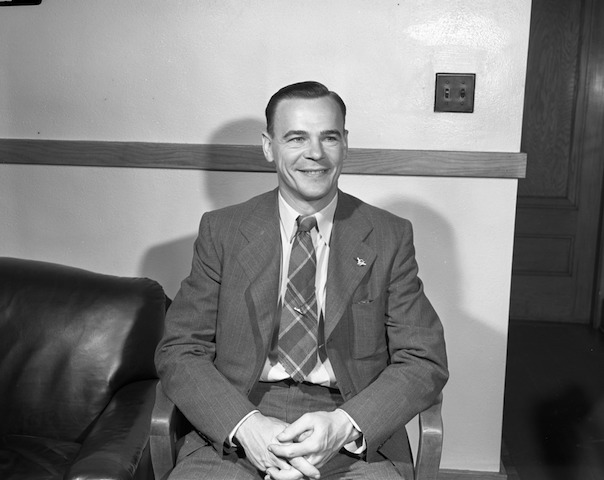
Frank Kline began teaching mathematics at Ann Arbor High School in 1946; he coached football, wrestling, and baseball, and became Athletic Director, 1962-1972
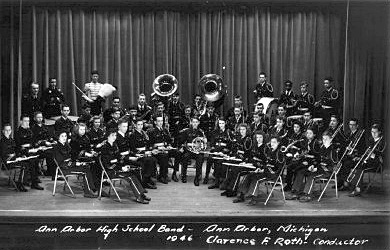
Ann Arbor High School Band in 1946
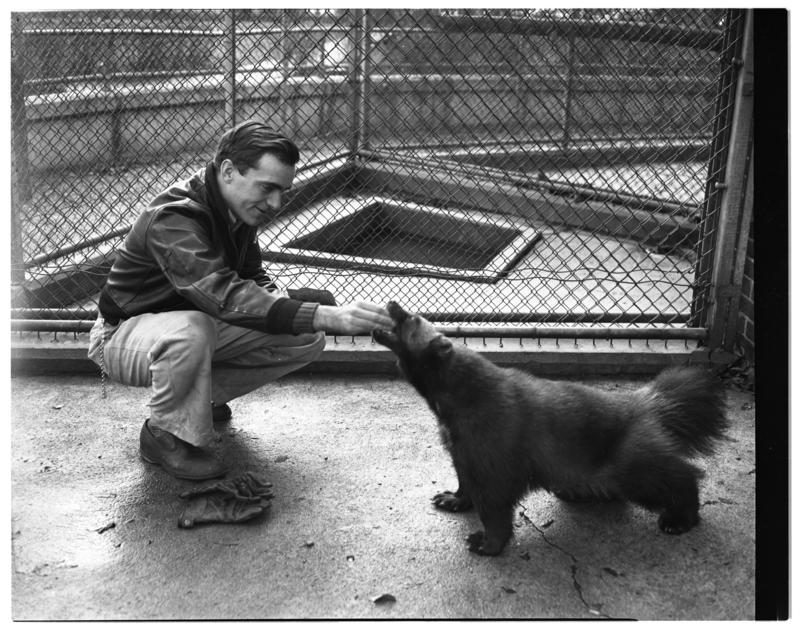
A Wolverine at the University of Michigan Zoo November, 1946
Ernie Allmendinger, Bob Westfall, John Maulbetsch and Otto Pommerening in 1946; both Westfall and Maulbetsch earned spots in the College Football Hall of Fame
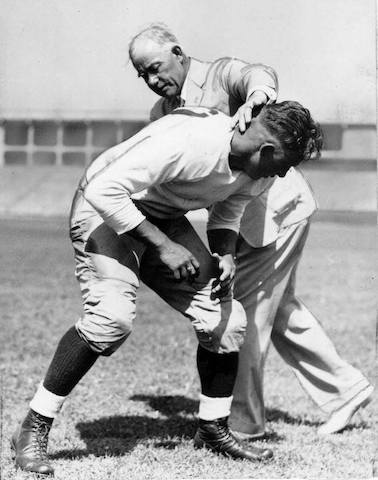
Fielding Yost passed away on August 20, 1946. This brought back many of his former players to Ann Arbor including Ernie Allmendinger, Bob Westfall, John Maulbetsch, and Otto Pommerening. Yost had at least 72 of his former players become coaches of NCAA Football Programs. Yost's record against Ohio State was 16-3-1 against Ohio State with 12 shutouts, and 16-2-1 against MAC with 13 shutouts. Yost record against other great coaches: Amos Alonzo Stagg (Chicago) 6-2, Henry Williams(Minnesota) 5-1-1, and Robert Zuppke (Illinois) 6-2. Yost had an incredible 119 shutout wins out of 165 total wins at Michigan with only 29 defeats and 10 ties with 6 National Titles and 10 Conference Championships. He was responsible for hiring several legendary coaches to improve all varsity athletic programs not only just football, initiated the top intramural program in the world including women in athletics, and upgraded the athletic facilities to be the nation's best including Yost Field House and Michigan Football Stadium while refusing to accept it to be renamed Yost Stadium.
| NCAA Football Coach | Shutouts | Record | Win % | School (s) as Head Coach | Years | Seasons | Conf.Champs | NCAA Champs | Bowls | Notes |
| Stagg, Amos Alonzo | 235 | 314-199-35 | 60.49% | Chicago, Pacific | 1892-1946 | 55 | 12 | 2 | 0W-1L | |
| Warner, Glenn Scobey "Pop" | 202 | 319-106-32 | 74.94% | Cornell, Carlisle, Stanford, Pittsburgh, Temple, Iowa State, Georgia | 1895-1938 | 44 | 4 | 4 | 1W-1L-2T | No Carlisle |
| Yost, Fielding | 142 | 198-35-12 | 83.27% | Michigan, Stanford, Ohio Wesleyan, Nebraska, Kansas, San Jose St. | 1897-1926 | 29 | 10 | 6 | 1W-0L | |
| McGugin, Dan | 137 | 197-55-19 | 76.20% | Vanderbilt | 1904-1934 | 30 | 11 | 0 | None | |
| Heisman, John | 134 | 186-70-18 | 71.17% | Georgia Tech, Auburn, Clemson, Rice, Penn, Washington&Jefferson, Oberlin, Buchtel | 1892-1927 | 36 | 7 | 1 | None | |
| Jones, Howard | 120 | 194-64-21 | 73.30% | USC, Ohio State, Yale, Syracuse, Iowa, Duke | 1908-1940 | 33 | 9 | 5 | 5W-0L | |
| Wade, Wallace | 117 | 171-49-10 | 76.52% | Alabama, Duke | 1923-1950 | 28 | 10 | 3 | 2W-2L-1T | |
| Dobie, Gil | 114 | 182-45-15 | 78.31% | Washington, Navy, Cornell, Boston College, North Dakota St. | 1906-1938 | 33 | 1 | 3 | None | No North Dakota Ag., winning streak 40 games, 1908-14 |
| Neyland, Bob | 112 | 173-31-12 | 82.87% | Tennessee | 1926-1952 | 27 | 7 | 4 | 2W-5L | |
| Williams, Henry | 104 | 141-34-12 | 78.61% | Minnesota, Army | 1891-1921 | 23 | 8 | 1 | None | |
| Woodruff, George | 103 | 142-25-2 | 84.62% | Penn, Illinois, Carlisle | 1892-1905 | 12 | 0 | 3 | None | Winning Streak, 1894-96, 34 games+31 games, 1896-98 |
| Sutherland, Jock | 100 | 144-28-14 | 81.18% | Pittsburgh, Lafayette | 1919-1938 | 20 | 7 | 6 | 1W-3L | |
| Bryant, Bear | 95 | 323-85-17 | 78.00% | Alabama, Maryland, Kentucky, Texas A&M | 1945-1982 | 38 | 15 | 6 | 15W-12L-2T | |
| Zuppke, Robert | 82 | 131-81-12 | 61.16% | Illinois | 1913-1941 | 29 | 7 | 4 | None | |
| Haughton, Percy | 76 | 97-16-6 | 84.03% | Cornell, Harvard, Columbia | 1899-1924 | 26 | 0 | 4 | None | |
| Blaik, Red | 74 | 166-48-14 | 75.88% | Army, Dartmouth | 1934-1958 | 25 | 0 | 3 | None | Born in Detroit, coached for George Little, Vince Lombardi OC |
| Camp, Walter | 73 | 79-5-3 | 92.53% | Yale, Stanford | 1888-1895 | 7 | 0 | 3 | None | Two 37 game winning streaks, 1887-89+1890-93 |
| Bachman, Charlie | 73 | 137-83-24 | 61.06% | Michigan State, Kansas State, Northwestern, Florida, Hillsdale | 1919-1953 | 29 | 0 | 0 | 0W-1L | |
| Crisler, Fritz | 63 | 116-32-9 | 76.75% | Michigan, Princeton, Minnesota | 1930-1947 | 18 | 2 | 3 | 1W-0L | |
| Bierman, Bernie | 58 | 153-65-12 | 69.13% | Minnesota, Montana, Tulane, Mississippi State | 1919-1950 | 32 | 10 | 5 | 0W-1L | |
| Robinson, Eddie | 56 | 408-165-15 | 70.66% | Grambling | 1941-1997 | 47 | 19 | 9 | 9W-6L | No Records 1941-1949 |
| Schembechler, Bo | 54 | 234-65-8 | 77.52% | Michigan, Miami-OH | 1963-1989 | 27 | 15 | 0 | 5W-12L | |
| Rockne, Knute | 51 | 105-12-5 | 88.11% | Notre Dame | 1918-1930 | 13 | 0 | 3 | 1W-0L | |
| Wilkinson, Bud | 47 | 145-29-4 | 82.58% | Oklahoma | 1947-1963 | 17 | 14 | 3 | 6W-2L | Winning Streak 1953-57 47 games |
| Hayes, Woody | 44 | 238-72-10 | 75.94% | Ohio State, Miami-OH, Denison | 1946-1978 | 33 | 15 | 5 | 6W-6L | No Denison |
| Paterno, Joe | 40 | 409-136-3 | 74.91% | Penn State | 1966-2011 | 46 | 3 | 2 | 24W-12L-1T | |
| Leahy, Frank | 39 | 107-13-9 | 86.43% | Notre Dame | 1939-1953 | 13 | 0 | 5 | 1W-1L | |
| Parseghian, Ara | 38 | 170-58-6 | 73.93% | Notre Dame, Northwestern, Miami-OH | 1951-1974 | 24 | 2 | 2 | 3W-2L | No Miami-OH |
| Royal, Darrell | 38 | 184-60-5 | 74.90% | Texas, Washington, Mississippi St. | 1954-1976 | 23 | 11 | 3 | 8W-7L-1T | |
| Osborne, Tom | 35 | 255-49-3 | 83.55% | Nebraska | 1973-1997 | 27 | 13 | 3 | 12W-13L | |
| Devaney, Bob | 33 | 136-30-7 | 80.64% | Nebraska, Wyoming | 1957-1972 | 16 | 12 | 2 | 7W-3L | |
| Dooley, Vince | 30 | 201-77-10 | 71.53% | Georgia | 1964-1988 | 25 | 7 | 1 | 8W-10L-2T | |
| Saban, Nick | 30 | 232-63-1 | 78.55% | Alabama, LSU, Michigan State, Toledo | 1990-2018 | 29 | 9 | 6 | 14W-10L | NFL 2 seasons |
| Beamer, Frank | 29 | 280-143-4 | 66.04% | Virginia Tech | 1981-2015 | 35 | 8 | 0 | 11W-12L | |
| Daugherty, Duffy | 27 | 109-69-5 | 60.93% | Michigan State | 1954-1972 | 19 | 2 | 4 | 1W-1L | |
| Bowden, Bobby | 24 | 377-129-4 | 74.31% | Florida State, West Virginia | 1970-2009 | 40 | 12 | 2 | 21W-10L-1T | |
| Fry, Hayden | 24 | 232-178-10 | 56.43% | Iowa, SMU, No.Texas St. | 1962-1998 | 27 | 5 | 0 | 7W-9L-1T | |
| Mckay, John | 21 | 127-40-8 | 74.86% | USC | 1960-1975 | 16 | 9 | 4 | 6W-3L | |
| Kush, Frank | 20 | 176-54-1 | 76.41% | Arizona State | 1958-1979 | 22 | 9 | 0 | 6W-1L | NFL 3 Seasons |
| Tressel, Jim | 18 | 229-79-2 | 74.19% | Ohio State | 1986-2010 | 25 | 7 | 5 | 5W-54L | |
| Edwards, LaVell | 16 | 257-101-3 | 71.61% | BYU | 1972-2000 | 29 | 19 | 1 | 7W-14L-1T | |
| Switzer, Barry | 16 | 157-29-4 | 83.68% | Oklahoma | 1973-1988 | 16 | 12 | 3 | 8W-5L | NFL 4 seasons |
| Erickson, Dennis | 16 | 179-96-1 | 65.04% | Miami-FL, Arizona St., Idaho, Wyoming, Washington St., Oregon St. | 1982-2011 | 23 | 6 | 2 | 5W-7L | NFL 7 seasons |
| Munn, Biggie | 14 | 71-16-3 | 80.56% | Michigan State, Syracuse, Albright | 1946-1953 | 8 | 1 | 2 | 1W-0L | No Albright, 28 game winning streak, 1950-53 |
| Meyer, Urban | 13 | 187-32 | 85.39% | Ohio State, Florida, Utah, Bowling Green | 2001-2018 | 18 | 7 | 3 | 12W-3L | |
| Ralston, John | 13 | 97-81-4 | 54.40% | Stanford, San Jose St., Utah St. | 1959-1996 | 17 | 4 | 0 | 2W-2L | NFL 5 seasons |
| Holtz, Lou | 12 | 249-132-7 | 65.08% | Notre Dame, Arkansas, Minnesota, No.Carolina St., William&Mary | 1969-2004 | 34 | 3 | 1 | 12W-8L-2T | |
| Carroll, Pete | 11 | 84W-18L | 82.35% | USC | 2001-2009 | 9 | 7 | 2 | 7W-2L | NFL 12 Seasons |
| Spurrier, Steve | 11 | 228-89-2 | 71.79% | South Carolina, Florida, Duke | 1987-2015 | 26 | 7 | 1 | 11W-10L | NFL/USFL 5 Seasons |
| Kelly, Brian | 7 | 231-91-2 | 71.60% | Notre Dame, Cincinnati, Central Michigan, Grand Valley | 1991-2018 | 28 | 9 | 2 | 5W-5L |
Yost vs. Schembechler: No Comparison
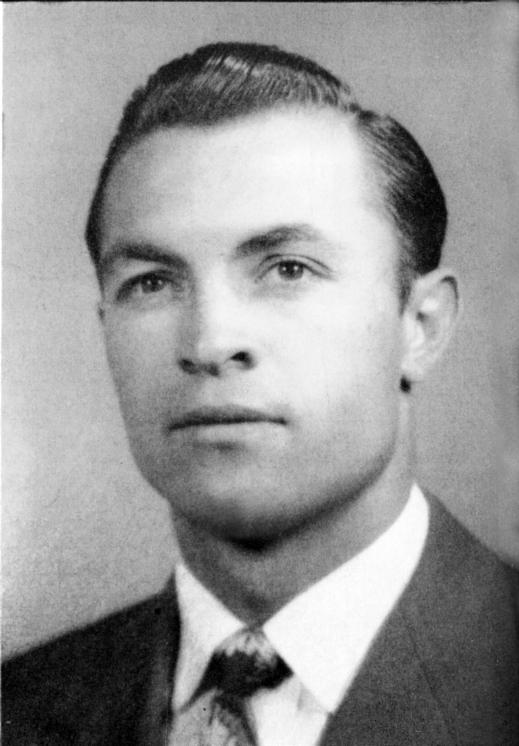
Newt Loken came to Ann Arbor in 1947; the gymnastics program was reinstated, and he became Michigan's Cheerleading Coach, 1947-1964, and Gymnastics Coach, 1947-1983. He wrote "Cheerleading" in 1945. Loken created a "Spirit" at Michigan with his gymnasts at football games with incredible jumps, hand walks across the field, etc.
Bump Elliott came to Ann Arbor during World War II in 1943 after first being enrolled at Purdue where he earned 8 varsity letters in football, basketball, and baseball with another 6 at Michigan, and was the Conference MVP in 1947; brother, Pete Elliott, earned 12 letters in football, basketball, and golf for the Wolverines, and was the MVP for basketball in 1948 when they won the Conference Title and earned an Elite 8 appearance. Pete also was a member of two Big Ten Golf Championship squads in 1947 and 1949. Bump was an Assistant Coach for 10 years at Michigan, Oregon State and Iowa before finally getting the Head Coaching position in 1959

Len Ford and Bob Mann in 1947; Ford played in the NFL for 11 seasons, 1948-1958, and was selected as a NFL 1st Team honoree 5 times. Mann played, 1948-1954, for the Detroit Lions and Green Bay Packers, and was the first African-American player for both teams
Michigan won NCAA Football Championships in 1947 and 1948; Fritz Crisler turned over the football program to Assistant Bennie Oosterbaan. Crisler's record for the Wolverines, 1938-1947, was 71-16-3 with two Western Conference Championships and a National Title, and all of his squads, 1940-1947, were ranked in the Top Ten in the final AP Poll which began in 1936.
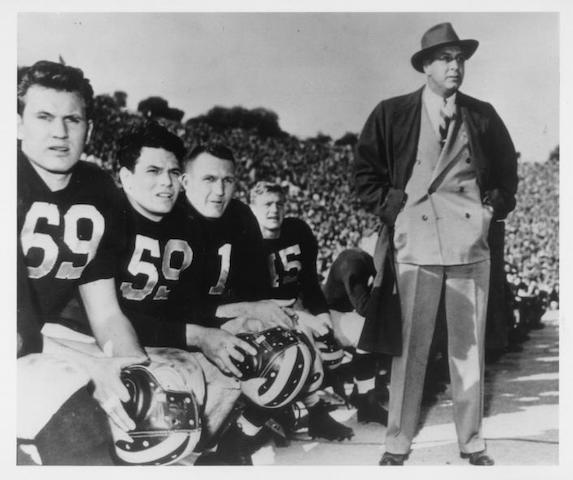
Crisler on the sidelines at the 1948 Rose Bowl as the Wolverines shut out USC, 49-0 to cap an undefeated season with five shutouts
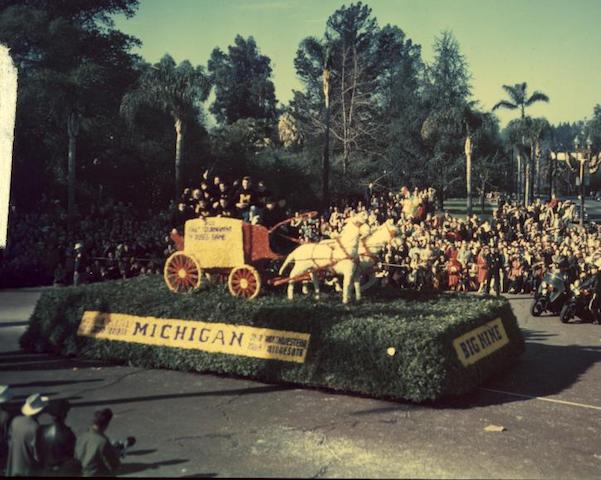
Michigan Float at 1948 Rose Bowl

Bob Hollway, son of Ann Arbor High School Football Coach and Athletic Director, Lou Hollway, was an outstanding end on the National Championship Wolverine Teams of 1947 and 1948; he would go on to be an Assistant Coach for the Wolverines, 1954-1965, and then go on to the NFL where he coached for 5 different teams, 1967-1986. He developed the "Purple People Eaters" for the Minnesota Vikings, 1967-1970.
Sprint Football began at Michigan, 1947-1948, coached by Cliff Keen and his assistant, George Allen. Fritz Crisler had Lightweight Football at Princeton in 1934; it became a sanctioned Western Conference Sport in 1947. Players could not weigh over 154 lbs., and many called it 150 lbs. football. Keen's squads won two conference championships in 1947 and 1948, and the 1947 squad is the only Michigan Football Team to defeat Ohio State twice in one season, 13-6, and 20-0. Charlie Ketterer was quarterback and Captain of the 1947 group, and Jerry Burns quarterbacked the 1948 team with Dick O'Connell voted Captain.
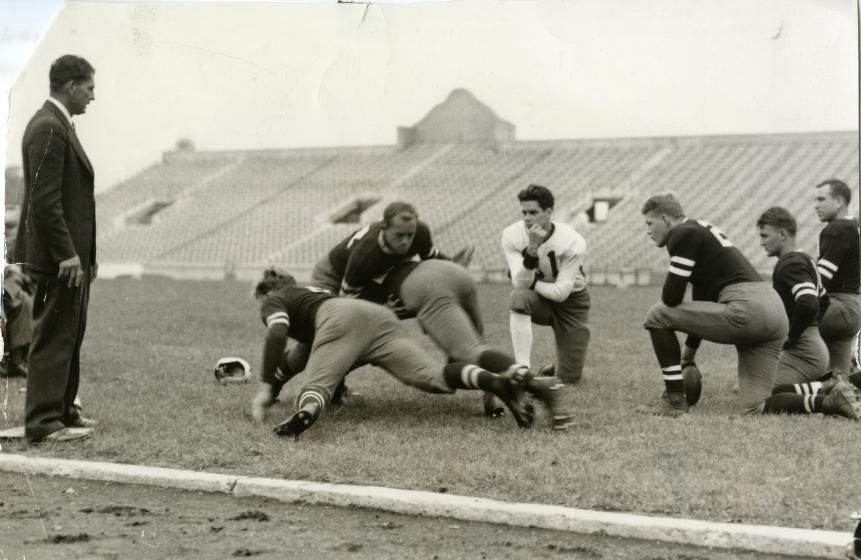

Cliff Keen was the first Michigan Varsity Head Coach chosen to coach an Olympic Team in 1948 with his old Cowpoke teammate, Art Griffith; Griffith didn't wrestle varsity for Oklahoma A&M, but became an outstanding coach at Tulsa Central. Keen was an undefeated 158 lbs. varsity wrestler for Oklahoma A&M, and earned 3 conference championships. Former Wolverine Trainers, Mike Murphy and Keene Fitzpatrick, were volunteer coaches in the 1892 and 1900 Olympics for track.
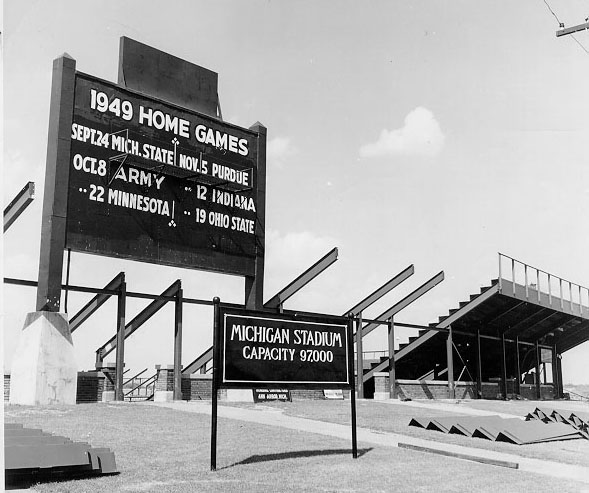
A New Michigan Football Scoreboard was installed in 1949; Michigan Football Stadium attracted over 500,000 fans for the first time in 1946, and again in 1949
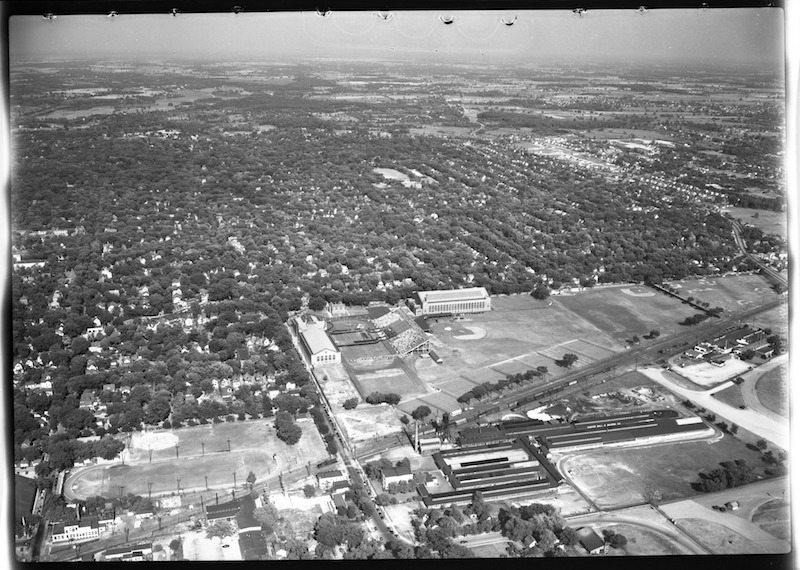
A view of Wines Field (bottom left) and Ferry Field (bottom right) in 1949
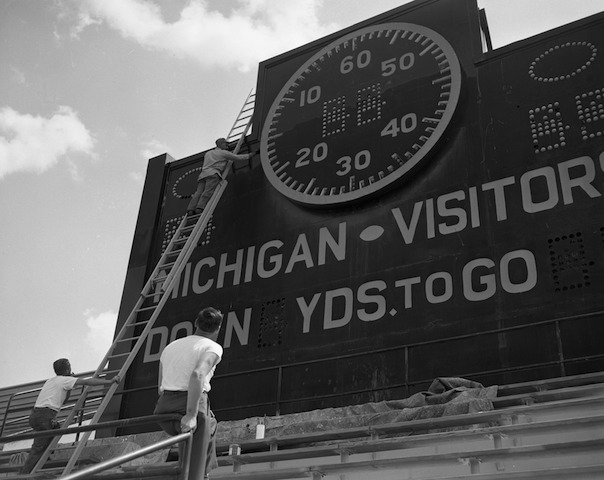
Dobbie Drake did not fare well as a Head Coach at Ann Arbor High School, 1946-1948, with a 6-17-1 record; he left Ann Arbor to coach the Kalamazoo Maroon in 1949. Drake graduated from Union City High School in 1915, and returned to the Western part of Michigan where he coached football through 1952, and became the Head of the Battle Creek Recreational Department, 1952-1963, until his retirement. He devoted much of his life coaching at Ann Arbor High School for 24 seasons after previously coaching at Ypsilanti High School where he was also Athletic Director.
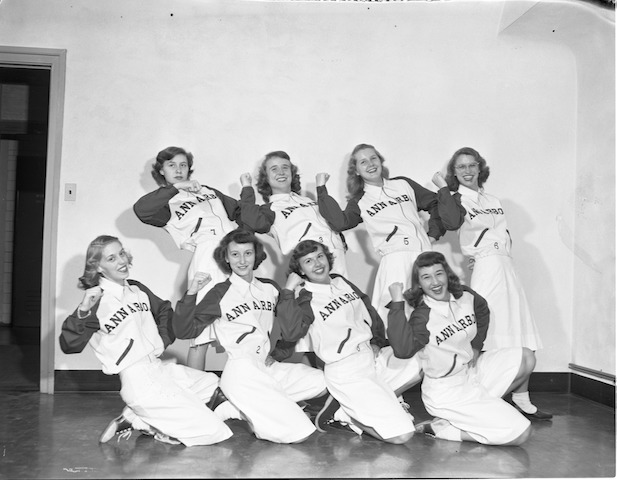
After World War II, boys didn't want to be on the cheerleading squad anymore as exemplified by the 1949 Ann Arbor High School Team
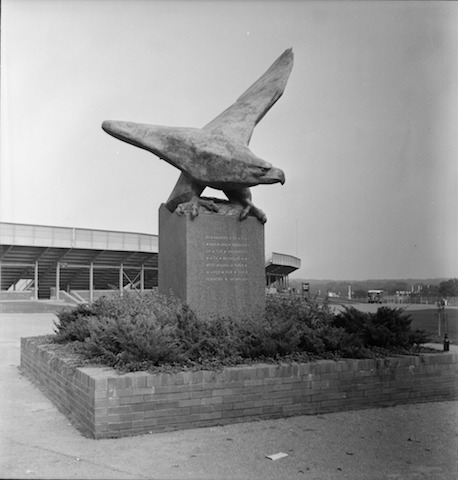
The War Eagle came to Michigan Football Stadium in 1950; it was sculpted by Marshall Fredericks

Ernie McCoy in 1950; he played basketball, baseball, and football for the Wolverines, 1927-1929, and was an Assistant Football Coach, 1940-1951. McCoy coached basketball, 1947-1952, and was Crisler's Assistant Athletic Director, 1946-1952. He left to become Athletic Director at Penn State, 1952-1970, and hired Joe Paterno for the Nittany Lions in 1966. He finished his administrative career at Miami-Florida, 1971-1973.
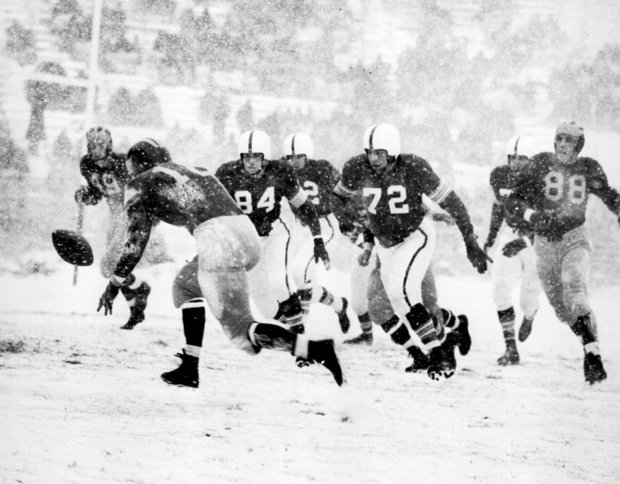
The strangest win in Michigan Football History was the 1950 Snow Bowl in Columbus; Michigan had zero first downs, and punted 24 times, but prevailed, 9-3, over Ohio State
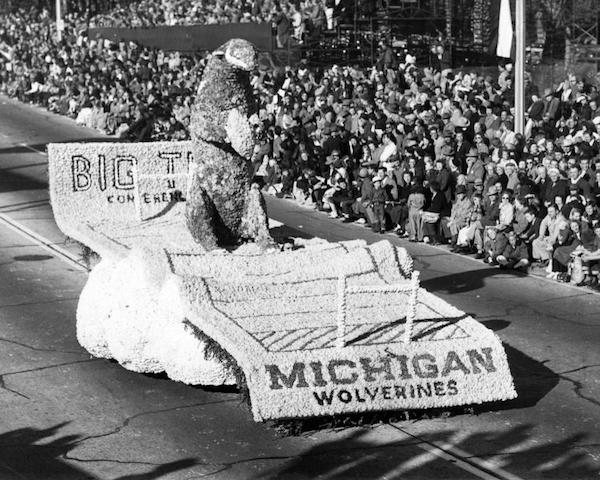
Rose Bowl Float in 1951
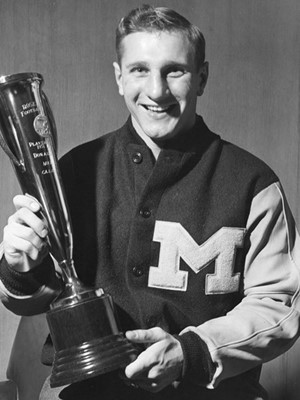
Don Dufek was the Rose Bowl MVP in 1951
Hank Fonde coached Ann Arbor High School, 1949-1958; his first team was undefeated in 1949 as Don Dohoney was named All-American. His 1950 team was also undefeated with a 21-21 tie with Bay City Handy for a 16 game game unbeaten streak. After losing the opener, 7-12, to Toledo Scott in 1951 against Dick Szymanski, who played for Notre Dame and the Baltimore Colts, his teams reeled off another unbeaten streak of 40 in a row before being stopped soundly by Flint Northern, 0-33, on September 28, 1956. The Vikings gained revenge for a 33-13 thrashing they experienced in 1955 and 24-0 in 1954 by Fonde's troops. Fonde's teams recorded 29 shutouts, and he won a State Championship in 1952 and 1955 with the longest unbeaten streak in the team's history. During his years, the Ann Arbor-Battle Creek Football Rivalry really intensified with a 0-0 tie in the 1954 game. His record was 71-7-1 with four of those loses coming in his final season. He was assisted by former Michigan Football and Wrestling letterman, Bob Hurley, Kurt Kampe, and Chris Pagakis; Hurley went on to coach at Wayne State and Texas A&M. Ann Arbor High School won 9 Conference Championships in a row, 1949-1957 under Fonde's leadership. Fonde left to assist former Wolverine teammate, Bump Elliott, 1959-1968.
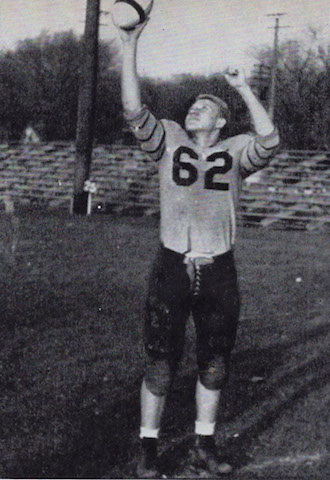
Don Dahoney went on to become Michigan State Football Captain in 1953; the Spartan Football Teams were 27-1, 1951-1953, with three wins in a row over Michigan with 2 National Championships, a Big Ten Championship and Rose Bowl win
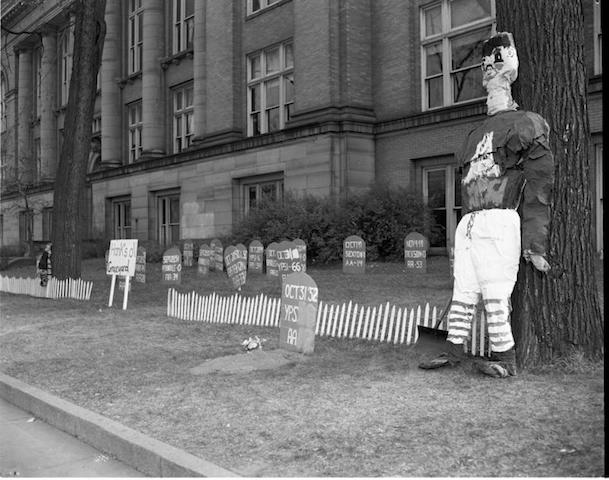
1952 Graveyard of Ann Arbor High School opponents during Homecoming
Fonde's 1953 squad was undefeated with Quarterback Jack Lousma as Captain, and Ernie Delco earned All-State and All-American recognition
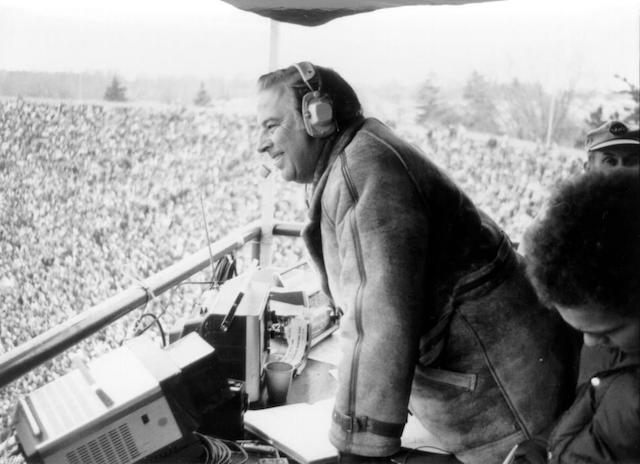
Bill Flemming, Ann Arbor High School graduate in 1943, who played football and basketball, also graduated from the University of Michigan; after working at WUOM radio station, he signed with WWJ-TV in Detroit in 1953 where he was the original voice of the Detroit Pistons, 1957-1962. He joined the ABC Wide World of Sports in 1961, and covered over 600 major events with a college football highlight show on Sunday mornings. He was one of the nation's most popular and recognized broadcasters in the 1960s and 1970s.
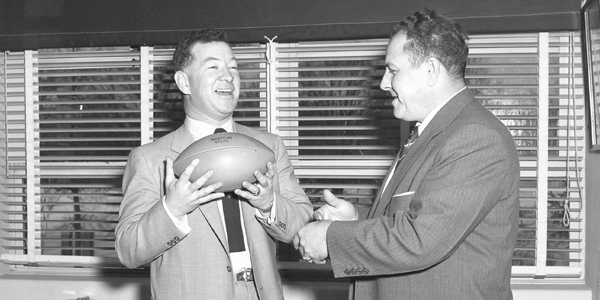
Former Michigan Assistant Coach, Biggie Munn, 1938-1945, won a Big Ten Championship in 1953 for the Michigan State Spartans in their first year in the Conference after winning National Championships in 1951 and 1952, and his Captain was former Ann Arbor High Schooler, Don Dohoney. Biggie became the Spartans Athletic Director, and turned over the football coaching duties to his Assistant, Duffy Daugherty; Duffy built incredible teams in the 1950s and 1960s and was the first Big Ten Football Coach to begin recruiting in the Deep South.
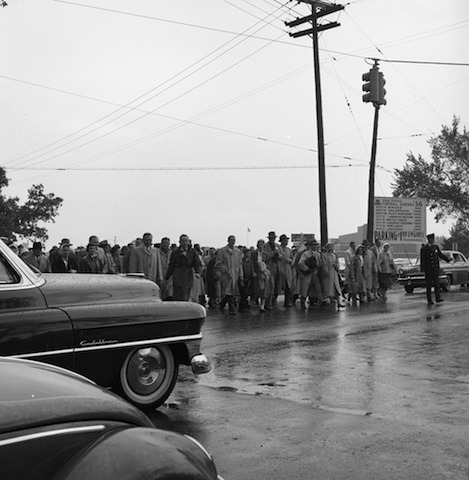
Ann Arbor High School has reaped the benefits of Michigan Football Games through the years with financial proceeds for parking on their lot across from the Stadium
After Biggie Munn left Michigan in 1945 as Crisler's Top Assistant and Assistant Athletic Director, the rivarly between Michigan and Michigan State got much, much bigger along with the Spartans approval to join the Western Conference in 1949 after Chicago left in 1946; the first sellout at Michigan Football Stadium was in 1949 with the Wolverines winning, 7-3. Biggie Munn and Bennie Oosterbaan squared off, 1948-1954, as the series moved to a home and home matchup with the Paul Bunyan Trophy introduced in 1953. The Spartans dominated the decade over Michigan, 3-7, 1950-1959. Michigan State student enrollment rocketed from 15,000 in 1950 to 38,000 by 1965. Michigan State violated NCAA and Big Ten rules immediately after their entrance into the conference on January 8, 1954 as improper financial aid, tryouts and outside funds resulted in a one year probation for men's basketball, and football on November 5, 1964 with three years probation with violations dating back to the 1957-1959 seasons with a "secret slush fund." Former Muskegon native and Spartan All-American, 1948-1950, and Assistant Coach, 1954-1958, Sonny Grandelius, took the slush fund practice to Colorado, 1959-1961. Michigan State was voted into the Western Conference December, 1948, and certified May 20, 1949 after beating out Pittsburgh for admission; the Big Nine became the Big Ten Conference. Nebraska had petitioned to join the conference in 1900 and 1911, but was turned down.
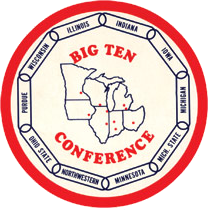


Walt Byers attended the University of Iowa, but didn't graduate; he was previously Assistant Sports Information Director for the Big Ten Conference
Things really began to change for NCAA Football in 1951 with Walter Byers as the new czar of NCAA Sports; their headquarters moved to Kansas City, and revenues from television contracts became a large enticement. Byers negotiated the first television contract for the NCAA with NBC for $1.14 in 1952. Money in NCAA athletics led to the first major problems: 1951 CCNY point shaving scandal and the Kentucky Point Shaving Scandal under Adolph Rupp. Also, Nebraska became the first team to use a "redshirt" in 1937, and the practice expanded particularly in the South and Southwest for gaining an edge over opponents with maturity in development of players. The first major offenders from the Big Ten Conference with violations and infractions came in 1957 with Ohio State Coach Woody Hayes, and Indiana Coach Bob Hicks; Iowa with Coach Jerry Burns, and Michigan State with Coach Duffy Daugherty were also guilty of major infractions in 1964. The competitive drive to win at all costs included attempts to "bend rules" and gain an edge over opponents.
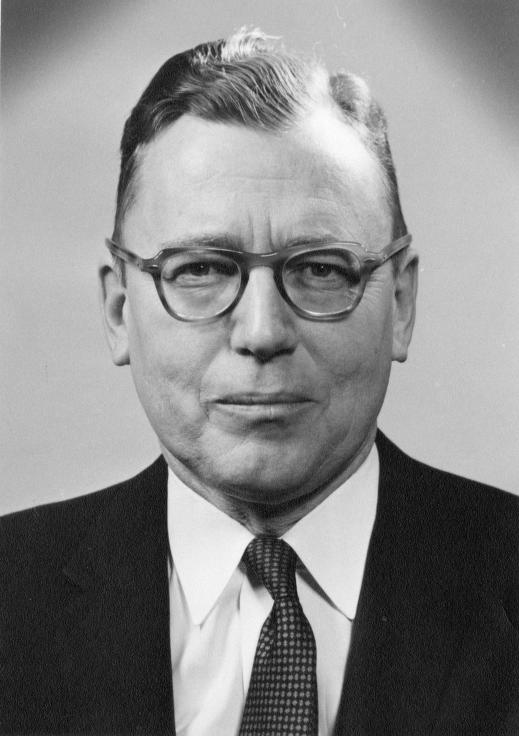
Marcus Plant replaced Ralph Aigler as Michigan's Faculty Representative, 1955-1979, and Secretary of the Big Ten Faculty Representative, 1956-1979; he was NCAA President, 1967-1969, and a member of the U.S. Olympic Committee, 1969-1972. Plant taught at the University of Michigan, 1946-1982, after earning his law degree in 1938. Both Aigler and Plant gave Michigan a great political advantage with both the Big Ten and NCAA for decades as football grew across the United States.

Ann Arbor Cheerleaders in 1953
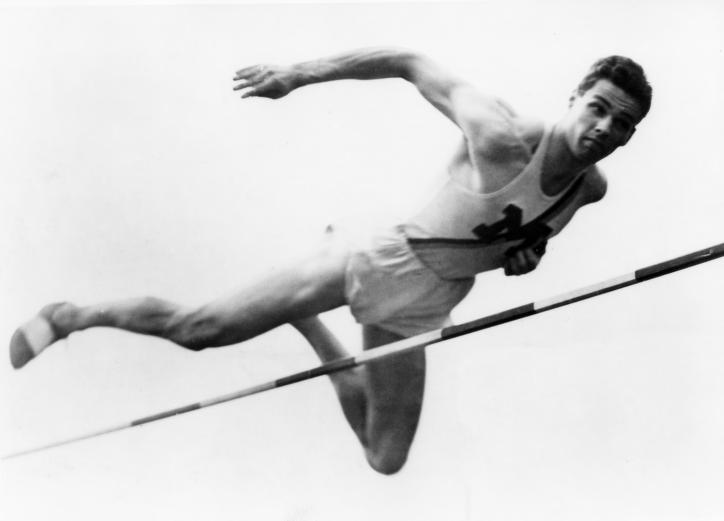
Don Canham, Big Ten and NCAA High Jump Champion in 1940 and Wolverine Track Coach in 1948, founded School-Tech, Inc. in 1953, and began marketing and selling "Loop Films" of Michigan Coaches instructing fundamentals and techniques of various sports. It expanded and produced school equipment with $4 million in sales by 1972, and had over 7,000 items in its catalog by 2003 with 70 employees and $12 million in sales in 2004. Canham's track teams won 7 indoor and 4 outdoor Big Ten Championships, and finished runner-up 14 times, 1948-1968. He organized the first NCAA Indoor Track Championships at Detroit, 1965-1967. He also coached a combined African Team at the 1956 Olympics, and was one of the first coaches in America to recruit athletes internationally.
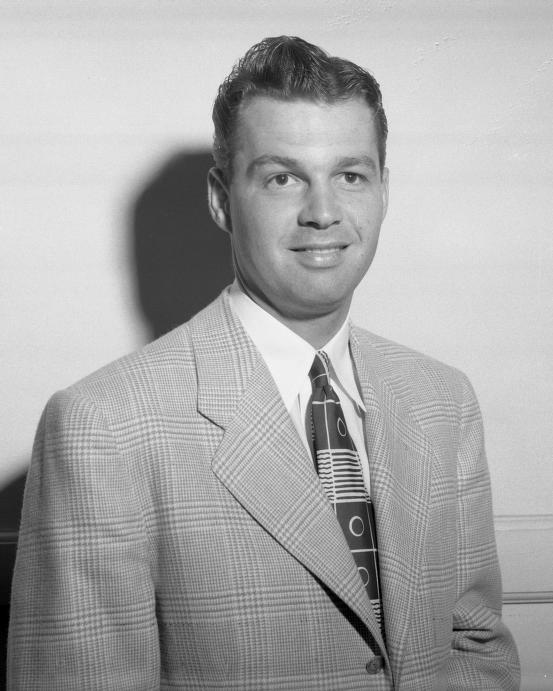
Ann Arbor High School utilized West Park and Wines Field from 1908-1956 until the new High School and Hollway Field were completed at Stadium Blvd. and Main Street; the baseball team used Vet's Park, 1961-1965, until ball fields were completed.
The Kalamazoo Maroons joined the Six-A League in 1953; Ann Arbor has defeated Kalamazoo in 20 out of 22 games since 1950 with the only defeats in 1964 and 1967. Ann Arbor has won 33 of 35 games against Jackson, 20 of 26 games against Lansing Sexton, 20 of 29 games against Lansing Eastern with one tie, and 17 of 27 games against Battle Creek with one tie since 1950.

Pep Rally November, 1954 in front of the Michigan Union at South University & State Street
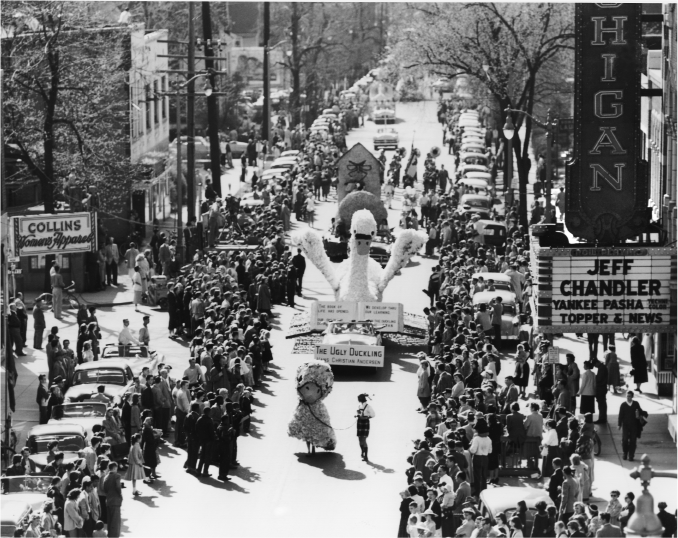
Michigras in 1954
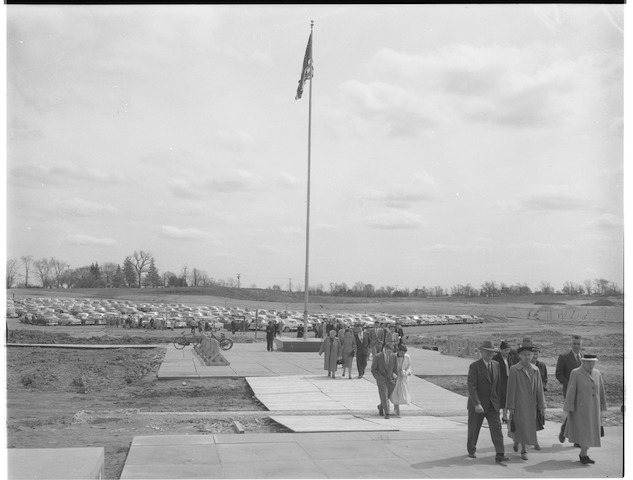
At the Ann Arbor High School dedication April, 1956 there was no football field
Ann Arbor High School was completed April, 1956 with 1,374 students moving; by no accident, the new High School was right across the street from Michigan Football Stadium. Wines Field was purchased by the University of Michigan in 1951, and it was later renamed Elbel Field because it was primarily being utilized for marching band practices.
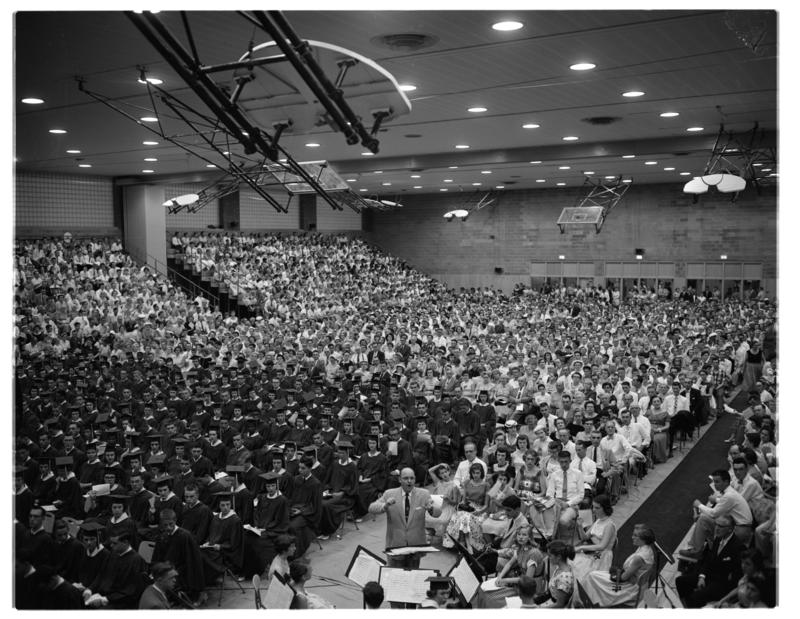
The first commencement at the new Ann Arbor High School June 15, 1956

Ypsilanti Banner to welcome the Detroit Lions in 1953
Detroit Lions rookies at West Park in 1955
The Detroit Lions won the National Football League Championships in 1953 and 1957; they conducted their Summer practices at West Park August, 1955 after using Frog Island at Ypsilanti, 1949-1954.
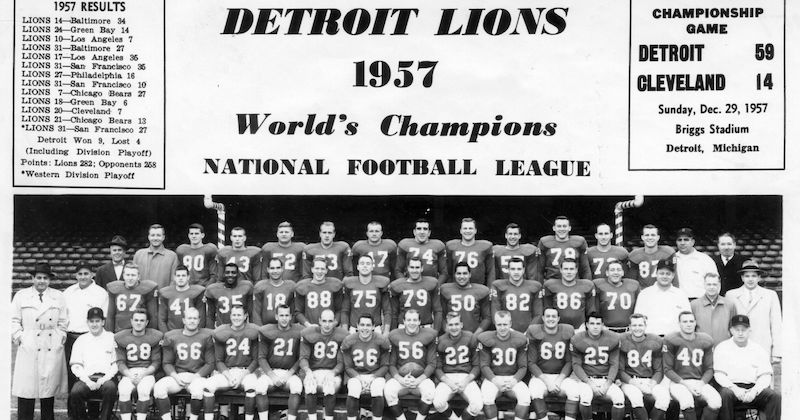
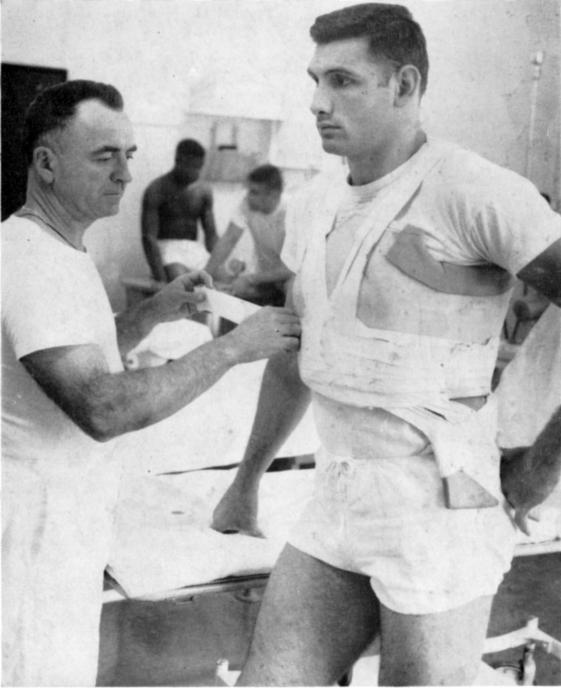
Jim Hunt with Ron Kramer in 1955; Hunt was Michigan's Trainer, 1947-1967
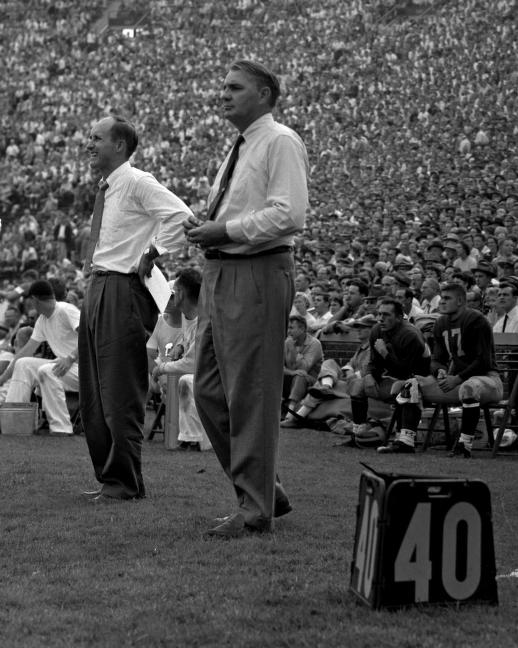
Don Robinson was a Wolverine halfback, 1941-1946; he coached with Oosterbaan for 9 seasons, 1948-1956, after service in World War II
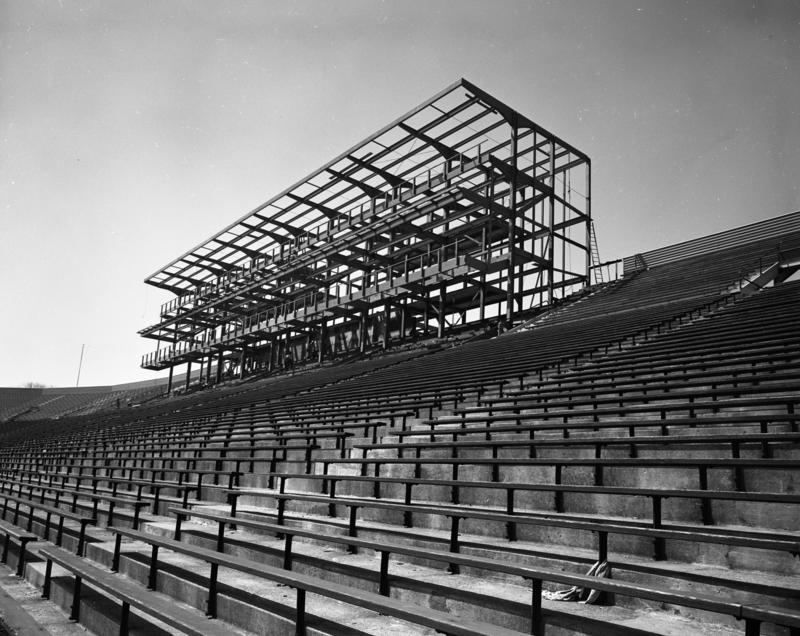
Michigan erected a Press Box in 1956, and expanded the Stadium seating to 101,001
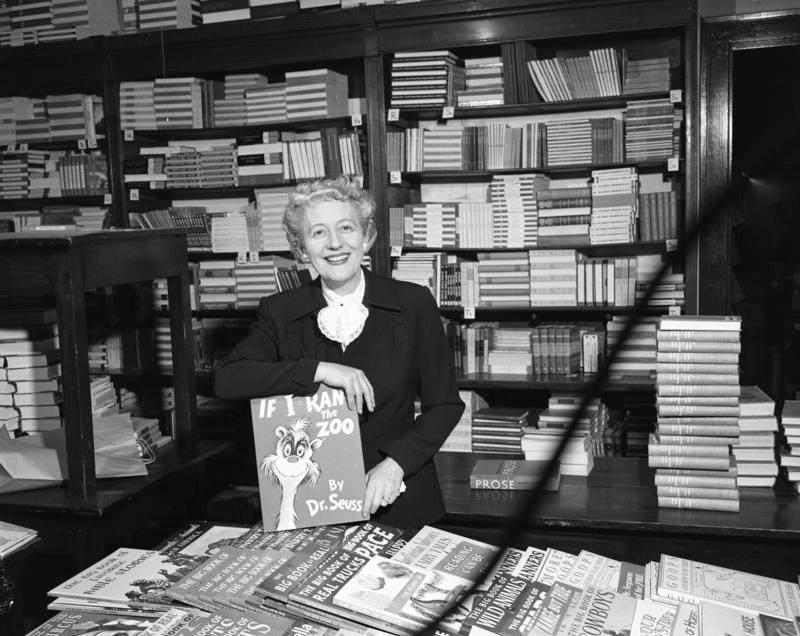
Florence C. Schaller Slater, who operated Slater's Book Store on S. State for more than 40 years, was a friend, employer and counselor for a generation of Michigan football players. She is pictured here February, 1957. Widowed four years after her 1926 marriage to Marvin J. Slater, grandson of Margaret Sheehan Slater who was the sister of John V. Sheehan, founder of the book store originally in 1872. Margaret Slater passed away in 1928. Slater operated the business, which closed in 1972, with the efficiency and competence of a seasoned merchant in an ear when women were not usually found in the market place. She befriended scores of U-M athletes, especially football players, employing them in rush periods and many times providing them with needed textbooks when they had no means to buy them. Slater was never forgotten by the athletes, including Tom Harmon and Forest Evashevski, who visited her when they returned to Ann Arbor and always inquired about her in later years. Her lifetime interest in Michigan football was sparked by the marriage of her daughter, Joan, to Pete Elliott, who was an All America quarterback for Michigan in 1948 and later head coach at the University of Illinois and at the University of Miami. He currently is director of the Pro Football Hall of Fame at Canton, O. Mrs. Slater was elated in the 1960s when Pete's brother, Bump, also a Michigan grid star, became head football coach for the Wolverines. She maintained a keen interest in Michigan sports in the retirement years, keeping up friendships with U-M sports figures including Bob Ufer, radio voice of Michigan football.
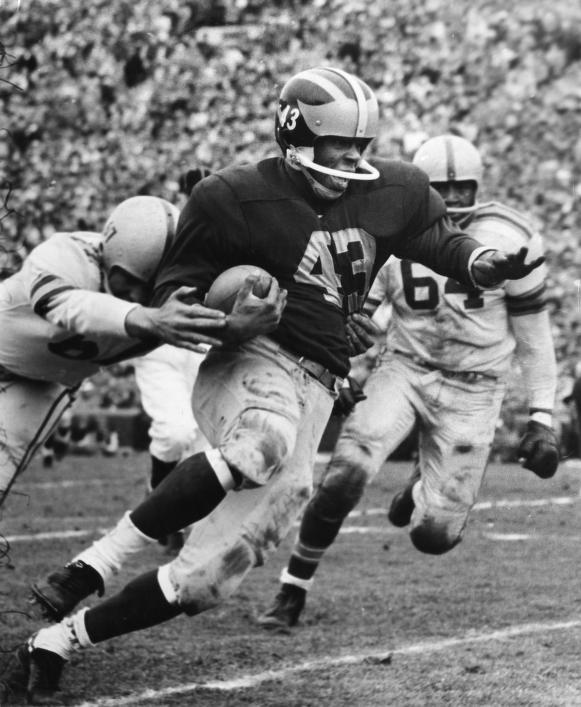
Jim Pace was an All-American Halfback at Michigan, 1955-1957; Pace ran for 164 yards against Ohio State as the #19 Wolverines lost to the Buckeyes, 14-31. He was the 8th pick of the NFL draft in 1957, and voted the Big Ten's Most Valuable Player. The Big Ten had 63 African-American football players in 1955; Michigan and Illinois had 11 each, and Indiana had 13.
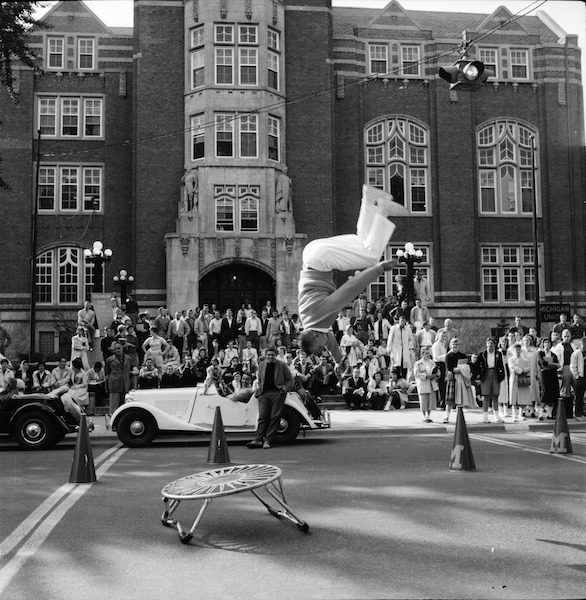
Pep Rally at the Michigan Union in 1958
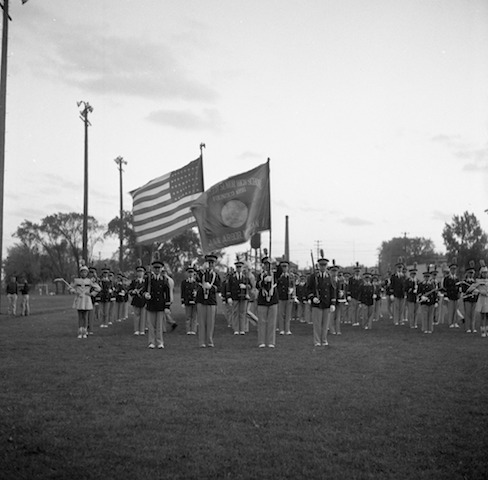
Ann Arbor High School Band at Wines Field, and parading through town in 1958 for homecoming

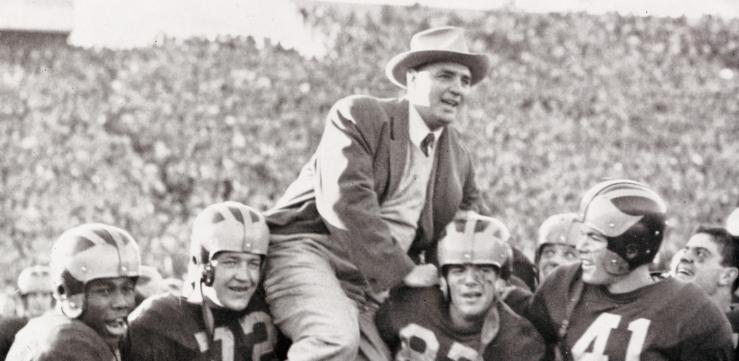
The Bennie Oosterbaan Era ended in 1958; he coached Michigan Football, 1928-1958, for 31 seasons with Cliff Keen, 1926-1958, 33 seasons, Wally Weber, 1931-1958, and Jack Blott, 1924-1933 and 1946-1958. Oosterbaan had a 63-33-4 record over ten seasons as Head Coach with 3 Big Ten Championships, 1948-1950, and a National Title in 1948. Oosterbaan also coached Wolverine Basketball, 1928-1946. Oosterbaan was 5-5-1 against Ohio State including 3 shutouts, and 4-6-1 against Michigan State as a Head Coach.
| M Football Coach | Seasons |
| Keen, Cliff | 33 |
| Oosterbaan, Bennie | 31 |
| Carr, Lloyd | 28 |
| Weber, Wally | 28 |
| Yost, Fielding | 25 |
24 23 |
|
| Burton, Tirrel | 22 |
| Moeller, Gary | 22 |
| Schembechler, Bo | 21 |
| Blott, Jack | 21 |
| Jackson, Fred | 21 |
| Herrmann, Jim | 20 |
17 15 |
|
14 14 13 13 |
|
| Dufek, Don | 12 |
| DeBord, Mike | 12 |
11 10 10 10 |
|
| Fonde, Hank | 10 |
| Cappon, Franklin | 10 |
| Miles, Les | 10 |
| Kipke, Harry | 10 |
| Douglass, Prentiss | 10 |
| Hollway, Robert | 9 |
9 9 9 9 |
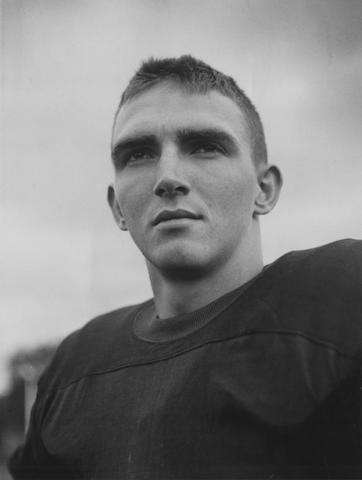
Clarence "Junior" or "Jay" Stielstra, 1953 Big Ten Long Jump Champion and Wolverine Football, Basketball and Track Athlete, was hired by Ann Arbor High School, 1959-1966; he led them to a State Championship in 1962. Stielstra's troops recorded 15 shut outs. He continued to coach at Ann Arbor Huron, 1967-1973; he taught history for the River Rats including African-American history. Stielstra coached 20 seasons at Grass Lake and Ann Arbor.

William Revelli and George Cavender plan strategies in 1960; Major George Cavender became Revelli's Assistant in 1952-1971 until he became the band leader, 1971-1978
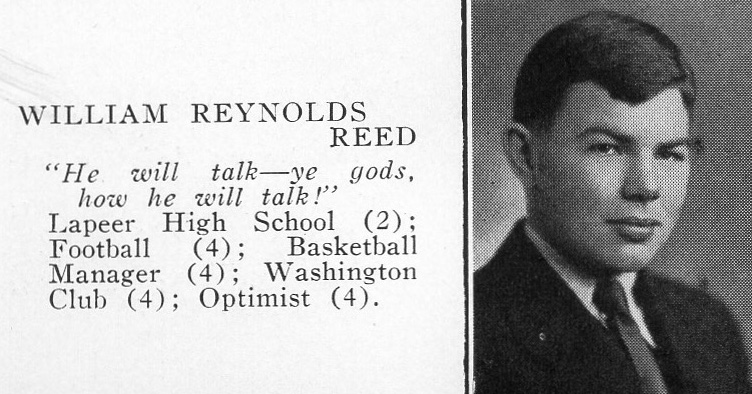
Bill Reed, Ann Arbor High School graduate in 1932 and University of Michigan graduate in 1936, became Big Ten Commissioner, 1961-1971, after serving as Assistant Commissioner, 1945-1961, under Tug Wilson after initially being hired in 1939 to create the Western Conference Service Bureau. He played Freshman Football at the University of Michigan. Wayne Duke, an Iowa grad, succeeded Reed, 1971-1988.
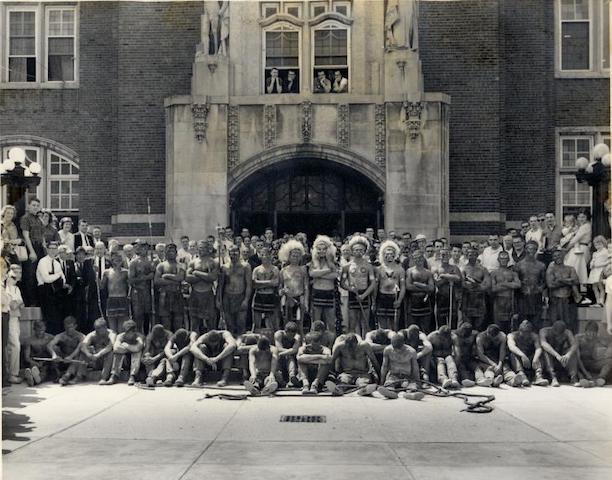
Michigamua on the Michigan Union steps in 1961 for a reunion
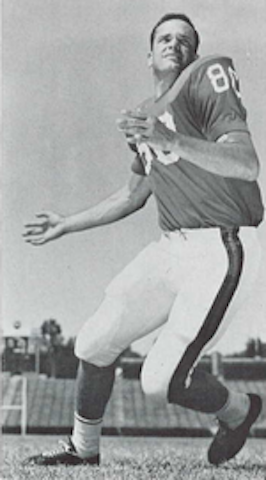
Barry Brown graduated from Ann Arbor High School in 1961; he played college football at Florida, and earned 2nd Team All-SEC recognition. He later played in the NFL, 1966-1970, at linebacker, guard, and tight end.
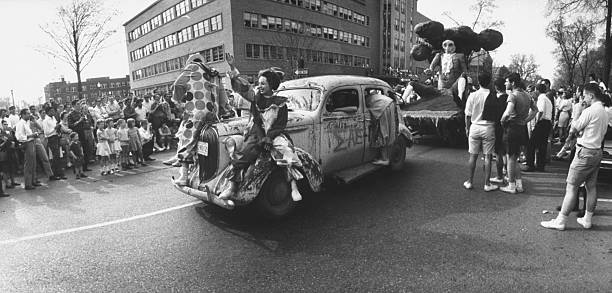
Michigras in 1962
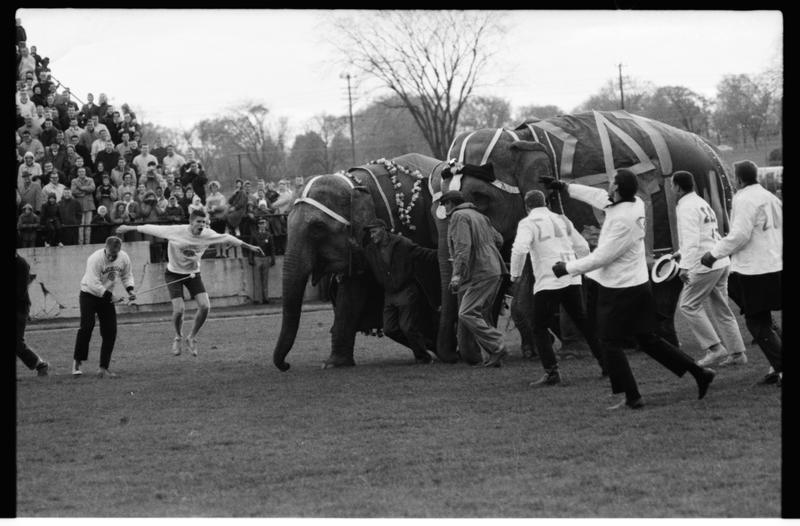
Some of the Homecoming activities at Ferry Field in 1962 got a little bit out of control

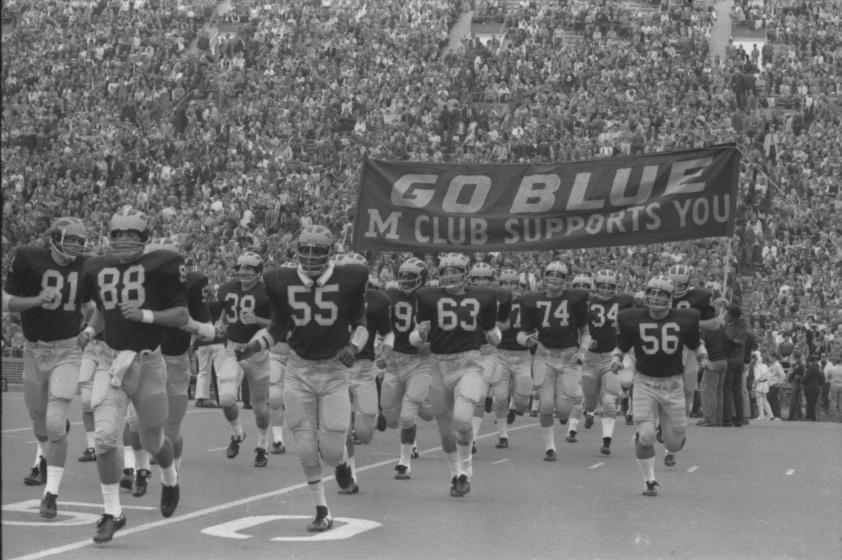
The Banner Tradition began at Michigan on November 10, 1962; Michigan topped Illinois, 14-10 ending a 4 game losing streak which included three shutouts in a row against Michigan State, Purdue and Minnesota as the Wolverines ended the season, 2-7. The orginal banner was made by Marjorie Renfrew who sewed a Block M on a blue sheet six feet across in an effort to boost team morale. The Big Ten Conference voted to allow conference teams to offer student-athletes a maximum of 30 scholarships per team for football in 1962.

Ann Arbor High School got their Student Activities Bulletin Board in 1963

Homecoming Float Building in 1963
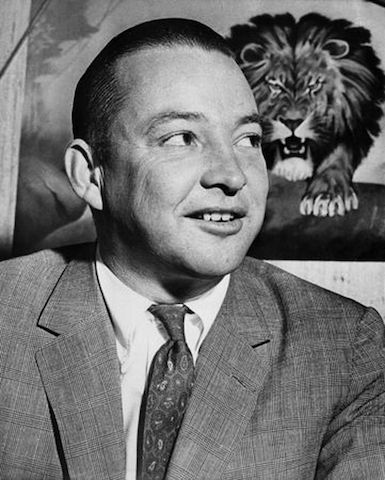
William Clay Ford purchased the Detroit Lions on November 22, 1963; it was the same day John F. Kennedy was assassinated, one of the most traumatic days in American History. The Lions have floundered ever since.
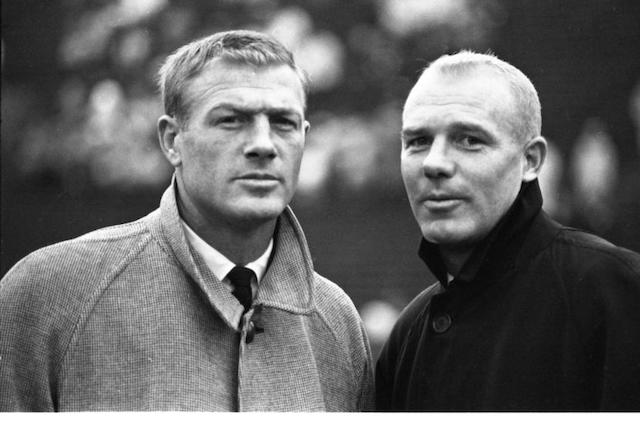
After coaching at Oregon State and Oklahoma, 1951-1955, under former Gopher Quarterback, 1934-1936, Bud Wilkinson, whose Sooners had a 47 game winning streak, 1953-1957; Pete Elliott had Head Coaching jobs at Nebraska and California before taking the Illinois position, 1960-66, where he guided the Illini to a 1963 Big Ten Championship and Rose Bowl win. The first matchup between the two brothers ended with an 8-7 Wolverine win; Pete was 1-6 against Bump, and even lost in 1963 when he won the Conference Title

Dennis Fitzgerald was hired by Elliott as an Assistant Coach, 1963-1968, after he played halfback for the Wolverines, 1959-60; he graduated from Ann Arbor St. Thomas High School in 1954, and spent three years in the U.S. Marines, 1954-1957, prior to enrolling at Michigan. He also wrestled for Cliff Keen, and was a Tw-Time Big Ten Champion and Gold Medalist in the Pan-American Games. Elliott's defenses improved considerably during Fitzgerald's tenure. When Schembechler was hired in 1969, he didn't retain Fitzgerald; he became Defensive Coordinator at Kentucky, 1969-1970, Kent State, 1971-1974, prior to becoming the Golden Flashes Head Coach, 1975-1977. One of his student-athletes there was a defensive back, Nick Saban, who later became Fitzgerald's Linebackers Coach. Fitzgerald later coached the Pittsburgh Steelers Linebackers and Special Teams, 1982-1988, and coached All-Pro Linebacker Jack Lambert at Kent State and Pittsburgh. He also was an Assistant Coach at Syracuse with former Wolverine Assistant, Frank Maloney, 1978-1980, and coached as an Assistant to Brian Kelly at Grand Valley, 1994-1996. Fitzgerald was the last Michigan player to wear a leather helmet.
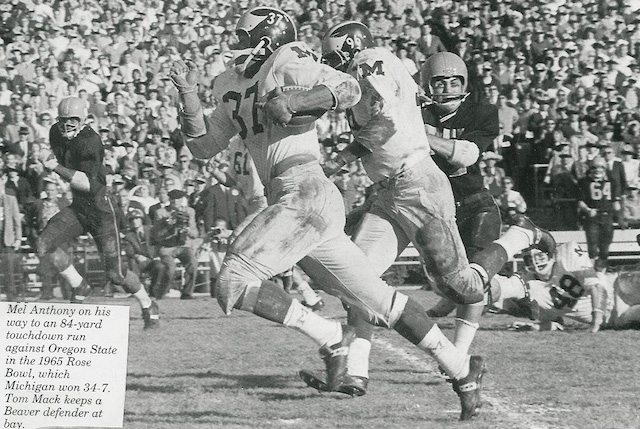
Michigan Rose Bowl on January 1, 1965 resulted in a 34-7 win over the Oregon State Beavers
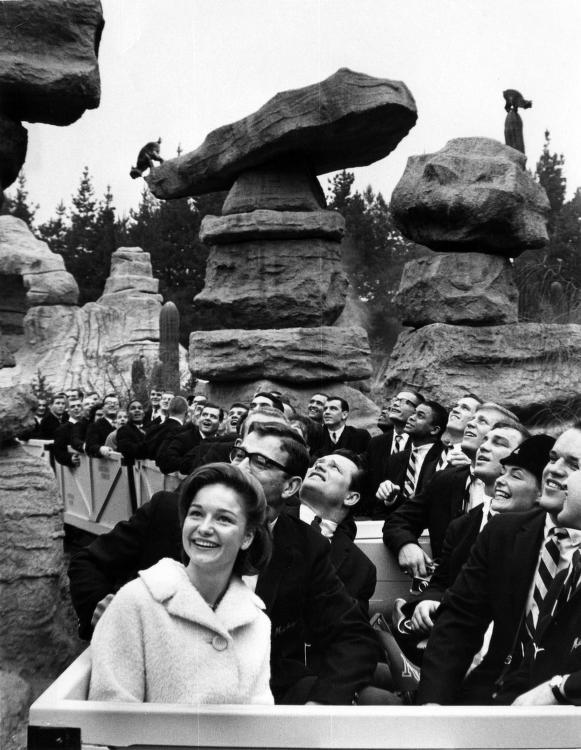
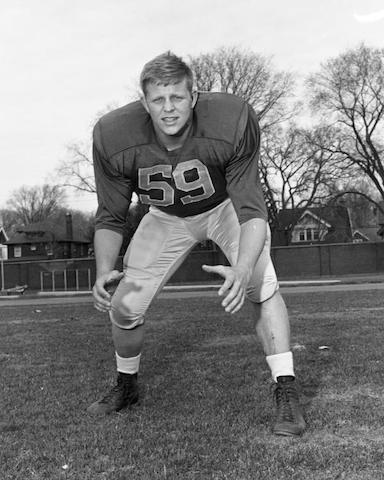
Frank Nunley played for the Wolverines, 1964-1966
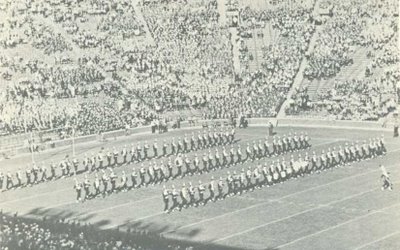
Ann Arbor High School Band performed at Michigan Stadium in 1966
Bump Elliott struggled in his first seasons as Michigan Head Football Coach; he had no All-Americans recognized on his 1958, 1959, 1960, 1962, and 1963 teams so the "cupboard was bare" in terms of talent. There were no All-Big Ten Wolverine Football awardees from 1958-1960; it was the longest absence for Michigan Football recognition in the conference since 1908-1917 when they left the conference. In fact, in the stretch, 1954-1962, the only 4 players with Big Ten Conference recognition were Ron Kramer, Tom Maentz, Jim Pace (1954-1957) and Benny McRae (1961). There was no recruiting allowed by coaches in that era; Michigan really fell behind many other football programs in terms of recruiting, and redshirting players, and their facilities were falling behind other competitive Big Ten and NCAA programs. Benny McRae and Dave Raimey were the only players the Wolverines had with recognizable talent in the early 1960s. In spite of squads of meager talent, Elliott's team in 1959 they finished 4-5; in 1960, they were ranked as high as 16th although finishing the season, 5-4. In 1961, they finished 6-3, and were ranked in the Top Ten in October and November, but finished with a 20-50 loss to Ohio State at Ann Arbor. In 1962, Elliott's squad was beseached by injuries, and finished last in the conference with a 2-7 record, and suffered 4 shutout losses. The Wolverine offense wasn't much better in 1964 as they ened up, 3-4-2, but gave Big Ten Champ #2 Illinois their only loss. Elliott was able to build the program back into Big Ten Champions in 1964 with Tom Mack, Tom Keating, Joe O'Donnell, Bob Timberlake, Carl Ward, John Henderson, Bill Yearby, Jim Conley, Tom Cecchini, Bill Laskey, Mike Bass, John Rowser, Stephen Smith, Frank Nunley, and Rich Volk; Mack, Keating and Volk became NFL All-Pro selections, and 16 players from the 1964 squad play NFL and/or CFL football. Jim Detwiler was a 1st round NFL pick, but never played in the NFL due to knee surgery. Bass, Laskey, and Nunley were local boys who attended Ypsilanti, Milan, and Belleville High Schools. Both Michigan State and Ohio State were too strong in 1965-1967 for the Wolverines to contend for the Big Ten Title as they finished 4-6, 6-4 and 4-6, but they were in contention for the 1968 Championship with an 8-1 record until Ohio State lambasted them, 50-14, when Woody Hayes went for a two-point conversion late in the game in an effort to "rub salt in their wounds."
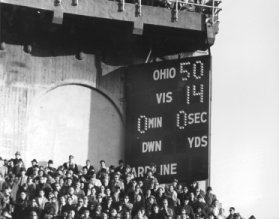

Tom Stincic made 23 tackles in that 1968 Ohio State game; he played four seasons in the NFL for Dallas and New Orleans
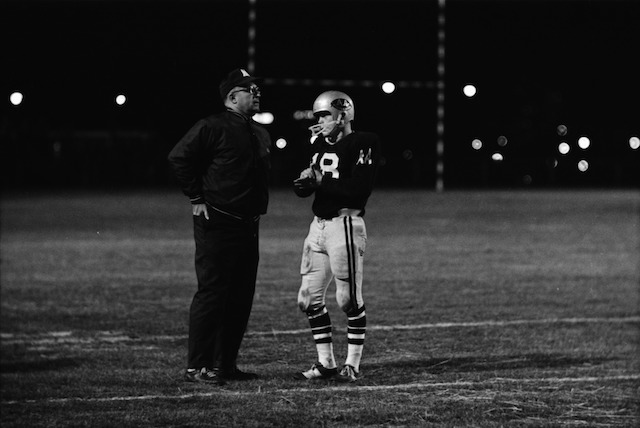
Chuck Ritter was hired at Ann Arbor High School in 1955 after playing as a reserve on the Michigan Football Teams, 1952-1954; he coached as an Assistant until 1967, and finished 13 seasons with two Co-League Championships as the Six-A League added Ypsilanti, 1972-1974, to make it the Seven-A League briefly until the conference ended its competition due to economic concerns during the 1974 Oil Crisis. Ritter's tenure did not start on a high note as his 1967 squad lost six in a row after winning their first two games to finish 2-6, but they finished the 1968 season, 8-1, with a 7-9 loss to State Champion Battle Creek. Pioneer joined the South Central Conference; Ritter's teams were competitive as they finished second in the conferences four times, but his teams also had losing records in three seasons. Ritter's record against arch-rival Ypsilanti Braves was 3-7; he lost the first three, and the final four games. Ypsilanti defeated Pioneer seven games in a row, 1976-1982. Adrian also proved to be a tough opponent in that era; they welcomed Pioneer to the South Central Conference with wins in four of five games including two by a 7-6 count and two by shutout. Ritter was 25-3-1 as JV Coach, and 70-40-1 as Varsity Pioneer Football Coach; he retired as Athletic Director in 1996 after 41 years of service.

Michigan played their first basketball game at the University Events Building on December 2, 1967 with a loss to Kentucky, 79-96 followed by a loss to Duke on December 6, 72-93, but gained their first win over Butler on December 28, 93-76; the "House that Cazzie Built" with a capacity of 12,707 spectators was renamed Crisler Arena in 1969, and renamed the Crisler Center in 2012. It was designed by former Michigan Football Linebacker and Wrestler, Dan Dworsky.
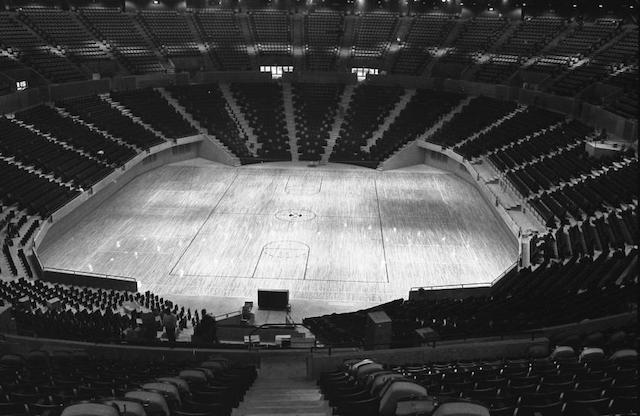
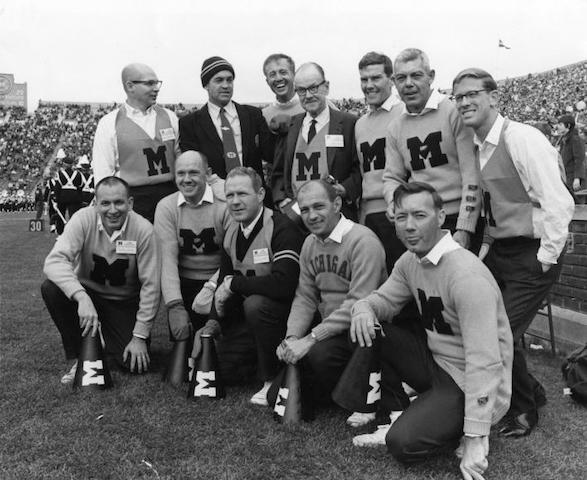
Homecoming in 1967
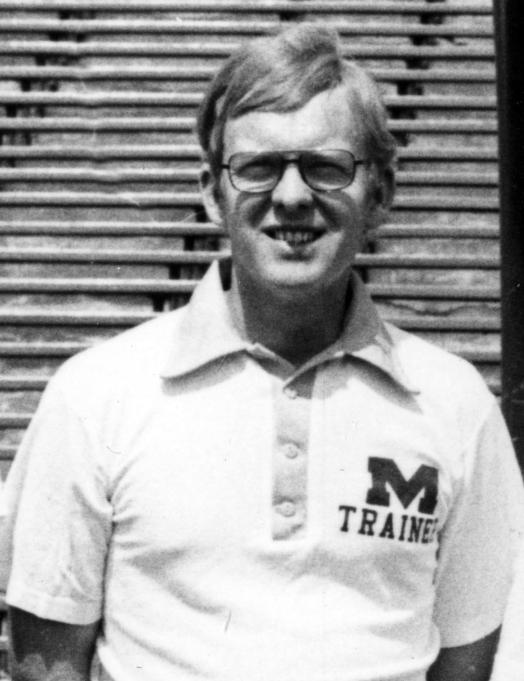
Lindsy McLean was Michigan's Trainer, 1968-1979; he came out publicly as gay February, 2004 after working for the San Francisco 49ers for 24 seasons, 1979-2003.
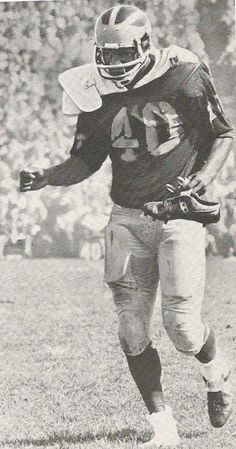
Ron Johnson became Michigan's First African-American Football Captain in 1968; Johnson's record of 19 touchdowns scored in a season is still a record for the Wolverines, and he later played seven seasons in the NFL with two Pro Bowls
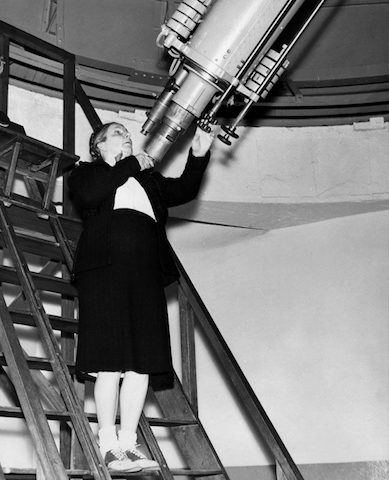
Hazel "Doc" Losh retired in 1968 after 41 years of teaching at the University of Michigan; she came to Ann Arbor in 1927 to teach astronomy in the year the stadium was built, and became a Michigan Football Diehard Fan for 52 seasons; she taught many football players through the decades, and became known for boosting their grade point average. She was recognized at Michigan Football Stadium, and well-loved by the Michigan Football Family. She attended her last Wolverine football game in 1978.
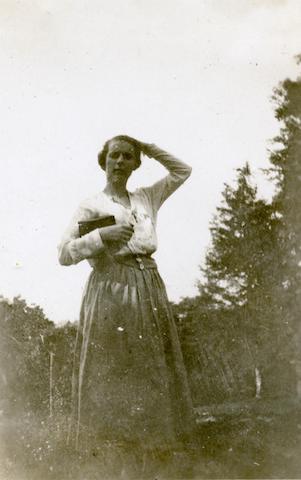
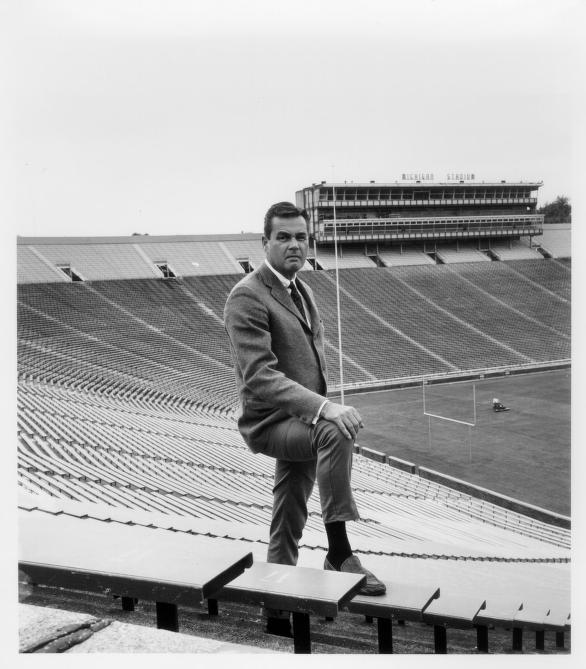
Don Canham became Michigan's new Athletic Director in 1968; both Fritz Crisler and Les Etter retired


Canham hired Will Perry as his first Sport Information Director, 1968-1980; he promoted Perry to Assistant Athletic Director, 1980-1994. Perry played baseball at Michigan, 1953-1955.
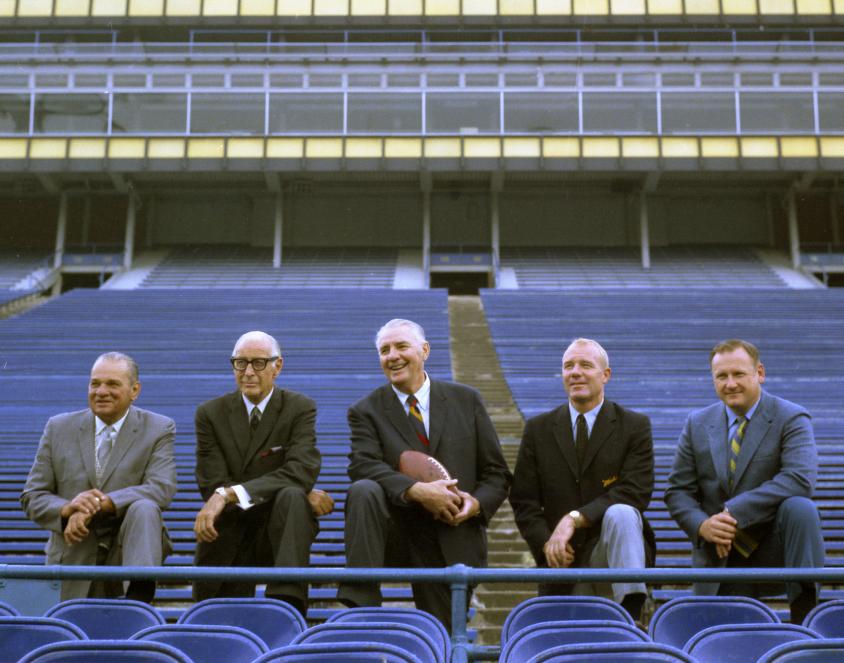
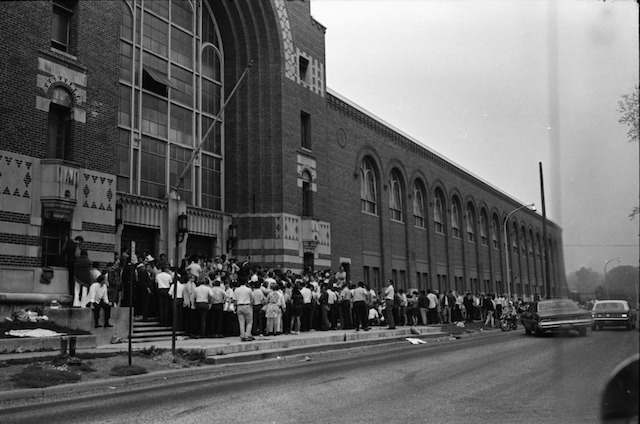
Season and student tickets for Michigan home football games have been a "hot" item for decades as this line at the IM Building in 1969 showed
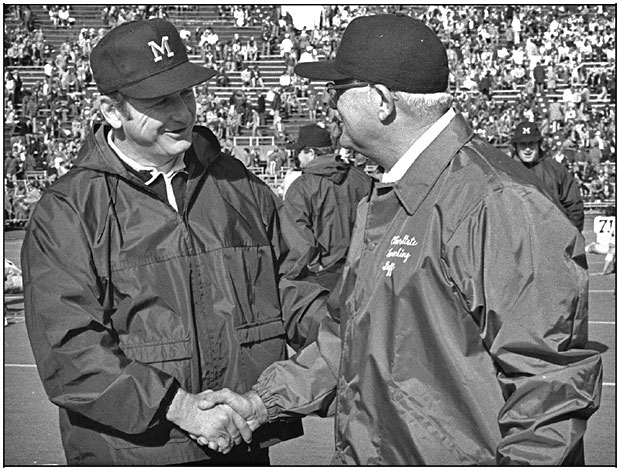
Bo Schembechler was hired by Michigan December, 1968 for an annual salary of $21,000 after the position was first offered to Joe Paterno by new Athletic Director Don Canham; he coached 21 seasons with a 234-65-8 record including 13 Big Ten Championships, but no National Championships. His Bowl Record was 5-12 in Bowl Games with 2 Rose Bowl wins 8 defeats. Schembechler was a former Assistant Coach under Woody Hayes at Ohio State, 1952-1953, and was 5-4-1 in games against his mentor, and 11-9-1 against the Buckeyes overall. There was no bigger win for Schembechler and the Wolverines than the 24-12 upset in Bo's first season.

There has never been a bigger or more important win in Michigan Football History than the 24-12 upset of #1 Ohio State in 1969 as the Wolverines gained revenge for the 14-50 1968 stomping by Coach Hayes
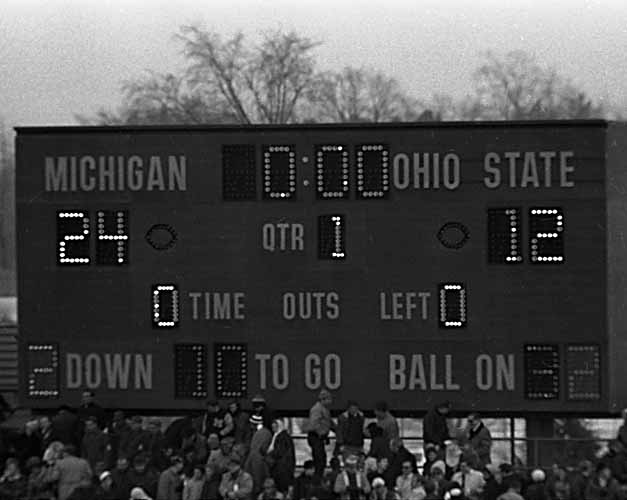

The Den of the "Mellow Men" of Michigan at 1345 Geddes included Thom Darden, Reggie McKenzie, Butch Carpenter, Mike Oldham, Glenn Doughty and Billy Taylor; during their stay, the Wolverines grew tougher because they weren't so mellow on the football field, 1969-1971. As more African-American players came to Ann Arbor, the Vietnam War protests and Black Action Movement had great impact on the University of Michigan as well as Ann Arbor.
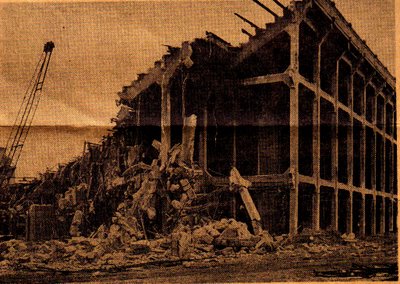
The end of an era crashed with the demolition of the concrete stands at Ferry Field in 1969
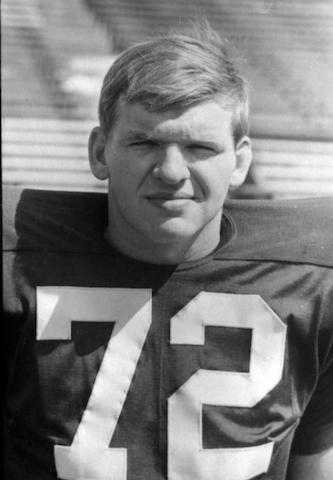
Dan Dierdorf was one of the greatest offensive tackles at Michigan, 1968-1970; he was drafted by the St. Louis Cardinals, and played 13 NFL seasons with 6 Pro Bowl selections. In his retirement, Dierdorf became a broadcaster, and covered Monday Night Football, 1987-1999, with ABC, and covered the NFL, 1999-2013, as an analyst before becoming a Wolverine Broadcaster, 2014-2019. His daughter, Katie, played basketball at Michigan, 2005-2008.
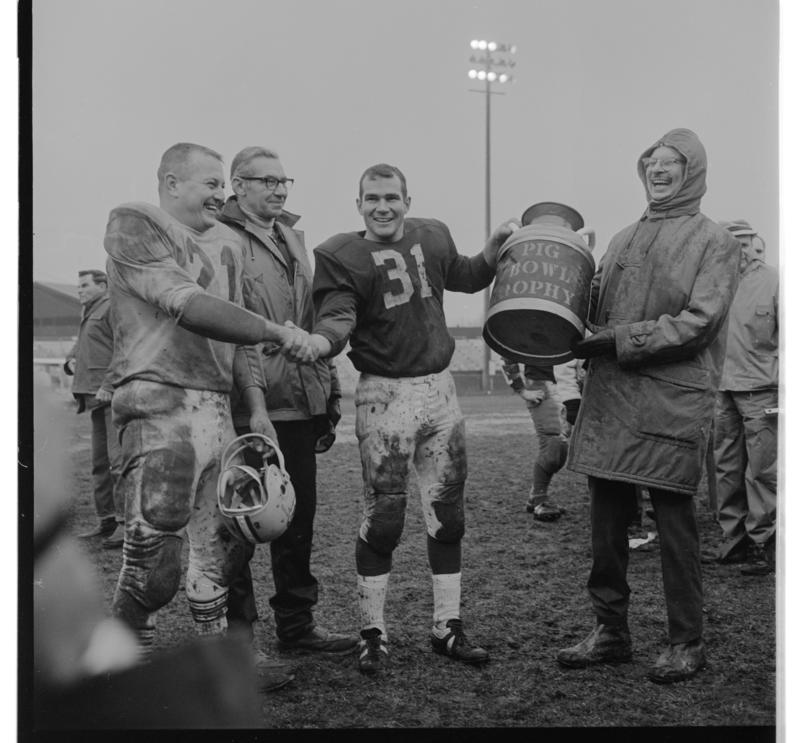
The Pig Bowl was held at Hollway Field on December 7, 1969 with the Ann Arbor Police squad (the Fuzz or Goats) handling the Washtenaw County Sheriffs (the Pigs), 19-0. Officer Tom Minnick shakes Sheriff Doug Harvey's hand with Ann Arbor Police Chief Walter Krasny smiling and Judge Sandy Elden presenting the trophy. The event continued for four seasons for the charity of needy children in the county.
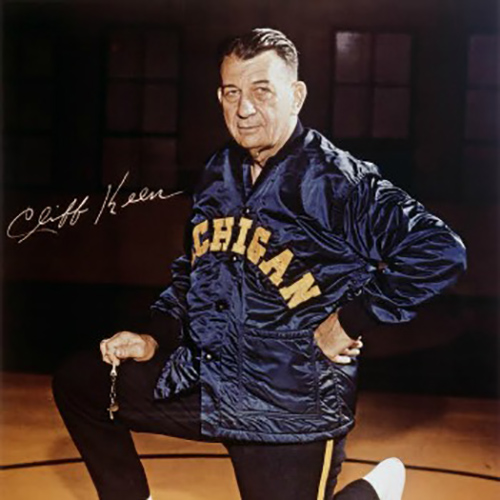
Cliff Keen retired in 1970; he served the Michigan Football Program as an Assistant Coach, 1926-1958, for 33 seasons and was Head Wrestling Coach, 1925-1970, for 45 seasons. He started Cliff Keen Wrestling Products in 1958, and Cliff Keen Athletic is now run by his grandson, Tom Keen
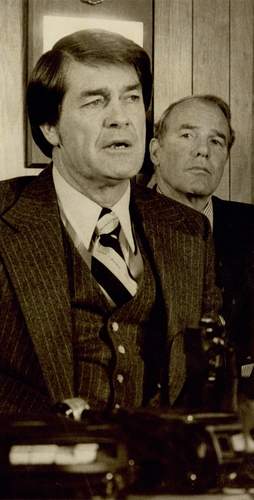
Bump Elliott was promoted to Assistant Athletic Director, but left to become Iowa's Athletic Director, 1970-1991. Elliott's son, Bob, left Ann Arbor to play defensive back for the Hawkeyes, 1972-1975. Bob coached NCAA for 38 seasons after playing for Iowa. Bump built the Iowa Football Program into one of the most respected nationally after he hired Hayden Fry, 1979-1998, as Head Coach; the Hawkeyes won three Big Ten Championships with 14 Bowl appearances during his tenure. Elliott also hired Dan Gable away from arch-rival, Iowa State; he won 21 Big Ten Conference Championships in a row in wrestling, 1976-1997, with 15 NCAA Championships, 152 All-Americans, 106 Big Ten Champions, and 12 Olympians while posting a dual meet record of 355-21-5.

Newt Loken became the Spirit of Michigan with his unbelievable Cheerleading Squad that amazed spectators at football games, an acrobatic Trampoline Team that were National Champions in 1969 and 1970 with World Titlists, Ed Cole, Gary Erwin, Dave Jacobs, and Wayne Miller, and National Championship Gymnastics Teams in 1963 and 1970 and 12 Big Ten Championships, 1961-1966, 1968-1971 plus 1973 and 1975. His record as Head Coach was 250-72-1; he came to Ann Arbor in 1944 to work on his master's degree after winning the Big Ten and NCAA All-Around Gymnastics Championships at Minnesota in 1941 and 1942. He returned gymnastics to varsity status in 1947, and his gymnastics squads performed regularly at halftime of basketball games. He earned a doctorate in 1955, and became a kinesiology professor until his retirement in 1983.
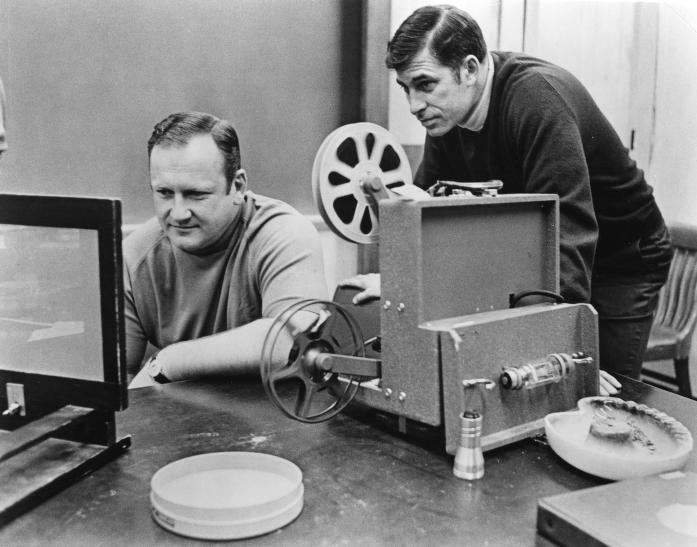
Schembechler and Moeller review film in 1971; a significant way the game has changed included the amount of time devoted to reviewing both practice film and game film to prepare strategies, recruit, and improve each player and position group

Chuck Heater and Ed Shuttlesworth were two of the stalwart running backs for the Wolverines, 1971-1973, when Michigan was 31-2-1. Heater has coached with 13 different NCAA Football programs, 1976-2019
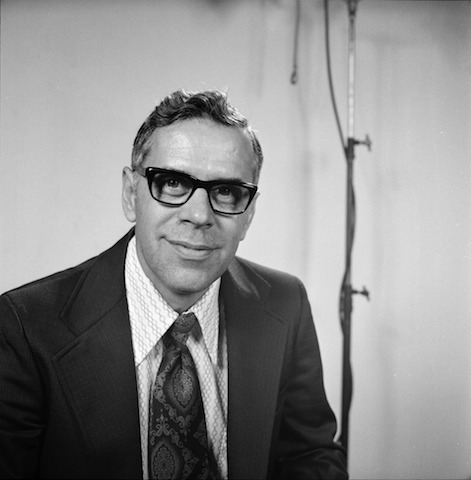
Don McEwan became Athletic Director in 1972 when Frank Kline retired; McEwan was a State Champion in Track an Ann Arbor High School, and went on to the University of Michigan where he won NCAA Championships in 1950 and 1951 in the Two-Mile Run along with 6 Big Ten Championships. He set a NCAA Record with a 9:01.9. He set American and World Records for the indoor 2 mile run. His 2 mile record stood at the University of Michigan for 55 years. He was hired by Ann Arbor Public Schools in 1958 as a mathematics teacher and Assistant Track Coach, and later coached cross country and became a guidance counselor in 1962.
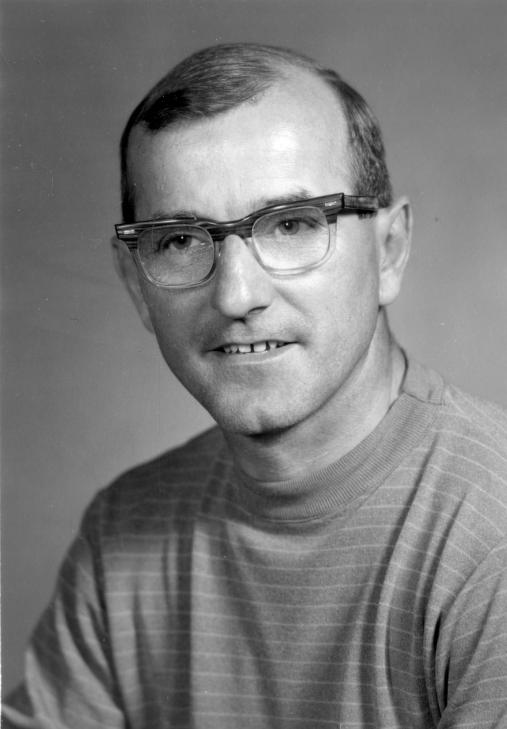
The integration of African-Americans into NCAA moved slowly; the Big Six Conference became integrated in 1947, and the Missouri Valley Conference in 1950. Maryland was the first team in the Atlantic Coast Conference to integrate in 1963, and the Southwest Conference integrated in 1966. Kentucky signed Nat Northington in 1965, and he played his first game in 1967. Later, Lester McClain became a Tennessee Volunteer in 1968, James Owen signed at Auburn, Leonard Georg and Willie Jackson at Florida, Robert Bell and Frank Dowsing at Mississippi State in 1969, James Hurley and Taylor Stokes at Vanderbilt, Richard Appleby, Horace King, Chuck Kinnebrew, Larry West at Georgia in 1970, John Mitchell and Wilbur Jackson in 1971, and Mike and Ben Williams at Mississippi in 1971. Texas and Arkansas integrated in 1970. The first African-American Football Letterman at Michigan was George Jewett in 1890 followed by Willis Ward in 1932 and Julius Franks in 1941. John Behee interviewed dozens of African-American athletes at the University of Michigan, and published, "Hail to the Victors," in 1969 to give some perspective to the athletic, academic and social life of negroes at the University of Michigan in the face of racial discrimination.
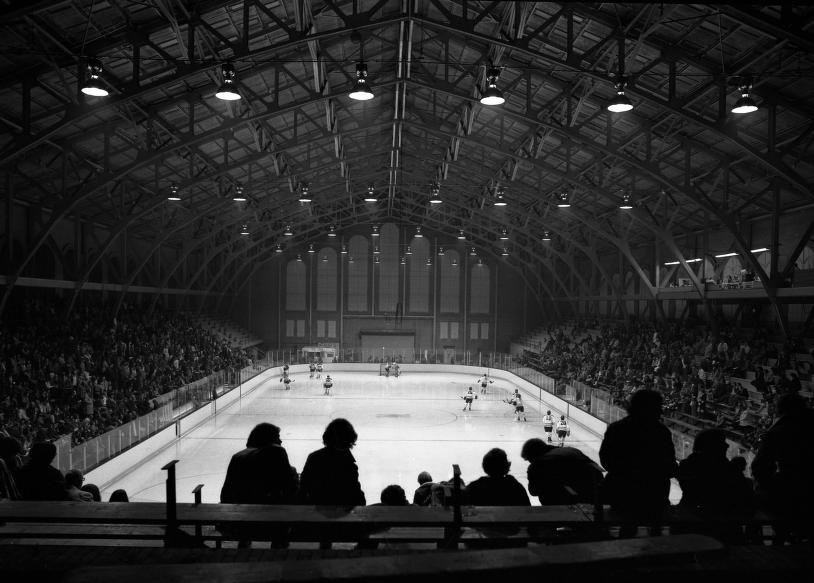
Yost Field House became Yost Ice Arena on November 2, 1973
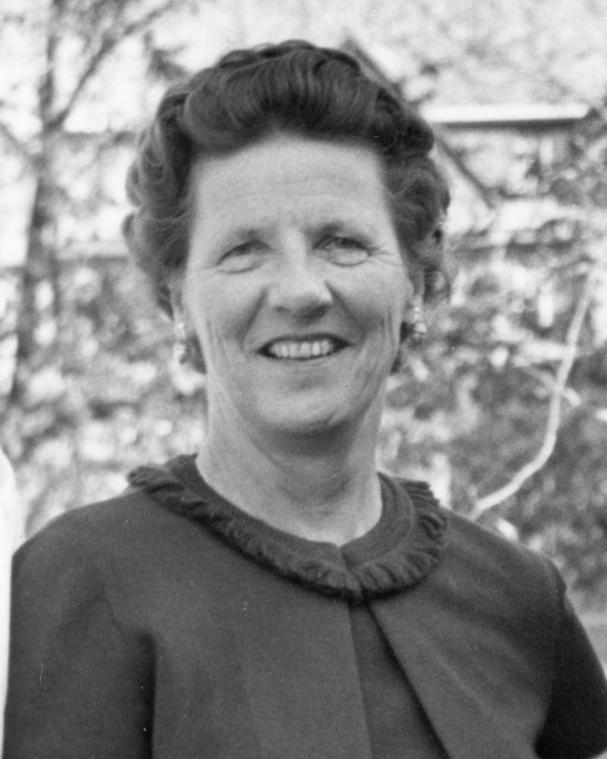
Title IX was enacted in 1973; Michigan added Women's Varsity Sports in Basketball, Field Hockey, Swimming & Diving, Synchronized Swimming, Tennis, and Volleyball; they added gymnastics in 1975, Golf, Softball, and Track in 1977, and Cross Country in 1979. Both Athletic Director Don Canham and Football Coach Bo Schembechler hindered its implementation, and underfunded these "required" sports at Michigan with its $4.5 million budget. Women's Athletic Directors Marie Hartwig, 1973-1976, and Phyllis Ocker, 1976-1992, were frustrated at every turn while trying to implement varsity athletic programs for women, and turned to legal remedies with Jean Ledwith King and others. The Women's Athletic Building on Palmer Field was demolished in 1975.
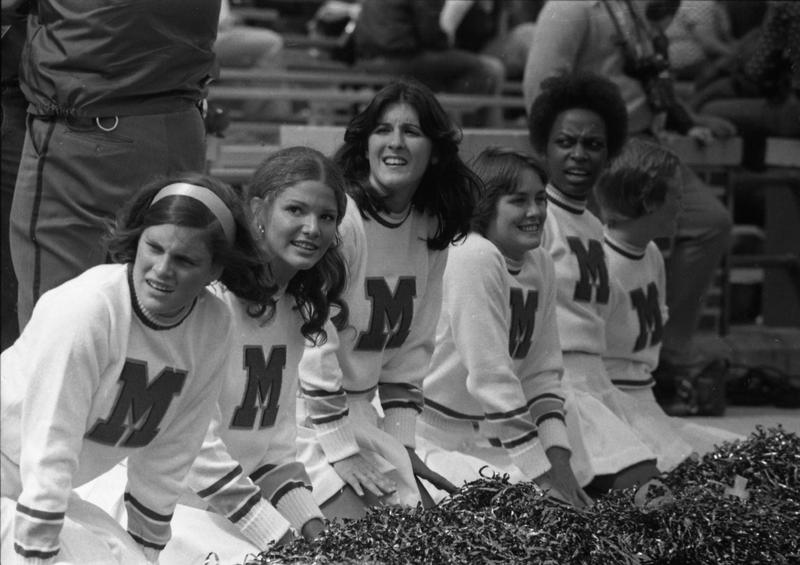
Michigan broke their long-standing tradition of all-male cheerleaders in 1974; Athletic Director Don Canham's daughter, Clare, was on the original Pom-Pom squad
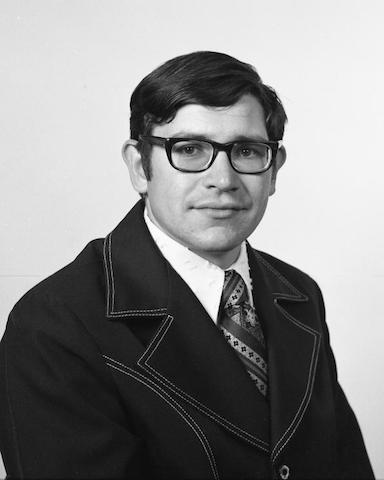
Jon Falk joined the Michigan Football Program in 1974 as Equipment Manager; he published Forty Years in the Big House: Tales From My Four Decades as a Wolverine after he retired in 2013
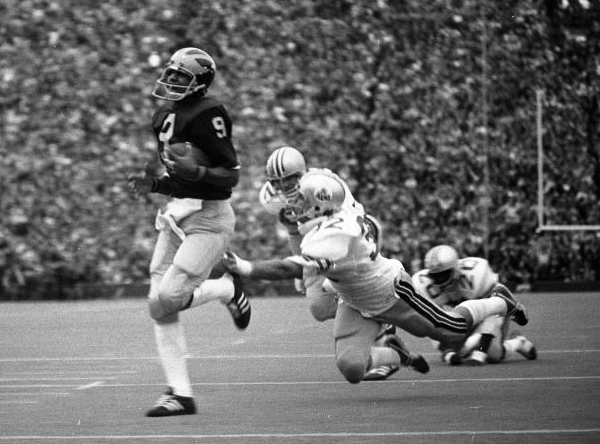
Dennis Franklin was Michigan's first African-American Quarterback; he started from 1972-1974 with a 30-2-1 record, and none of his teams went to a Bowl game. The most controversial game was the 10-10 tie in 1973 that resulted in a Rose Bowl vote for Ohio State.
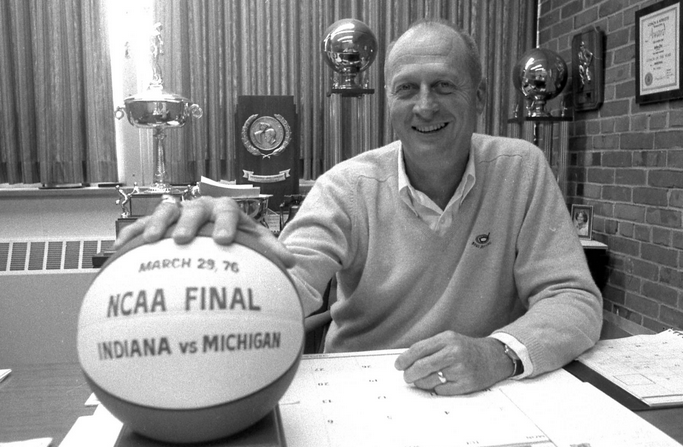
Johnny Orr replaced Dave Strack as Head Basketball Coach, 1968-1980; he was Strack's Assistant, 1964-1968, after being an Assistant at Wisconsin, 1959-1963, and playing at Illinois, 1944-1945. Orr was Big Ten Coach of the Year in 1974, and National Basketball Coach of the Year in 1976 after leading Michigan to NCAA Runner-Up; he finished his career with a record of 209-113 for the Wolverines.

Don Canham, a marketing genius, started a streak in 1975 for football attendance; Michigan has played 264 consecutive home games with over 100,000 fans attending from October 25, 1975 to present (end of 2018 season)
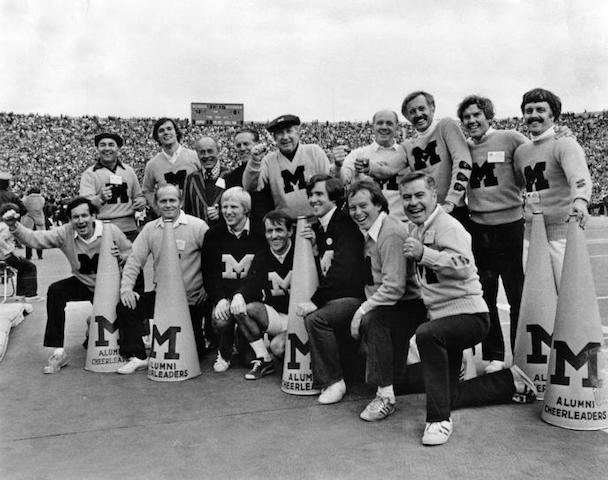
Homecoming in 1975
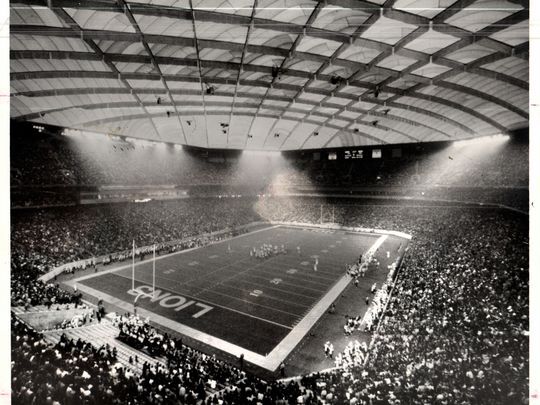
The Pontiac Silverdome was built for the Detroit Lions in 1975; the only time they won the Central Division since its creation in 1967 was in 1983, 1991, and 1993. They moved to the North Divsion in 2001 with no titles earned to date.

Metal shop students displayed the new Hollway Field sign in 1976 atop the Ticket Building
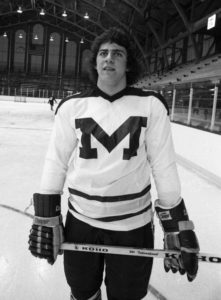
Don Dufek earned 3 varsity letters at Michigan in football, but 4 in hockey; he was the first Michigan Football player drafted by both the National and World Hockey Leagues in 1974, but he chose a professional football career after earning All-American honors for the Wolverines. Dufek played for the Seattle Seahawks, 1976-1984, and was voted Captain at both Michigan and Seattle. He came back to Ann Arbor where he's been involved in the construction business. Throughout the years, Michigan Football has been connected to all the other Wolverines sports intimately; wrestling, track, baseball, basketball, golf, hockey and swimming. Several Wolverines have been recognized All-Americans in multiple sports including: Benny Oosterbaan, Pete Elliott, Harlan Huckleby, Rick Leach, and Butch Woolfolk while others have not achieved All-American status in two sports, but have almost achieved that status as athletes including: Dave Allerdice, Howard Auer, Bill Barclay, Jack Blott, Keith Bostic, Frank Cappon, Bob Chappuis, Norm Daniels, Robert Dunne, Dan Dworsky, Bump Elliott, Forest Evashevski, Bill Freehan, David Hall, Harry Kipke, Ron Kramer, Ferris Jennings, Forrest Jordan, Don Lund, Ernie McCoy, Benny McRae, Fred Norcross, Bill Orwig, Ray Parker, Lowell Perry, Dave Porter, Neil Snow, Fred Trosko, Willis Ward, Thomas Wilcher, Irv Wisniewski, etc. The participation of football athletes in other sports has helped their development in football as well.

Bill Dufek started 24 games at Right Tackle for the Wolverines, 1973-1976, and earned All-American status in 1976; one of his highlights was a 22-0 shutout of the Buckeyes at Columbus after a 0-0 halftime

Calvin O'Neal had a record 24 tackles against Purdue on November 6, 1976, and finished his career with 378 tackles, 1974-1976
In 1977, the NCAA enacted Scholarship limits on football due to Title IX and gender equity mandates for Division I schools; previously, each school would determine how many scholarships it could afford (the NCAA limit of 105 in 1973, but there were several particularly in the South that could "afford" as many as 150 with generous "donors" so the NCAA didn't enforce the limit), but limits of 95 full-ride scholarships were enacted.

Jim Harbaugh idolized Rick Leach, and was kicked out of several practices by Bo Schembechler; Jim's father, Jack Harbaugh, worked on Bo's Staff, 1973-1979, coached defensive backs. Leach was an All-American in both football and baseball, and played for 4 major league teams, 1981-1990, after his Wolverine football career, 1975-1978. The Wolverines were 38-8-2 under Leach's leadership at quarterback with 3 Big Ten Championships and a 3-1 record against the Buckeyes.

Mike Kenn came to Michigan in 1974 as a 220 lbs. Tight End; he left in 1978 as an All-American Left Tackle, and played 17 seasons for the Atlanta Falcons with 5 years selected for the Pro Bowl
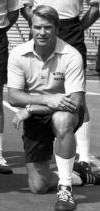
Don Nehlen was hired by Bo Schembechler in 1977 to teach him, his staff, and the Michigan Football Team how to throw the football and the intricacies of a successful passing game in Rick Leach's Junior season; he was Michigan's first Quarterbacks Coach, and worked with Leach and John Wangler. He spent 3 seasons at Michigan winning two Big Ten titles, then Nehlen became Head Coach at West Virginia, 1980-2000, and won over 200 games for the Mountaineers and Falcons of Bowling Green, and one of his former players, Rich Rodriquez, 1981-1984, went on to become Head Coach for his alma mater, 2001-2007, as well as Michigan's Head Coach, 2008-2010.
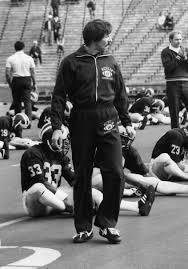
Mike Gittleson became Michigan's first Strength & Conditioning Coach for Football, 1978-2007. The emphasis on the weight room for football players was underemphasized for decades at Michigan.


Ann Arbor High School 1965 graduate, Howdy Holmes, was too small to play football so he got involved in auto racing; he raced 72 times, 1979-1988, with 26 Top 10 finishes, and was the Indianapolis 500 Rookie of the Year in 1979 with a 7th place finish.
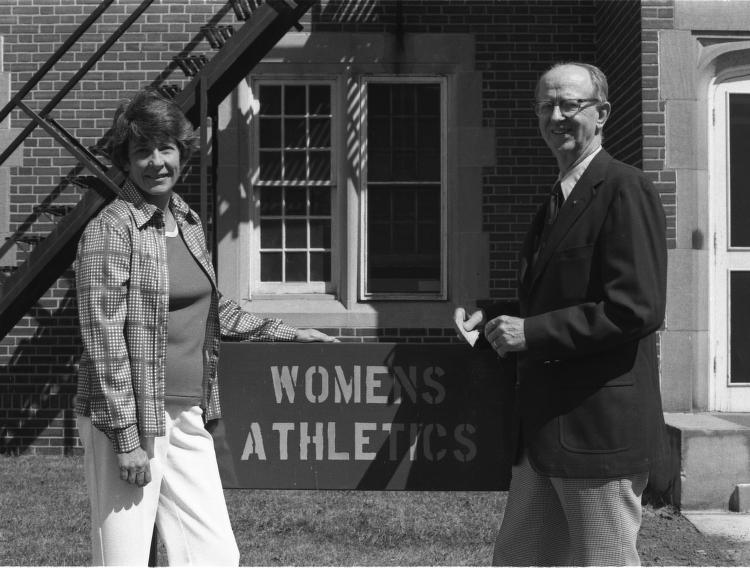
Women's Athletic Director Phyllis Ocker with Band Director George Cavender in 1978; Ocker began teaching kinesiology at Michigan in 1961, and she coached field hockey, basketball, and volleyball. Cavender worked at Ypsilanti Public Schools prior to becoming Revelli's Assisant Band Director, 1952-1971, and was Band Director, 1971-1978. Cavender allowed 10 women in the band in 1972.
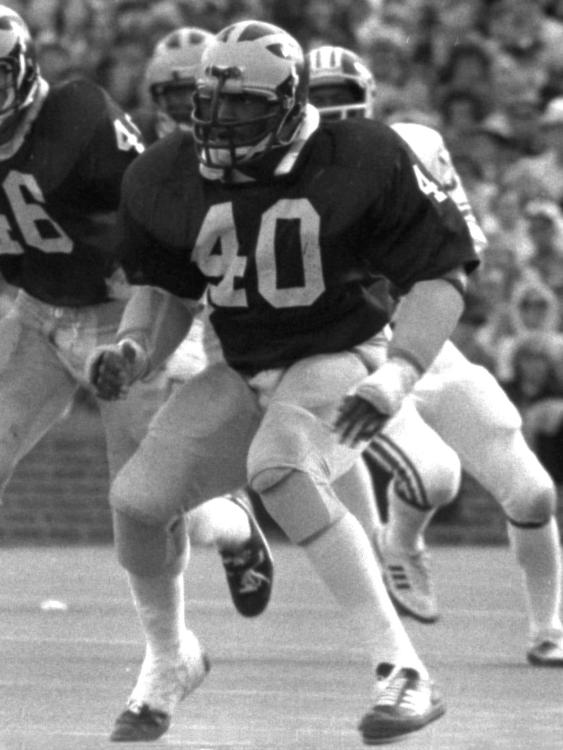
All-American Ron Simpkins became the Wolverines leading tackler, 1976-1979, with 415 tackles; he played in the NFL, 1980-1988. His record of 174 tackles in the 1977 is still a Michigan record.

Mike Harden played Safety at Michigan, 1976-1979; he then played for the Denver Broncos and Oakland Raiders, 1980-1990 with 38 NFL interceptions

The Bob Ufer Big Heart Award was presented in 1980 with Bo Schembechler, Rob Lytle, Ufer, Fritz Crisler, Tom Harmon and Ron Kramer present. The Ufer Award has been presented to a Letterwinner M Club member for outstanding service to the University of Michigan and the club since 1981

Bo got his first Rose Bowl win on January 1, 1981 over Washington, 23-6; he was 2-8 in the "Grandaddy of Them All." Schembechler was offered $3 million over 10 seasons to coach at Texas A&M on January 15, 1982; however, he declined the offer due to enticements offered by Tom Monaghan to keep him at Michigan including ownership of Domino Pizza franchises. Monaghan also purchased the Detroit Tigers in 1983. Athletic Director Don Canham also raised his salary to $85,000 from $60,000.

Schembechler and Monaghan
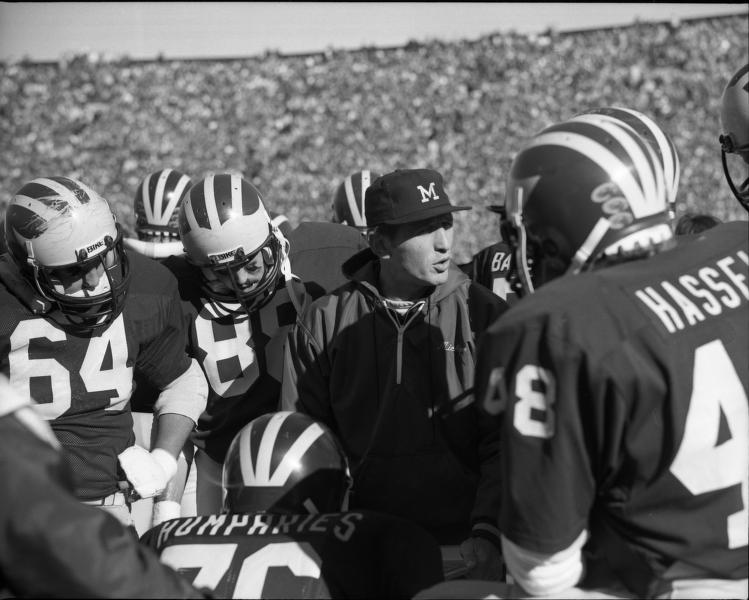
Bill McCartney coached at Michigan, 1974-1981; he became Head Coach at Colorado, and led the Buffalos to a National Title in 1990 with three Big Eight Championships, 1989-1991. He founded the Promise Keepers in 1990, and was named to the College Football Hall of Fame in 2013

Gwen Cruzat became Michigan Faculty Representative, 1981-1990; she taught at the University of Michigan, 1970-1993, and was a Professor at the School of Information and Library Studies. She replaced Paul Gikas who was faculty representative, 1982-1988, after replacing Markus Plant.
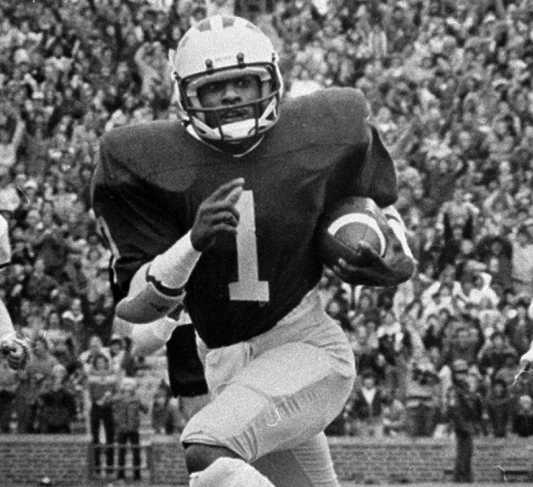
Anthony Carter became Michigan's First 3-Time All-American in 1982 since Bennie Oosterbaan in 1927; he played for the World Champion USFL Michigan Panthers in 1983, and continued his NFL career through 1995
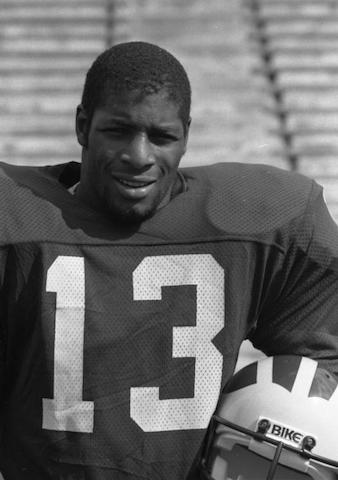
Keith Bostic was Captain at both Ann Arbor Pioneer High School in 1978 and the University of Michigan, 1979-1983; he played in the NFL, 1983-1990, also captained the Houston Oilers, and earned Pro Bowl recognition
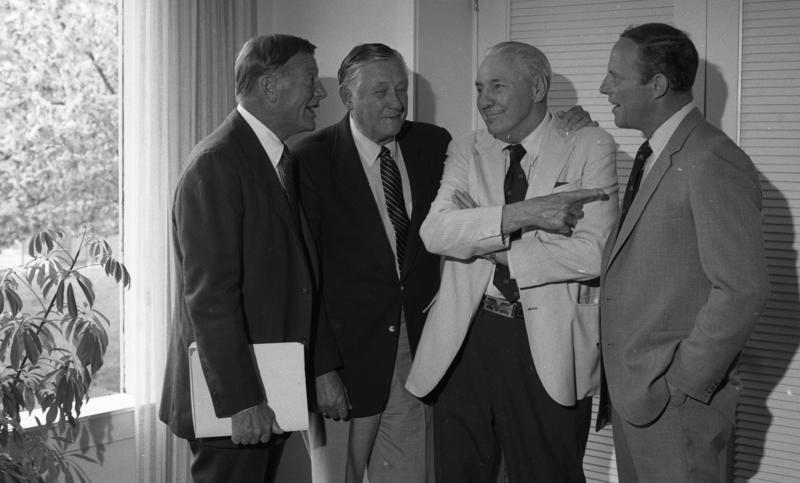
Pete Elliott, Bill Orwig, Benny Ooosterbaan, and Jack Lousma on May 23, 1984; Orwig was an Assistant Football Coach with Oosterbaan for 6 seasons, 1948-1953, and later became Athletic Director at Nebraska and Indiana, 1954-1975. Orwig played football and basketball for the Wolverines, 1927-1930.

Red Berenson was named Wolverine Hockey Coach May, 1984
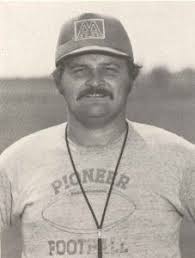
Chuck Lori had a great record as Pioneer's Coach; he was 90-22 with two State Championships in 1984 and 1987, and his 1985 squad lost in the State Semi-Finals after an undefeated season including five shutouts. His 1986 teams lost in the Regional final. His 1987 Championship team overcame two losses, and avenged an early season defeat to East Lansing, 7-18, with a 14-7 win in the Regional Finals as well as handling Detroit Catholic Central twice, 7-2, and 3-0. Lori's teams accumulated 32 shut out wins in that stretch.
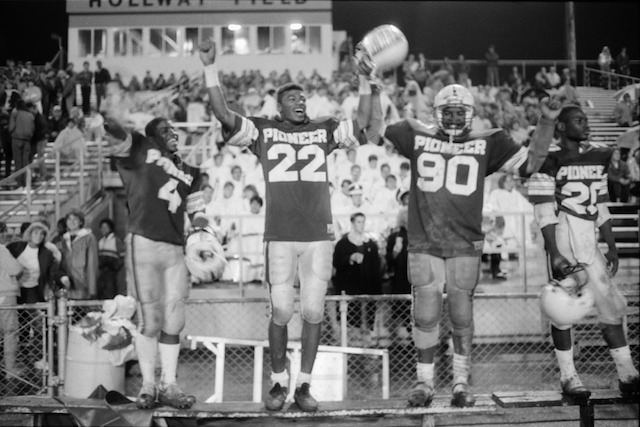
The Pioneer bench cheers as the Ypsilanti Braves went down in 1985, 34-12

Michigan Football Training Staff became larger in 1986; two of the staff included included Head Trainer Russ Miller, 1979-1990, (top row far right) who later served the Detroit Tigers, 1991-2002, and Head Trainer Paul Schmidt, 1991-2016 (front row far right)
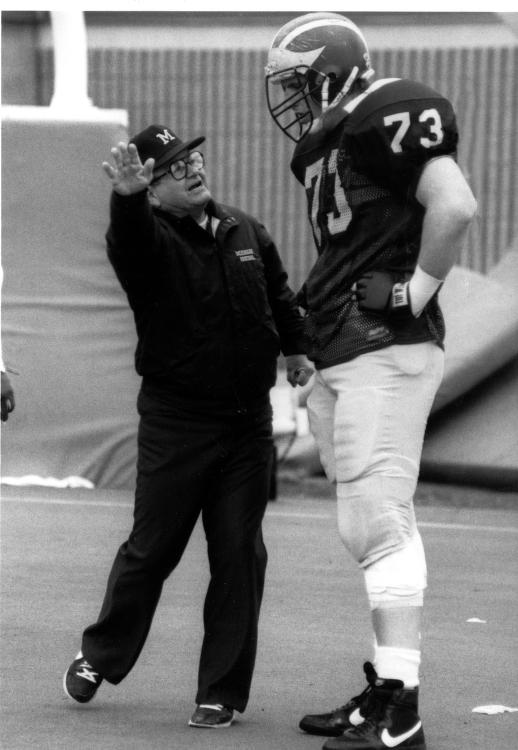
Jerry Hanlon worked for 23 seasons, 1969-1991, as an Offensive Line Coach, and Bo later assigned him as Quarterbacks Coach; he continues to be a voice for Michigan Football through 2019 with podcasts
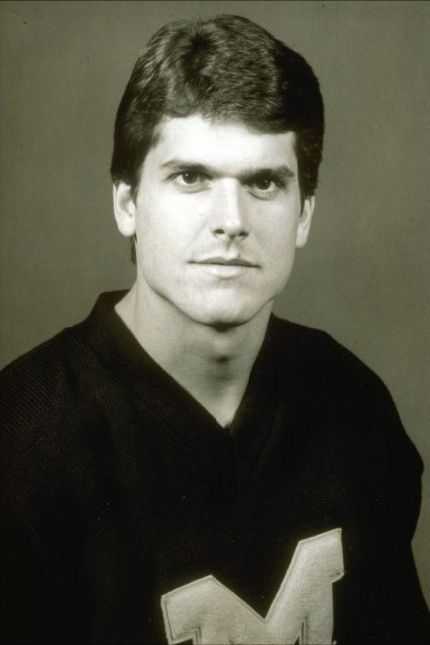
Jim Harbaugh in 1986; he attended Pattengill and Tappan before Ann Arbor Pioneer High School, but left for Palo Alto, California after his father, Jack, took a job at Stanford in 1980 as Defensive Coordinator after 7 seasons in Ann Arbor. Jack moved the family to Kalamazoo in 1982 when he became Western Michigan's Head Coach, 1982-1986
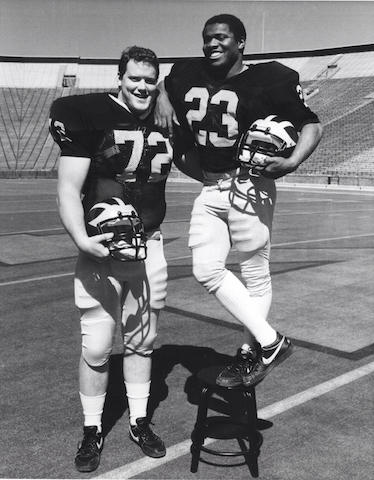
Johnn "Jumbo" Elliott and Jamie Morris were Captains of the 1987 Wolverine squad. Elliott played in the NFL, 1988-2002, after earning All-American recognition for two seasons at Michigan with a Pro Bowl appearance and a Super Bowl Championship Ring. Jamie Morris played in the NFL and CFL, 1988-1991, and set a record with the most rushing attempts in a game with 45. Morris set a number of Wolverine records, and many have still not been broken; he worked at the University of Michigan, 1998-2010, as Development Manager. At 5'7," Schembechler told Morris he'd never play running back at Michigan because he was too short, and recruited him as a kick returner.
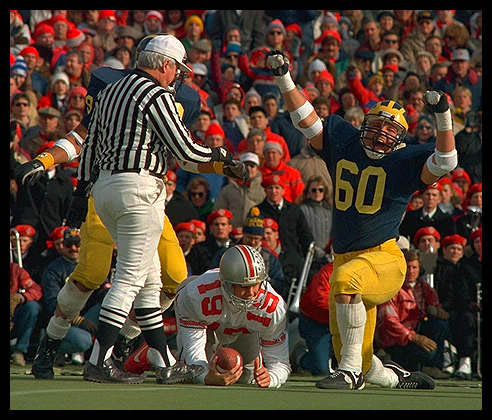
Mark Messner was a 4-Time All-Big Ten 1st Team Honoree and All-American, and still holds Wolverines records with 5 sacks in a game, 36 sacks for a career, and 70 tackles for loss, 1985-1988

Gerald Ford and Bo Schembechler in 1988
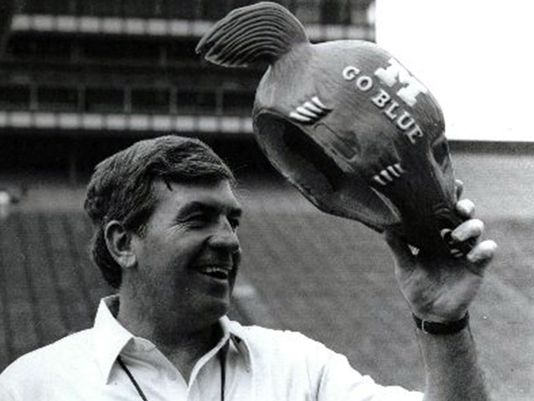
Gary Moeller replaced Bo Schembechler January, 1990; the former Buckeye Captain, 1961-1963, coached defense, 1969-1976, and offense, 1980-1989, at Michigan before accepting the vacant Head Coaching position for the Wolverines, 1990-1994, with 3 Big Ten Championships, 1990-1992, with two Rose Bowls
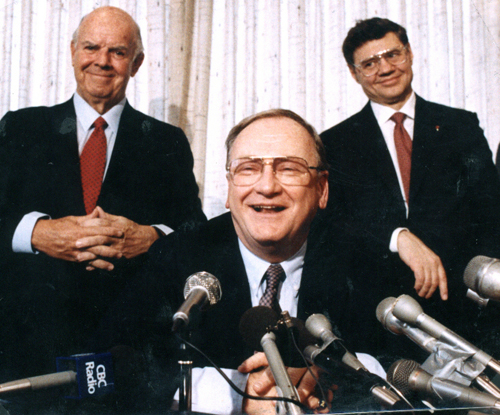
After Schembechler left abruptly on December 8, 1990 to become the Detroit Tigers President after only being on the job since July 1, 1988; Jack Weidenbach became Athletic Director, 1990-1994. After Schembechler fired Ernie Harwell on December 19, 1990 after 31 seasons as Tiger Broadcaster, Schembechler was then fired by Tom Monaghan via fax on August 4, 1992.
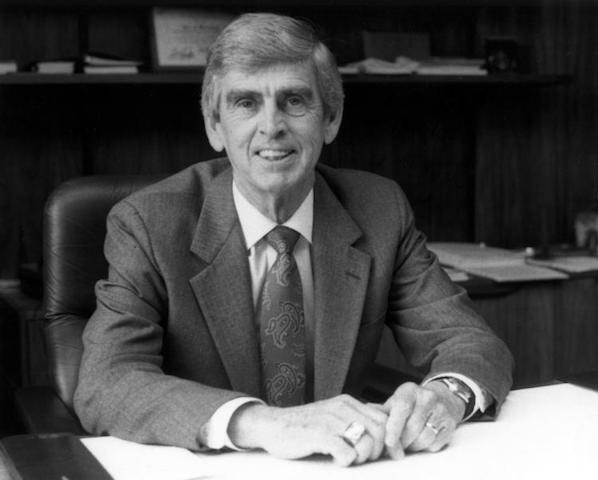

Percy Bates became Michigan's Faculty Representative, 1990-2012; he earned the Pat Summitt Award in 2019 (Bates YouTube). Bates taught at the University of Michigan, 1965-2018

Desmond Howard won the Heisman Trophy in 1991 for the Wolverines; he went on to win the Super Bowl MVP for the Green Bay Packers in 1997

Tirrel Burton retired in 1991 after serving the Wolverines as an Assistant Coach, 1970-1991, in charge of Running Backs
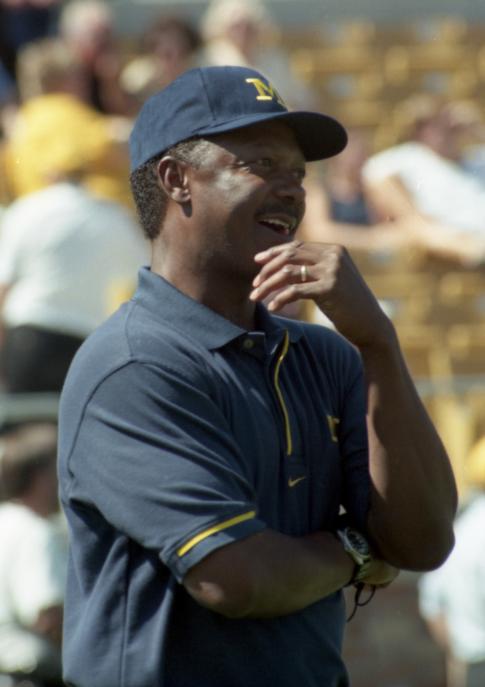
Fred Jackson replaced Burton, and began his legacy as Running Backs Coach, 1992-2014, as he served under Moeller, Carr, Rodriquez, and Hoke
In 1992, the NCAA reduced the amount of scholarships allowed for football at the Division I level from 95 from 1977-1991 to 92 in 1992, 88 in 1993, and 85 beginning in 1994 due to gender equity and Title IX mandates

Les Miles coached offensive line for the Wolverines, 1987-1994, after playing backup guard, 1972-1975; he coached Oklahoma State, Dallas Cowboys, and LSU with a record of 142-55 as a Head Coach with 2 SEC Titles and the 2007 National Championship. He is the 2019 Kansas Jayhawks Coach.

Ann Arbor Pioneer High School Athletic Complex and Hollway Field in 1995
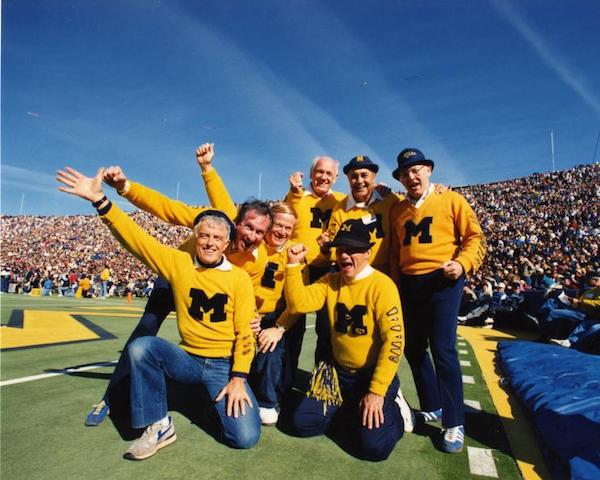
Homecoming in 1995
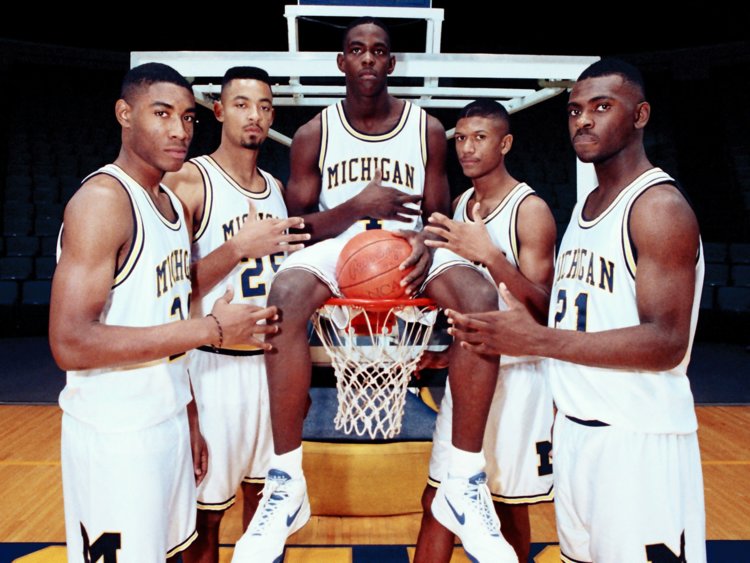
The Fab 5: Jalen Rose, Juwan Howard, Chris Weber, Jimmy King, and Ray Jackson's records were tarnished by the Ed Martin Scandal
On February 17, 1996, a Ford Explorer went out of control on M-14 with a group of Michigan Basketball players following a recruiting visit and party; Coach Steve Fisher was fired October, 1997. Fisher was hired as an Assistant Coach in 1982, and promoted by Athletic Director Bo Schembechler in 1989. Schembechler was responsible for oversight of the basketball program as Athletic Director, 1989-1992 when Ed Martin befriended Chris Webber, and paid out $280,000, 1988-1993, to him. Perry Watson, Fisher's Assistant since 1991, knew Martin since 1977, and Martin frequented games and sat on the bench at Detroit Southwestern games when Watson coached there, 1979-1991. Michigan Basketball Staff telephoned the Martin home 39 times from 1991-1994, and provided 97 tickets to Michigan Basketball games or sporting events free or for a reduced price. Robert Traylor, Maurice Taylor, Albert White, and Louis Bullock were other Wolverine Basketball players besides Webber who took monies from Martin, 1994-1998. The 6 year investigation that followed included a scandal involving booster Ed Martin that unraveled a Basketball Scandal that resulted in heavy NCAA penalties that were announced November 7, 2002 by Athletic Director Bill Martin including:
-
No postseason play in 2002–03, even though the players who took Martin's money were no longer at the school.
-
The school vacated the entire 1992–93 season and every game it played from the 1995–96 season through the 1998–99 season. This included the 1997 National Invitation Tournament title and the 1998 Big Ten Tournament title. It also vacated its two Final Four games in 1992 and its entire NCAA tournament record in 1993, 1996 and 1998. There is a difference between forfeiting a game and vacating a game; a vacated game does not result in the other school being credited with a win. This included virtually the entire career of Fisher's successor, Brian Ellerbe. However, it did not include all games that Webber played or was eligible because all but the final two games of his freshman year were retained.
-
Returning $450,000 received from the NCAA for postseason play in 1992, 1993, 1996 and 1998
-
Banners commemorating the 1992 and 1993 Final Four runs, the 1997 NIT title and 1998 Big Ten Tournament title would be removed from the rafters at Crisler Arena.
-
Two years' probation.

Greg Mattison with Ben Huff and Jarrett Irons in 1996; Mattison coached defense for the Wolverines for 13 seasons, and became Ohio State Defensive Coordinator in 2019
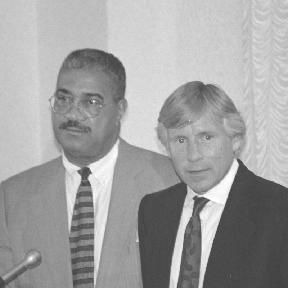
Tom Goss, became the first former Michigan Football Player to be named Wolverine Athletic Director in 1997; his tenure was brief as the oversight from President Lee Bollinger was suffocating during the NCAA Basketball Investigation. Goss played defensive tackle, 1965-1968.

Tom Harmon and Fritz Crisler at the Michigan-Ohio State game in 1997
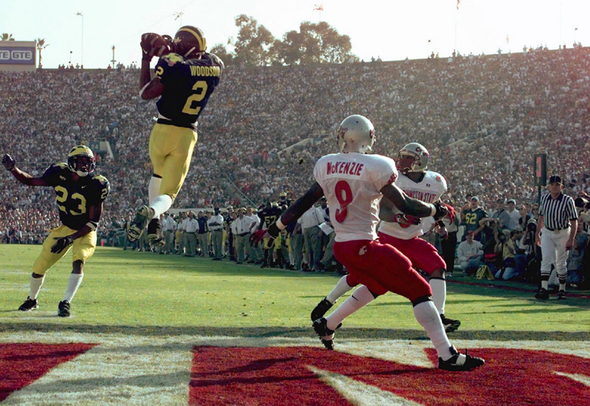
Charles Woodson won the Heisman Trophy in 1997, and led the Wolverines to a National Championship; he played in the NFL, 1998-2015, and was in the Pro Bowl 9 times
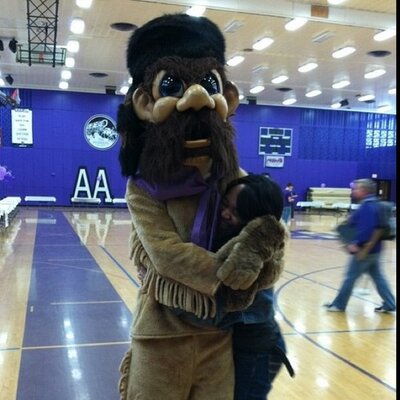
Woody the Pioneer was adopted as the School Mascot in 1997, but it hasn't resulted in more wins for the Pioneers

Michigan Football Scoreboard in 1998
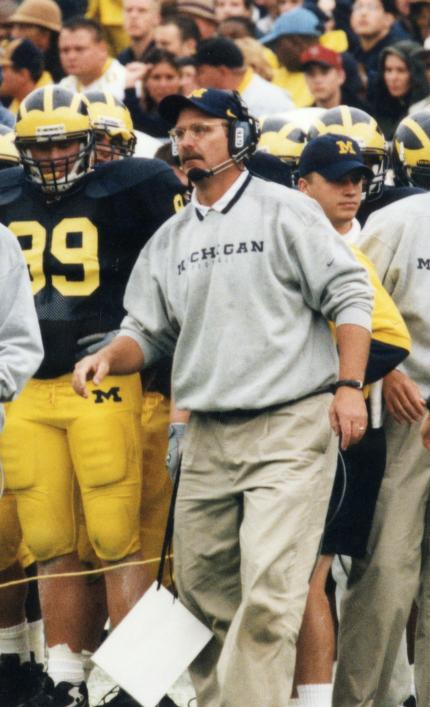
Jim Hermann played linebacker for the Wolverines, 1980-1982; he was an Assistant Coach for 21 seasons, 1985-2005, until coaching in the NFL, 2006-2017. He won the Frank Broyles Award as the NCAA Assistant Coach of the Year in 1997.
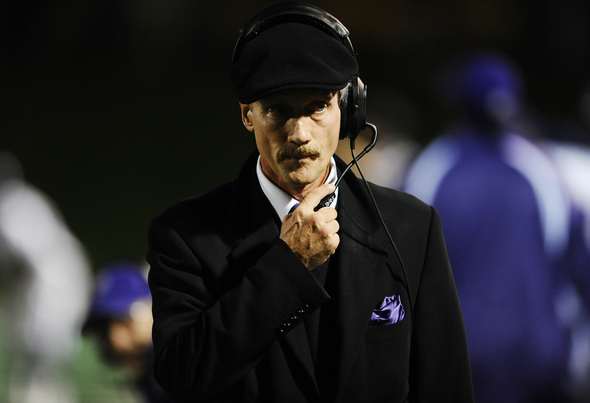
Paul Test, former Defensive Coordinator under Coach Lori, coached, 1991-1994, and 2011-2012; he resigned after the Huron-Pioneer Brawl in 2012. Vince Wortmann, Test's Defensive Coordinator for 4 seasons and 1986 Pioneer Football Captain, was dismissed after pushing a Huron Coach, Corey Gildersleeve, during the brawl. Test finished 38-23 with 3 league championships and was a Regional Finalist in 2012. He played at Dearborn Divine Child, and was a member of the NCAA Championship Pittsburgh squad in 1976 that featured Tony Dorsett. Test toiled for 18 seasons as an Assistant and Head Football Coach at Ann Arbor Pioneer High School, 1980-2012, only second to Dobbie Drake's 24 seasons.
| AAHS Coach | Record | % Win Percentage | Shutouts | Years | Seasons |
| Fonde, Hank | 71W-7L-1T | 90.51% | 29 | 1949-1958 | 10 |
| Miller, George | 23W-3L | 88.46% | n/a | 1908-1910 | 3 |
| Shaffer, F.R. | 5W-1L | 83.33% | n/a | 1918 | 1 |
| Taylor, Kip | 42W-7L-4T | 83.02% | n/a | 1939-1945 | 7 |
| Stielstra, Jay | 51W-12L-1T | 80.47% | 15 | 1959-1966 | 8 |
| Lori, Chuck | 90W-22L | 80.36% | 32 | 1980-1990 | 11 |
| Lawler, Donald | 23W-5L-3T | 79.03% | n/a | 1919-1921 | 3 |
| Hollway, Lou | 88W-49L-12T | 63.09% | n/a | 1923-1938 | 16 |
| Test, Paul | 38W-23L | 62.80% | 7 | 1991-94/2011-12 | 6 |
| Ritter, Chuck | 69W-42L-1T | 62.05% | 18 | 1967-1979 | 13 |
| White, Chuck | 44W-28L | 61.11% | 4 | 2000-2006 | 7 |
| Springer, Durand | 20W-12L-4T | 61.11% | n/a | 1896-1900 | 5 |
| Kennedy, George | 6W-4L | 60.00% | n/a | 1915 | 1 |
| Gold, Jeremy | 23W-17L | 57.50% | 1 | 2007-2010 | 4 |
| Apple, William "Doc" | 19W-15L | 55.88% | n/a | 1911-1914 | 4 |
| Annese, Tony | 10W-8L | 55.55% | 2 | 1995-1996 | 2 |
| Fox, Pat | 16W-13L | 55.17% | 1 | 1997-1999 | 3 |
| Joseph, Stanley | 7W-6L-2T | 53.33% | n/a | 1916-1917 | 2 |
| Brown, Jari | 18W-20L | 47.37% | 3 | 2013-2016 | 4 |
Bellers, Bill Jones, Paul |
8W-10L 3W-5L |
44.44% ?% |
1 1 |
2017-2018 1903 |
2 1 |
| Drake, Dobbie | 6W-17L-1T | 27.08% | n/a | 1946-1948 | 3 |
Since Lori left the Pioneer Football Team in 1990, they have gone through seven different head coaches, 1991-2018: Paul Test, Tony Annese, Pat Fox, Chuck White, Jeremy Gold, Jari Brown, and Bill Bellers. They left the South Central Conference after 1996, and joined the Southeastern Conference in 2000. They have been Conference Champions only six times over those 27 seasons, and Regional Finalists twice; however, eight seasons ended with losing records including the last three seasons in a row, 2016-2018. The last time that happened at Ann Arbor High School was 1928-1930. They had to forfeit two games in 2007 after using an ineligible player, and their record against their County Rival, the Saline Hornets, is 9-15 while being pummeled, 89-7, in the last two outings, and stung for losses in the last seven games in a row after Paul Palka arrived at Saline in 2011. Saline, at one time the smallest school district in the county, has become one of the top football powers in the state. Pioneer is now the third best team in the County as the Chelsea Bulldogs have handled the Pioneers in 7 of 9 meetings. Detroit Catholic Central, founded in 1928 in Detroit, moved to Redford in 1978, and Novi in 2005 with a $30 million facility; the Shamrocks have earned births in the State Finals 17 times since 1979 with 10 State Football Championships with 28 consecutive winning seasons, 1979-2003. Pioneer has a record of 6 wins with 11 losses against Detroit Catholic Central, and has lost all 8 meetings with Regional Power Plymouth Canton.
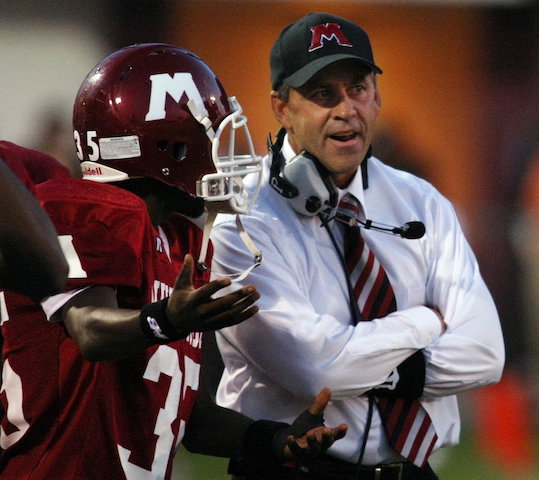
Tony Annese has been a well-traveled, but highly successful coach; he was named NCAA Division II Coach of the Year at Ferris State in 2018 as his Bulldogs were NCAA Runner-Up. His record at Pioneer was 10-8, 1995-1996. He is 300-60 at all levels of coaching.

Pat Fox was 16-13 in three seasons, 1997-1999; Breeann Smith was the first girl in MHSAA History to score a touchdown in 1999
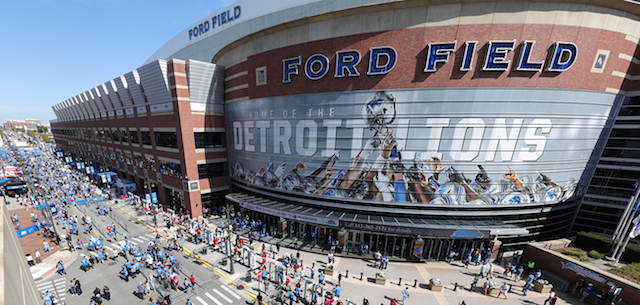
Ford Field opened August 24, 2002; it hasn't helped the Detroit Lions who continue to flounder as one of the worst franchises in the National Football League. They are one of only two franchises who have never earned a Super Bowl birth. In 2008, they were 0-16. Since the Ford Family purchased the franchise in 1963, they have only had winning seasons 17 times, and made the playoffs 12 times since 1957. Their best record was in 1991 when they were 12-4 under Wayne Fontes, and they have employed 18 different head coaches over that span.

Chuck White coached seven seasons, 2000-2006 with a 44-28 record and two SEC league championships
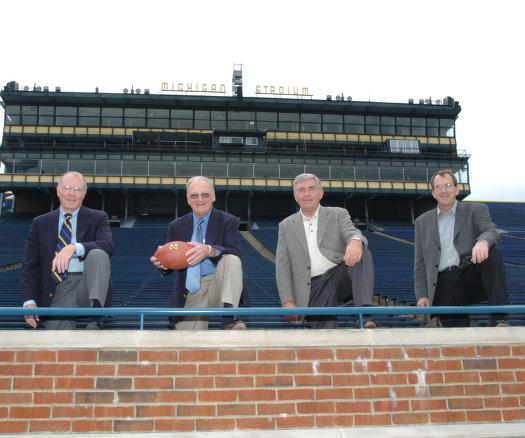
Four Michigan Wolverines Coaches, 1959-2007: Bump Elliott, Bo Schembechler, Gary Moeller and Lloyd Carr
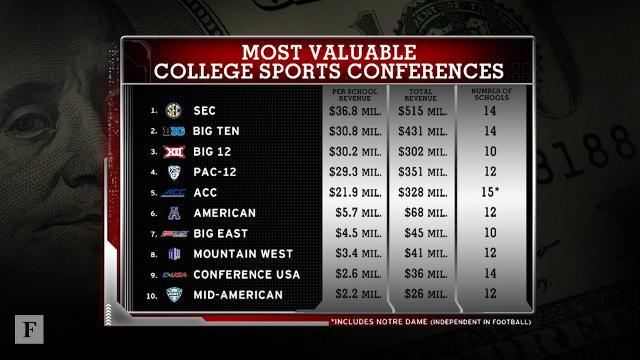
The Big Ten Network was launched on August 30, 2007. The Conference added Penn State in 1990, Nebraska in 2011, Maryland and Rutgers in 2014; it has committed NCAA Scandals from 11 of its 14 schools, 2011-2018. Jim Delany, Big Ten Commissioner since 1989 and former North Carolina Basketball Captain, 1968-1970, and Tar Heel Law Grad plans to retire in 2020 with $20 million in bonuses.
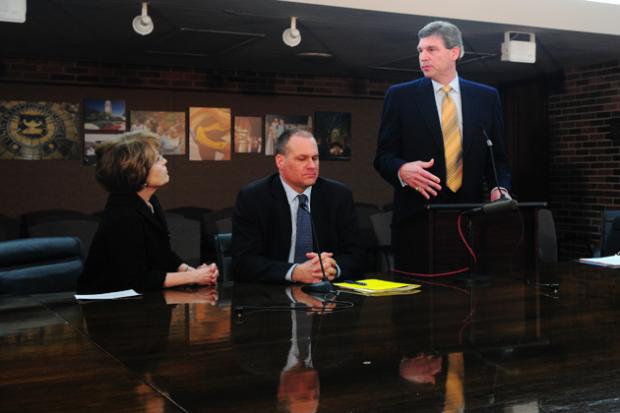
Rich Rodriquez, 2008-2010, achieved the worst record in Michigan Football History during his three seasons, but even worse, he gave the Wolverine Football Program its only NCAA sanction in its history. President Mary Sue Coleman and Athletic Director Bill Martin did a poor job in the coaching search to replace Lloyd Carr, and the football program has paid dearly for their lack of oversite for the past decade as a result. Their lack of knowledge of Michigan Football History and Tradition ended up setting the football program backwards for nearly a decade.

Rodriquez brought Mike Barwis to Ann Arbor as his Strength & Conditioning Coach
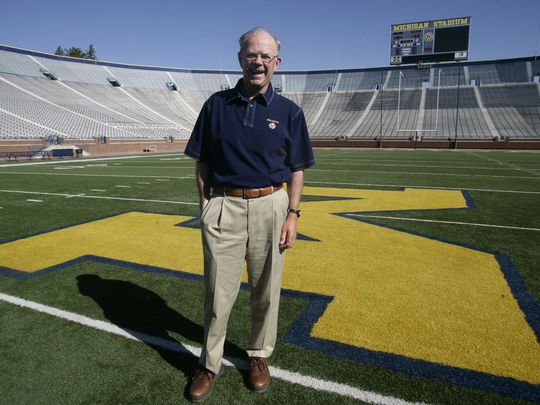
Bill Martin's career as Wolverine Athletic Director came to an abrupt end in 2010 after he pushed and grabbed a student employee in the Michigan Press Box on two occasions on September 12 and October 17, 2009; Martin graduated from the University of Michigan in 1965, and founded First Martin in 1968, and has been a real estate developer while adding the athletic director duties, 2000-2010. He was replaced by Domino's CEO, David Brandon, who played football for Michigan as a walk-on, 1971-1974.
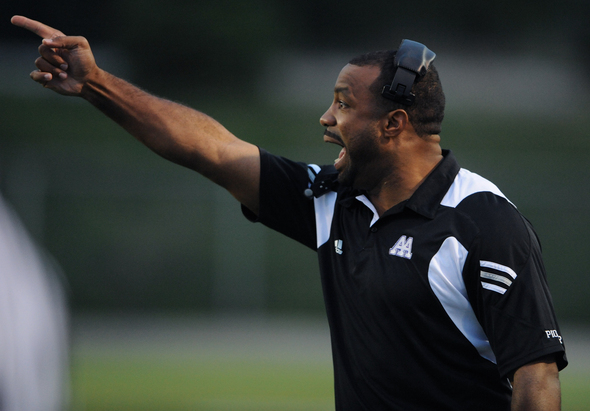
Jeremy Gold, brother of former Wolverine Ian Gold, coached four seasons, 2007-2010, with a 23-17 record
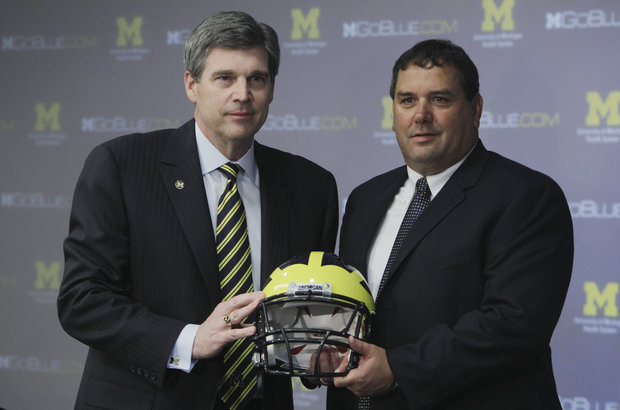
Athletic Director David Brandon and Brady Hoke hoped to return the Wolverines to glory, but fell short of their goals
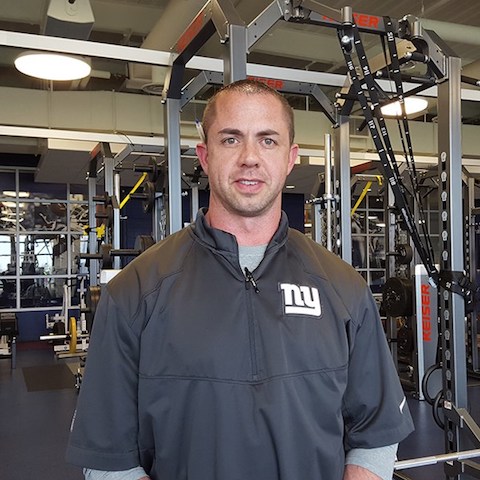
Hoke brought in Aaron Wellman to replace Mike Barwis in 2011 as Strength & Conditioning Coach; he left Michigan in 2015 to become the New York Giants S&C Coach
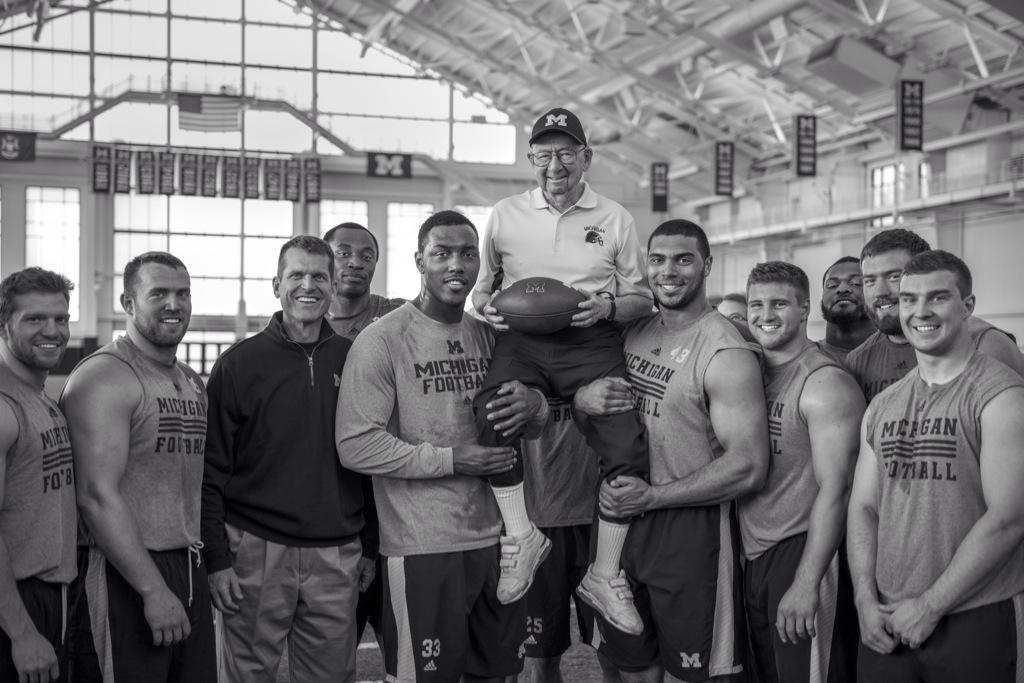
Al Glick donated funds to build the Glick Field House in 2009; it was a $26.1 million project. Michigan and Texas A&M are the only two football programs with two indoor practice fields
Michigan Football Stadium Jumbotron Scoreboard with the stadium rededicated on September 4, 2010; the cost of stadium improvements approved in 2007 was $226 million with 83 luxury boxes and a new press box. Permanent lights were added for another $1.8 million. Michigan added lacrosse for varsity competition in 2011 with games played in the Michigan Stadium.
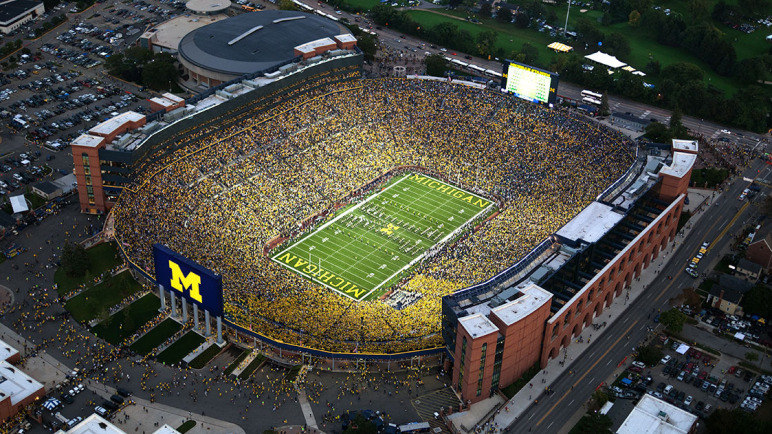
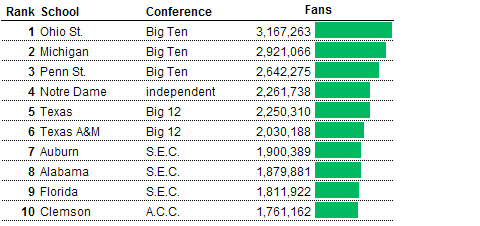
The New York Times published The Geography of College Football Fans in 2011, and claimed that Ohio State had more fans than Michigan

Michigan was the 5th most popular team in the New York College Football Market
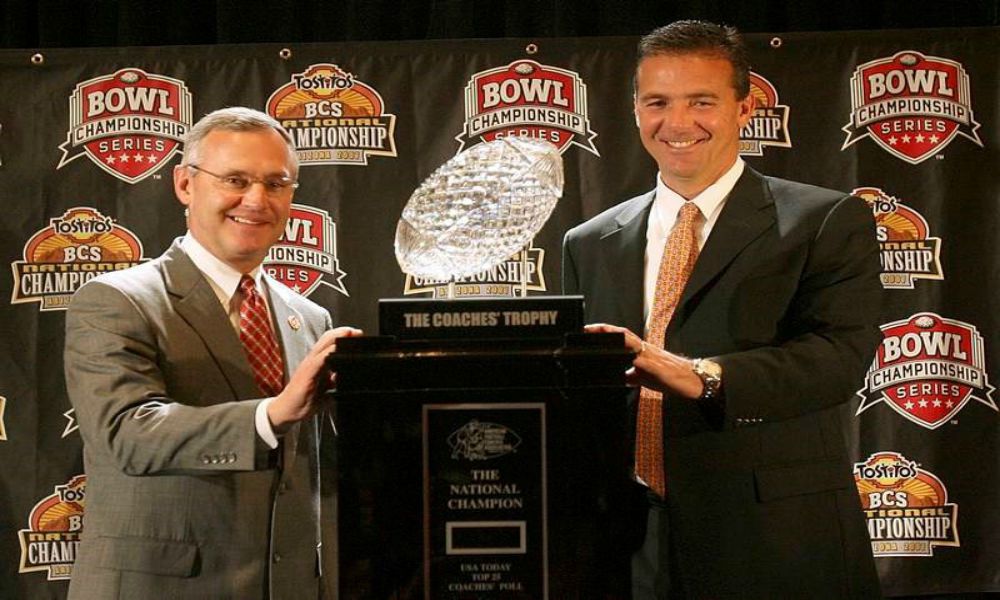
Jim Tressel resigned as Ohio State Head Football Coach on May 30, 2011; he learned some of his players received improper benefits from a tatoo parlor owner, and chose to invoke no disciplinary action or report the NCAA violations. He was 106-22 as Buckeye Coach, and won the 2002 National Championship with 3 National Championship appearances along with 6 Big Ten Championships; the Wolverines only managed one victory during his tenure in 2003, 35-21. The 2010 Buckeye win over the Wolverines, 37-7, was nixed from the record books as a result of the NCAA sanctions. Urban Meyer replaced Tressel.
| MFootball Coach | OSU Wins | OSU Losses | OSU Ties | Win % | OSU Football Coach | UM Wins | UM Losses | UM Ties | Win % |
| Ferbert, Gustave | 1 | 0 | 0 | 100.00% | Meyer, Urban | 7 | 0 | 0 | 100.00% |
| Little, George | 1 | 0 | 0 | 100.00% | Tressel, Jim | 8 | 1 | 0 | 88.89% |
| Yost, Fielding | 16 | 3 | 1 | 82.50% | Hayes, Woody | 16 | 11 | 1 | 58.93% |
| Crisler, Fritz | 7 | 2 | 1 | 75.00% | Schmidt, Francis | 4 | 3 | 0 | 57.14% |
| Moeller, Gary | 3 | 1 | 1 | 70.00% | Bruce, Earl | 5 | 4 | 0 | 55.56% |
| Schembechler, Bo | 11 | 9 | 1 | 54.76% | Brown, Paul | 1 | 1 | 1 | 50.00% |
| Oosterbaan, Benny | 5 | 5 | 1 | 50.00% | Widdoes, Caroll | 1 | 1 | 0 | 50.00% |
| Wieman, Tad | 1 | 1 | 0 | 50.00% | Jones, Howard | 0 | 0 | 1 | 50.00% |
| Lee, Langdon | 0 | 0 | 1 | 50.00% | Willaman, Sam | 2 | 3 | 0 | 40.00% |
| Lloyd Carr | 6 | 7 | 0 | 46.15% | Wilce, John | 4 | 7 | 0 | 36.36% |
| Kipke, Harry | 3 | 6 | 0 | 33.33% | Eckstorm, John | 0 | 1 | 1 | 25.00% |
| Elliott, Bump | 3 | 7 | 0 | 30.00% | Cooper, John | 2 | 10 | 1 | 19.23% |
| Hoke, Brady | 1 | 3 | 0 | 25.00% | Fesler, Wes | 0 | 3 | 1 | 12.50% |
| Harbaugh, Jim | 0 | 4 | 0 | 0.00% | Bixler, Paul | 0 | 1 | 0 | 0.00% |
| Rodriquez, Rich | 0 | 2 | 0 | 0.00% | Edwards, David | 0 | 1 | 0 | 0.00% |
| Totals | 58 | 50 | 6 | 53.51% | Hale, Perry | 0 | 2 | 0 | 0.00% |
| Sweetland, Edwin | 0 | 2 | 0 | 0.00% | |||||
| Hernstein, Albert | 0 | 4 | 0 | 0.00% | |||||
| Vaughan, Harry | 0 | 1 | 0 | 0.00% | |||||
| Richards, John | 0 | 1 | 0 | 0.00% | |||||
| Totals | 50 | 58 | 6 | 46.49% |
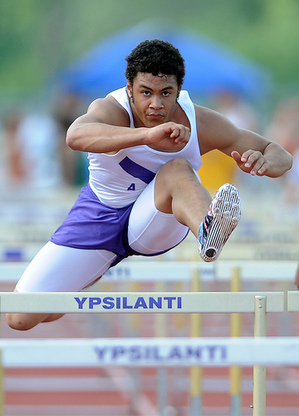
Drake Johnson ran for 2,809 yards in his Senior Season in 2011; he scored 37 touchdowns, and averaged 8.2 yards per carry. He also won 3 State Championships in the hurdles; his father, Michael, ran track at the University of Michigan, and his mother, Pamela St. John, is Michigan's cheerleading coach, 1982-2019, with three National Championships, 2013-2015. She was previously married to Tom Slade, Michigan Quarterback, in 1972; he passed away in 2006.
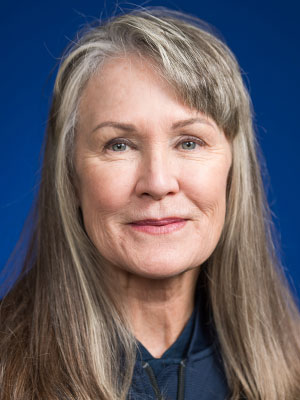
Michigan Cheerleading Coach, Pam St. John, 1982-2019
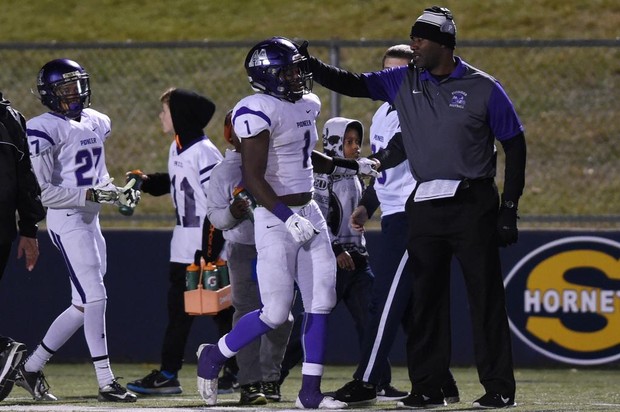
Jari Brown coached with Chelsea and Huron High Schools before going 18-20 in four seasons with Pioneer, 2013-2016
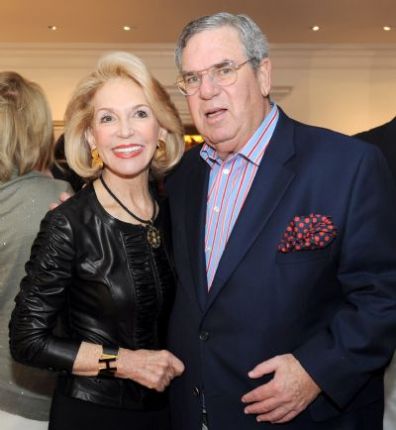
On February 20, 2014, J. Ira and Nicki Harris endowed the Michigan Head Football Coach position with a $10 million donation. Sanford Robertson endowed the Offensive Coordinator position with a $3 million donation.
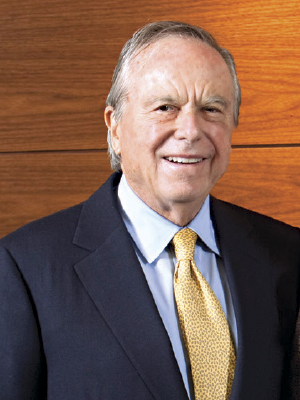
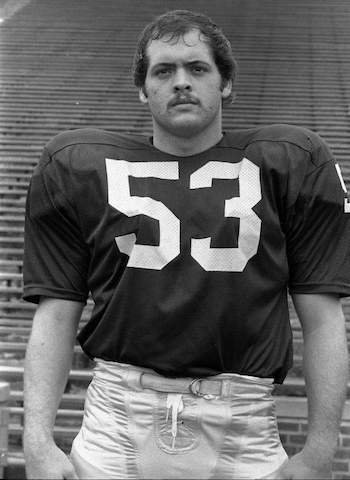
Minnesota took the Brown Jug from Michigan, 30-14, on September 27, 2014; Quarterback Shane Morris suffered a concussion, and he was kept in the game and re-inserted later. Michigan's coaching and training staff was sharply criticized for the lack of communication and problematic safety intervention; Athletic Director David Brandon came to their support, and was the subject of a student petition on September 30 calling for his removal with over 10,000 signatures, and he resigned on October 31. Former Wolverine Backup Center, Jim Hackett, 1973-1976, became the Interim Athletic Director through March 11, 2016.

Lloyd Carr, Jim Hackett, Jim Harbaugh, and Gary Moeller as Harbaugh became Michigan's new Head Coach on December 30, 2014
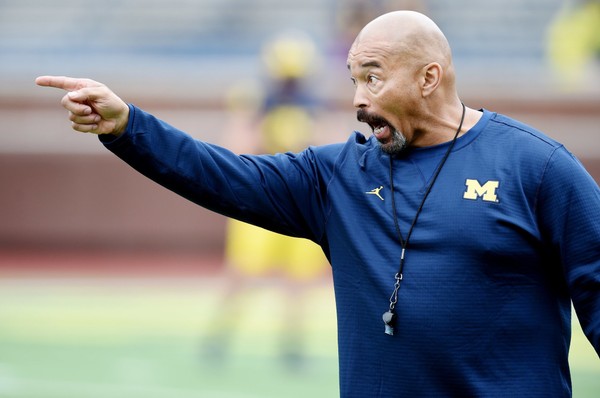
Harbaugh brought Kevin Tolbert from the San Francisco 49ers in 2015 as the Strength & Conditioning Coach to replace Aaron Wellman; he coached for the Wolverines, 2001-2007, under Lloyd Carr, and 2015-2017, under Coach Harbaugh

Alabama led NCAA Athletic Departments in Profits, but Iowa led Michigan in Big Ten Profits in 2014 thanks to the foundation established by Bump Elliott who retired in 1991 after Canham retired in 1988
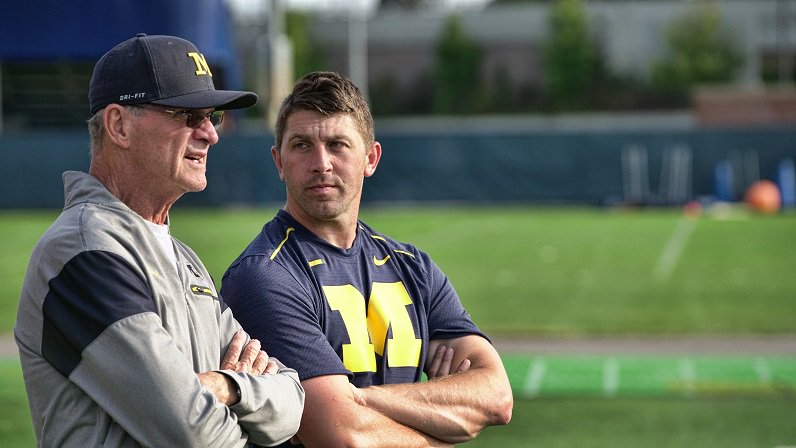
Jack Harbaugh with new Michigan Football Head Athletic Trainer, David Granito; he replaced Russ Miller after Concussiongate

Anne Curzan, University of Michigan English and Linguistics Professor, replaced Percy Bates at Michigan Faculty Representative; she was chosen as Honorary Captain for the Michigan-Wisconsin game on October 1, 2016 won by the Wolverines, 14-7
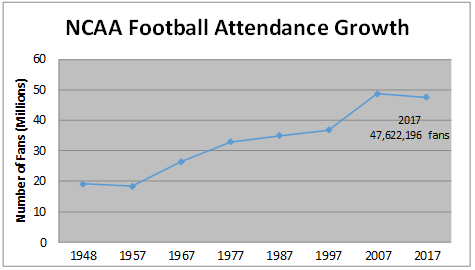
NCAA Football Attendance History showed a 250% growth from 20 million fans in 1947 to 50 million in 2017
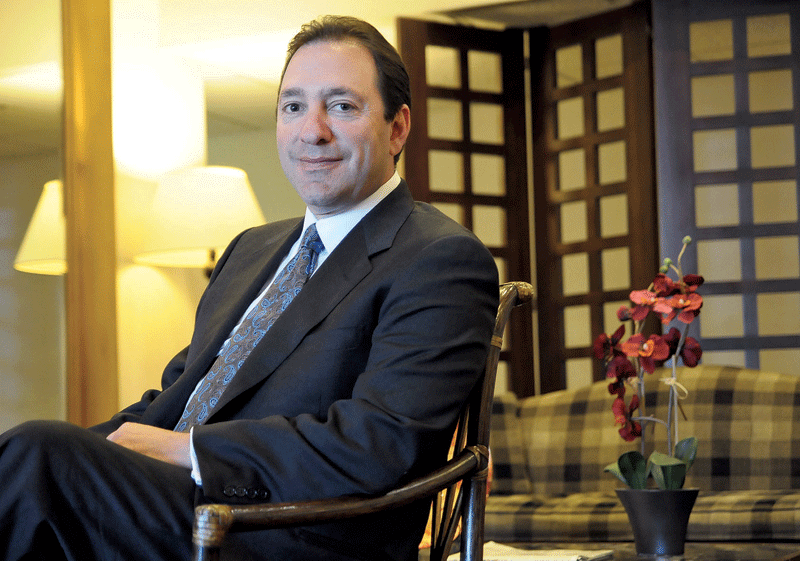
On May 11, 2019, Matthew and Nicole Lester endowed the Michigan Defensive Coordinator position
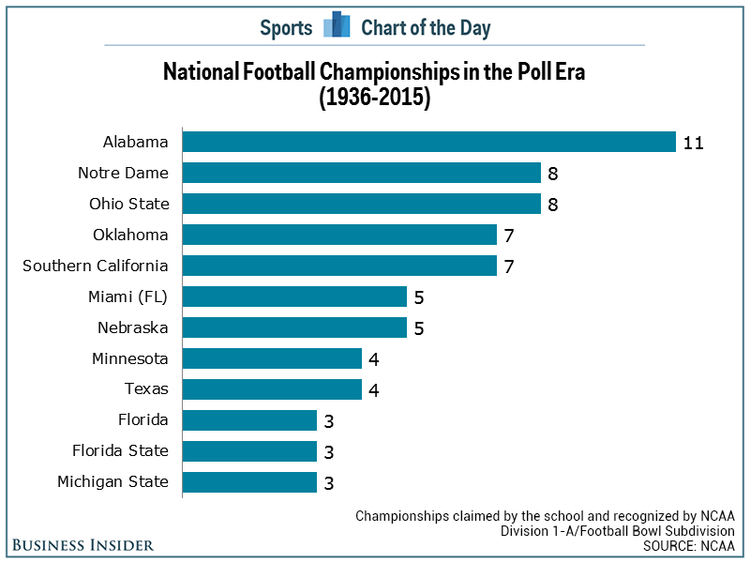
Michigan has struggled to have a National Championship Football Program with its last National Championships in 1997 and 1948; the BCS Football Playoffs, Big Ten Expansion, Changes in National Football Recruiting, etc. have increased the level of competition
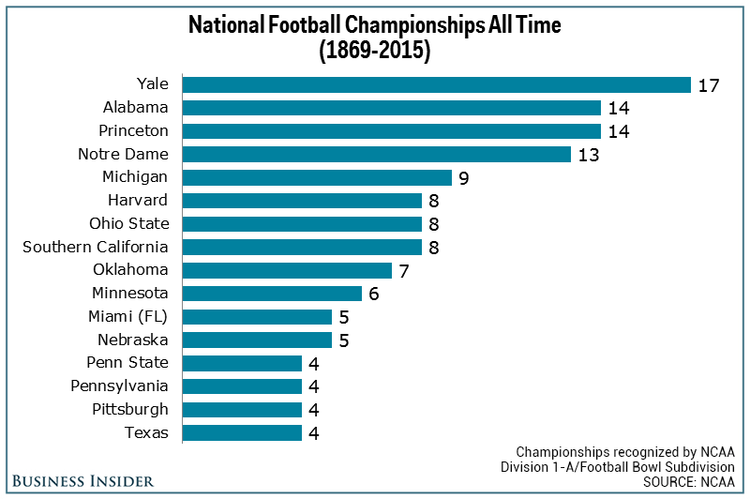
Stephen M. Ross has now donated over $378 million to the University of Michigan; he is the largest donor in the school's history, and both the Business School in 2004 and South Athletic Campus that was completed in 2018 for $168 million are named in his honor. Notice in the below pic that Ann Arbor Pioneer High School is at the top of the page.
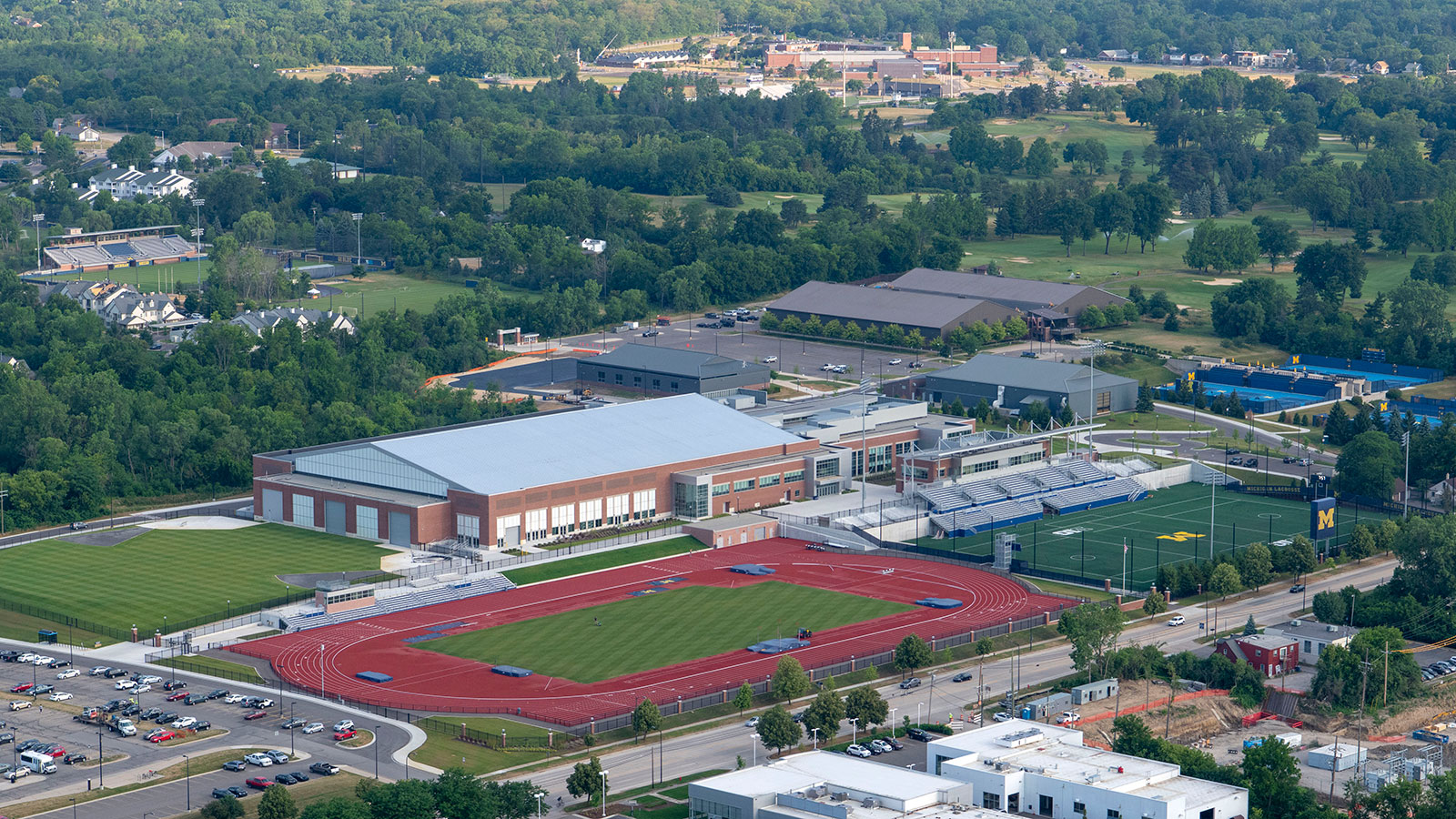

Joe Palka and Bill Bellers after another Hornet victory
Bill Bellers graduated from Ypsilanti Lincoln High School in 1999 where he played on the line; he played at Adrian College before transferring to Eastern Michigan, and coached the Pioneer Junior Varsity before being offered the Head Coach position in 2017. He started his coaching debut with a 0-56 loss to Muskegon; it was the second worst loss in the history of Ann Arbor Pioneer High School (most point differential) behind the 0-60 trouncing by Detroit Central in 1914. His record is 8-10 in his first two seasons. The MHSAA moved boy's soccer and tennis to be Fall sports with the historic option of cross country so now many boys are choosing other sports to play other than football in the Fall; in the Winter, basketball, wrestling, swimming and hockey are still complimentary options with bowling as well, and in the Spring, lacrosse has joined baseball, track, and golf as complimentary options for football athletes. There are 28 sports for both boys and girls, and many girls have little interest in cheerleading
| AA Superintendent | Years |
| Kerr-Swift, Jeanice | 2013-19 |
| Green, Patricia | 2011-13 |
| Allen, Robert | 2010-11 |
| Roberts, Todd | 2006-10 |
| Fornero, George | 2003-06 |
| Ray-Taylor, Rossi | 1999-2003 |
| Simpson, John | 1994-98 |
| Benjamin, Richard | 1986-94 |
| Howard, Harry | 1973-95 |
| McPherson, Bruce | 1971-73 |
| Westerman, Scott | 1967-71 |
| Krueger, Lee | 1957-67 |
| Elzay, Jack | 1953-57 |
| Haisley, Otto W. | 1924-53 |
| Butler, Leslie A. | 1920-24 |
| Slauson, Herbert M. | 1898-1920 |
| Perry, Walter | 1871-97 |
| Jones, Elisha | 1867-70 |
| Lawton, Uriah W. | 1862-67 |
| Briggs, Daniel B. | 1858-61 |
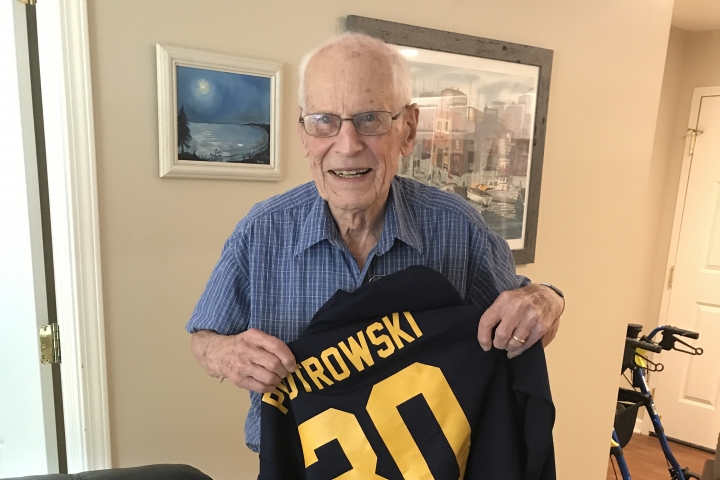
Pete Piotrowski became the first Michigan Football Player to turn 100 on September 2017
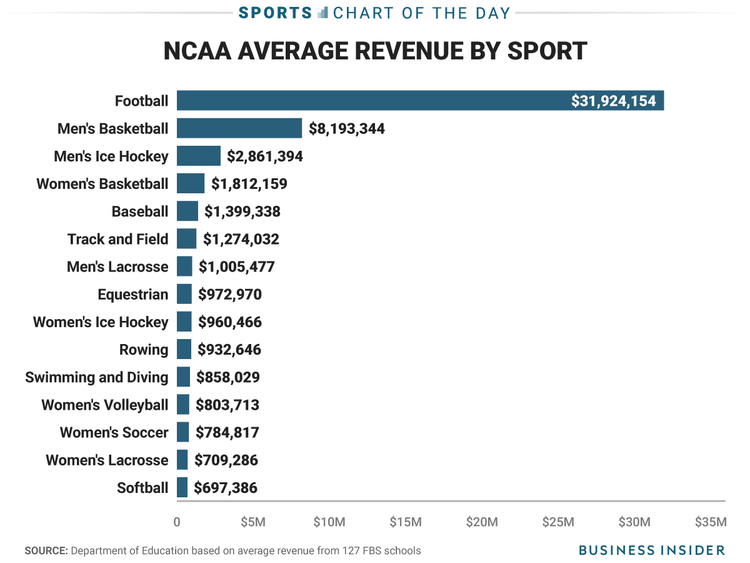
NCAA Average Revenue by Sport in 2017
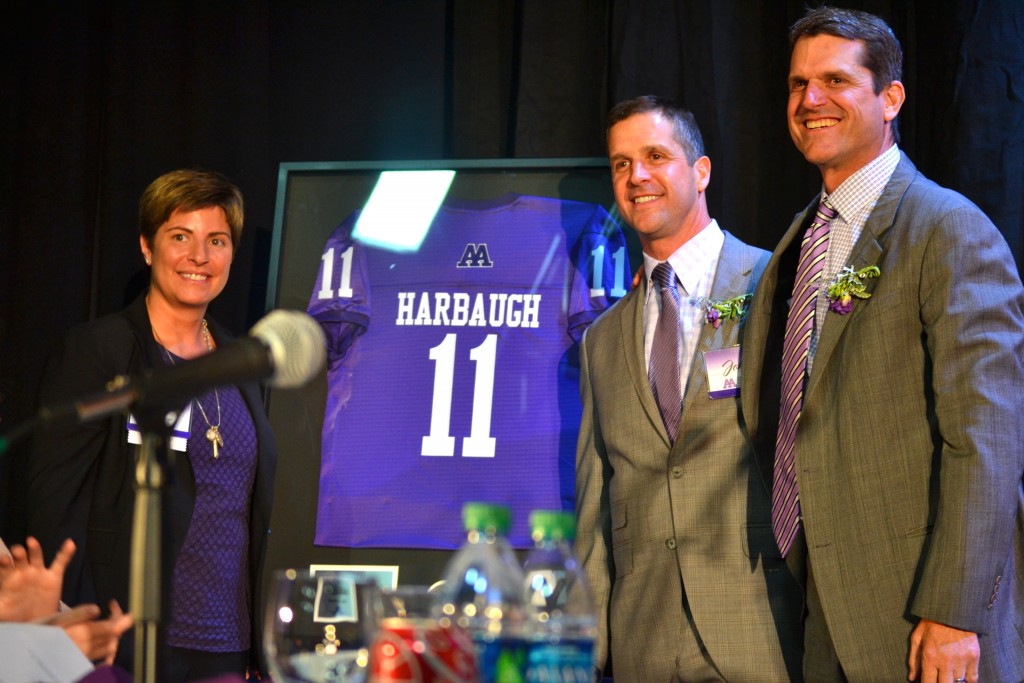
Pioneer Athletic Director Eve Claar with John, Head Coach of the Baltimore Ravens, and Jim Harbaugh, Head Coach of Michigan in 2018 at the Pioneer Hall of Fame induction
| AAHS AD | Years |
| Claar, Eve | 2011-2019 |
| Cartwright, Lorin | 1995-2011 |
| Rodriquez, Steve | 1994-1995 |
| Ritter, Chuck | 1986-1994 |
| Connolly, Helen | 1978-1986 |
| Armstrong, Art | 1978-1986 |
| Rouse, Eldon | 1974-1978 |
| McEwan, Don | 1972-1974 |
| Kline, Frank | 1962-1972 |
| Hollway, Lou | 1923-1962 |
| Olds, Lloyd | 1919-1923 |
| Springer, Durand | 1894-1904 |
| MFootball Coach | Wins | Losses | Ties | Win % | Shutouts | Big Ten Titles | NCAA Titles | Seasons | Big Ten % |
| Ward, William | 9 | 1 | 0 | 90.00% | 8 | 0 | 0 | 1 | 66.67% |
| Ferbert, Gustave | 24 | 3 | 1 | 87.50% | 18 | 1 | 0 | 3 | 75.00% |
| McCauley, William | 17 | 2 | 1 | 87.50% | 9 | 0 | 0 | 2 | 0.00% |
| Yost, Fielding | 165 | 29 | 10 | 83.33% | 119 | 10 | 6 | 25 | 79.60% |
| Crisler, Fritz | 71 | 16 | 3 | 80.56% | 32 | 2 | 1 | 10 | 77.68% |
| Schembechler, Bo | 194 | 48 | 5 | 79.55% | 44 | 13 | 0 | 21 | 85.50% |
| Moeller, Gary | 44 | 13 | 3 | 75.83% | 3 | 3 | 0 | 5 | 77.50% |
| Lloyd Carr | 122 | 40 | 0 | 75.30% | 8 | 5 | 1 | 13 | 77.90% |
| Little, George | 6 | 2 | 0 | 75.00% | 5 | 0 | 0 | 1 | 66.67% |
| Harbaugh, Jim | 38 | 14 | 0 | 73.08% | 4 | 0 | 0 | 4 | 74.29% |
| No Coaches | 23 | 10 | 1 | 69.12% | 13 | 0 | 0 | 12 | 0.00% |
| Oosterbaan, Benny | 63 | 33 | 4 | 65.00% | 17 | 3 | 1 | 11 | 64.79% |
| Barbour, Frank | 14 | 8 | 0 | 63.64% | 6 | 0 | 0 | 2 | 0.00% |
| Kipke, Harry | 49 | 30 | 5 | 61.31% | 31 | 4 | 2 | 9 | 56.00% |
| Hoke, Brady | 31 | 20 | 0 | 60.80% | 2 | 0 | 0 | 4 | 56.25% |
| Wieman, Tad | 9 | 6 | 1 | 59.38% | 7 | 0 | 0 | 2 | 50.00% |
| Elliott, Bump | 51 | 42 | 2 | 54.74% | 8 | 1 | 0 | 10 | 48.50% |
| Lee, Langdon | 7 | 2 | 1 | 50.00% | 6 | 0 | 0 | 1 | 60.00% |
| Crawford, Frank | 4 | 5 | 0 | 44.44% | 1 | 0 | 0 | 1 | 0.00% |
| Rodriquez, Rich | 15 | 22 | 0 | 40.50% | 0 | 0 | 0 | 3 | 25.00% |
| Totals | 956 | 346 | 37 | 72.91% | 340 | 42 | 11 | 140 | 70.50% |
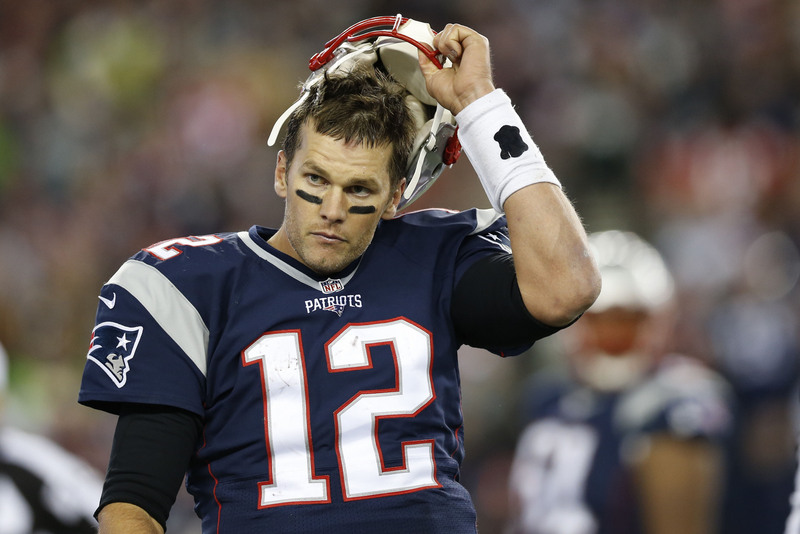
Tom Brady played at Michigan, 1996-1998, with 25 starts; he was only a 6th round draft choice for the New England Patriots, but has been in 9 Super Bowls with 6 Championships and he was picked the Most Valuable Player in 4 Super Bowls. Coach Harbaugh wants a statue of Tom Brady to be erected on campus; in the meantime, there is no statue of Fielding Yost nor are there any plans to build a statue in his honor, but there is one for Bo Schembechler.

The Super Bowl has averaged over 100 million viewers each year in the last decade, and football has become a marketing campaign for profits through television viewership, trademarking, donor contributions, fan and spectator sales to increase athletic profits.
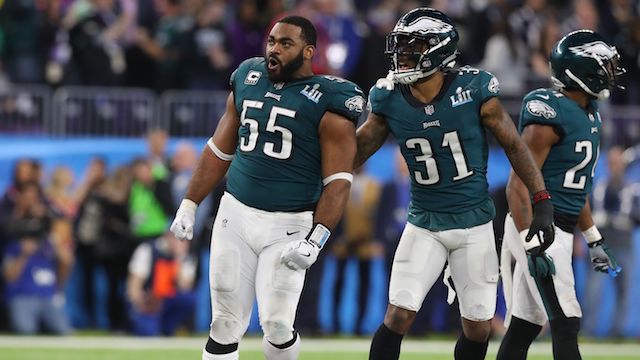
On February 4, 2018, the Philadelphia Eagles own their first Super Bowl behind former Wolverine, Brandon Graham, 2007-2009, who stripped Tom Brady of New England to ice the game. He was the Wolverine and Big Ten MVP in 2009.
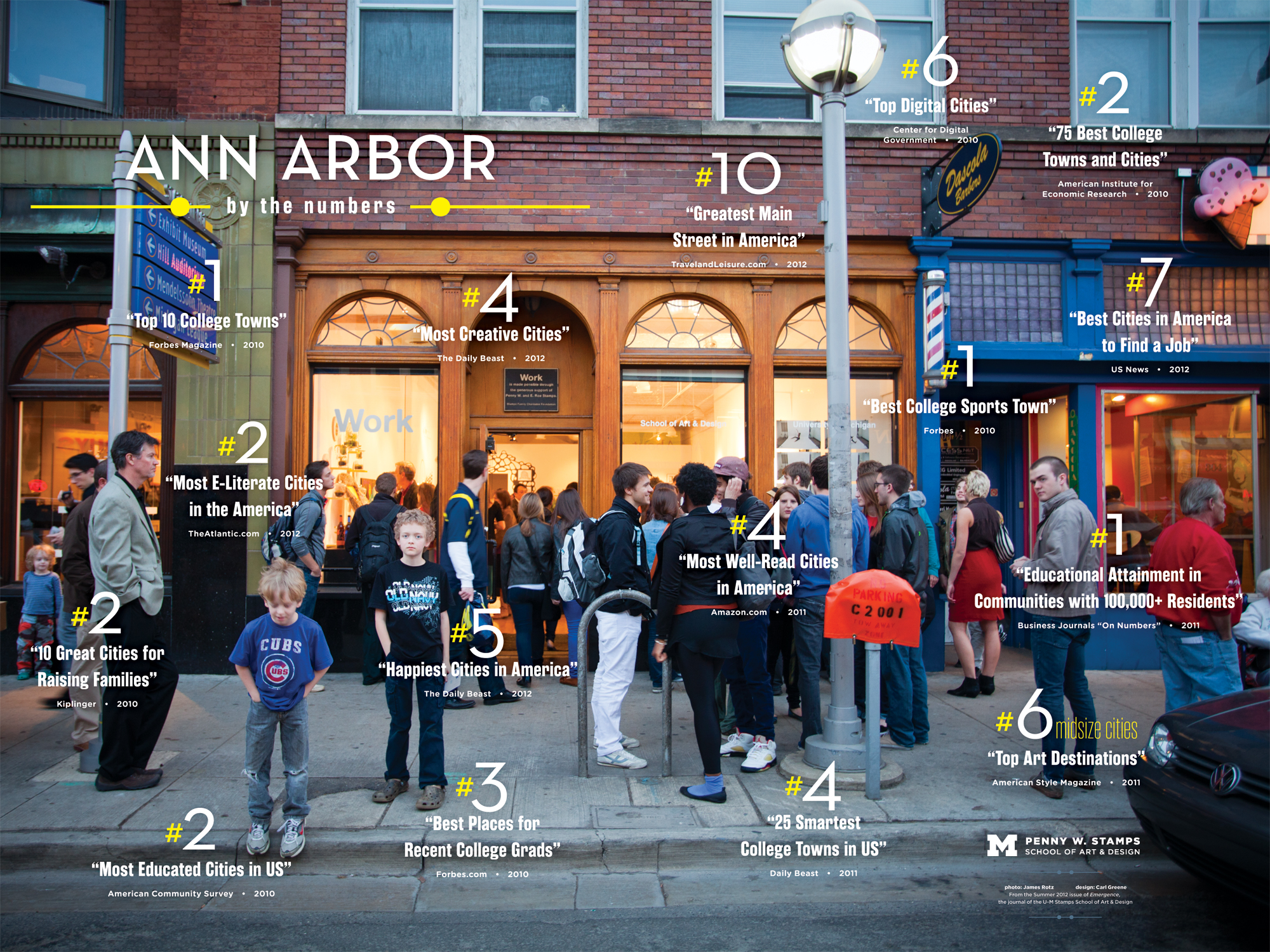
Ann Arbor and the University of Michigan By The Numbers

Michigan has also struggled with their football program recently; they still have earned more Big Ten Championships than any other school with 42, but they have not won a title in 15 years since 2004. It is their longest title drought in their history; they have struggled with three different head football coaches since Lloyd Carr retired after the 2007 season. The only time they've defeated arch-rival, Ohio State, was in 2011, while being on the short end in 14 of the last 15 meetings. Since Mark Dantonio came to arch-rival, Michigan State, the Spartans have also beat the Wolverines in 8 of the last 11 meetings. Still, Michigan remains the winningest football program in NCAA Football History, and is valued as the #3 most valuable football program in the nation by Forbes Magazine with earnings of $127 million annually.
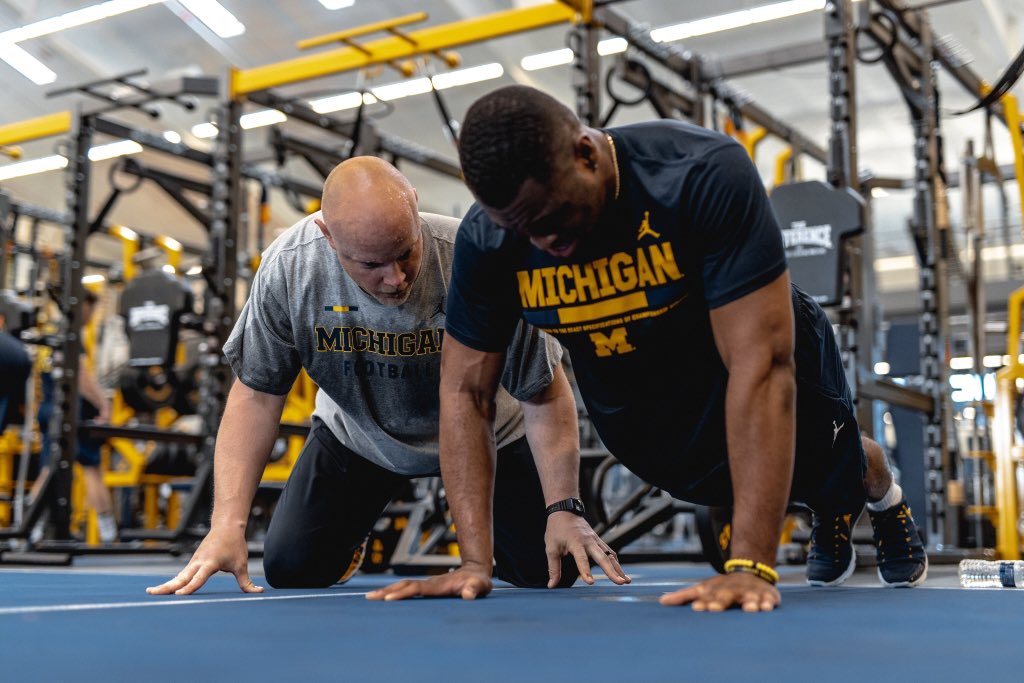
Ben Herbert became Michigan's New Strength & Conditioning Coordinator in 2018

Greg Harden is considered Michigan's "Secret Weapon;" he has helped numerous Wolverine athletes with attitude as a counselor, advisor and life coach, and the list includes Tom Brady, Desmond Howard, Michael Phelps, Jalen Rose, Jeff Porter, Michael Phelps, Emily Brunemann, Nik Stauskas, etc. Harden was a track athlete at Detroit Southwestern who was recruited by Michigan, but dropped out of school to start a family in 1967; he worked several jobs until he was hired as a drug and alcohol treatment counselor in 1976, and continued studies until he earned a Master's Degree in Social Work. He was hired by the University of Michigan in 1986.

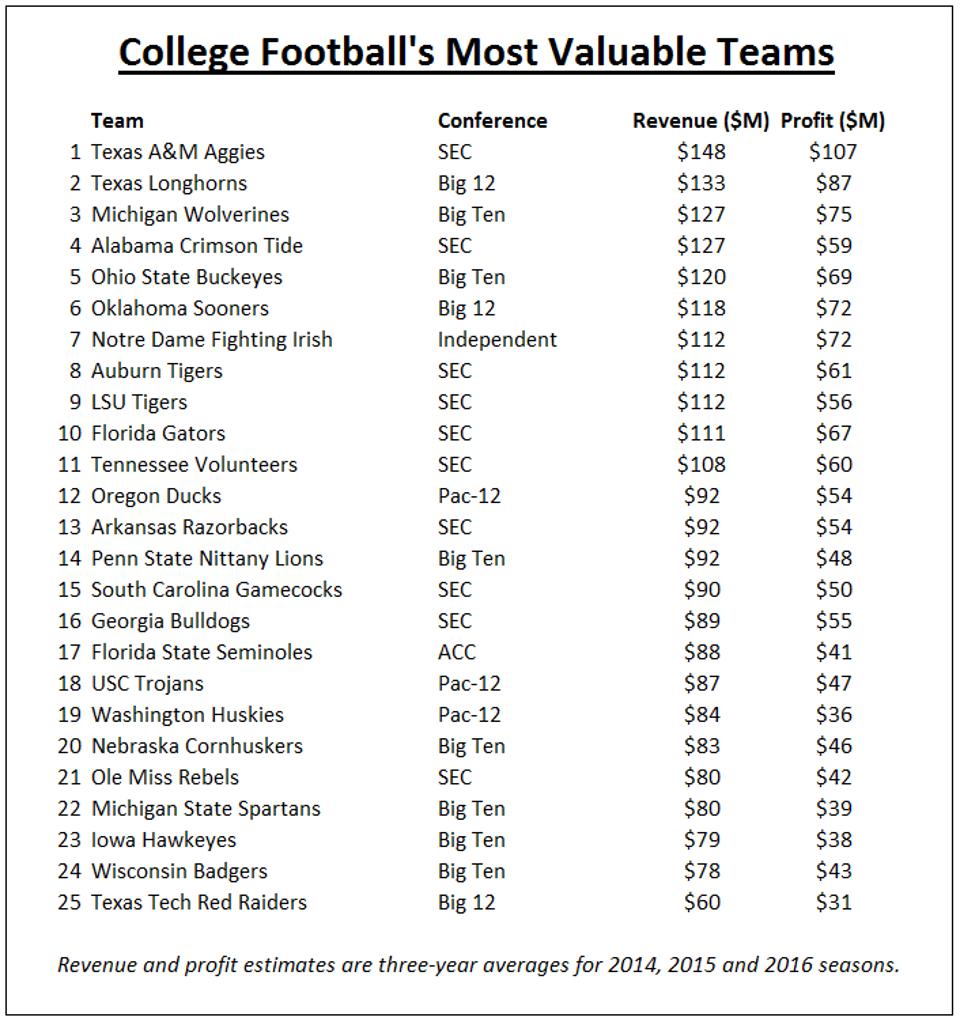
There have been few years since 1879 that an Ann Arbor High School Football player has not played on a Michigan Wolverine Football squad; the longest stretch was 1989-2000 although Lloyd Carr's son, Jason, was a backup quarterback, 1992-1995, and he went to Detroit Catholic Central.
Here is a list of Ann Arbor High School Football players who played at Michigan:
| Name | Pos. | Year(s) | All-American/Captain/Coach | Name | Pos. | Year(s) | All-American/Captain/Coach |
| Calvert, William B. | HB | 1879-80 | Edwards, R. Thomas | Rusher | 1879 | ||
| Chase, John "Tubby" | forward | 1879-80 | Captain | Pettit, Albert S. | 1879 | ||
| Mahon, Henry S. | Sub | 1881-83 | Pond, Irving K. | Rusher | 1879 | First Wolverine TD | |
| Duffy, John L. | FB | 1884-87 | Captain | Reed, Frank | Rusher | 1879 | |
| Trowbridge, William R. | Rusher | 1885-86 | Dorn, Eward L. | Forward | 1884 | ||
| Duffy, James E. | HB | 1885-90 | Captain | Babcock, R.S. | Sub | 1887 | |
| MacMillan, Lincoln | LE | 1887-88 | Button, O.K. | 1887 | |||
| Ball, William D. | FB | 1888-89 | Carson, Oliver Howard | E | 1891 | ||
| DePont, Edward Paul | FB | 1888-95 | Bird, James | Sub | 1892 | ||
| Jewett, George H. | HB | 1890-92 | Transfer to Northwestern | Welsh, Francis Joseph | Sub E | 1894 | |
| Dygert, George B. | HB | 1890-94 | Captain | McKenzie, William Dexter | Sub FB | 1895 | |
| LeRoy, Clare | FB | 1894-95 | Neal, Thomas A. | Sub | 1896 | ||
| Duffy, Ignatius M. | FB | 1895-96 | Bach, Waldo Botsford | 1897 | |||
| Bain, Walter G. | HB | 1897-99 | Hall, Forrest | 1898 | |||
| Begle, Ned F. | FB | 1898-00 | Maynard, Wicker John | 1898 | |||
| Oversmith, August Henry | T G | 1898-99 | Huber, Edward Godfrey | C/G | 1899 | ||
| Sackett, Samuel J. | HB | 1899-02 | Murfin, Clay B. | G | 1899 | ||
| Drake, Ralph Lovejoy | 1901-02 | Sayad, Elisha Elijah | T | 1899 | |||
| Forrest, James E. | LT | 1901-02 | Bliss, Charles L. | 1900 | |||
| Gooding, Cecil | RG | 1901-03 | Engelhard, Frederick | 1900 | |||
| Watkins, James K. | FB | 1905-09 | Weeks, Walter | 1900 | |||
| Madison, Glenn R. | 1908-11 | Kent, Willis | 1901 | ||||
| Conklin, Frederick L. | LE | 1909-11 | Captain | Merkel, Charles W. | 1901 | ||
| Bogle, Thomas A. | RT | 1910-11 | Robinson, Kenneth S. | 1901 | |||
| Allmendinger, Ernest J. | RG | 1911-13 | All-American | Keays, Eldred Mitchell | 1902 | ||
| Peterson, Reuben | LT | 1911-13 | Barnett, Ray Forrest | 1903 | |||
| Maulbetsch, John | LHB | 1913-16 | All-American/Captain | Cushman, Samuel W. | 1905 | ||
| Hildner, Egmont | HB | 1914-16 | Immel, Earl O. | 1908 | |||
| Avery, Bennett F. | G | 1919-20 | Siple, Rufus G. | 1909 | |||
| Campbell, James V. | RT | 1919-22 | Smith, Andrew | RG/C | 1909 | ||
| Van Orden, William J. | G | 1919-22 | Siple, Rufus G. | 1910 | |||
| Levi, Waldeck | G | 1921-25 | Allmendinger, Walter H. | 1912 | |||
| Ingle, Robert | G | 1922-23 | Tompkins, John A. | 1912 | |||
| Hall, Foster | T | 1923-24 | Dunn, John F. | 1914 | |||
| Lillie, Earl R. | B | 1923-26 | Eberwein, Otto | HB | 1915 | ||
| Bybee, Joel T. | 1924-25 | Millard, Frank G | G | 1915 | |||
| Gregory, Bruce | HB | 1924-25 | Adams, William T. | 1916 | |||
| Pommerening, Otto | T | 1924-28 | All-American/Team MVP | Adams, Theodore H. | LG | 1918 | |
| Peet, Charles D. | 1926-27 | Hauser, Edward | 1918 | ||||
| Stevens, William R. | 1926-27 | Scheidler, Nicholas O. | T | 1918 | |||
| Bovard, Ted | E | 1926-28 | Wilson, C. Wilford | 1918 | |||
| Chapman, Richard C. | 1926-28 | Breakey, Robert | HB | 1919 | |||
| Bovard, Alan J. | C | 1926-29 | Dunn, John | QB | 1920 | ||
| McCormick, Wilson | HB | 1927-28 | Gilmore, George M. | T | 1920 | ||
| Anderson, Jack | QB | 1928-29 | Nelson, Viggo | FB | 1920 | ||
| Parker, Ray | G | 1928-29 | NCAA Runner-Up Wrestling | Keatley, John | E | 1921 | |
| Stoll, Claude R. | HB | 1928-30 | Norcop, Maurice R. | 1921 | |||
| Yost, Fielding H., Jr. | E | 1929-31 | Novy, Frederick J. | G | 1921 | ||
| Tessmer, Estel S. | QB | 1929-33 | Winkler, Harold | 1922 | |||
| Conover, James | G | 1930-31 | Nanry, Louis C. | 1923 | |||
| Tillotson, Harry A. | 1930-31 | Nutt, James D. | 1923 | ||||
| Van Akkeren, John L. | 1930-32 | Seyfried, Harold L | 1923 | ||||
| Ponto, Hilton A. | G | 1932-33 | Florer, Herbert W. | Line | 1924 | ||
| Jennings, Ferris G. | QB | 1933-37 | Pieharski, Joseph J. | 1924 | |||
| Nielsen, Paul | E | 1936-39 | Neal, Edward | 1927 | |||
| Westfall, Robert B. | FB | 1938-41 | All-American/Captain | Taylor, Laverne H. "Kip" | E | 1927 | |
| Caswell, Harrison H. | T | 1940-41 | Wenzel, Elton A. | 1927 | |||
| Wikel, Howard L. | HB | 1941-43 | Shankland, Harold O. | 1928 | |||
| Crandell, John S. | C | 1942-43 | Christensen, V. | E | 1929 | ||
| Chubb, Ralph L. | HB | 1942-46 | Miller, Harold | B | 1929 | ||
| Twining, Robert E. | T | 1942-47 | VanAkkeren, John | 1929 | |||
| Nakamura, Frank | G | 1944-47 | Conklin, David | 1931 | |||
| Hollway, Robert C. | E | 1946-49 | NFL Coach | Fiero, Austin | 1932 | ||
| Meader, Robert E. | G | 1948-50 | Jacoby, Richard A. | 1933 | |||
| Smith, Gilbert | G | 1948-50 | Fisher, Joe | T | 1934 | University High | |
| Kinyon, Peter C. | G | 1948-51 | Courtright, Raymond O., Jr, | 1935 | |||
| Conlin, John W. | T | 1950-52 | Warns, James | E | 1935 | ||
| Chatters, Richard M. | G | 1951-52 | Lake, Glynn W. | 1941 | |||
| Gagalis, Peri | FB | 1951-54 | Schorling, Donald C. | 1941 | |||
| Morrow, John M. | T/C | 1952-55 | Walterhouse, Richard G. | 1942 | |||
| Crisler, Prescott A. | T | 1953-55 | Matthaei, Fred | E | 1944 | ||
| Johnston, Donald B. | FB | 1953-55 | Nathan, Robert L. | 1946 | |||
| Sigman, Lionel Albert | T | 1954-56 | Albertson, Richard | C | 1949 | ||
| Lousma, Jack R. | QB/HB | 1954-57 | King, Douglas | 1949 | |||
| Batsakes, John | HB | 1954-58 | Schneider, Roland | 1949 | |||
| Morrow, Gordon | C/E | 1954-58 | Burns, Stanley C. | QB | 1950 | ||
| Leith, Jerry | HB | 1955-59 | Matteson, John W. | 1950 | |||
| Tousignaut, Dwight R. | C | 1956-58 | Athanson, Harry J. | 1951 | |||
| Fitzgerald, Dennis | HB | 1957-60 | St. Thomas/Assistant Coach/NFL | Brown, Robert | E | 1951 | |
| Wooding, Peter | HB | 1958-59 | Chatters, Richard M. | 1951 | |||
| Slezak, David | C | 1958-61 | Karsian, Raymnd T. | 1951 | |||
| Leslie, Kent | LB | 1964-66 | Weber, Robert W. | 1951 | |||
| Beemer, Dennis | QB | 1965-66 | Leith, Dean H., Jr. | FB | 1952 | ||
| Hartman, Gerald | DHB | 1966-68 | Maugh, Roger E. | C | 1952 | ||
| Weinman, Thomas R. | DHB | 1966-68 | Whitley, J. Dennis | G | 1952 | ||
| Wadhams, Timothy | HB | 1966-69 | Larmee, Stanley W. | 1955 | |||
| Abrahams, Morris | DT | 1968-69 | Leith, Tom C | 1955 | |||
| Collins, Jerry | SE | 1973-75 | Huron | Rodriguez, Mike | HB | 1955 | Two-Time NCAA Runner-Up Wrestler |
| Murray, Dan | Wolf | 1976-79 | Scull, Gerald H. | 1955 | |||
| Bostic, Keith | SS | 1979-82 | All-American/NFL | Bennett, William A. | 1957 | ||
| Smith, Cedric N. | WR | 1980-81 | DeGrazie, Robert J. | E | 1957 | ||
| Anderson, Timothy | ILB | 1981-84 | Black, Albert | 1958 | |||
| Moeller, Andy | ILB | 1982-86 | Captain | Schlanderer, William A. | 1958 | ||
| Mandel, Dave | TE | 1984-87 | Huron | Gesler, Ralph A. | FB | 1959 | |
| Mandel, Scott | TE | 1984-87 | Huron | Lippert, Howard H. | QB | 1961 | |
| Stites, Bob | ILB | 1984-87 | Spaly, Robert F. | T | 1961 | Three-Time All-American Wrestler | |
| Stites, Rick | ILB | 1984-87 | Koeller, Donald M. | 1962 | All-American Wrestler | ||
| Gutzwiller, Mark | DB | 1986-88 | Huron | Boomis, Janis | G | 1963 | |
| Stejskal, Andy | WR | 2001-03 | McCallig, Michael T. | 1965 | |||
| Spencer, Mark | P | 2002-05 | Dean, David L. | QB | 1966 | ||
| Tabb, Carl | WR | 2002-06 | Huron | Sharemet, John F. | E | 1966 | |
| Therman, Mike | TE | 2007-09 | Fonde, Charles H. | 1968 | |||
| Heininger, Will | DE | 2007-11 | Kennedy, Ted | 1969 | |||
| Collins, Patrick | WR | 2009-10 | Klum, Jeffrey A. | 1969 | |||
| Ross, Jeremy | PK | 2010-11 | Mack, Arturo L. | 1969 | |||
| Jackson, Jeremy | WR | 2010-13 | Huron | Sukup, David J. | 1969 | ||
| Mitropoulos-Rundus, Alex | DL | 2012-14 | Shepard, William D. | 1971 | |||
| Johnson, Drake | RB | 2012-16 | Connors, Tim | DB | 1972 | ||
| Dufek, Don | Wolf | 1973-76 | All-American/Captain | Slaughter, Mark | DB | 1976 | |
| Harbaugh, Jim | QB | 1983-86 | All-American/Captain/Big Ten MVP | Hanlon, Mickey | WR | 1982 | |
| Henninger, Fred | RG | 1891-96 | Captain | Fellin, Camp | DB | 1983 | |
| Rockwell, Ferdinand Tod | QB | 1922-24 | Thornbladh, Robbie | FB | 2006 | ||
| Furrha, Nader | QB | 2009 | |||||
| Furrha, Rushdi | LB | 2009 | |||||
| Furrha, Rasheed | LB | 2010 | |||||
| Haarer, John | TE | 2010 | Huron | ||||
| Zeisler, Cody | TE | 2015 | Skyline | ||||
It should be noted that although Jim Harbaugh and Don Dufek didn't graduate from Ann Arbor Pioneer High School, both attended Ann Arbor Public Schools including Ann Arbor High School most of their careers. Both Don and Bill Dufek graduated from East Grand Rapids High School, but both Michigan Football All-Americans have resided in Ann Arbor all of their life except those few years when their father, Don Dufek Sr., Michigan All-American, 1948-1950, left Ann Arbor to become Grand Valley Athletic Director, 1972-1976. John Harbaugh attended Pioneer High School, and played college football at Miami-OH. There have been several Ann Arbor High School Football players who have had successful athletic careers at other colleges including: Raymond Vogel (Navy-Wrestling All-American), Walter Sellers (Central State), Barry Brown (Florida), Dave Hampton (Wyoming), Aaron Bailey (Louisville), Oseloka Keys (Ferris State), Antjwan Simmons (Michigan State), etc.
Ann Arbor High School & Michigan Football Captains and Most Valuable Players
| AAHS MVP | AAHS FB Captain(s) | Year | UM FB Captain(s) | UM MVP |
| n/a | n/a | 1879 | DeTar, David | n/a |
| n/a | n/a | 1880 | Chase, John "Tubby" | n/a |
| n/a | n/a | 1881 | Horton, Walter | n/a |
| n/a | n/a | 1882 | Olcott, William | n/a |
| n/a | n/a | 1883 | Olcott, William | n/a |
| n/a | n/a | 1884 | Prettyman, Horace | n/a |
| n/a | Duffy, James | 1885 | Prettyman, Horace | n/a |
| n/a | Conrad, Ernest B. | 1886 | Prettyman, Horace | n/a |
| n/a | Hull, George M. | 1887 | Duffy, John | n/a |
| n/a | Booth, Walter H. | 1888 | Duffy, James | n/a |
| n/a | Dygert, George | 1889 | McPherran, Edgar | n/a |
| n/a | Jewett, George | 1890 | Malley, William | n/a |
| n/a | Baird, James | 1891 | Van Inwagen, James | n/a |
| n/a | Frothingham, George | 1892 | Dygert, George | n/a |
| n/a | n/a | 1893 | Dygert, George | n/a |
| n/a | n/a | 1894 | Baird, James | n/a |
| n/a | n/a | 1895 | Henninger, Fred | n/a |
| n/a | n/a | 1896 | Senter, Henry | n/a |
| n/a | n/a | 1897 | Hogg, James | n/a |
| n/a | n/a | 1898 | Bennett, John | n/a |
| n/a | n/a | 1899 | Steckle, Allen | n/a |
| n/a | n/a | 1900 | Snow, Neil | n/a |
| n/a | n/a | 1901 | White, Hugh | n/a |
n/a n/a |
Hickey, Floyd Wessinger, H. Thomas |
1902 1903 |
Weeks, Harrison "Boss" Redden, Curtis |
n/a n/a |
| n/a | Dailey, | 1904 | Heston, Willie | n/a |
| n/a | Hiscock, Roy | 1905 | Norcross, Fred | n/a |
| n/a | Conklin, Fred | 1906 | Curtis, John | n/a |
| n/a | Spaeth, Carl | 1907 | Magoffin, Paul | n/a |
| n/a | Eldert, | 1908 | Schulz, Adolph "Germany" | n/a |
| n/a | Allmendinger, Ernie | 1909 | Allerdice, David | n/a |
| n/a | n/a | 1910 | Benbrook, Albert | n/a |
| n/a | n/a | 1911 | Conklin, Fred | n/a |
| n/a | Newbold, | 1912 | Thomson, George | n/a |
| n/a | Eberwine, Otto | 1913 | Paterson, George | n/a |
| n/a | n/a | 1914 | Raynsford, James | n/a |
| n/a | Fox, Frank | 1915 | Cochran, William | n/a |
| n/a | Schneider, Rook | 1916 | Maulbetsch, John | n/a |
| n/a | Gregory, Rich | 1917 | Smith, Cedric | n/a |
| n/a | Lutz, Ralph | 1918 | Wieman, Elton "Tad" | n/a |
| n/a | Novy, Frederick | 1919 | Goetz, Angus | n/a |
| n/a | n/a | 1920 | Goetz, Angus | n/a |
| n/a | n/a | 1921 | Dunne, Robert | n/a |
| n/a | n/a | 1922 | Goebel, Paul | n/a |
| n/a | n/a | 1923 | Kipke, Harry | n/a |
| n/a | n/a | 1924 | Steger, Herbert | n/a |
| n/a | n/a | 1925 | Brown, Robert | n/a |
| n/a | n/a | 1926 | Friedman, Benny | Friedman, Benny |
| n/a | n/a | 1927 | Oosterbaan, Bennie | Oosterbaan, Bennie |
| n/a | n/a | 1928 | Rich, George | Pommerening, Otto |
| n/a | Conover, James | 1929 | Truskowski, Joe | Simrall, James |
| n/a | Cope, Oliver | 1930 | Simrall, James | Wheeler, Jack |
| n/a | Conover, Creel | 1931 | Hudson, Roy | Hewitt, Bill |
| n/a | Raab, Edward | 1932 | Williamson, Ivan | Newman, Harry |
| n/a | Seeger, Robert | 1933 | Fay, Stanley | Everhardus, Herman |
| n/a | Jennings, Richard | 1934 | Austin, Thomas | Ford, Gerald |
| n/a | Davies, Gerald | 1935 | Renner, William | Renner, William |
| n/a | Koernke, Jack | 1936 | Patanelli, Matt | Patanelli, Matt |
| n/a | n/a | 1937 | Rinaldi, Joe | Heikkinen, Ralph |
| n/a | Wright, Don | 1938 | Janke, Fred | Heikkinen, Ralph |
| n/a | Gochis, Pete | 1939 | Kodros, Archie | Harmon, Tom |
| n/a | n/a | 1940 | Evashevski, Forest | Harmon, Tom |
| n/a | Walterhouse, Dick | 1941 | Westfall, Bob | Kelto, Reuben |
| n/a | Dates, Jack | 1942 | Ceithaml, George | Wistert, Albert |
| n/a | Gillespie, Art | 1943 | White, Paul | Wiese, Bob |
| n/a | Falcone, Nick | 1944 | Wiese, Bob | Lund, Don |
| n/a | Platt, Henry | 1945 | Ponsetto, Joe | Watts, Harold |
| n/a | Schneider, Don | 1946 | Renner, Art | Chappuis, Bob |
| King, Douglas | Matteson, Max | 1947 | Hilkene, Bruce | Elliott, Bump |
| Veigel, Charles | Viegel, Chuck | 1948 | Tomasi, Dominic | Tomasi, Dominic |
| Dohoney, Don | Burns, Stan | 1949 | Wistert, Alvin | Kempthorn, Dick |
| Rodriquez, Mike | Whitley, Dennis | 1950 | Wahl, R. Allen | Dufek, Don |
| n/a | Cartwright, Jim | 1951 | Putich, William | Peterson, Don |
| Kagay, John/Baker, Marvin | Baker, Marvin | 1952 | Green, Merritt | Topor, Ted |
| Royce, Bill | Lousma, Jack | 1953 | O'Shaughnessy, Dick | Branoff, Tony |
| Williams, Richard | Larmee, Stan | 1954 | Cachey, Ted | Baer, Fred |
| Lewis, Robert | Correll, Bob | 1955 | Meads, Ed | Barr, Terry |
| Sayture, Allen | Baugh, Jim | 1956 | Maentz, Tom | Hill, Dick |
| Slezak, Dave | n/a | 1957 | Orwig, Jim | Pace, Jim |
| Adams, Dick | Adams, Dick | 1958 | Herrnstein, John | Ptacek, Bob |
| Orr, Bill | n/a | 1959 | Genyk, George | Rio, Tony |
| Lippert, Howard | Mortensen, R./Newton, D. | 1960 | Smith, Gerald | Fitzgerald, Dennis |
| Campbell, Roy | Campbell, Roy/Rae, Kelly | 1961 | Mans, George | Walker, John |
| Murray, Ted | Leslie, Kent/Morrow, Tom/Rathman, Tom | 1962 | Brown, Robert | Raimey, Dave |
| n/a | Wood, Bill | 1963 | O'Donnell, Joe | Keating, Tom |
| Beemer, Dennis | Dyer, Ken/Hartman, Jerry | 1964 | Conley, Jim | Timberlake, Bob |
| Weinmann, Tom | Weinmann, Tom/Sharamet, John | 1965 | Cecchini, Tom | Yearby, Bill |
| Carrow, Mark | Beemer, Dave/Wood, Tom | 1966 | Clancy, Jack | Clancy, Jack |
| Burkhart, Kent | Burkhart, Kent/Weid, Jim | 1967 | Dayton, Joe | Johnson, Ron |
| Sonntag, John | Kennedy, Ted/Sonntag, John | 1968 | Johnson, Ron | Johnson, Ron |
| Copeland, Marv | Copeland, Marv/Johnson, Don | 1969 | Mandich, Jim | Mandich, Jim |
| Elliott, Bob | Curby, Dave/Crawford, Fred | 1970 | Hill, Henry/Moorhead, Don | Hill, Henry/Moorhead, Don |
| Dufek, Don | Dufek, Don/Cowan, Dave | 1971 | Gusich, Frank/Murdock, Guy | Taylor, Billy |
| Warner, Keith | Warner, Keith/Marr, John | 1972 | Coyle, Tom/Logan, Randy | Logan, Randy |
| Blissit, Walter | Conlin, Ed/Smith, Bob/Ziegler, Sam | 1973 | Gallagher, David/Seal, Paul | Seal, Paul |
| Bordine, Dave | Veroff, Matt/Bordine, Dave | 1974 | Brown, David/Franklin, Dennis | Strinko, Steve |
| Murray, Dan | n/a | 1975 | Dufek, Don/Lewis, Kirk | Bell, Gordon |
| Perry, Mark | n/a | 1976 | Lewis, Kirk/Lytle, Rob/O'Neal, Calvin | Lytle, Rob |
| Gilligan, Kevin | n/a | 1977 | Downing, Walt/Hicks, Dwight | Davis, Russell |
| Jackson, Billy | Bostic, Keith/Smith, Jim | 1978 | Davis, Russell/Meter, Jerry | Leach, Rick |
| Anderson, Tim | n/a | 1979 | Arbeznik, John/Simpkins, Ron | Simpkins, Ron |
| Campbell, Greg | n/a | 1980 | Cannavino, Andy/Lilja, George | Carter, Anthony |
| Parka, Greg | n/a | 1981 | Becker, Kurt/Thompson, Robert | Woolfolk, Butch |
| Burke, Tim | n/a | 1982 | Carter, Anthony/Girgash, Paul/Thompson, Robert | Carter, Anthony |
| Krarney, Jeff | n/a | 1983 | Humphries, Stefan/Lott, John | Smith, Steve |
| Gordon, Cecil | n/a | 1984 | James, Doug/Mallory, Mike | Mallory, Mike |
| Burnes, Adam | Curby, Jerry/Nairn, John/Parham, Tracy | 1985 | Cochran, Brad/Kattus, Eric/Mallory, Mike | Hammerstein, Mike |
| Vooletich, Brian | Wortmann, Vince/Daftsios, Dino | 1986 | Harbaugh, Jim/Moeller, Andy | Harbaugh, Jim |
| Turner, Andy | Franklin, Obbie/McCabe, Sean | 1987 | Mallory, Doug/Morris, Jamie | Morris, Jamie |
| Bailey, Aaron | n/a | 1988 | Messner, Mark/Vitale, John | Messner, Mark |
| Newman, Brian | Ayers, Liam/Kimmons Ron | 1989 | Grant, J.J./Walker, Derrick | Boles, Tony |
| Paige, Eric | n/a | 1990 | Bunch, Jarrod/Milligan, John | Welborne, Tripp |
| Landon, Doug | n/a | 1991 | Anderson, Erick/Skrepenek, Greg | Howard, Desmond |
| n/a | McClair, John | 1992 | Brown, Corwin/Grbac, Elvis/Hutchinson, Chris | Hutchinson, Chris |
| Blackmon, Shawn | n/a | 1993 | Powers, Ricky/Stanley, Buster | Stanley, Buster |
| Lutz, Jeff | n/a | 1994 | Morrison, Steve/Smith, Walter | Collins, Todd |
| Heugli, Andy | n/a | 1995 | Irons, Jarrett/Marinaro, Joe | Biakabutuka, Tim |
| Chapman, Christen/Wienman, Tom | n/a | 1996 | Irons, Jarrett/Payne, Rod | Payne, Rod |
| Chapman, Christen | n/a | 1997 | Jansen, Jon/Mayes, Eric | Woodson, Charles |
| Lutz, Mike/Goodnow, Louis | n/a | 1998 | Jansen, Jon/Feazell, Juaquin | Streets, Tai |
| Knapp, Josh/Yee, Chris | n/a | 1999 | Brady, Tom/Hutchinson, Steve/Renes, Bob | Brady, Tom |
| Greishaber, Steve/Rewoldt, Joe | n/a | 2000 | Hutchinson, Steve/Thomas, Anthony/Whitley, James/Wilson, Eric | Thomas, Anthony |
| Spencer, Mark/Williams, Brad | n/a | 2001 | Brackins, Eric/Thompson, Shawn | Walker, Marquise |
| Keys, Oseloka | n/a | 2002 | Hobson, Victor/Joppru, Bennie | Askew, B.J. |
| Miller, Bam | n/a | 2003 | Bowman, Grant/Diggs, Carl/Navarre, John | Perry, Chris |
| McCoy, Mike | Porath, Ben | 2004 | Baas, David/Jackson, Marlin | Edwards, Braylon |
| Franklin, Richard | Arruda, Pedro/Taylor, Mike/Brice, William | 2005 | Avant, Jason/Massey, Pat | Avant, Jason |
| Miller, Bam | Franklin, Richard/Dameron, Mike/Goodman, George/Joplin, Cameron/Pankey, Kevin/Ribeiro, Gabe | 2006 | Long, Jake/Woodley, LaMarr | Harris, David/Hart, Mike |
| Wade, James | Stevick, Andrew/Dresselhouse, Danny/Paull-Barid, Sawyer/Whitlow, Ryan/Sukkar, Ahmad/Heininger, Will | 2007 | Long, Jake/Hart, Mike | Hart, Mike |
| Sinawe, Shawn | n/a | 2008 | Jamison, Tim/Johnson, Will/Massey, Mike/Taylor, Terrence | Graham, Brandon |
| Paul-Baird, Bailey | Lee, Kirby/Farha, Esham/Paull-Baird, Bailey/Sorice, Miles | 2009 | Brown, Stevie/Graham, Brandon/Mesko, Zoltan/Ortmann, Mark | Graham, Brandon |
| Quigley, Reilly | n/a | 2010 | Moundros, Mark/Schilling, Steve | Robinson, Denard |
| Johnson, Drake | Creal, Andy/Young, Maurice | 2011 | Koger, Kevin/Martin, Mike/Molk, David | Robinson, Denard |
| Koenig, Bradley | York, Adean | 2012 | Kovacs, Jordan/Robinson, Denard | Kovacs, Jordan |
| Koenig, Bradley | n/a | 2013 | Avery, Courtney/Lewan, Taylor/Gordon, Cam/Ryan, Jake | Gallon, Jeremy |
| Young, Bryce | Vorobiev, Brendan | 2014 | Gardner, Devin/Ryan, Jake | Ryan, Jake |
| Simmons, Antjuan | n/a | 2015 | Bolden, Joe/Kerridge, Joe | Chesson, Jehu |
| Simmons, Antjuan | Simmons, Antjuan/Ferrell, Dexter/Collier, Justin/Jarvis, Zach | 2016 | Butt, Jake/Wormley, Chris | Peppers, Jabrill |
| Onifade, Lael | Corey, Dave/Hatch, Komarus, Jacobs/Logan | 2017 | Hurst, Maurice/McCray, Michael | Hurst, Maurice |
| Jacobs, Logan | Onifade, Lael/Steinhauer, Eric/Yuhas, Nate/Hall, Jordan | 2018 | Bredeson, Ben/Higdon, Karan/Kinnel, Tyree | Winovich, Chase |
| n/a | n/a | 2019 | n/a | n/a |
